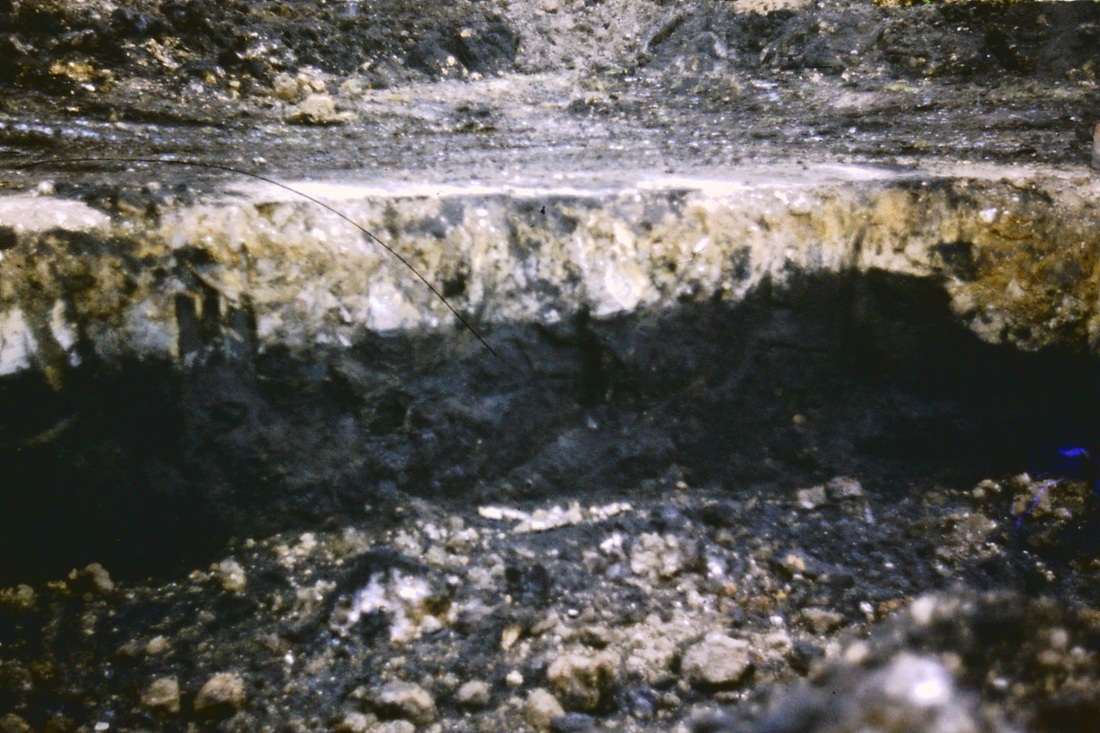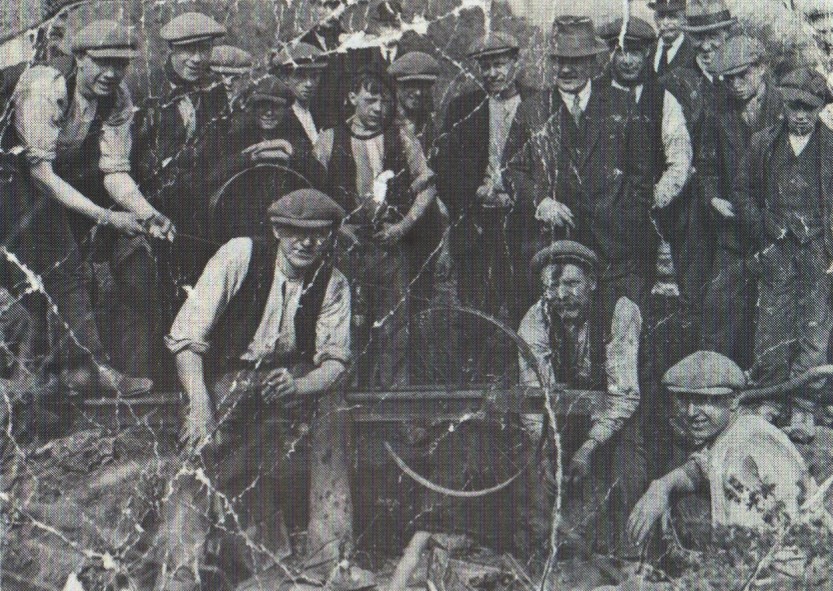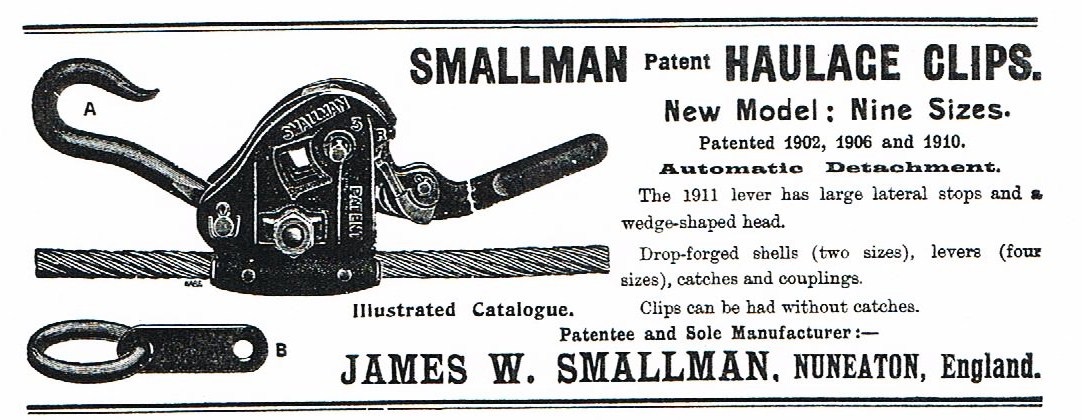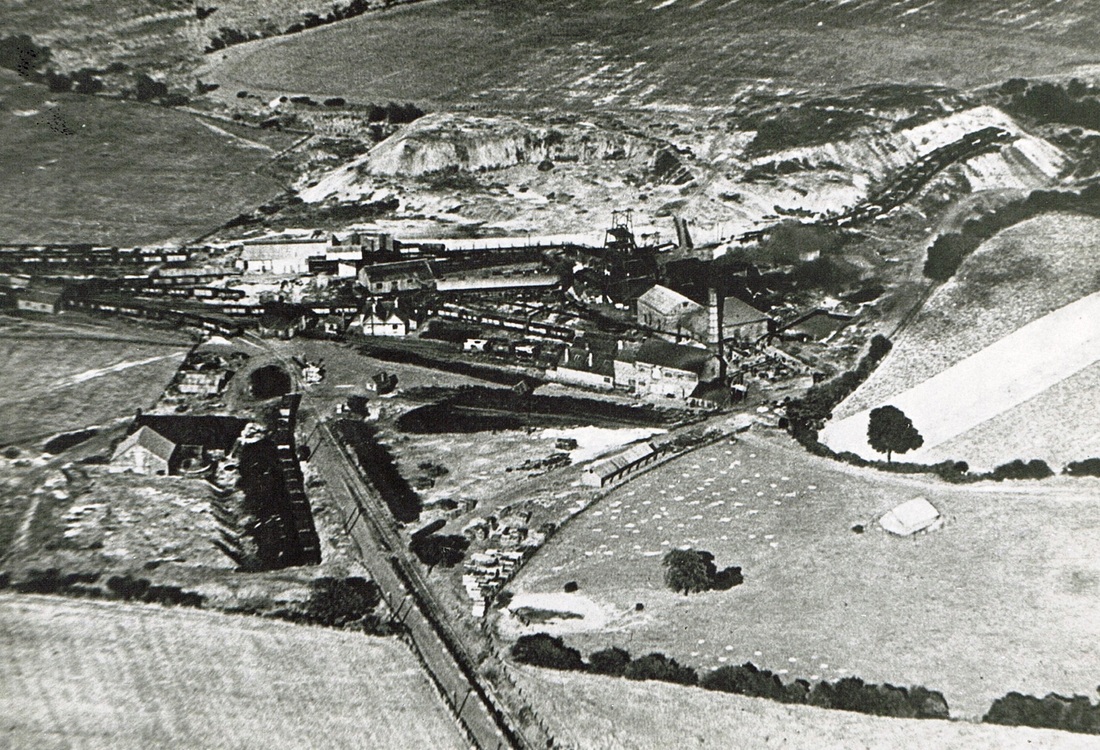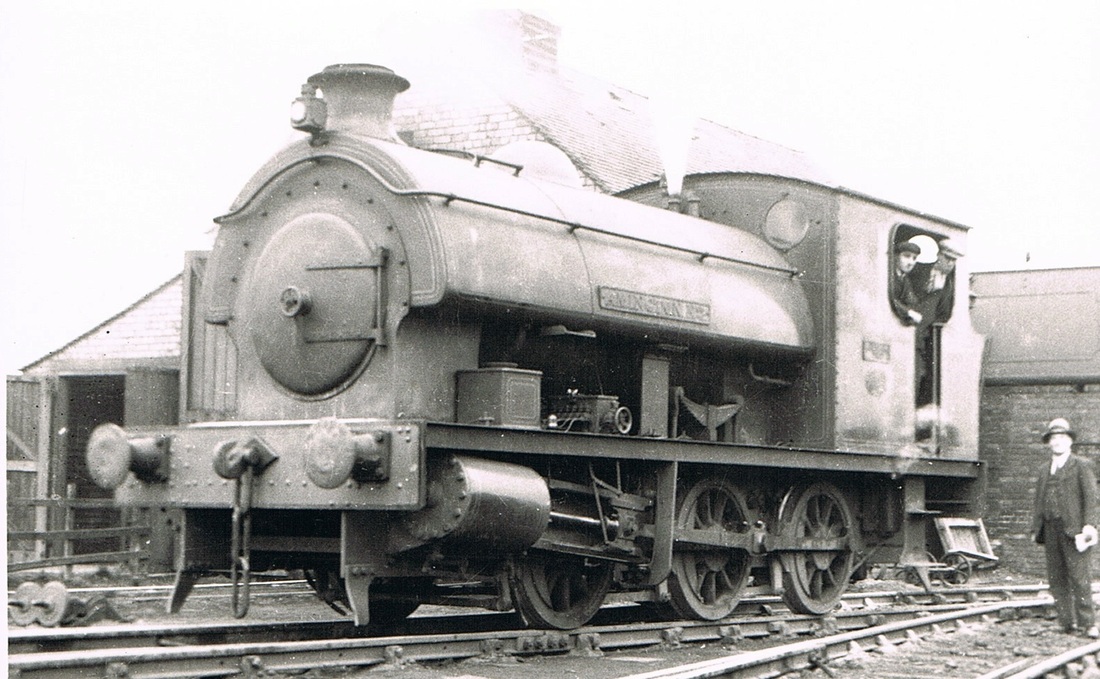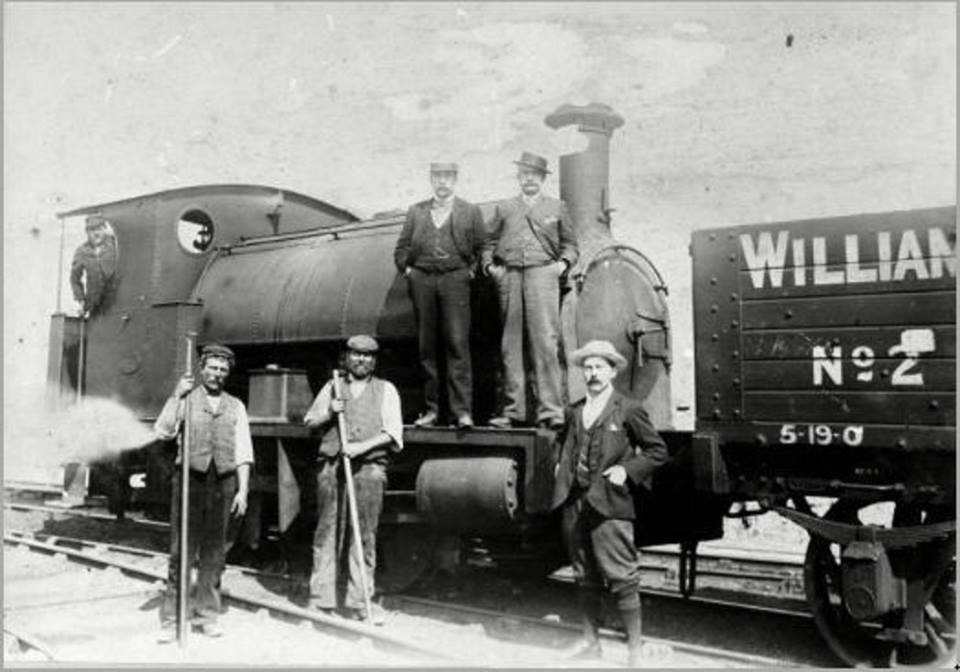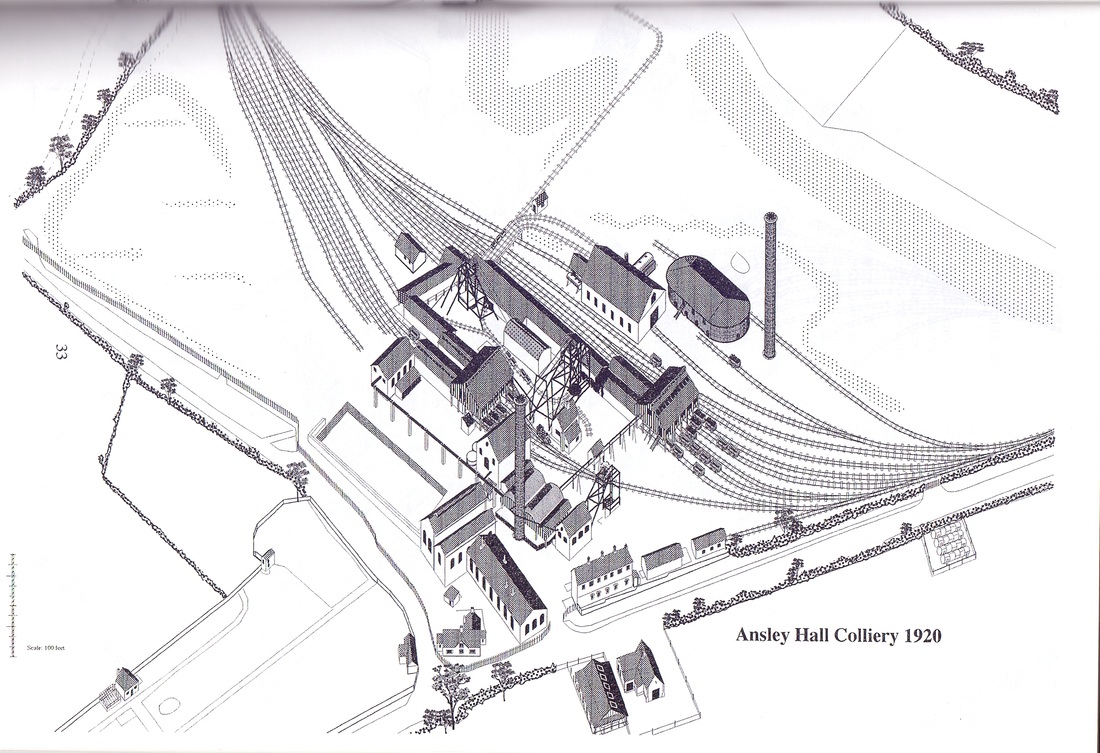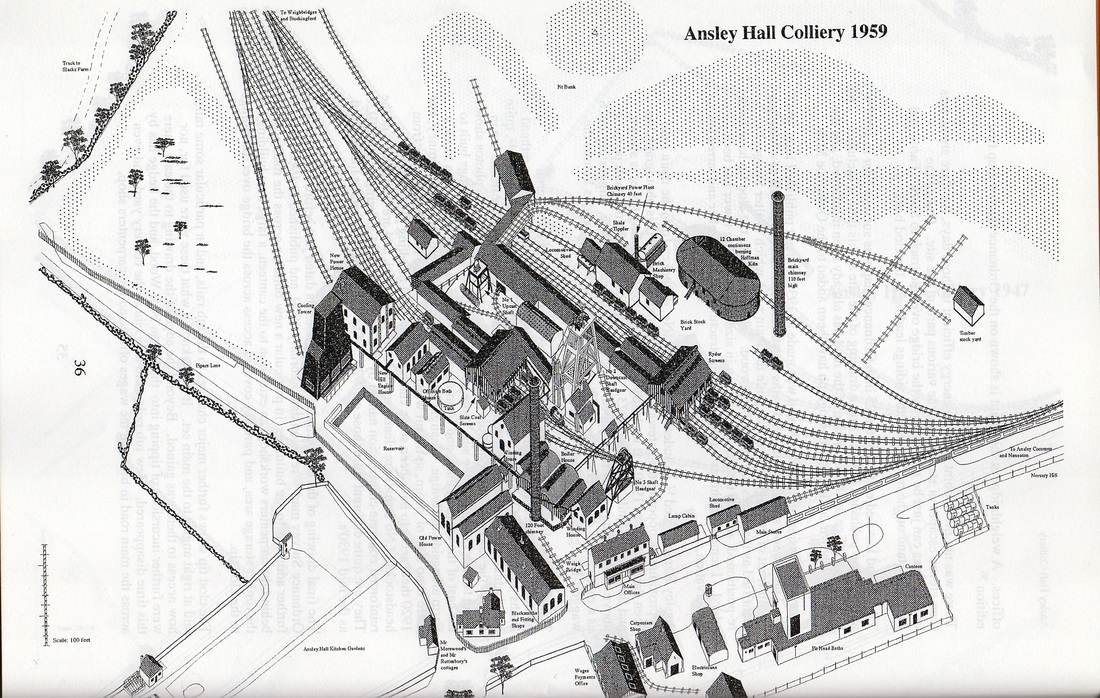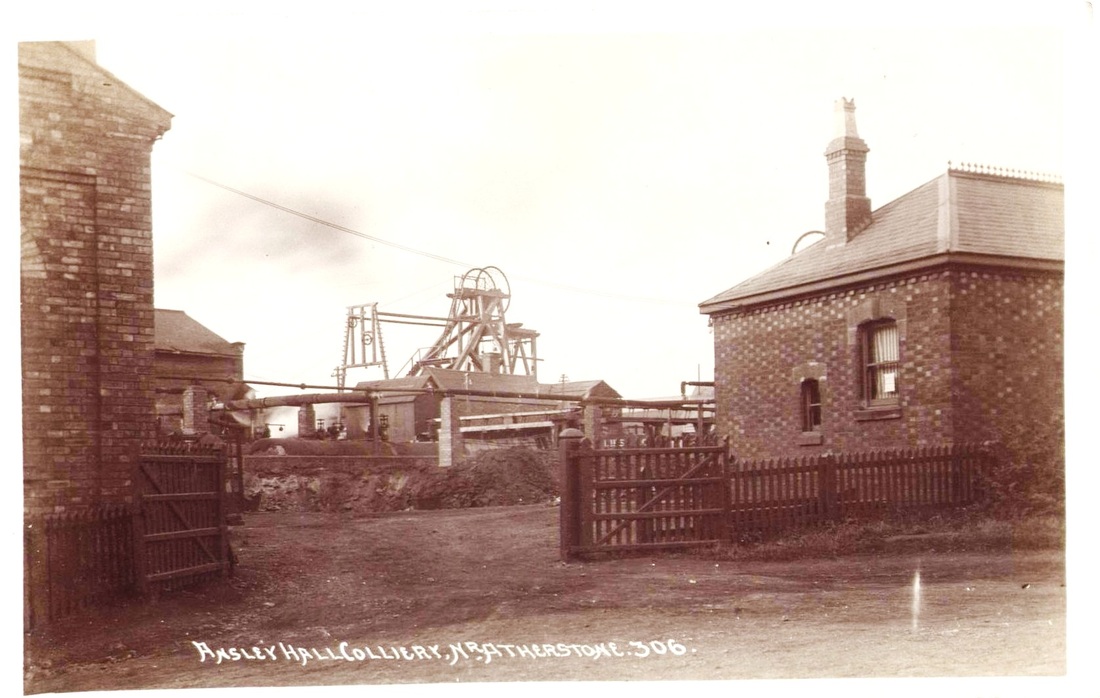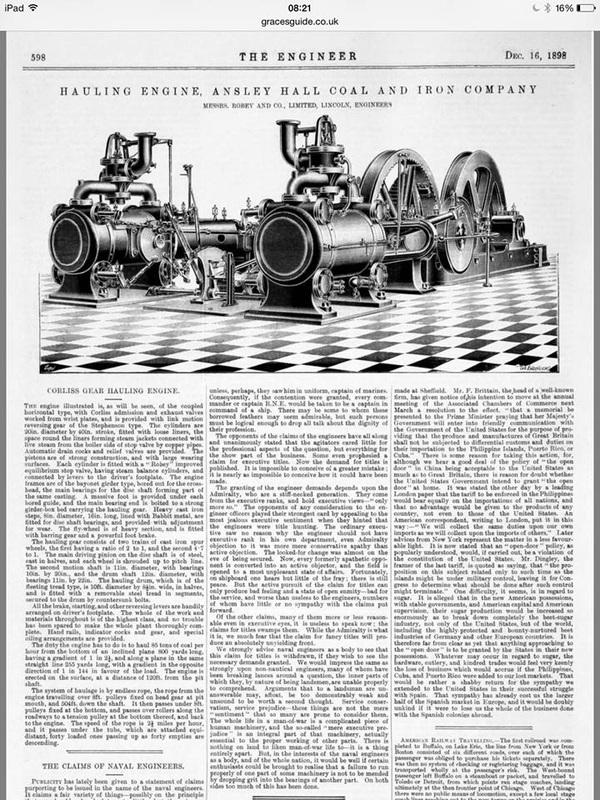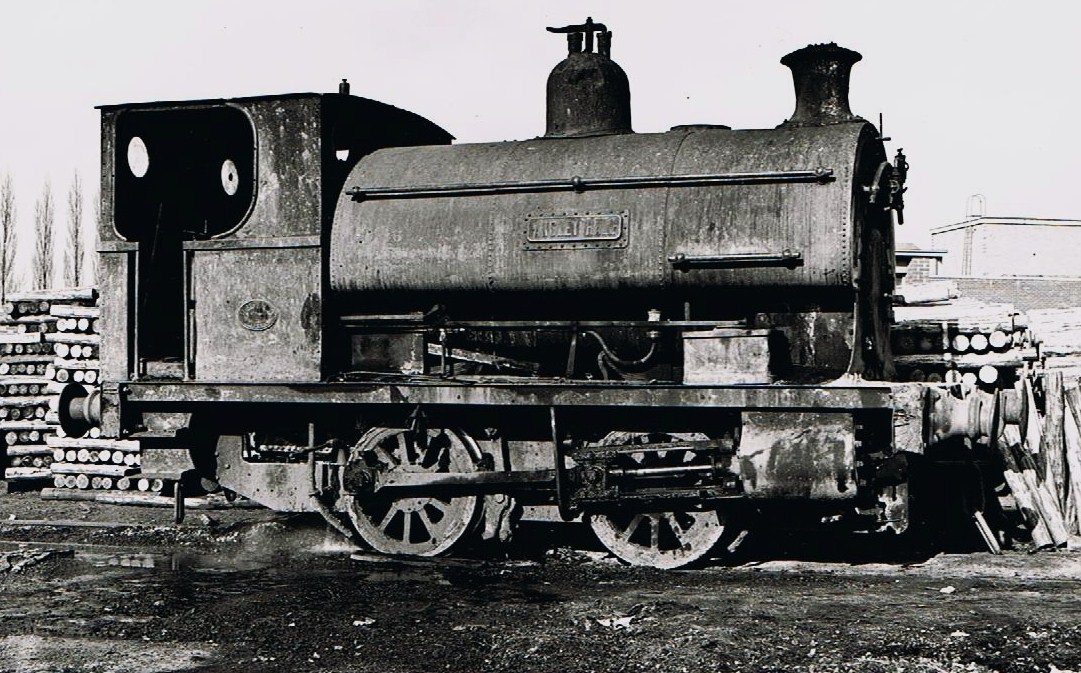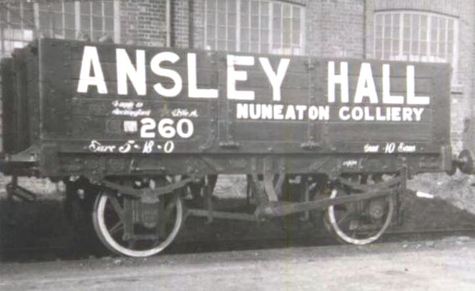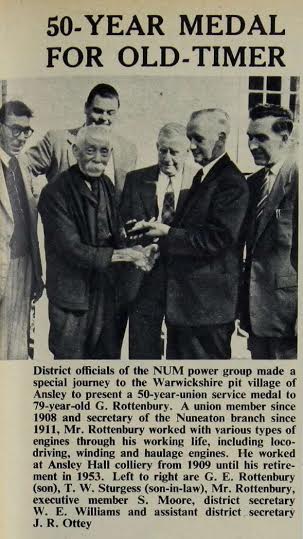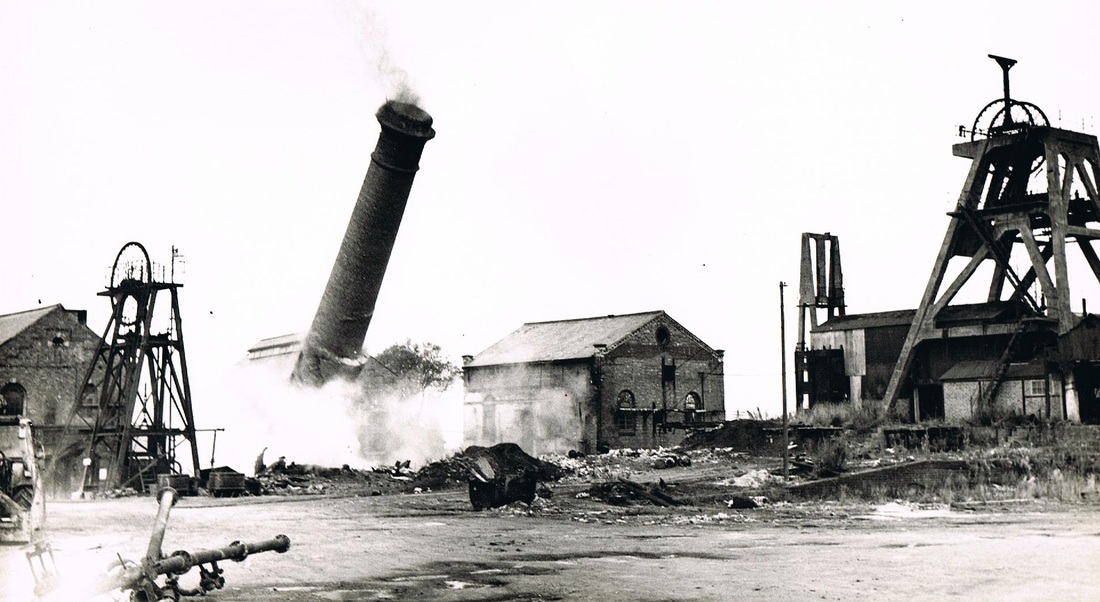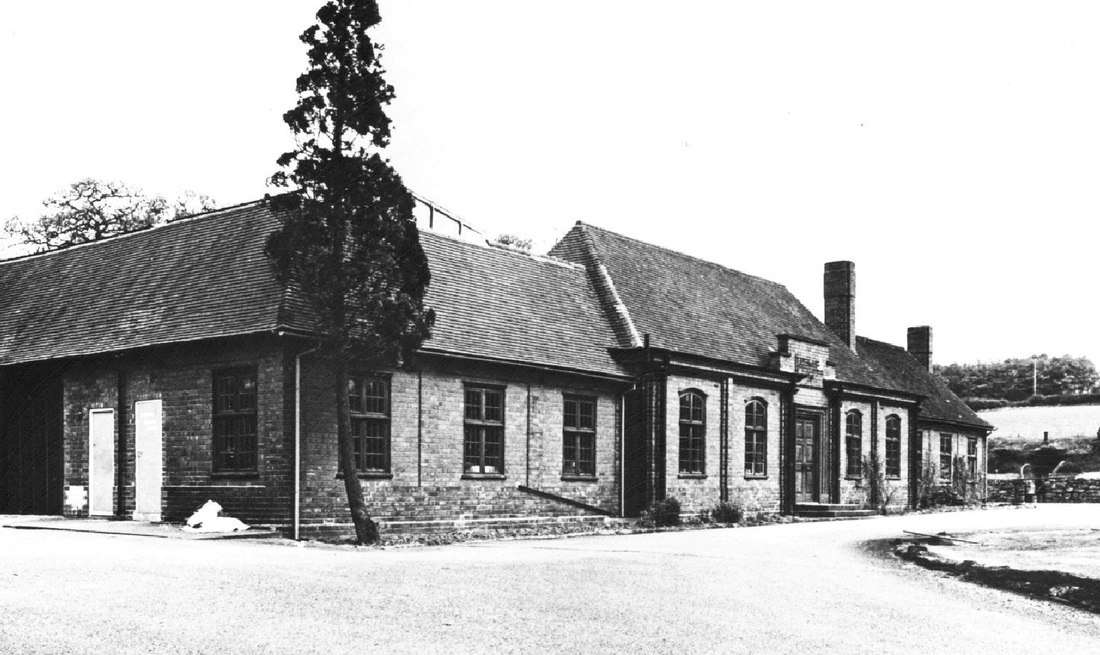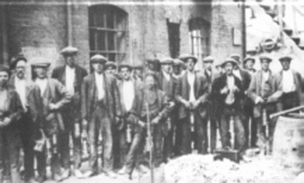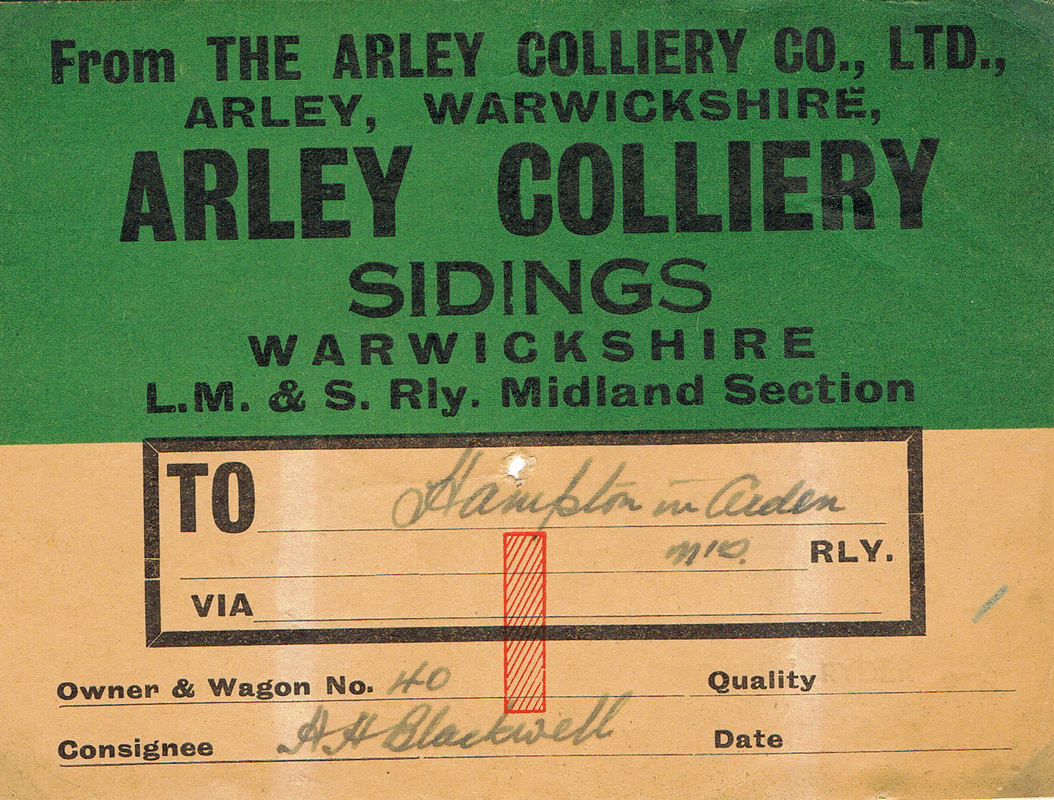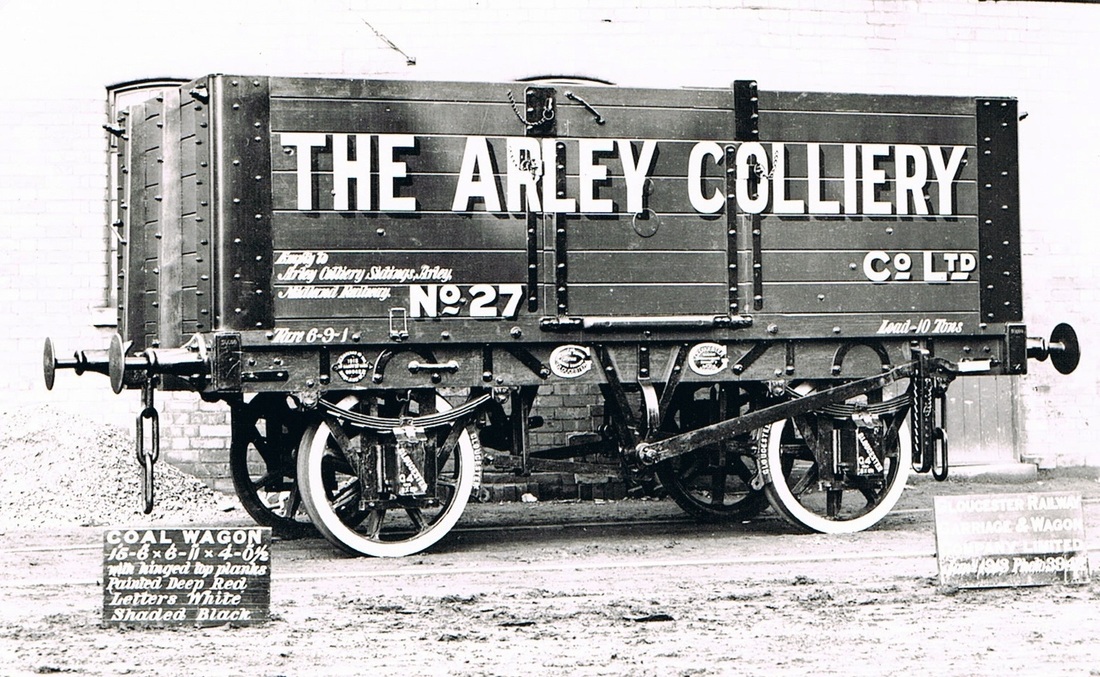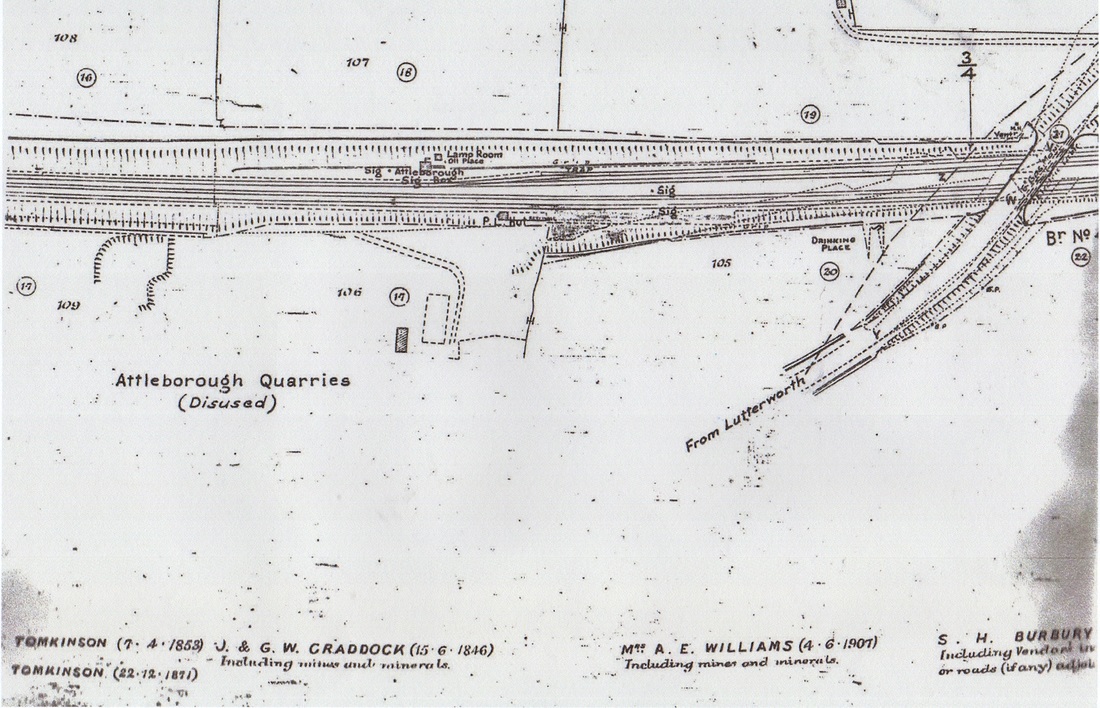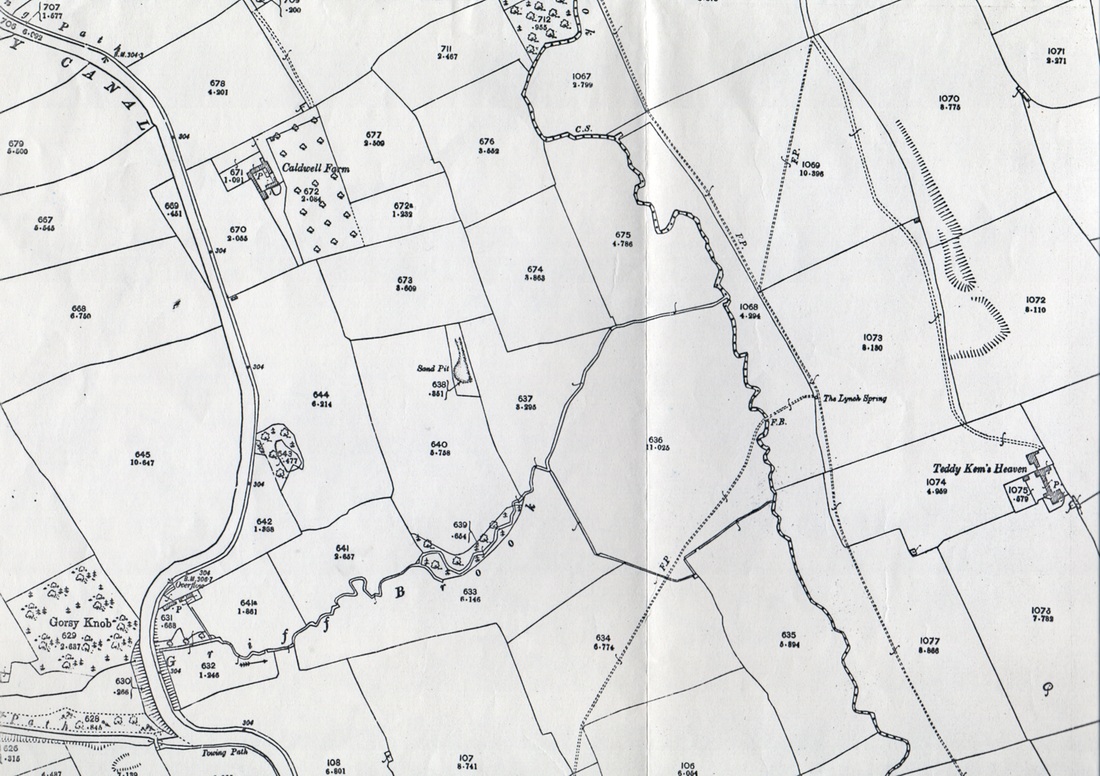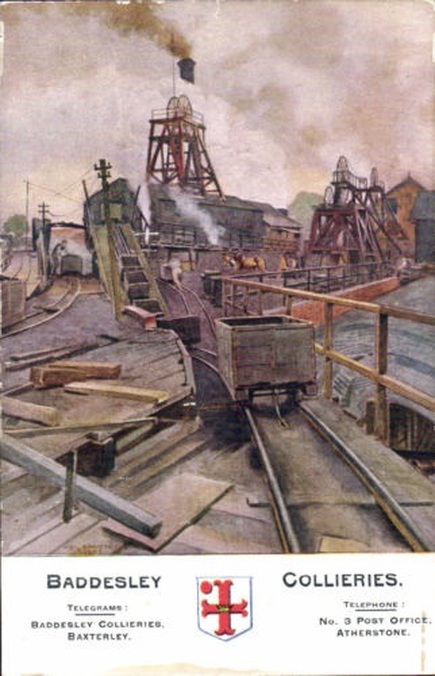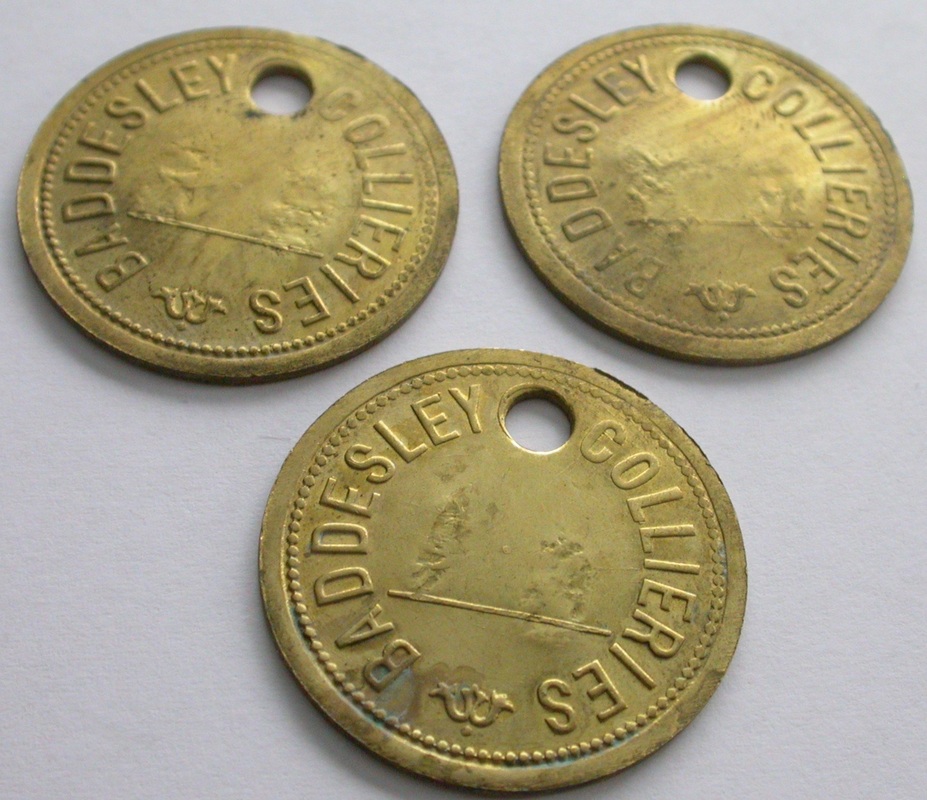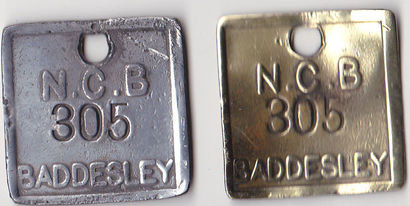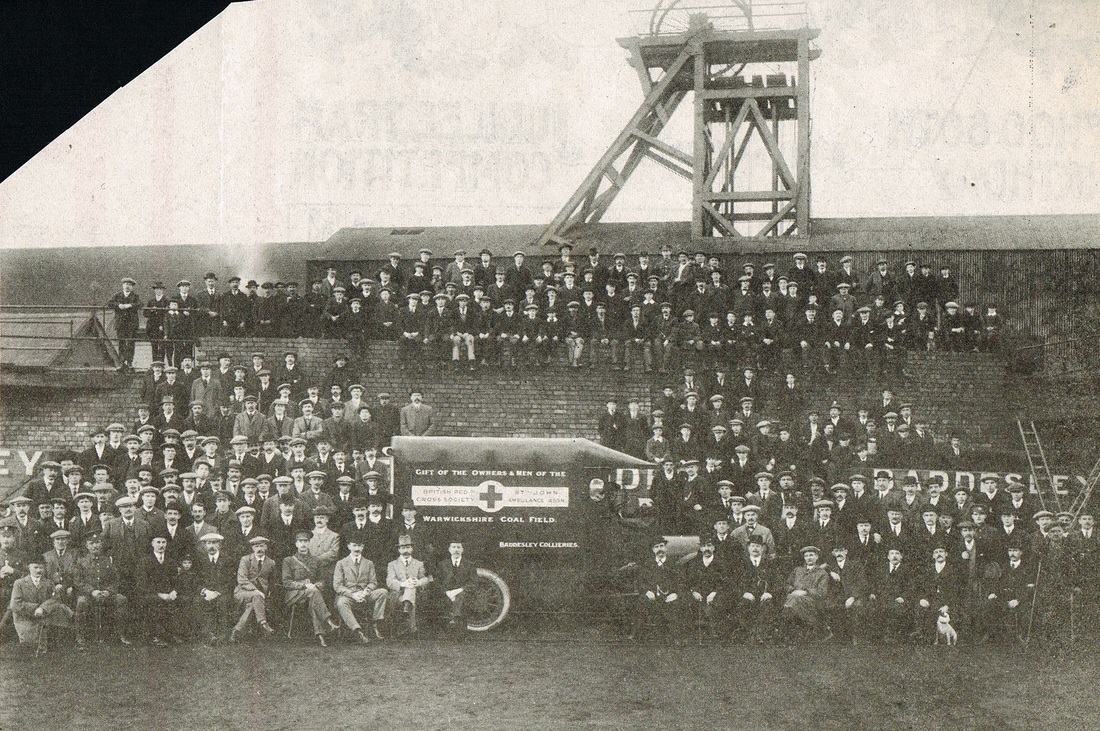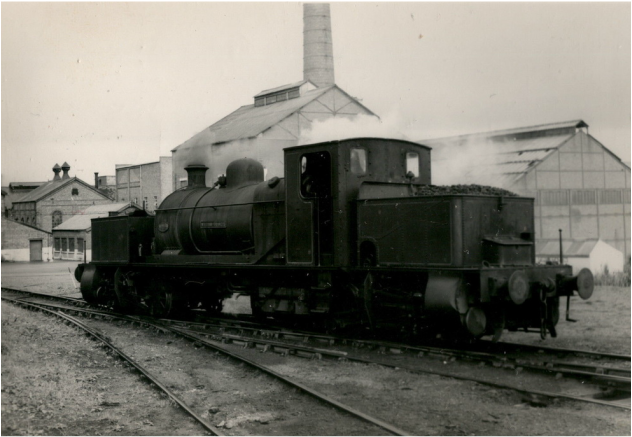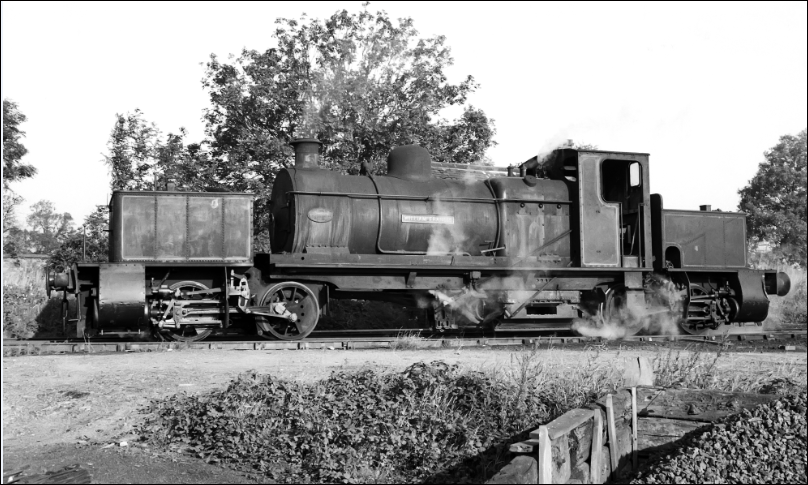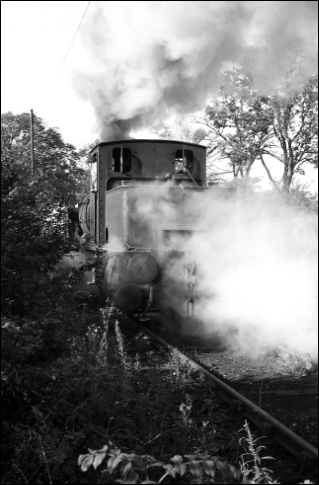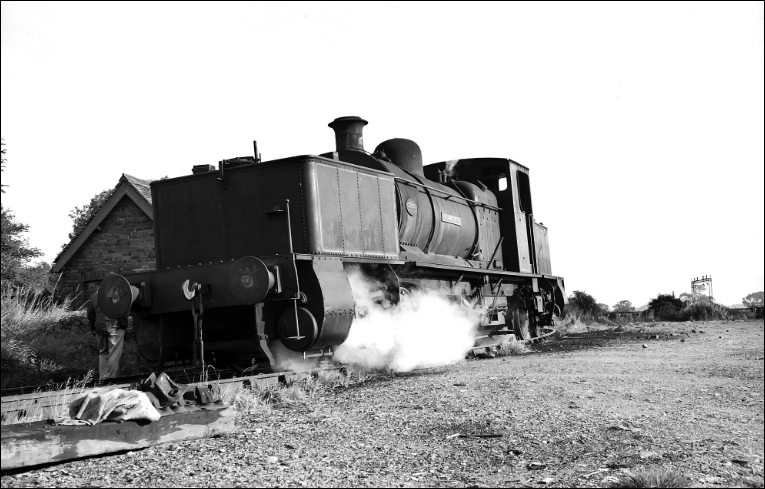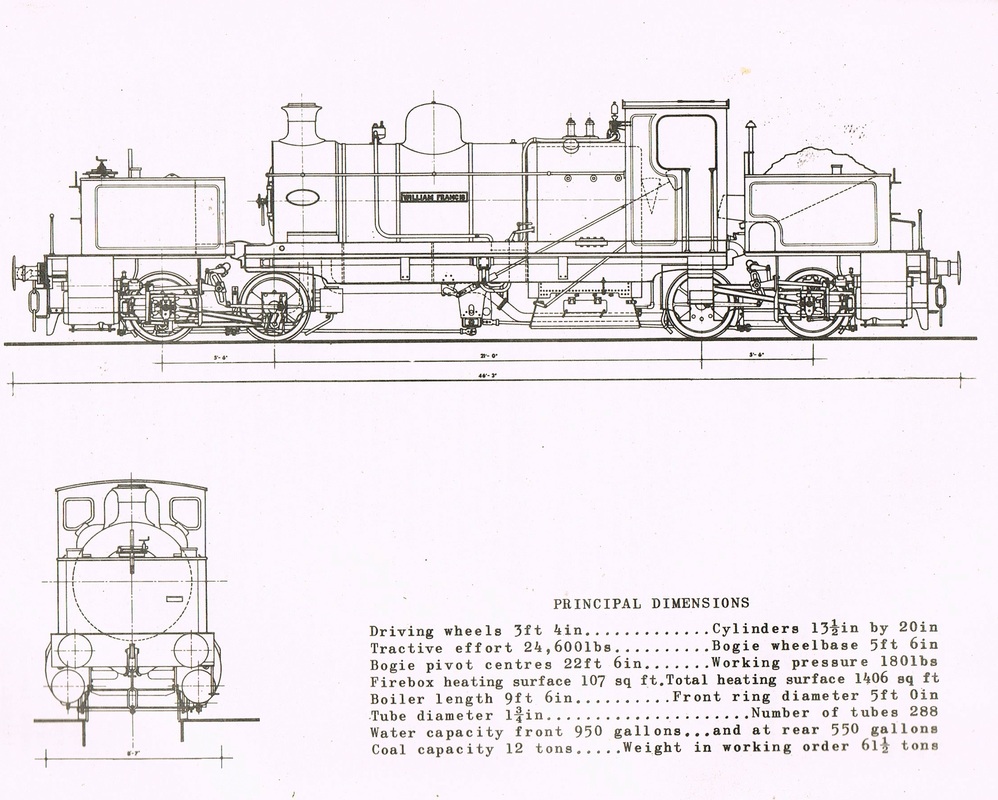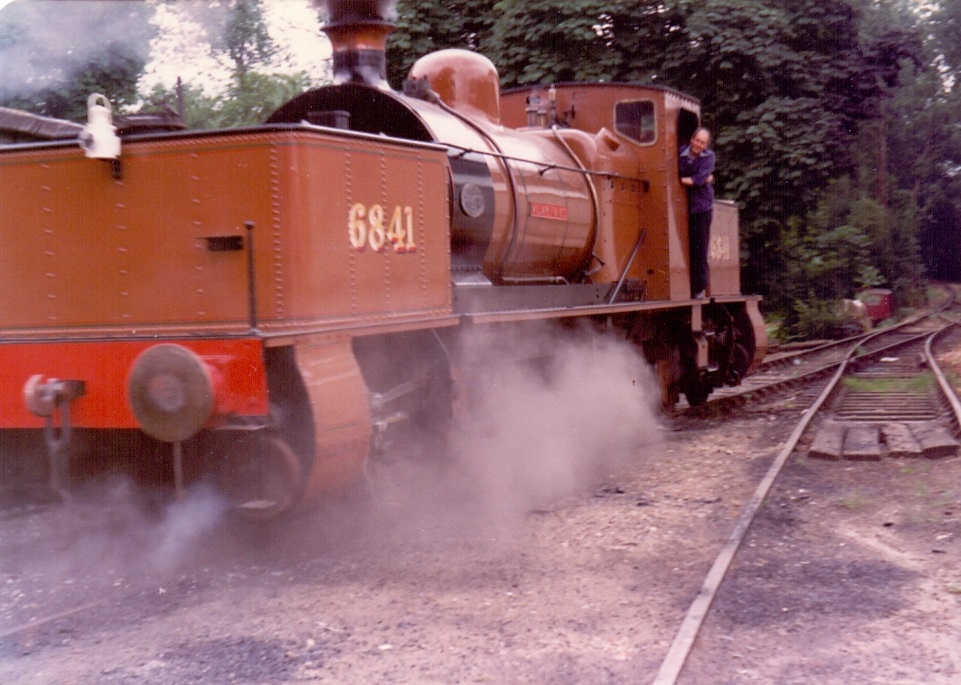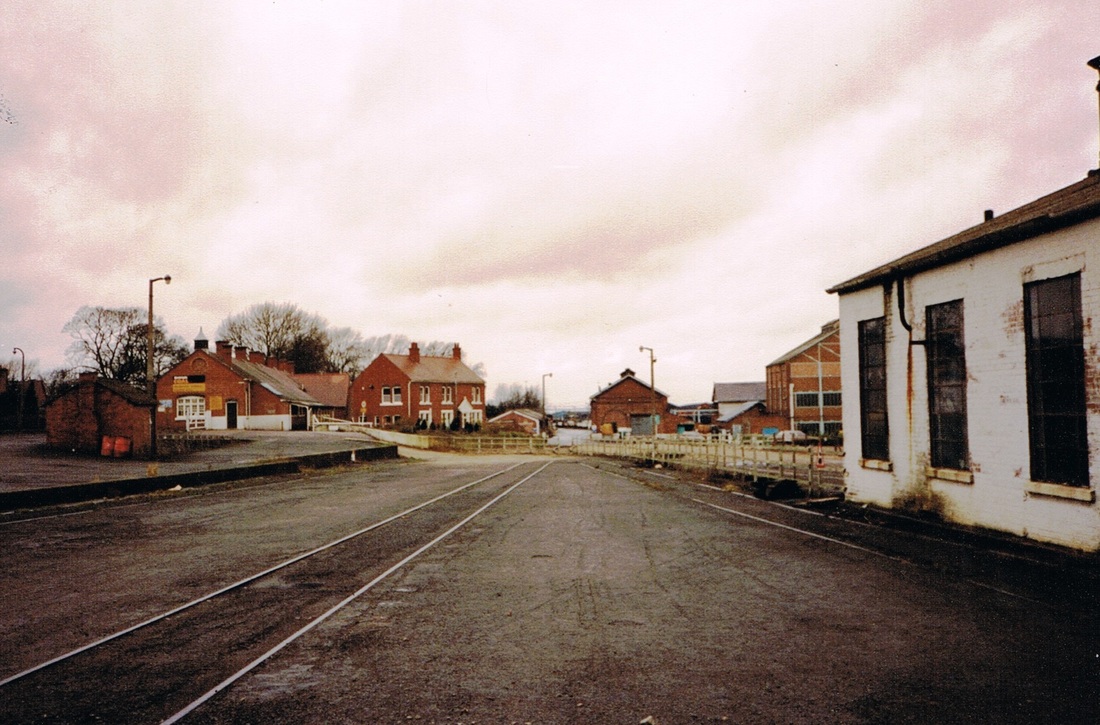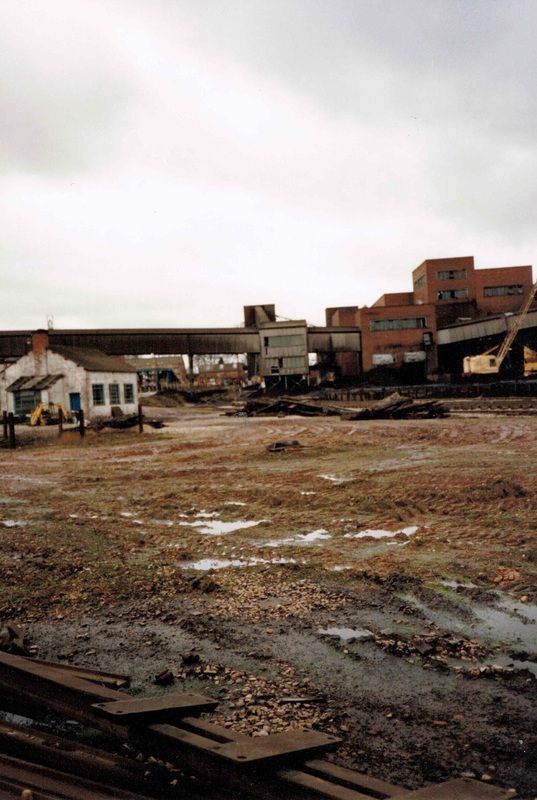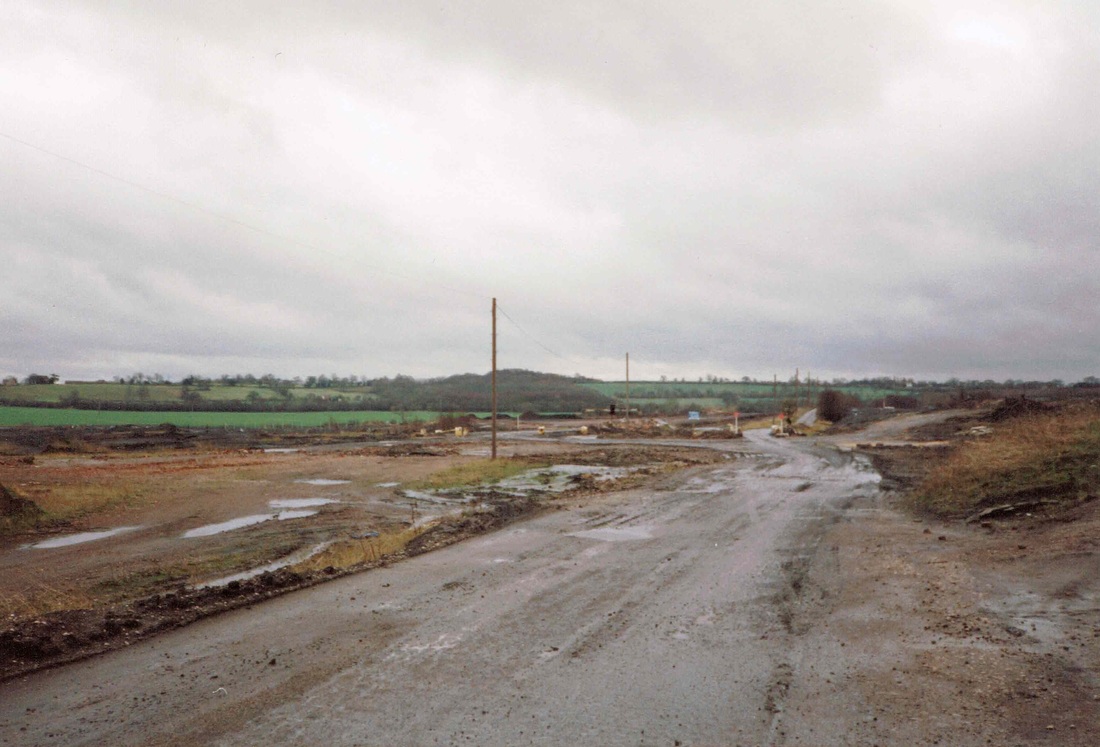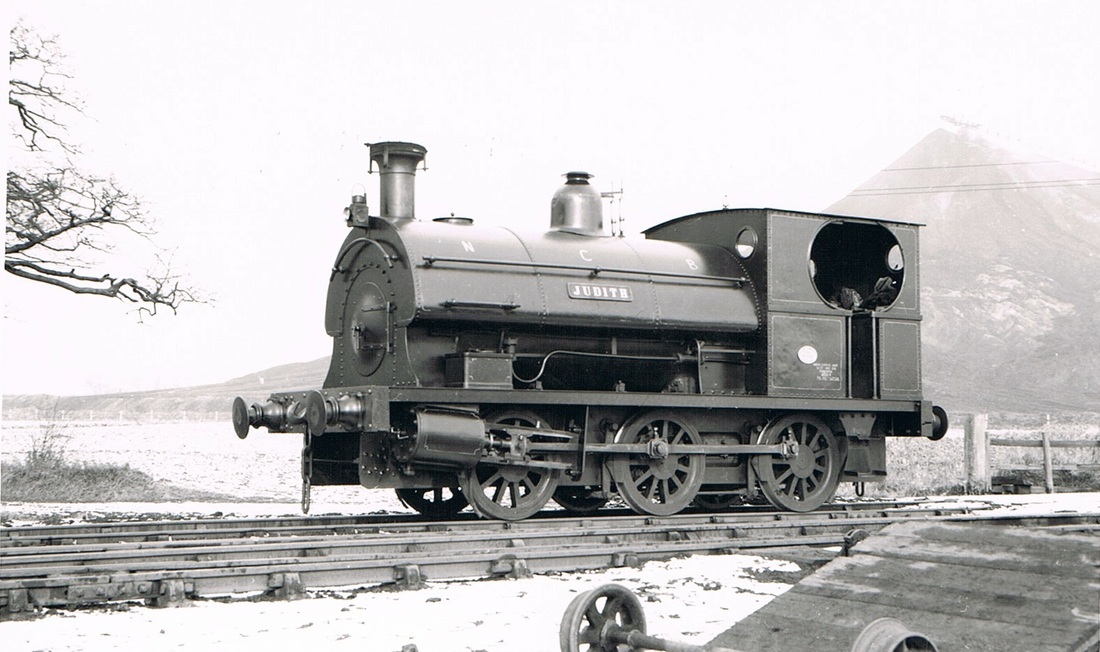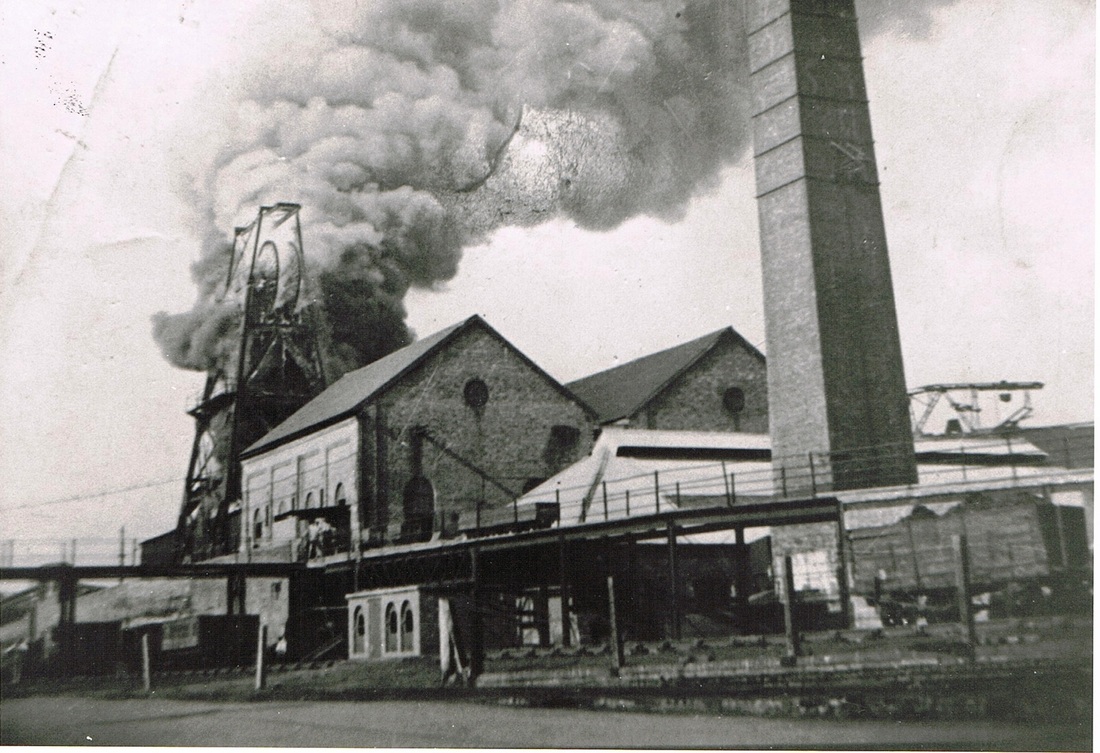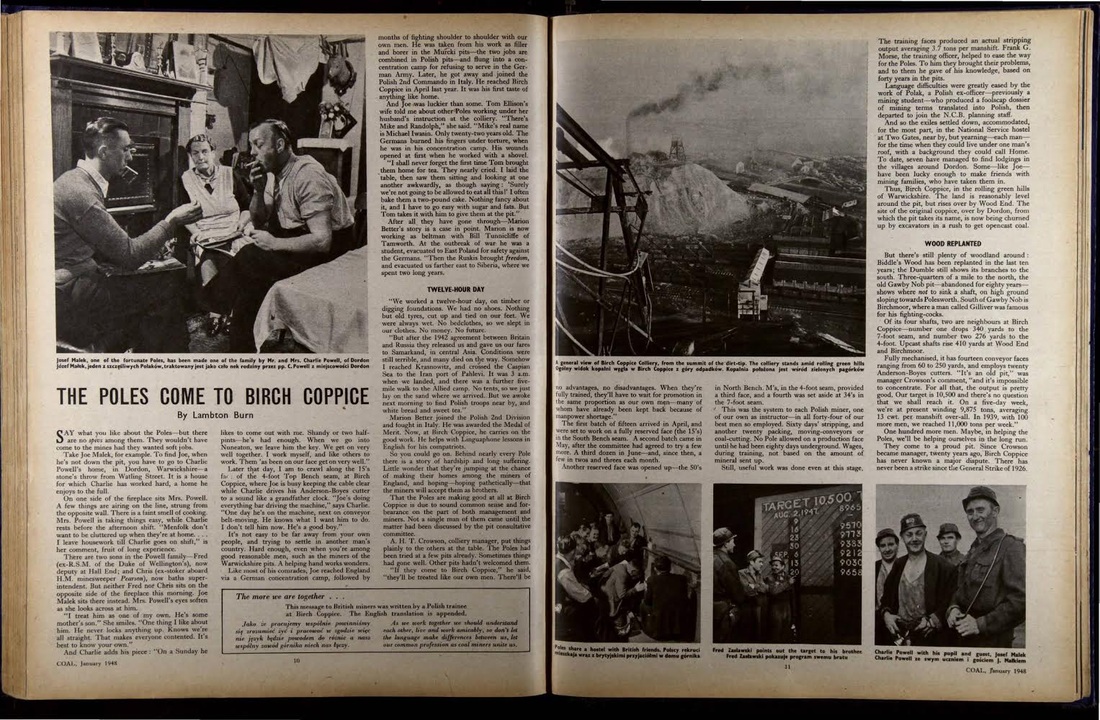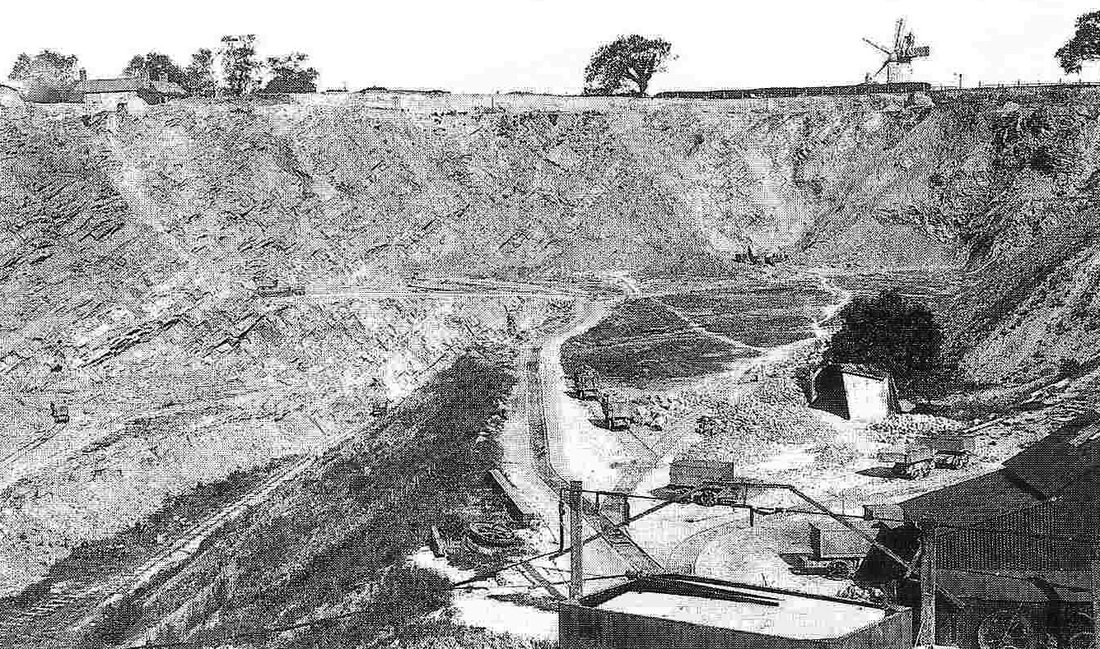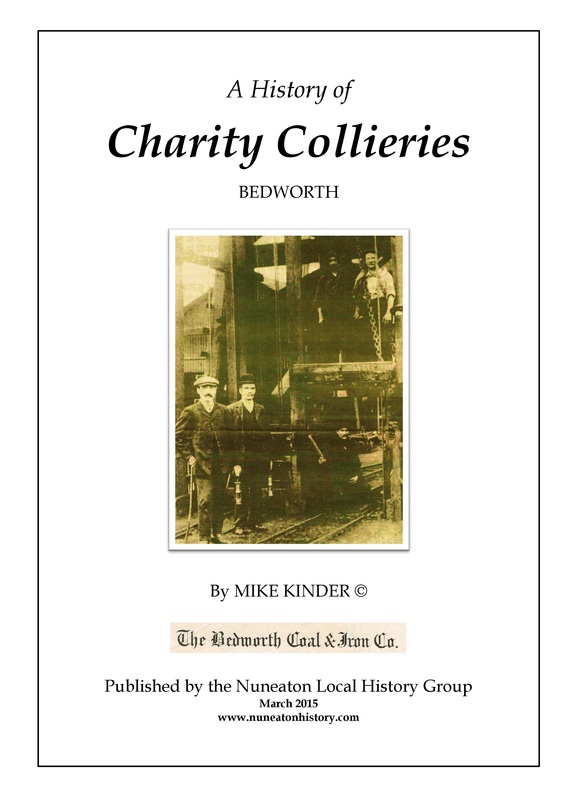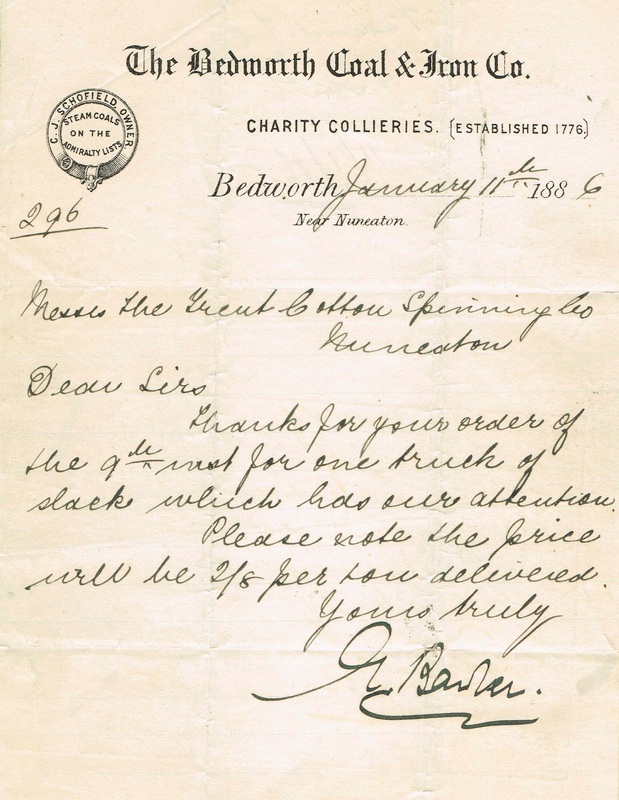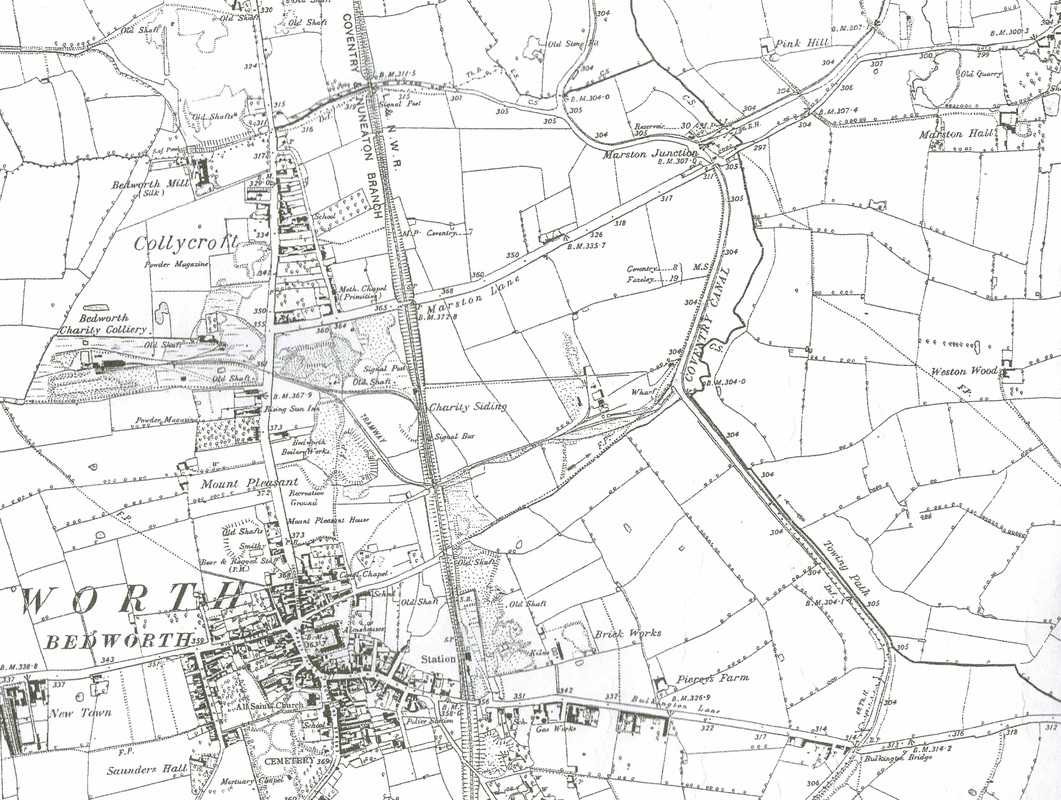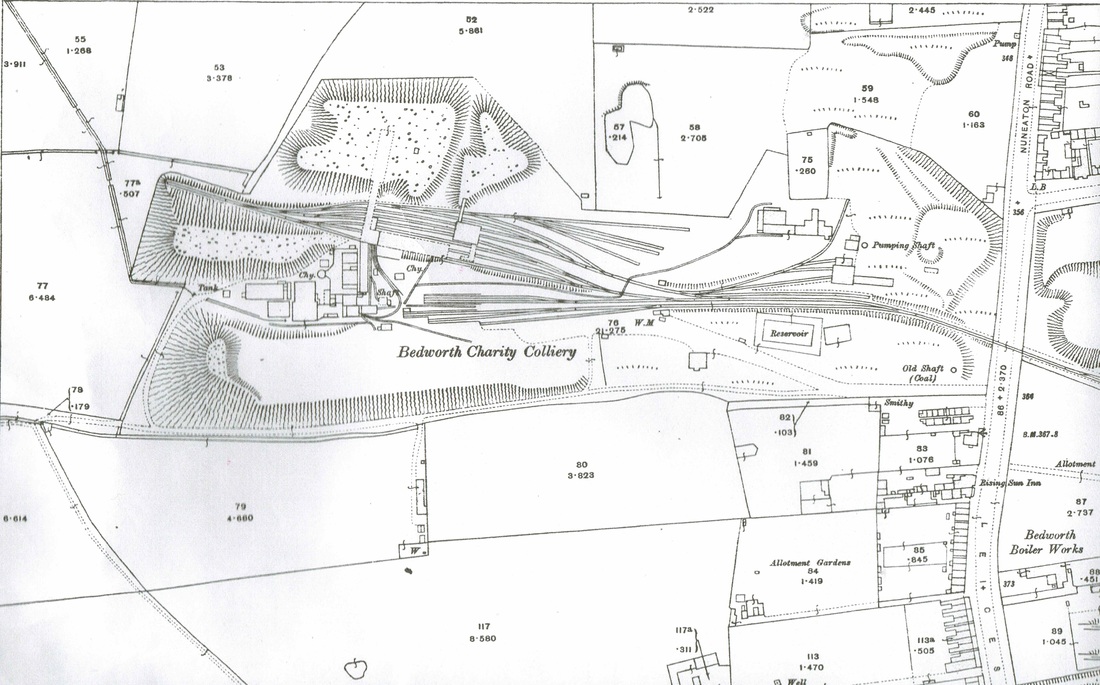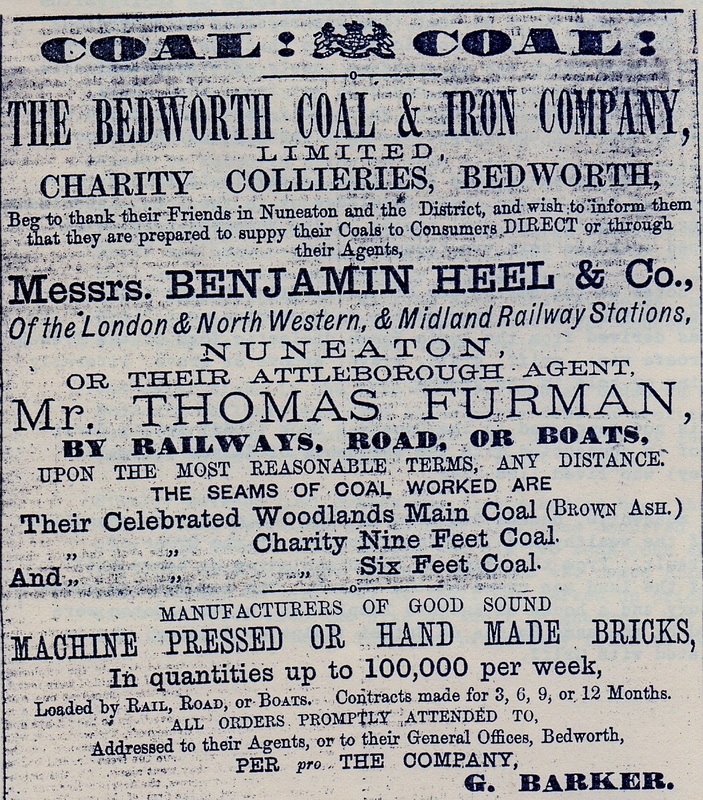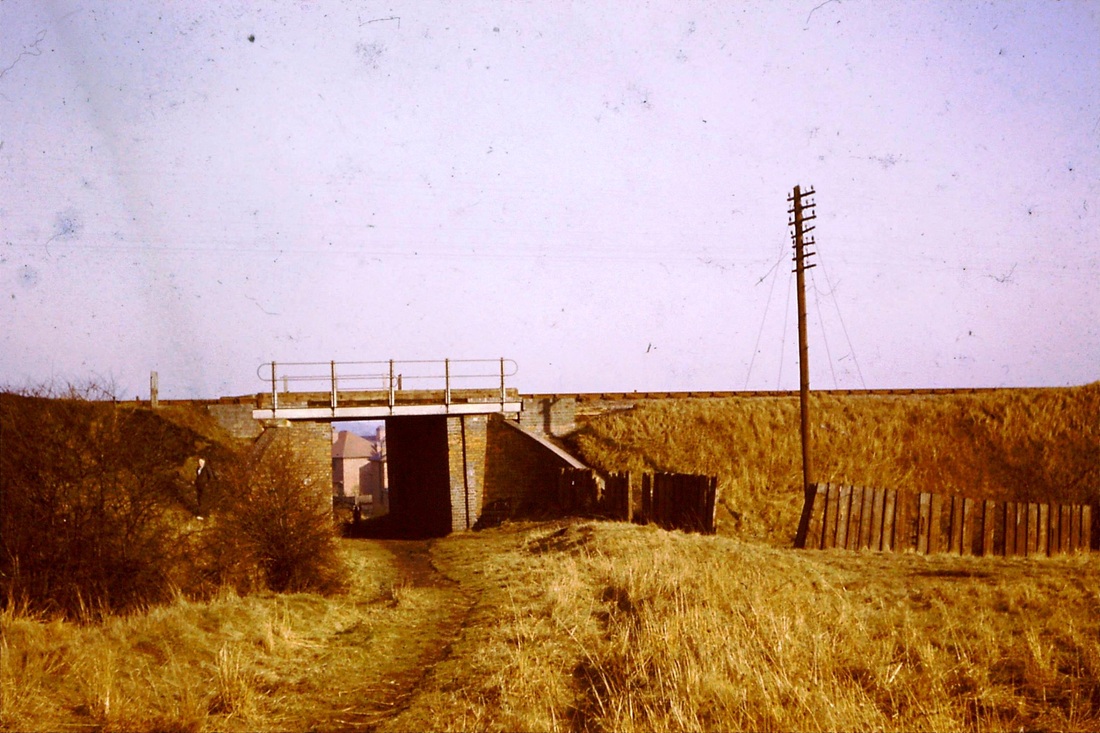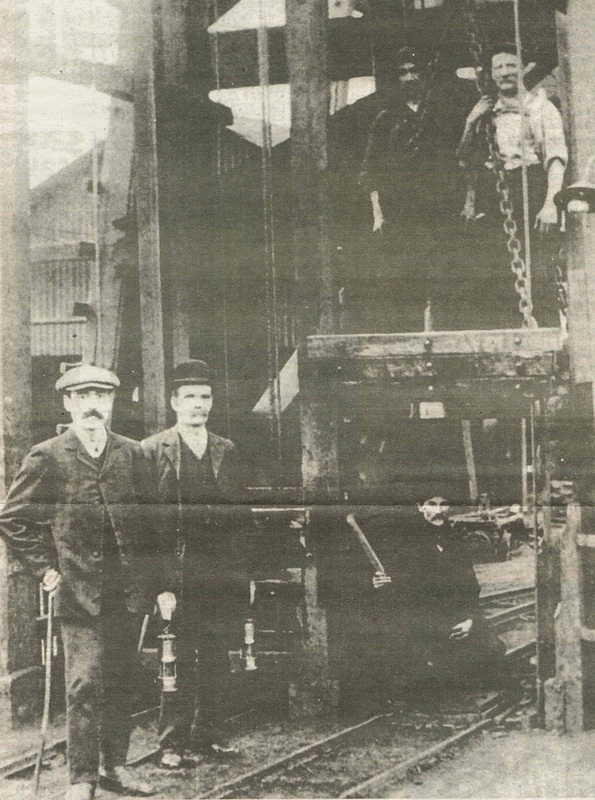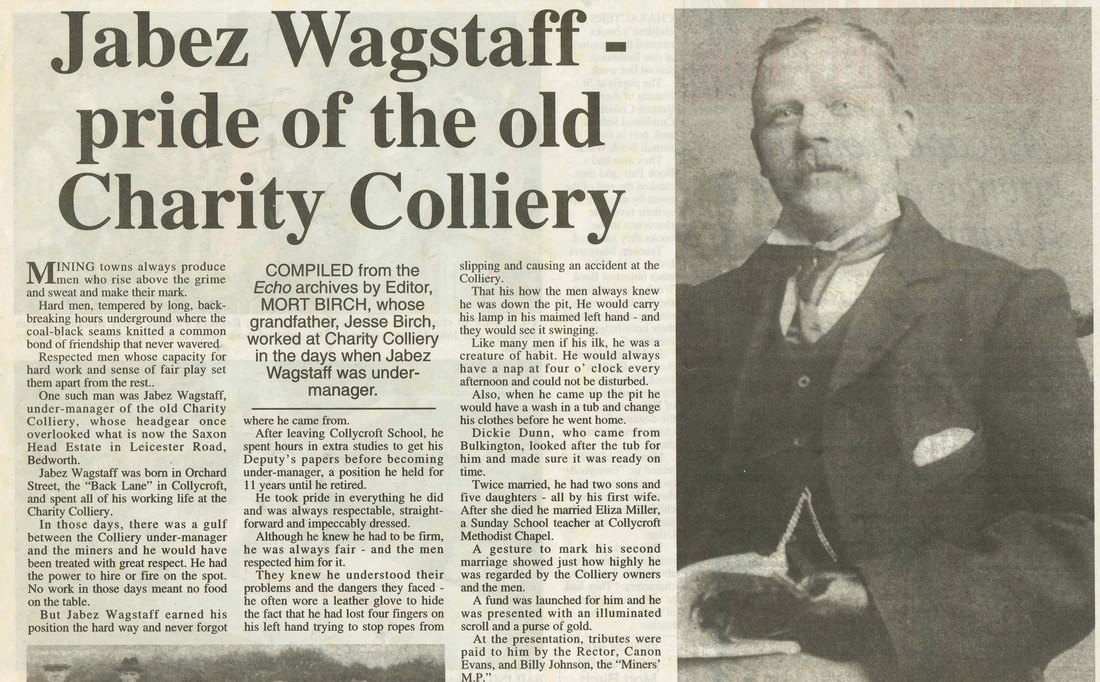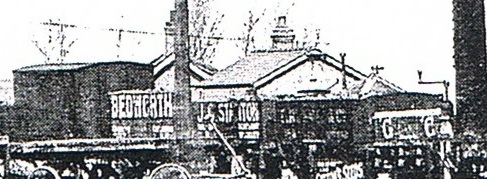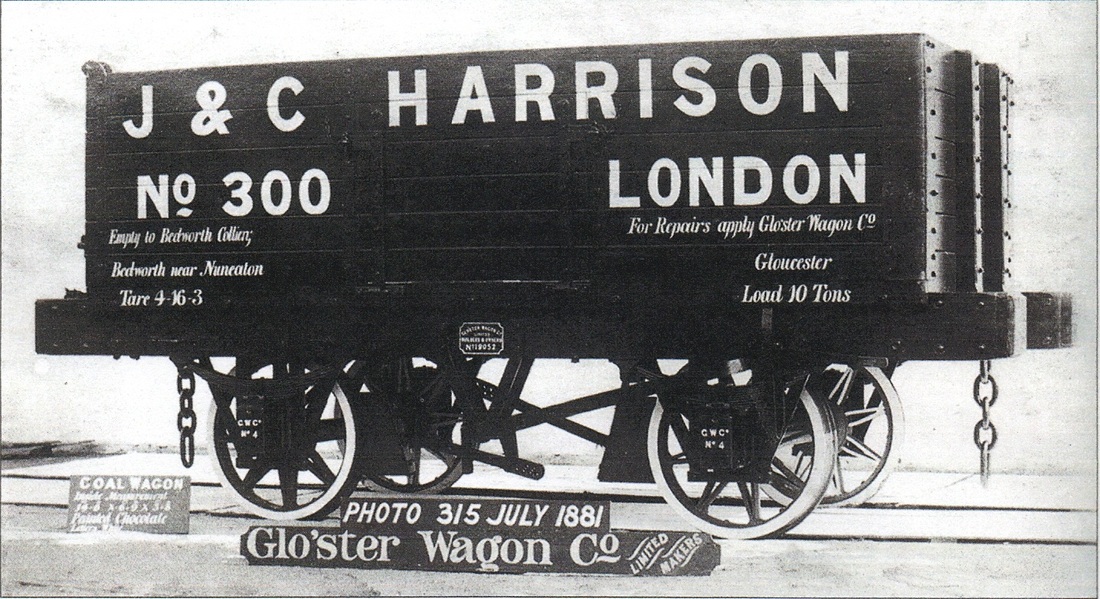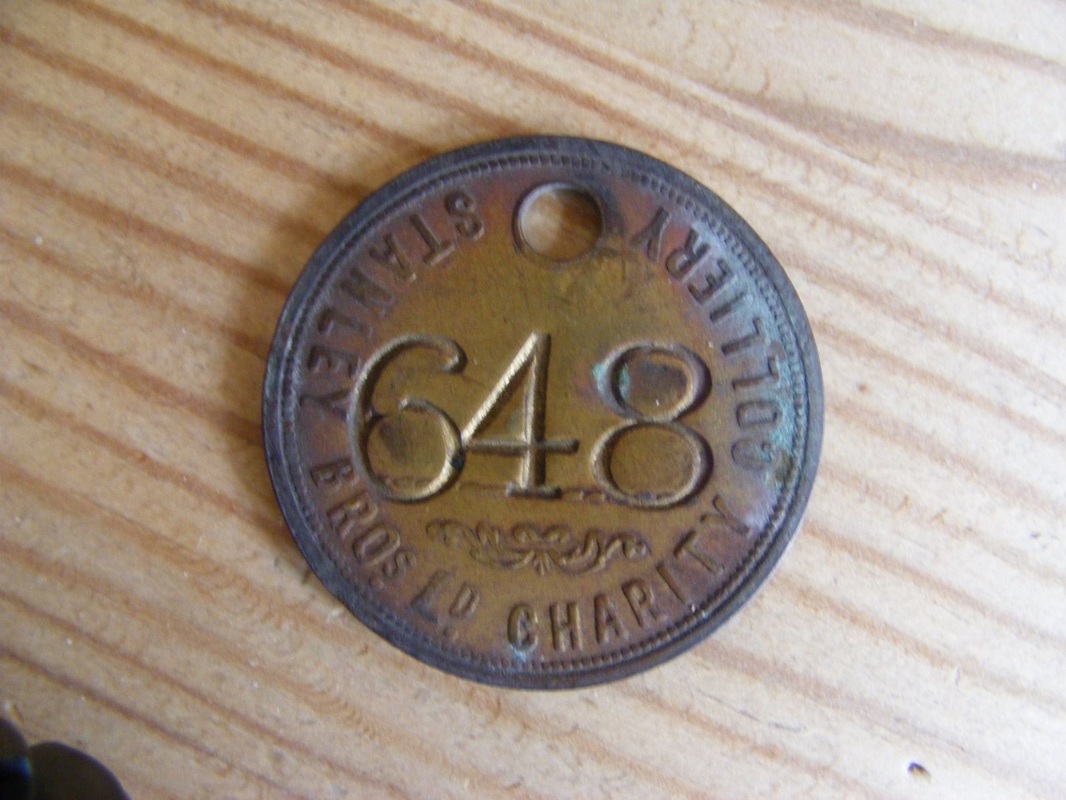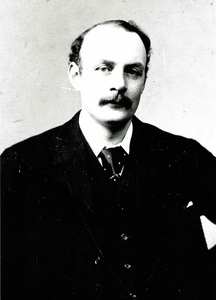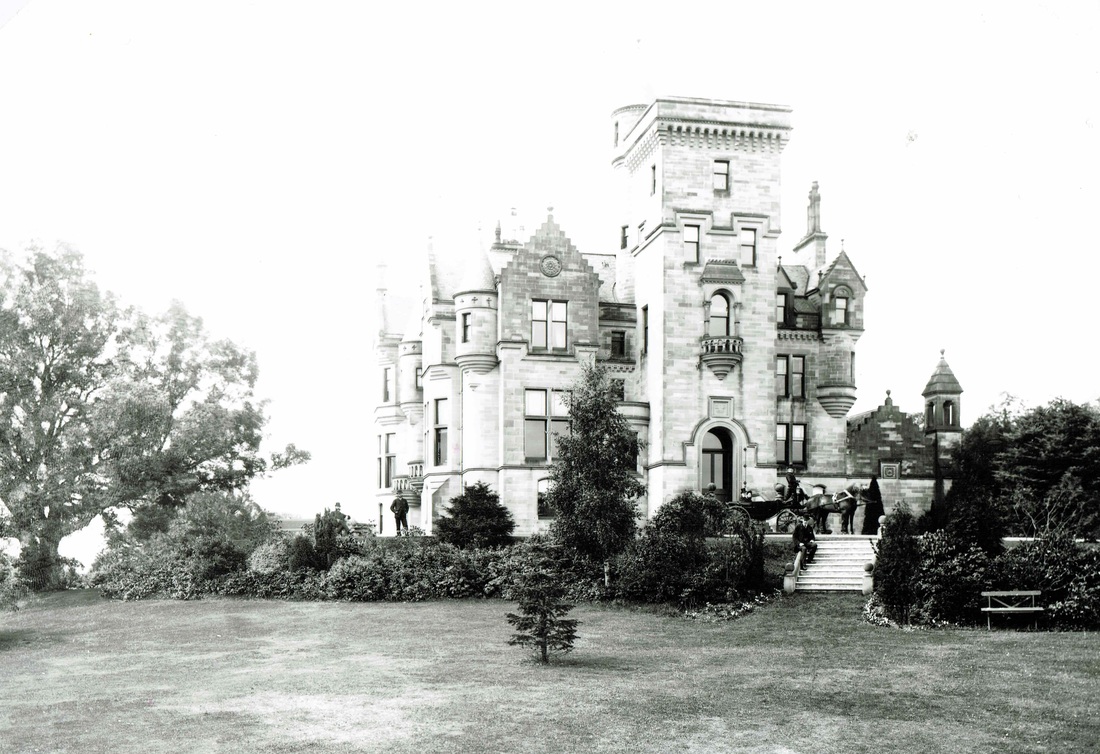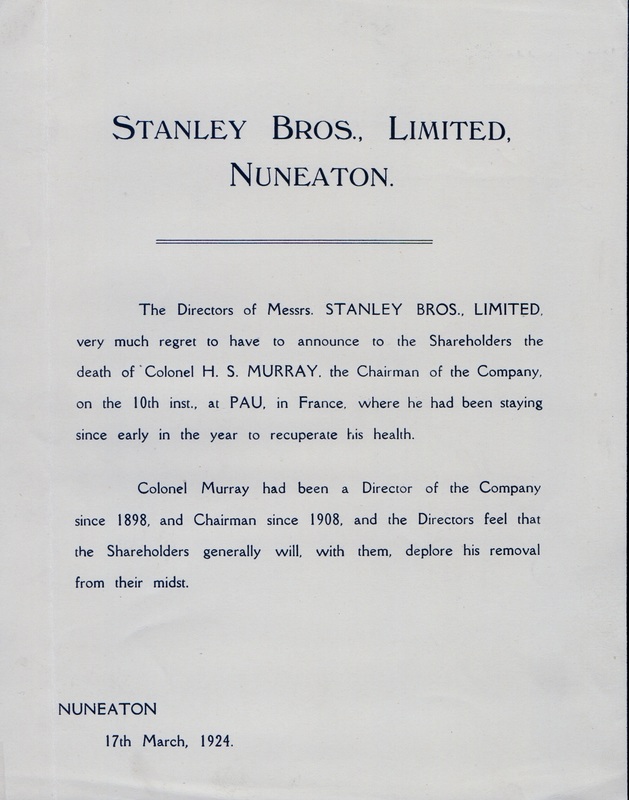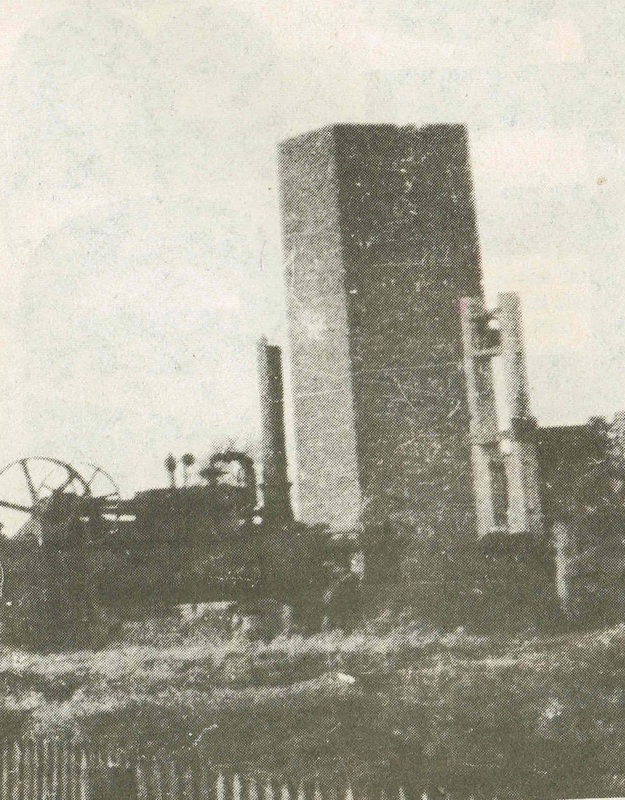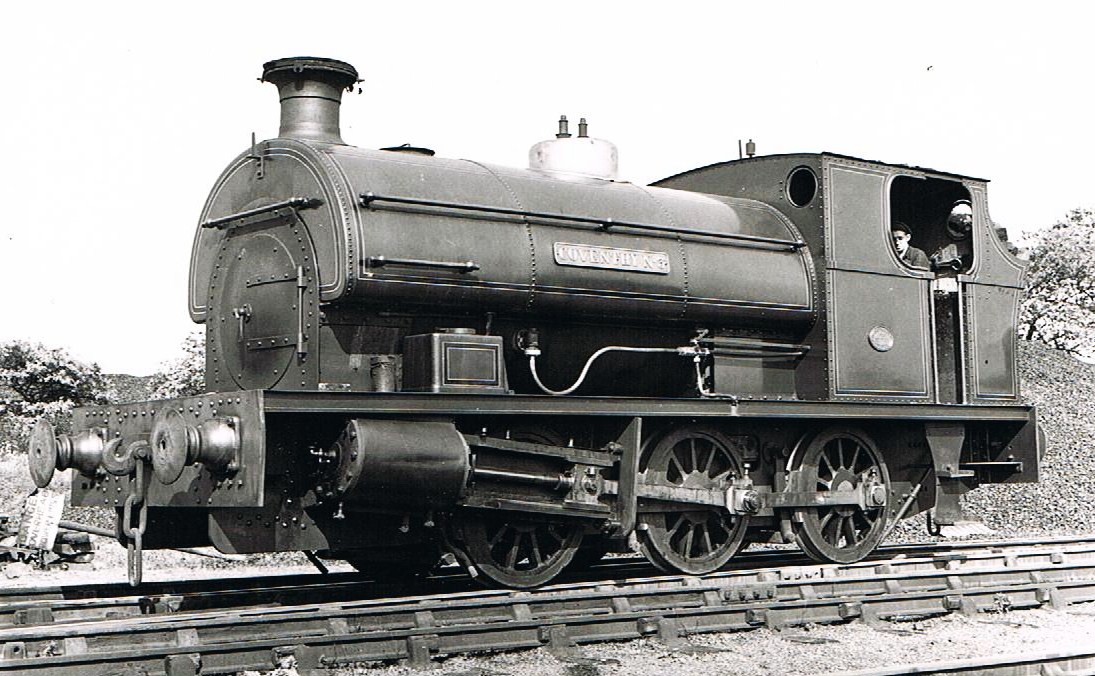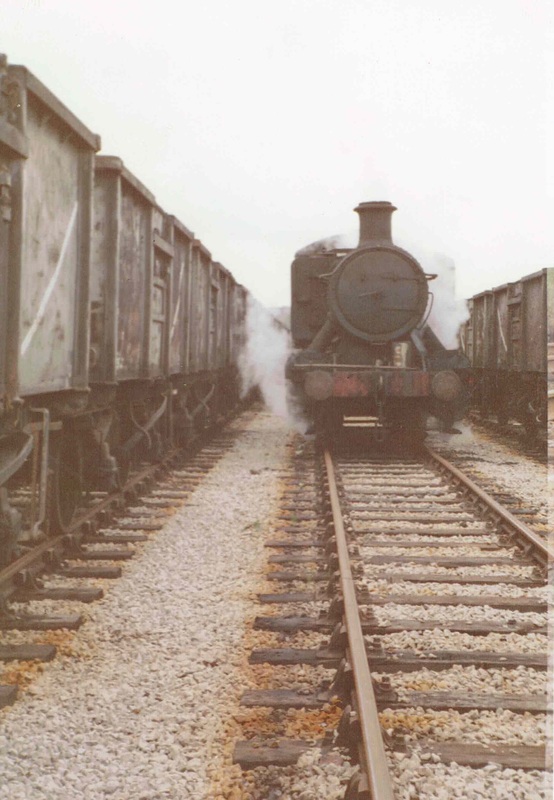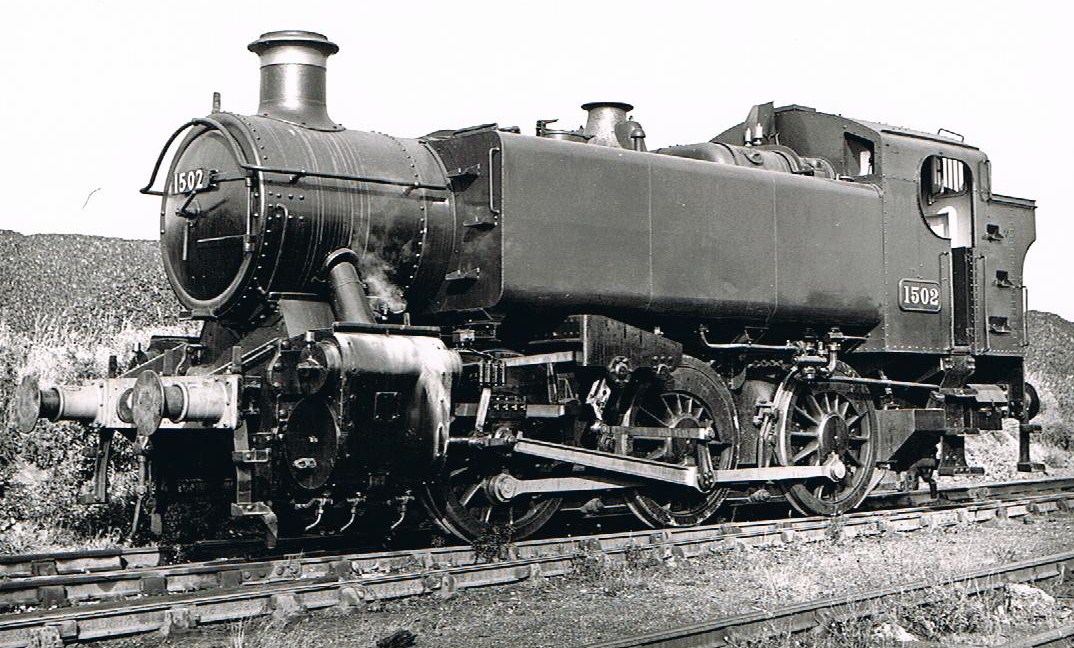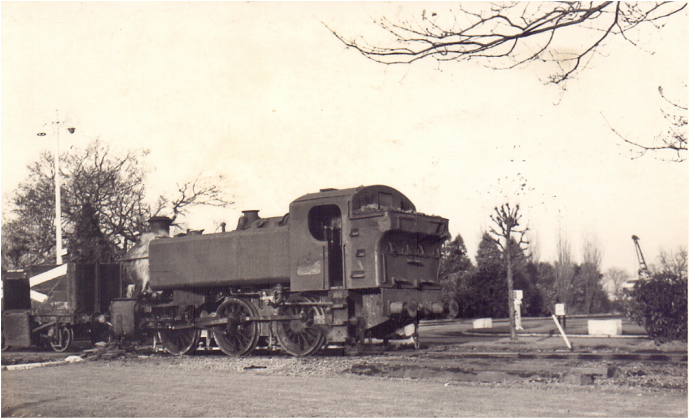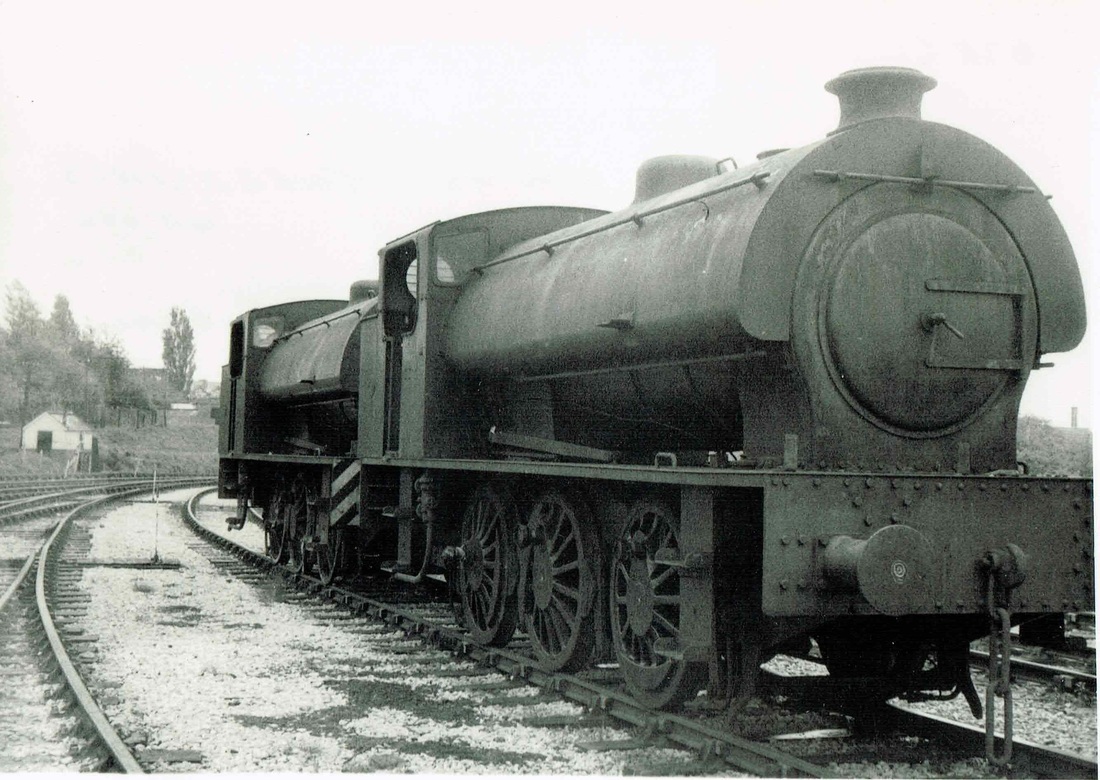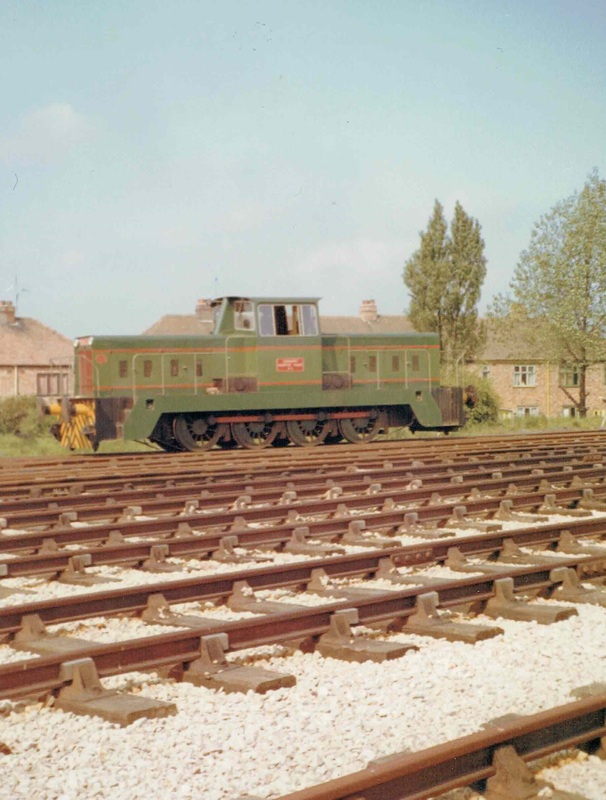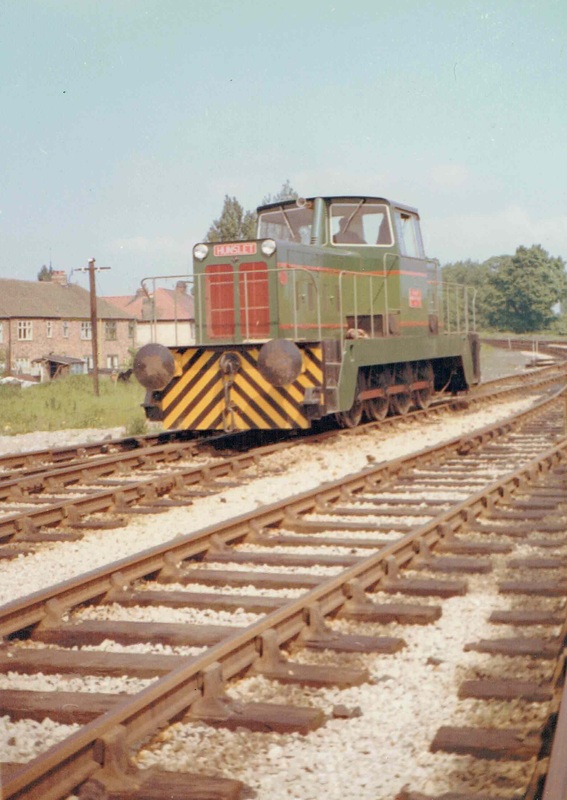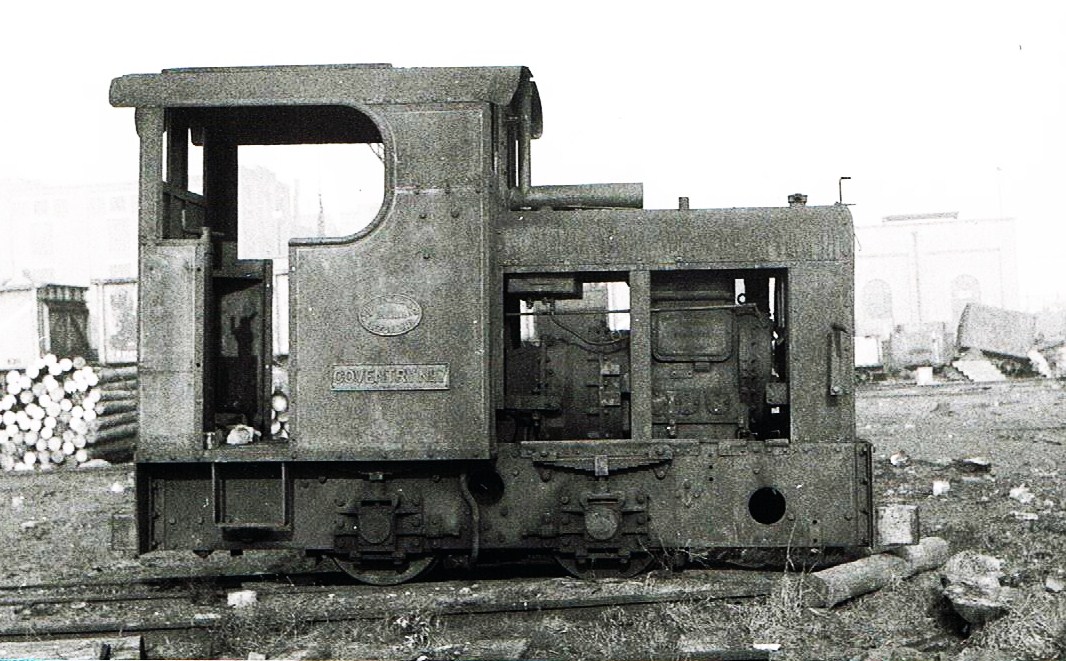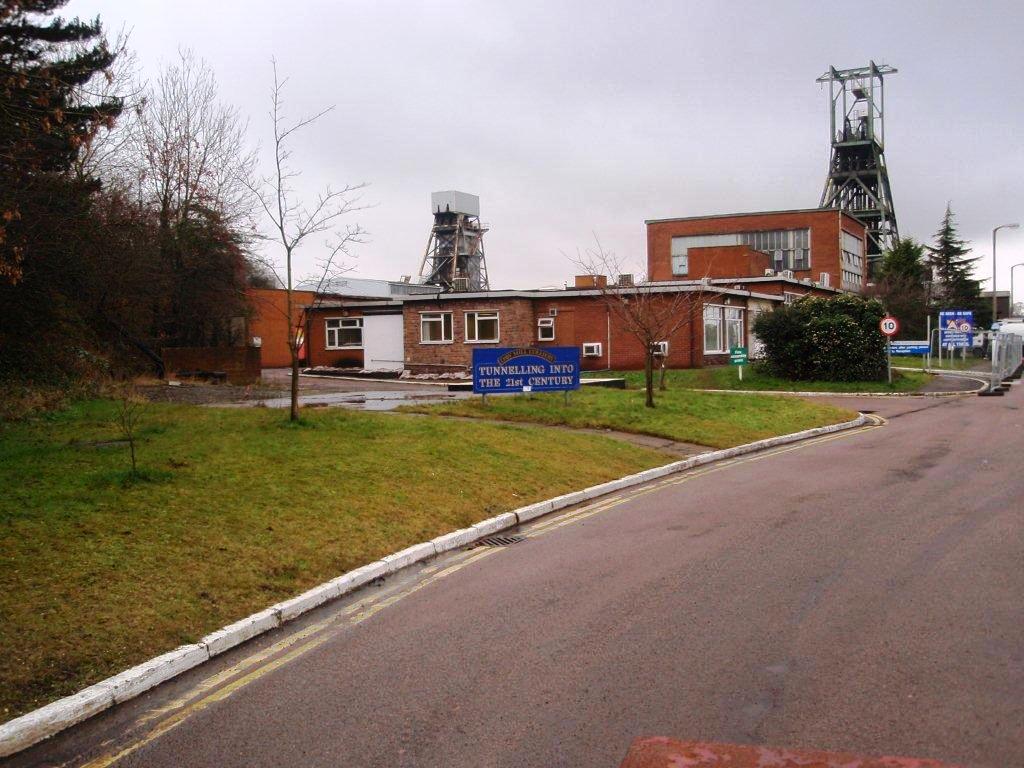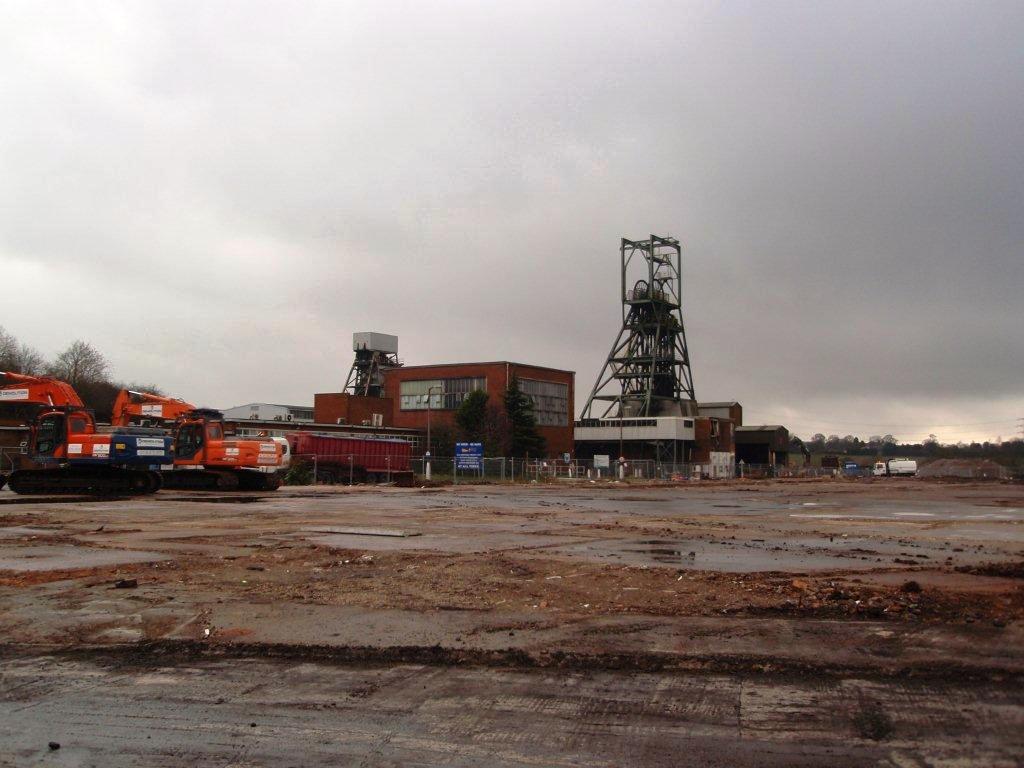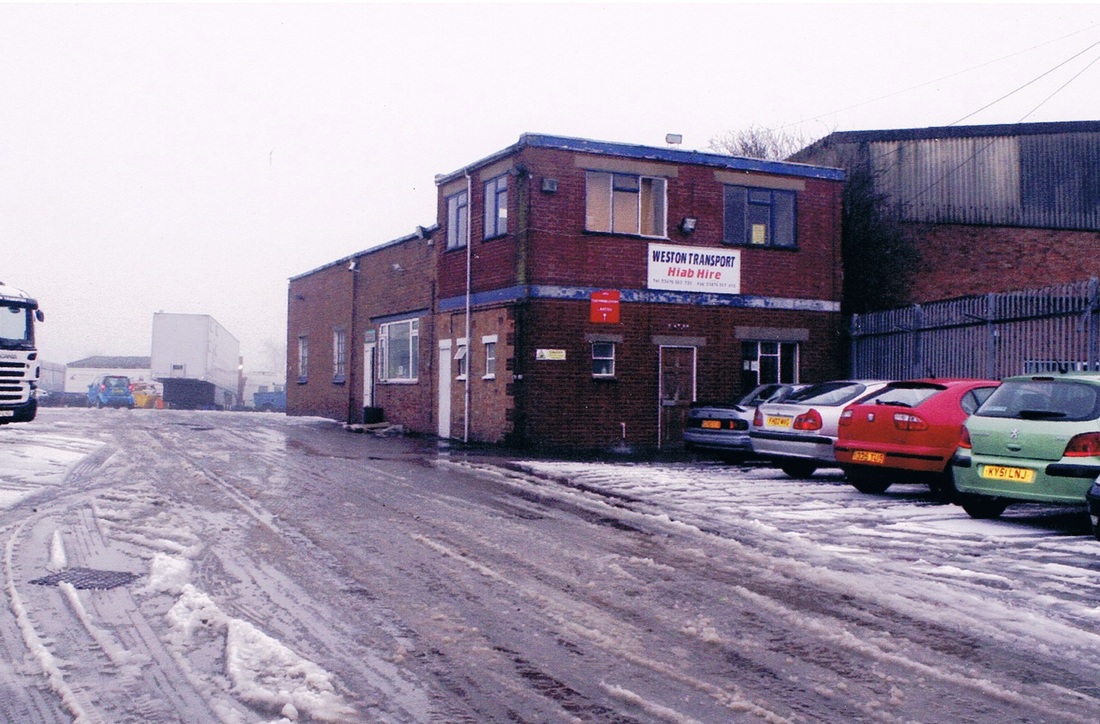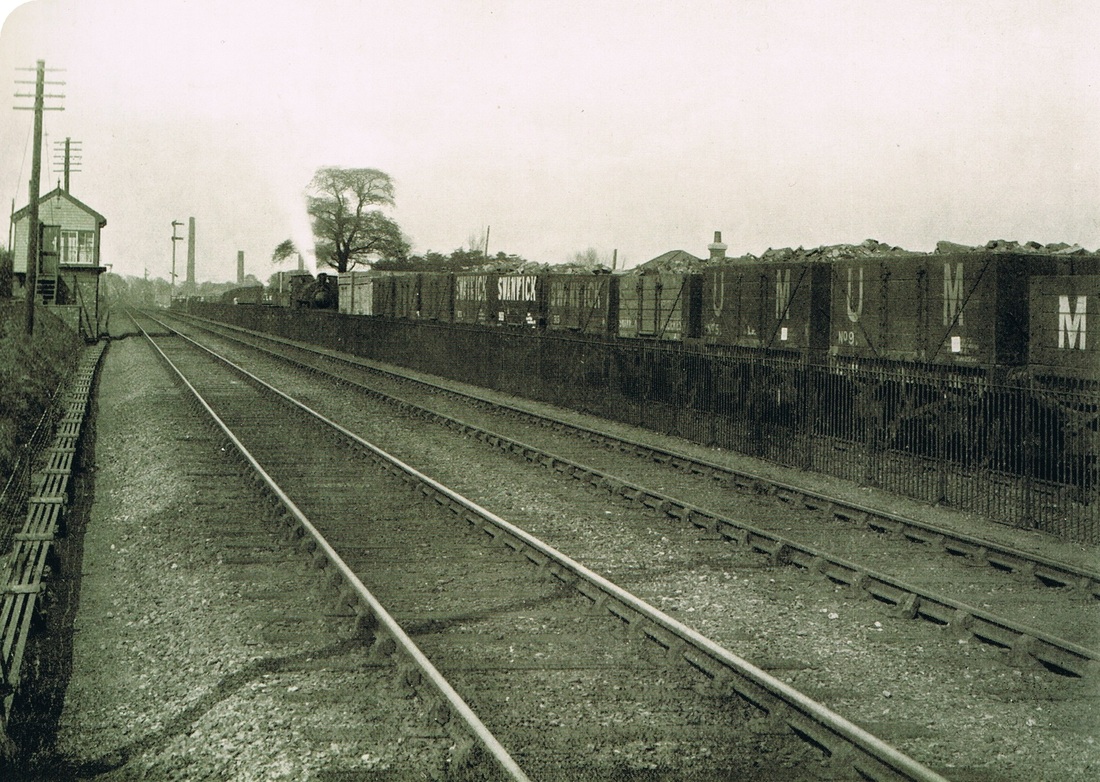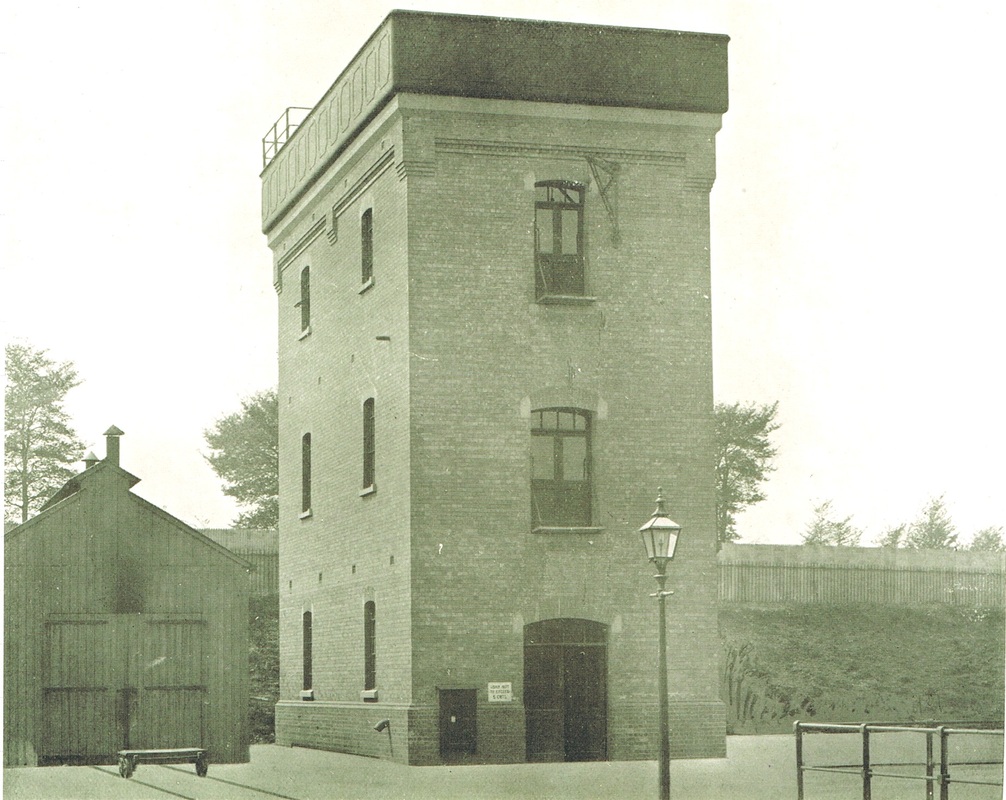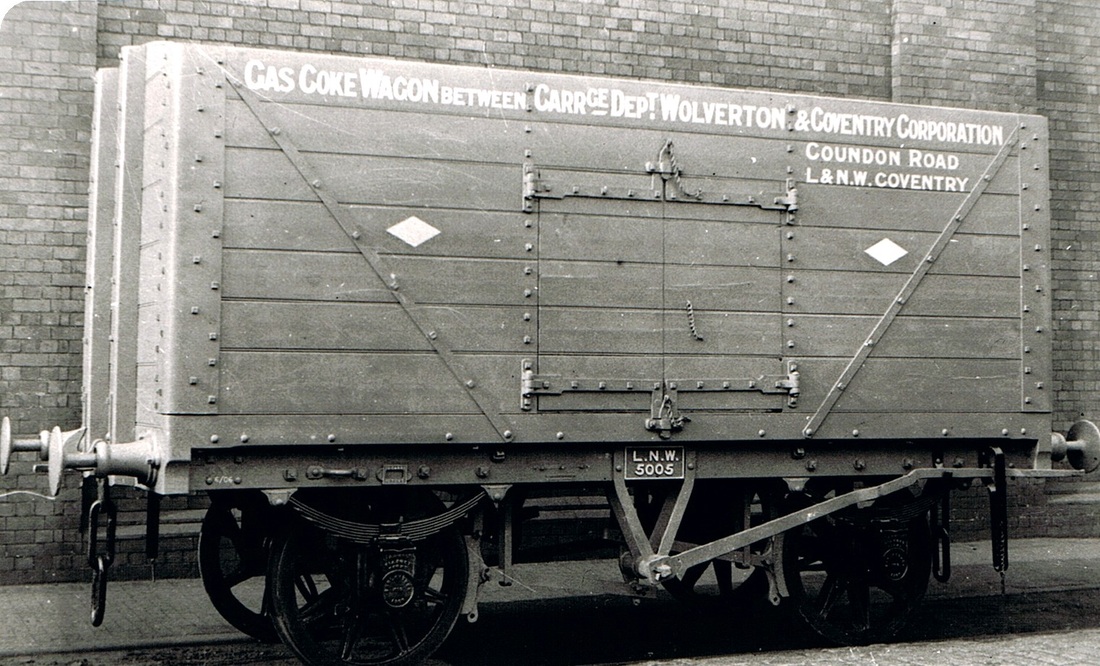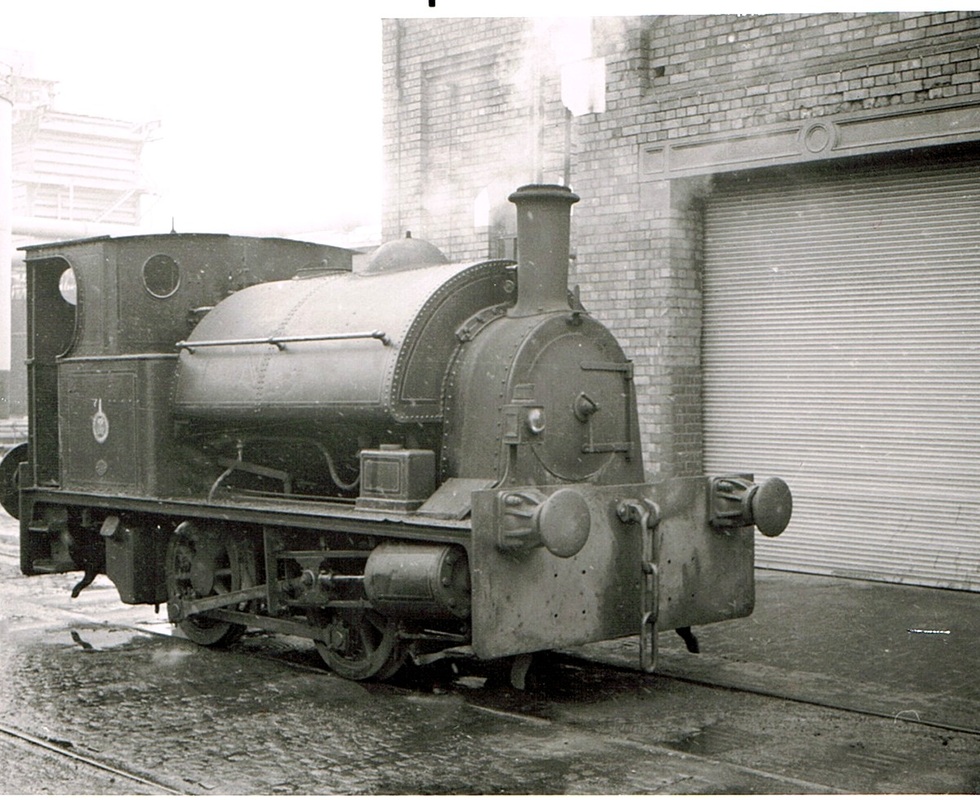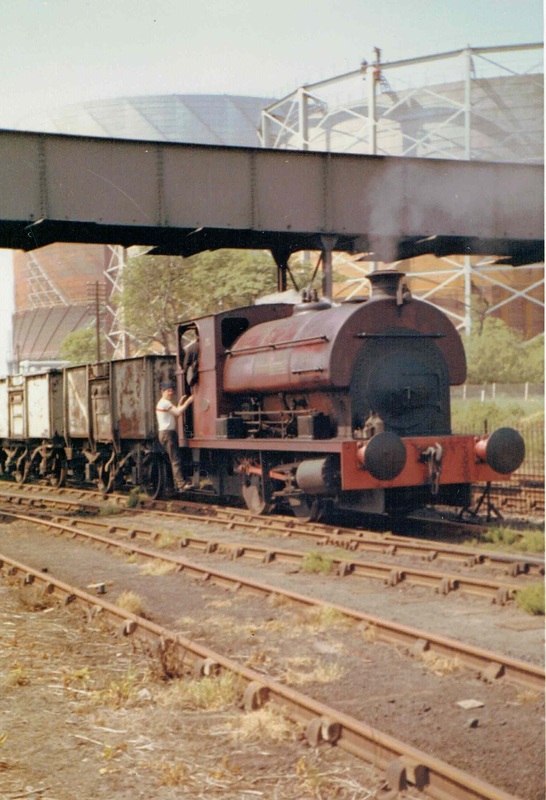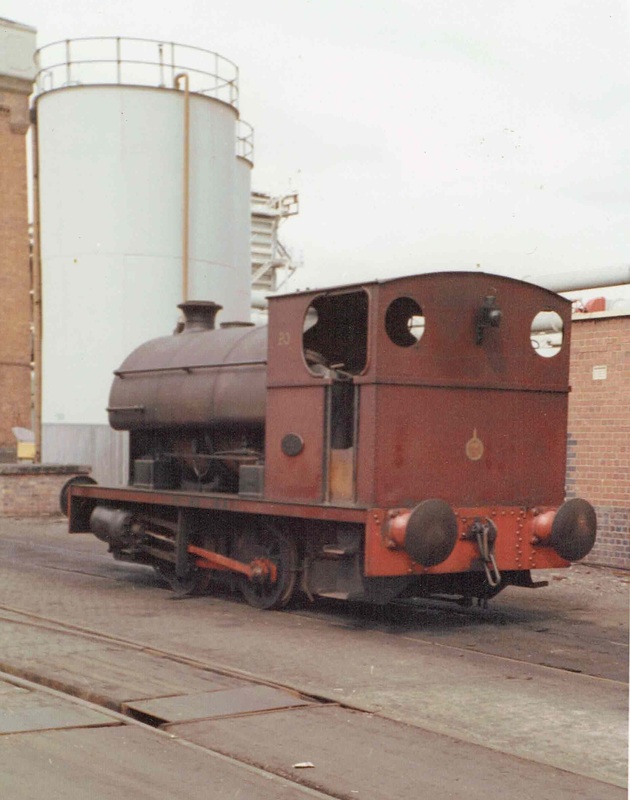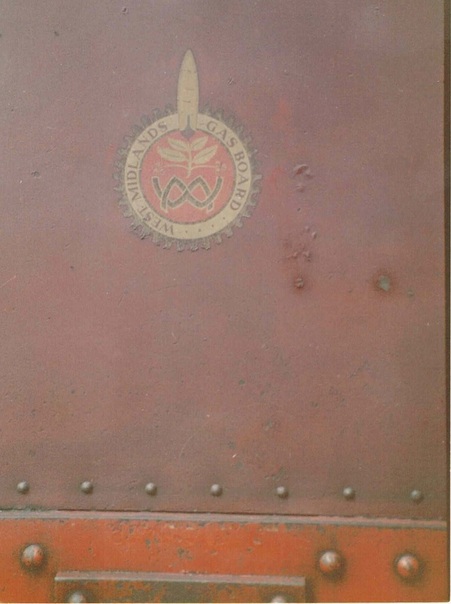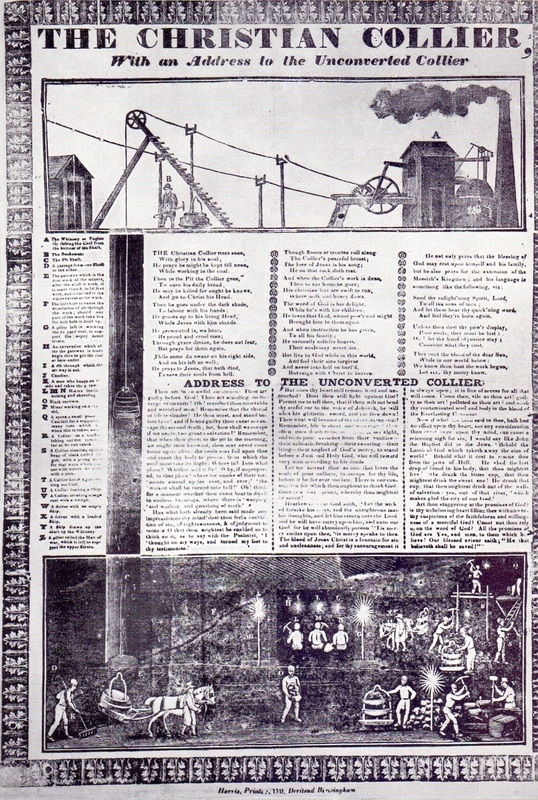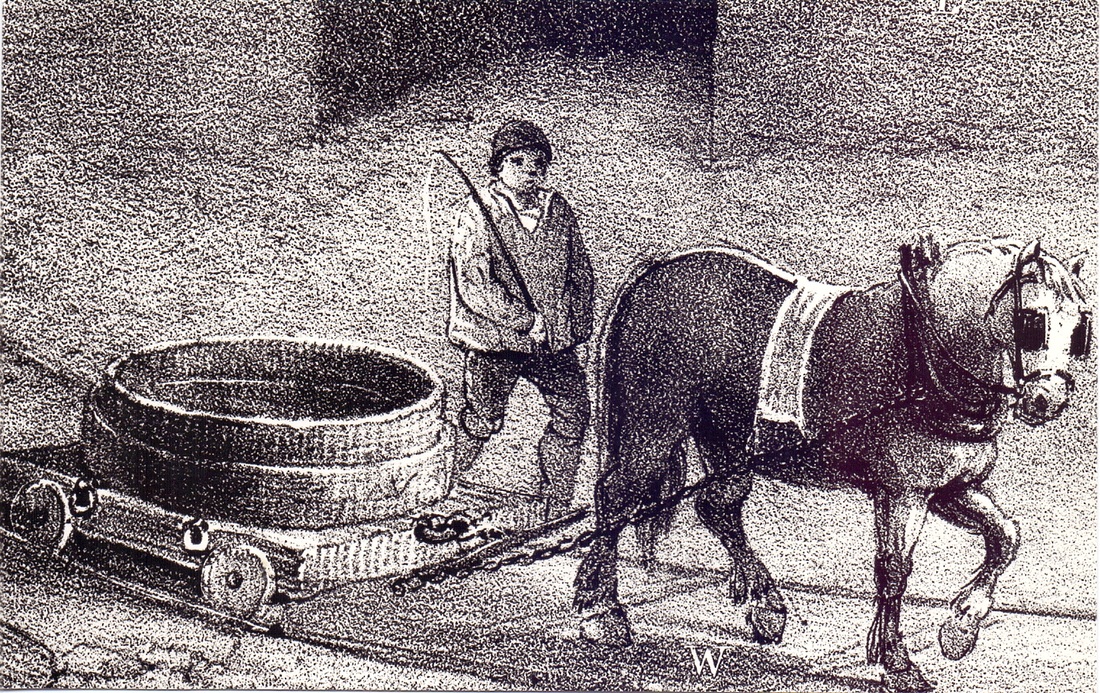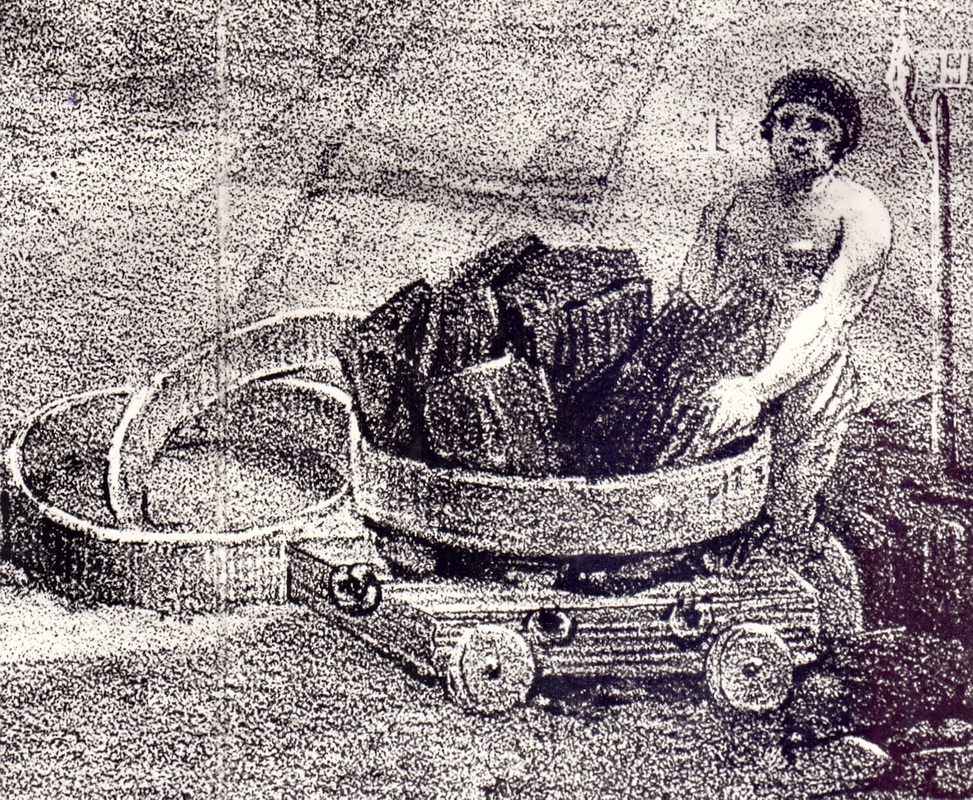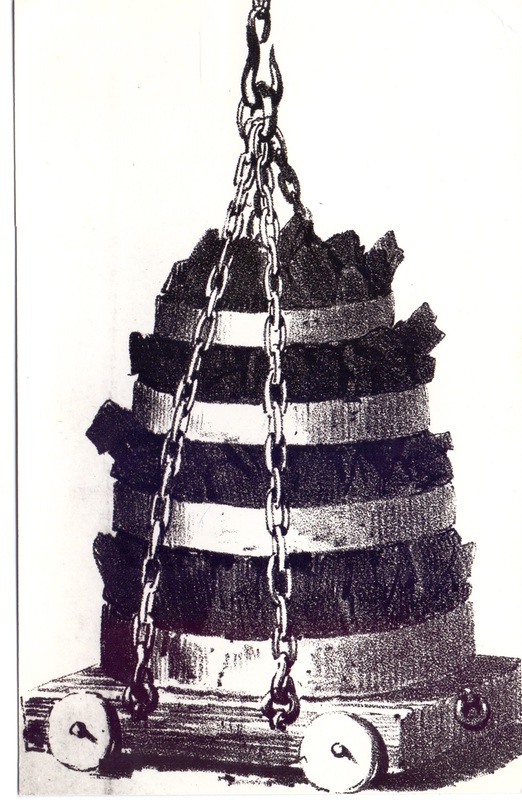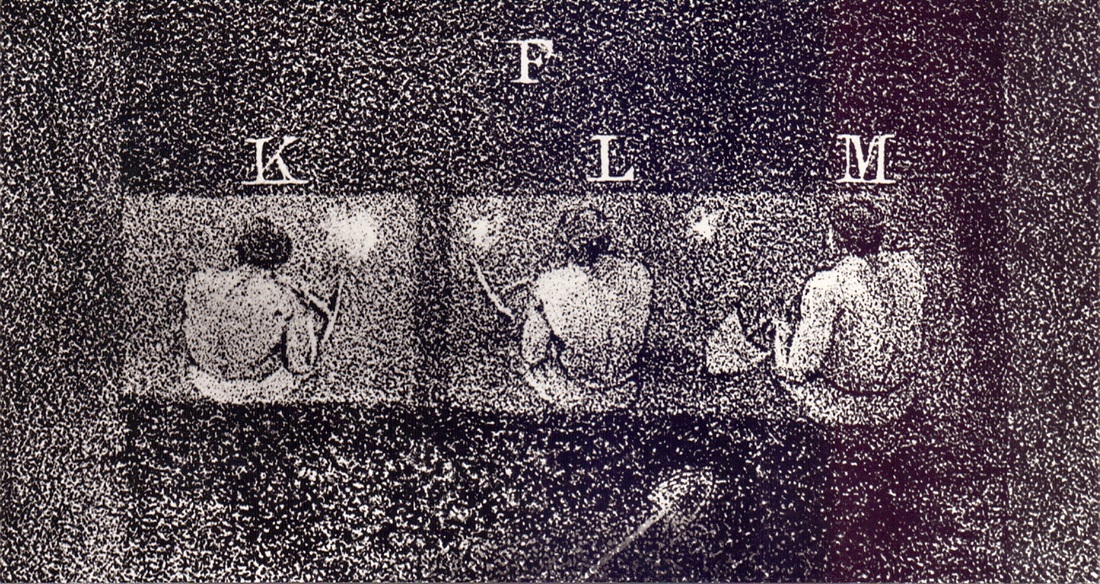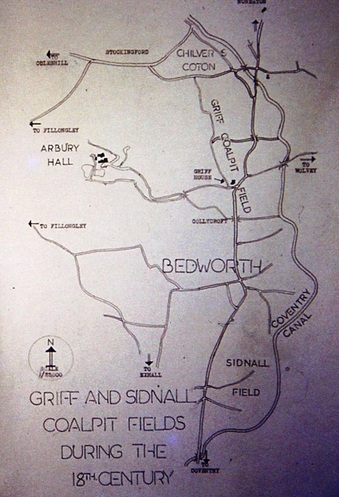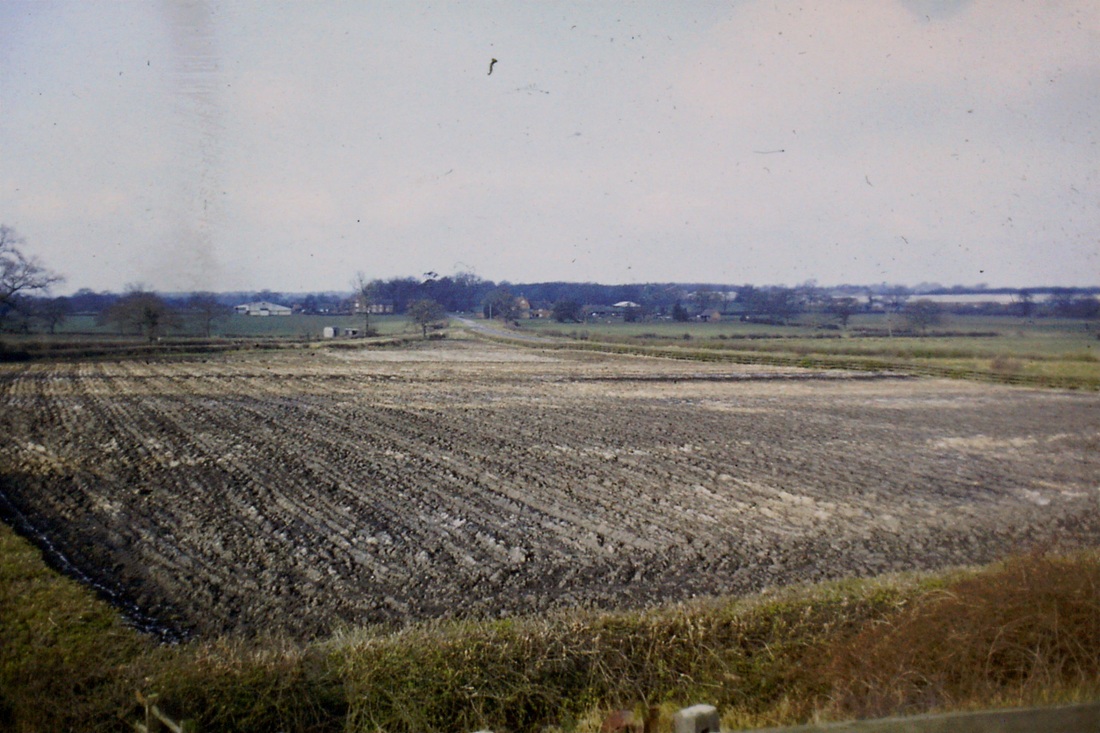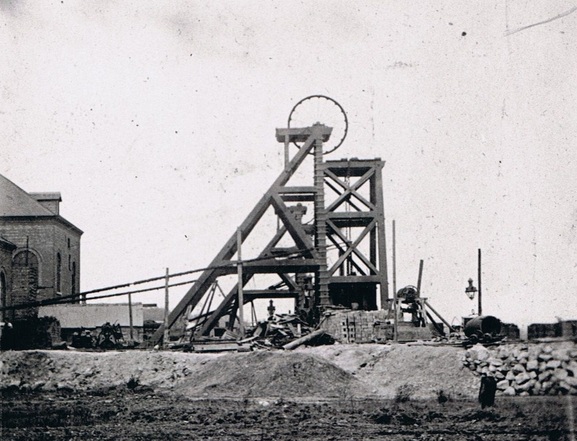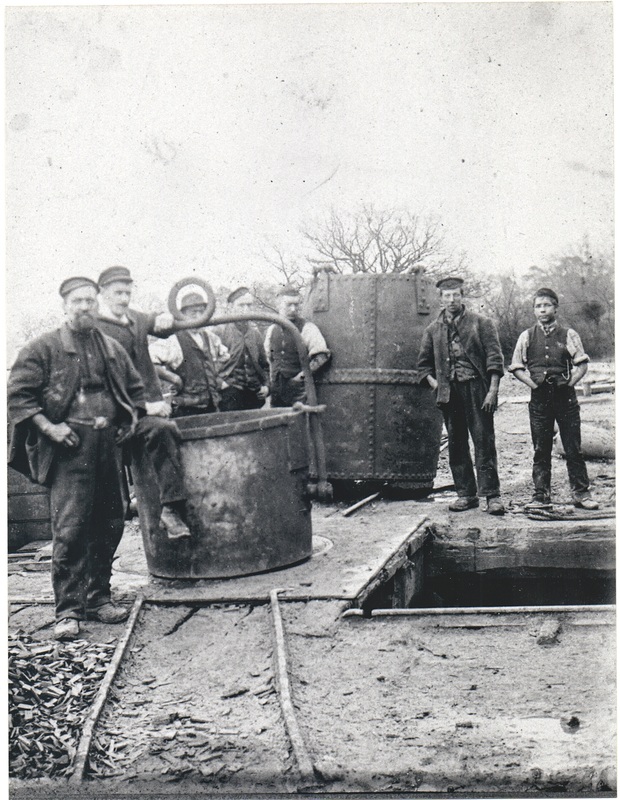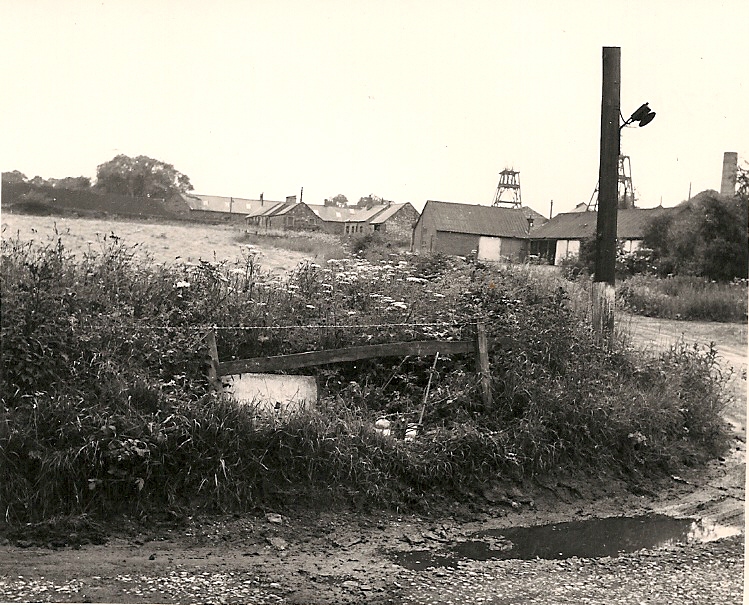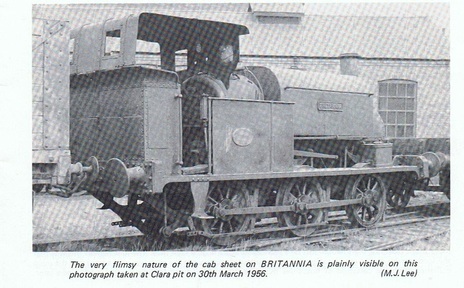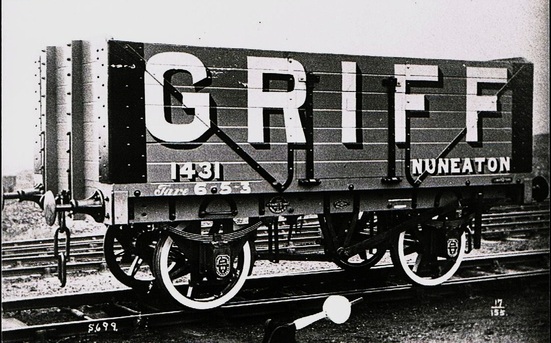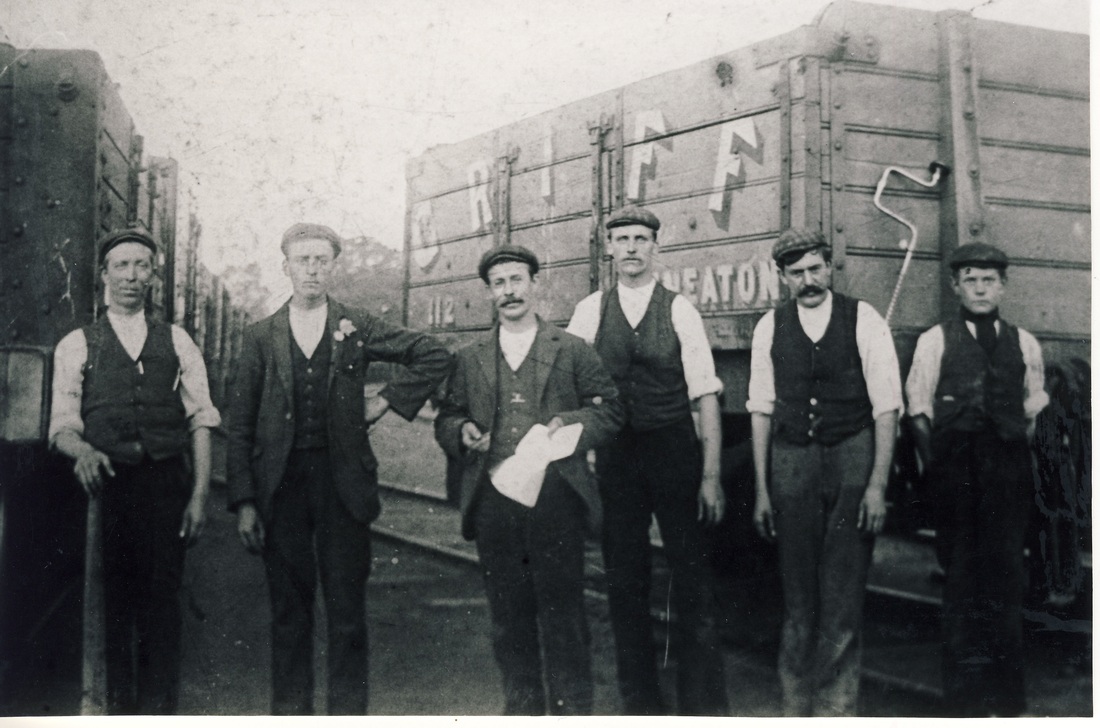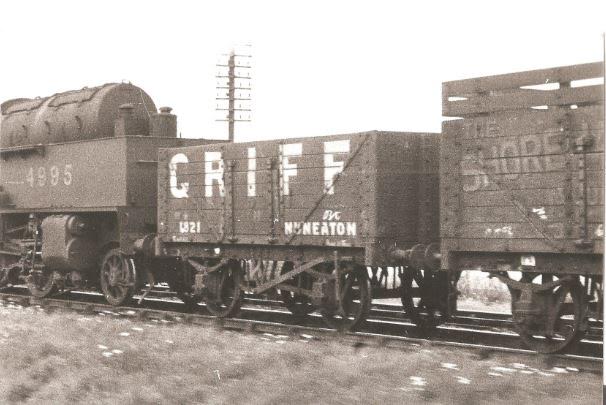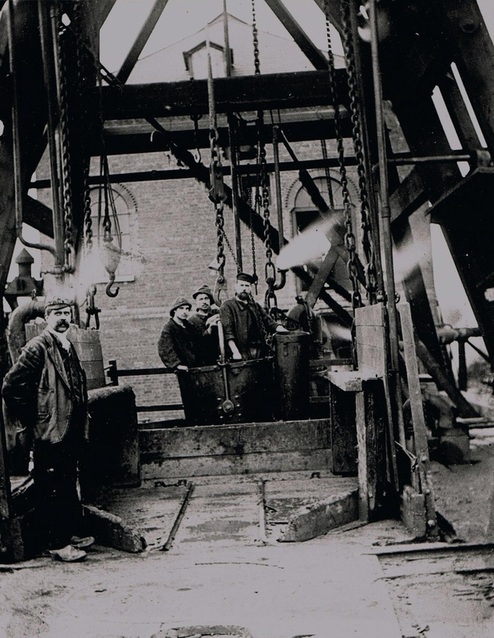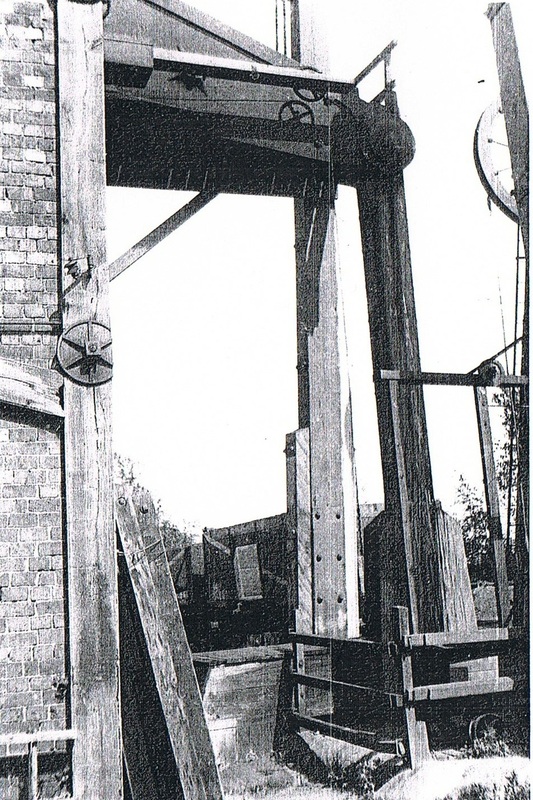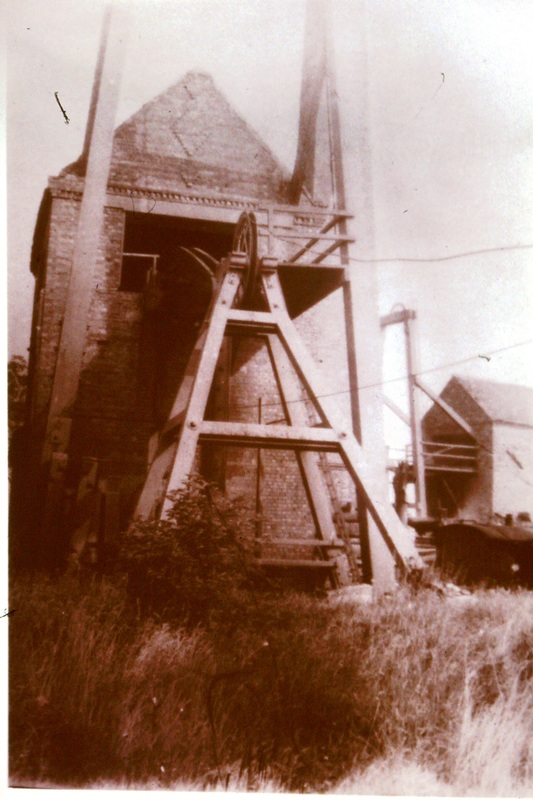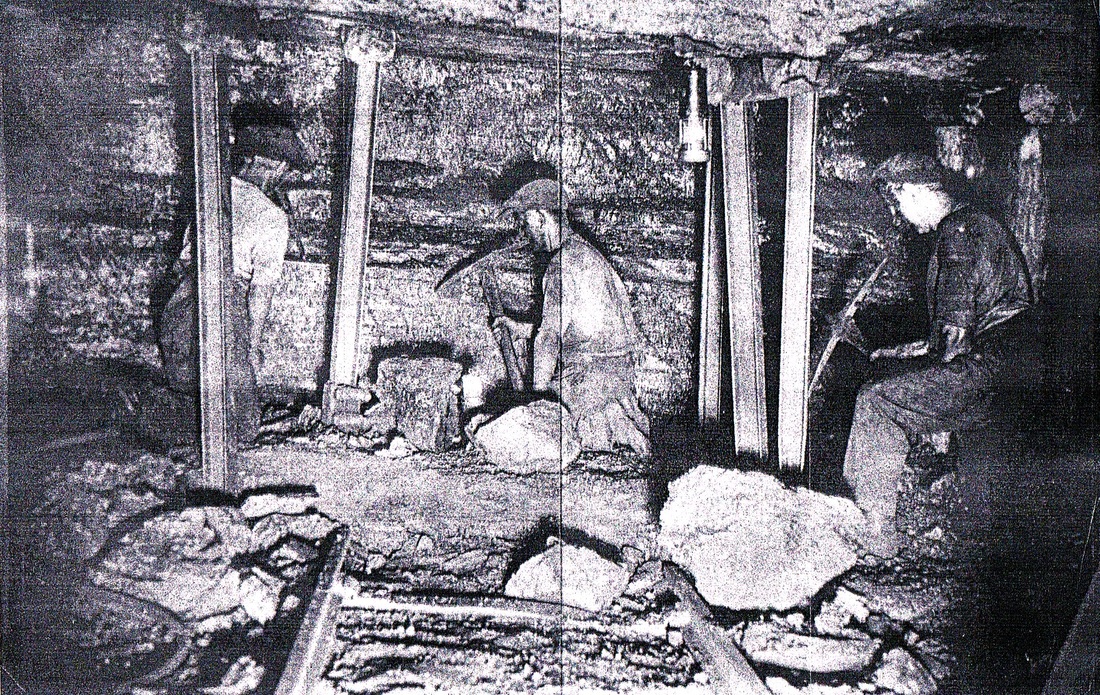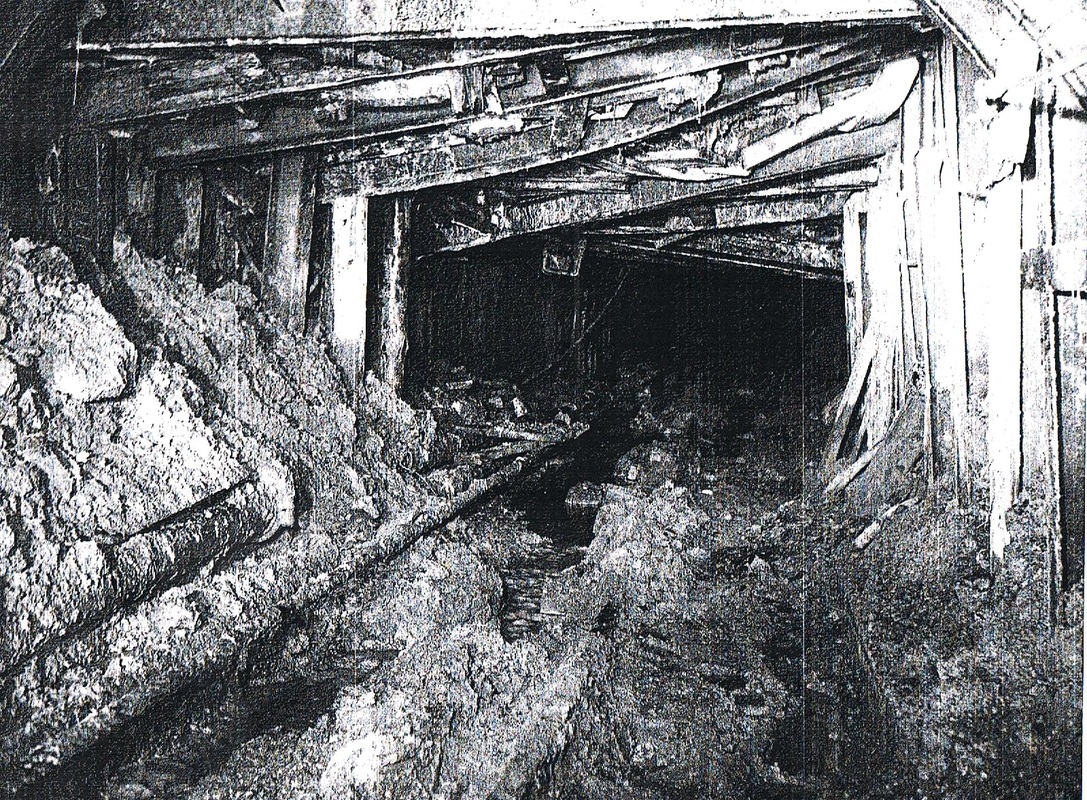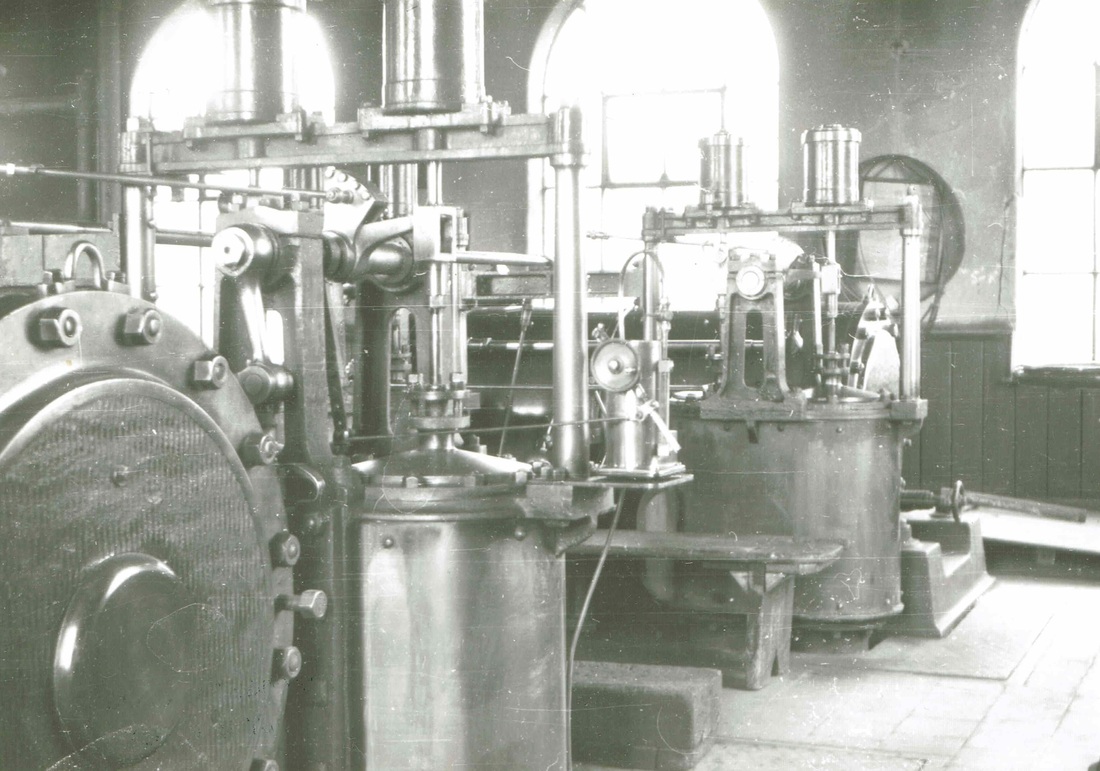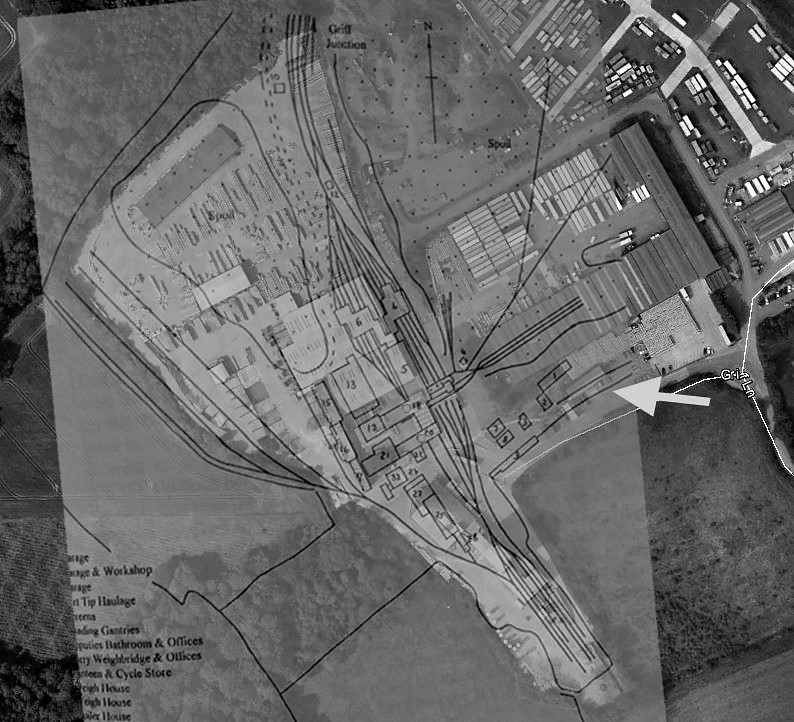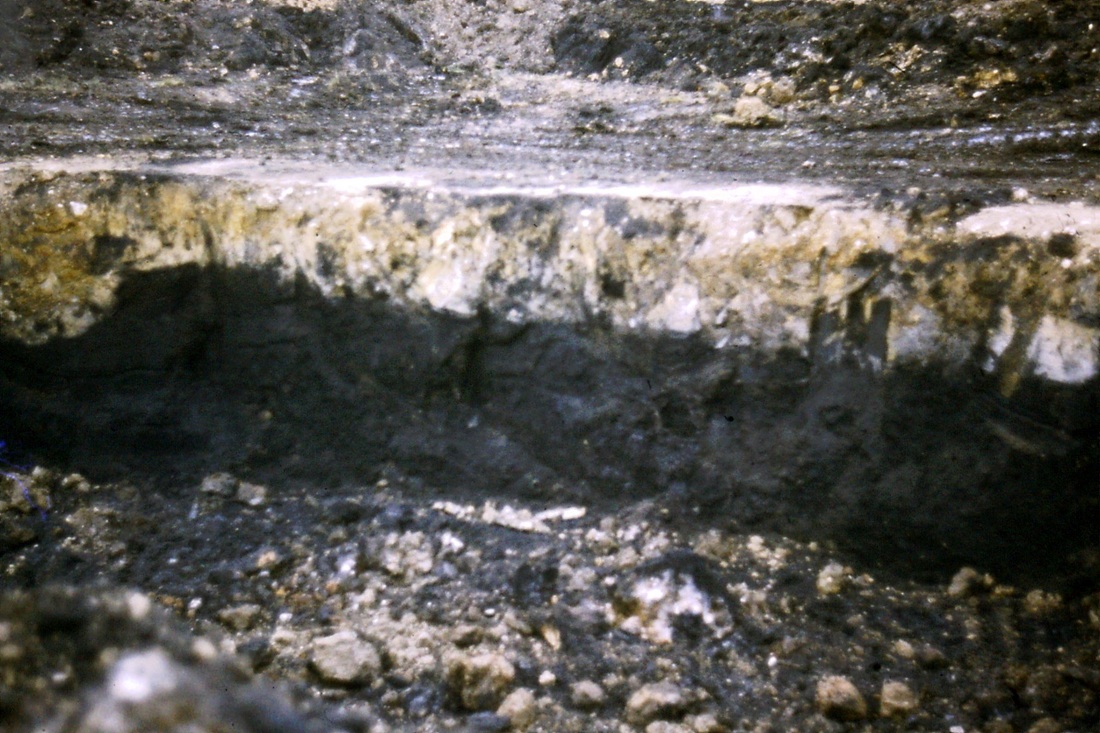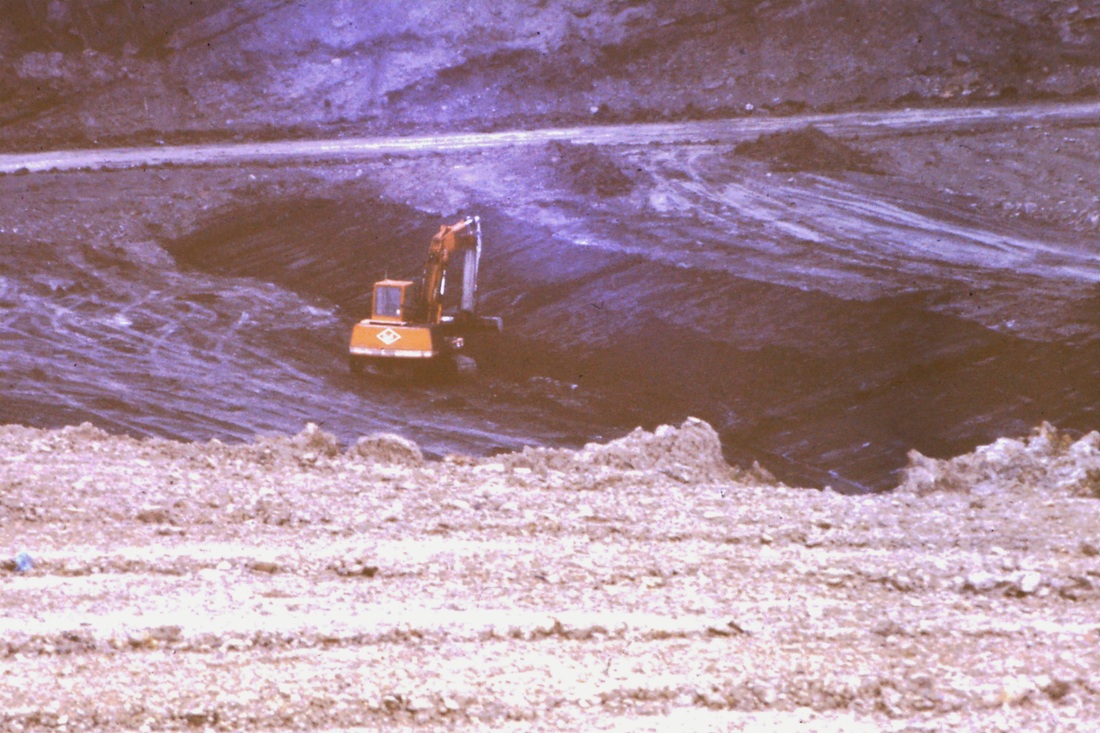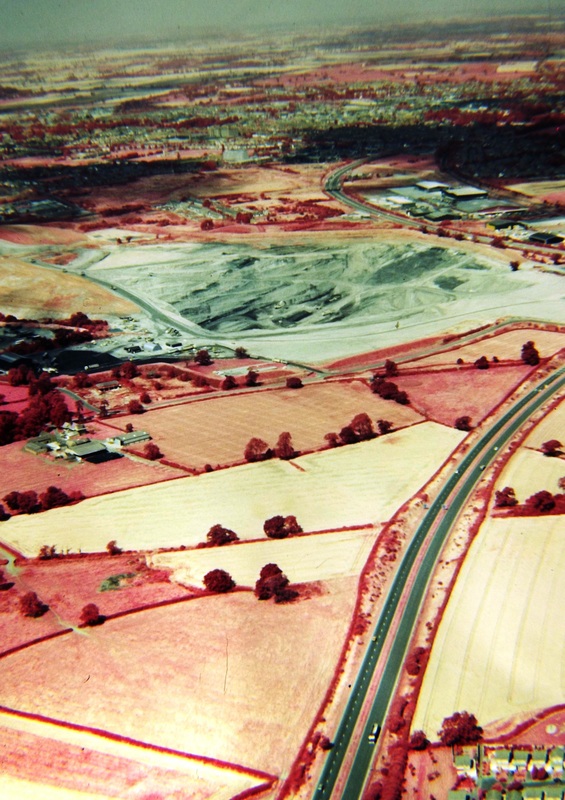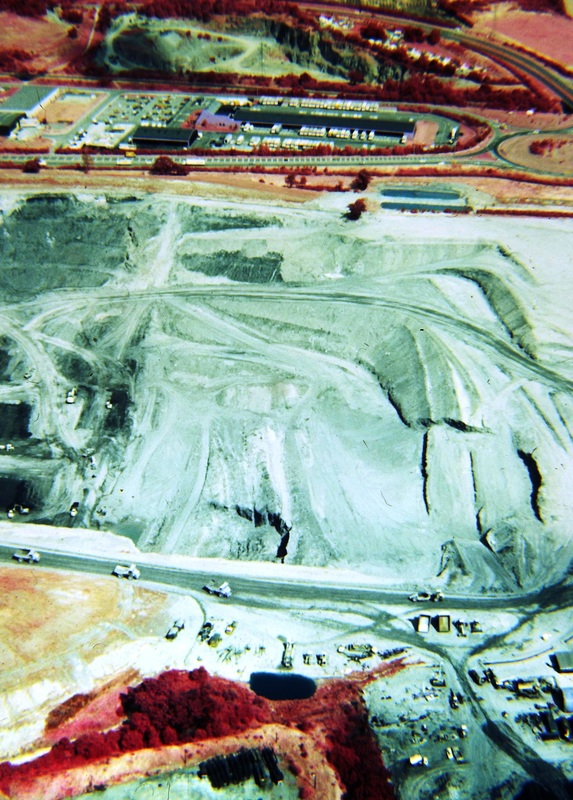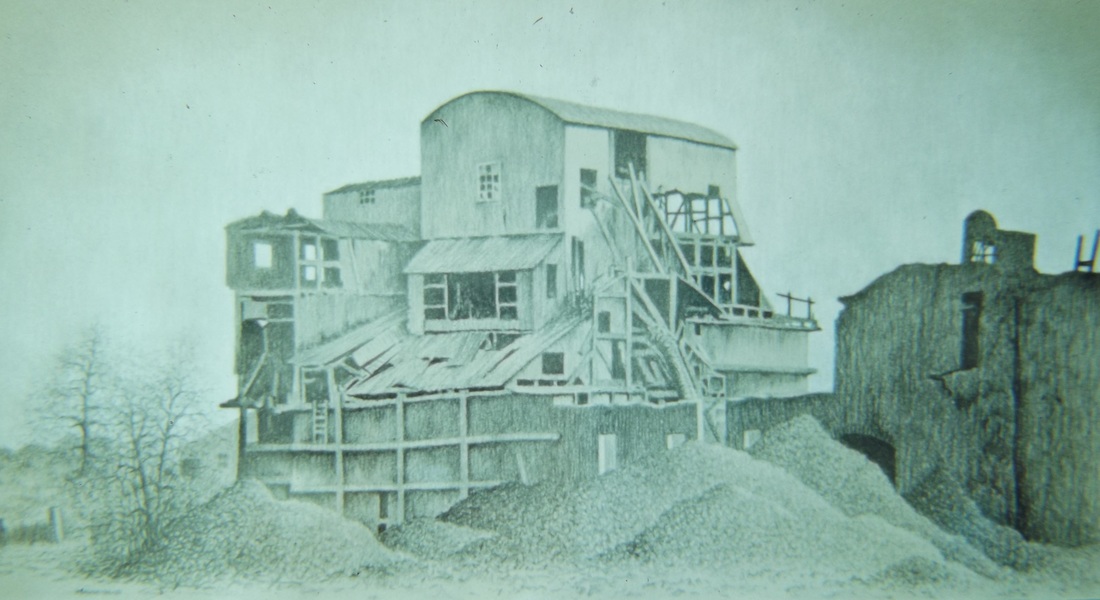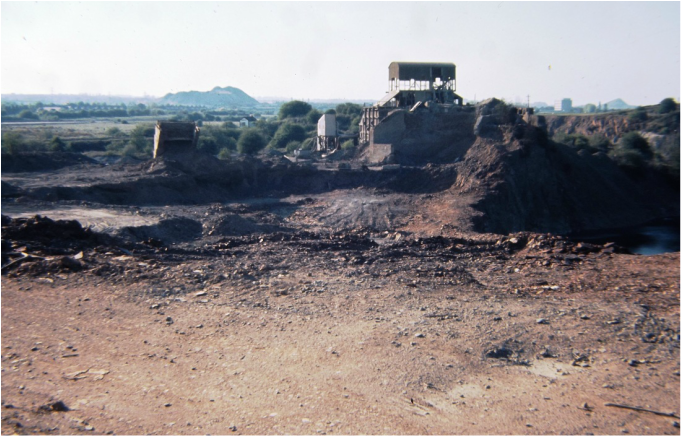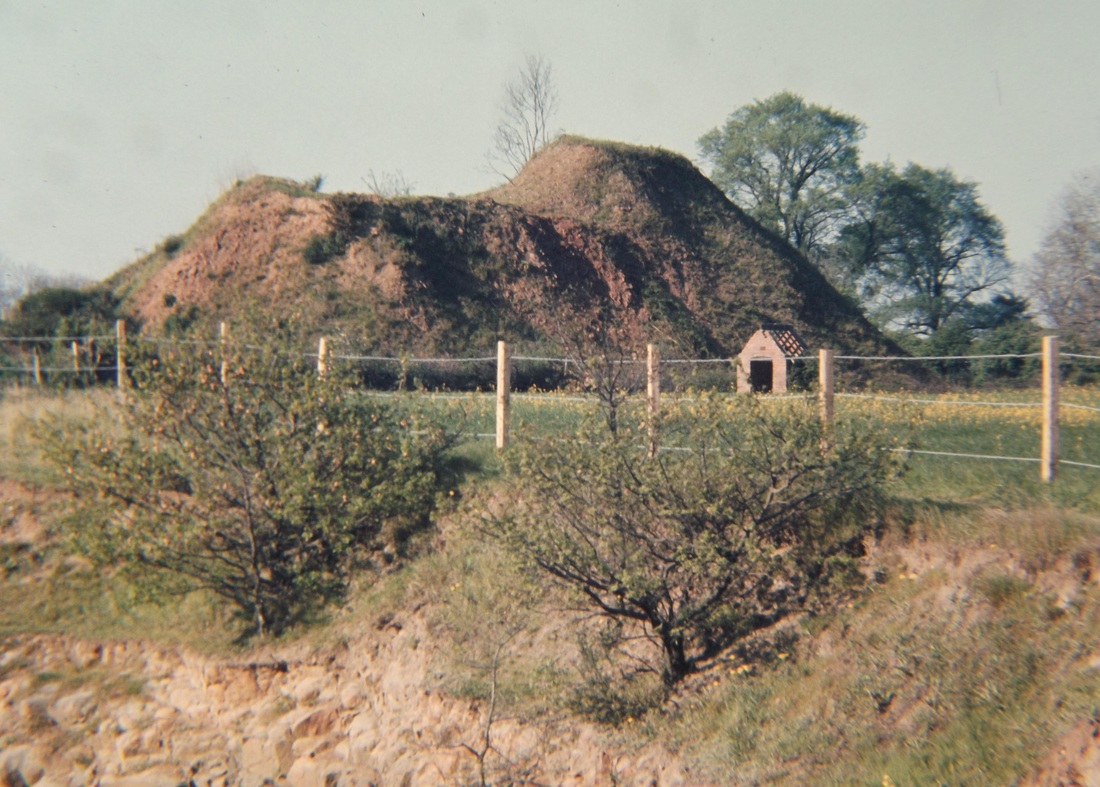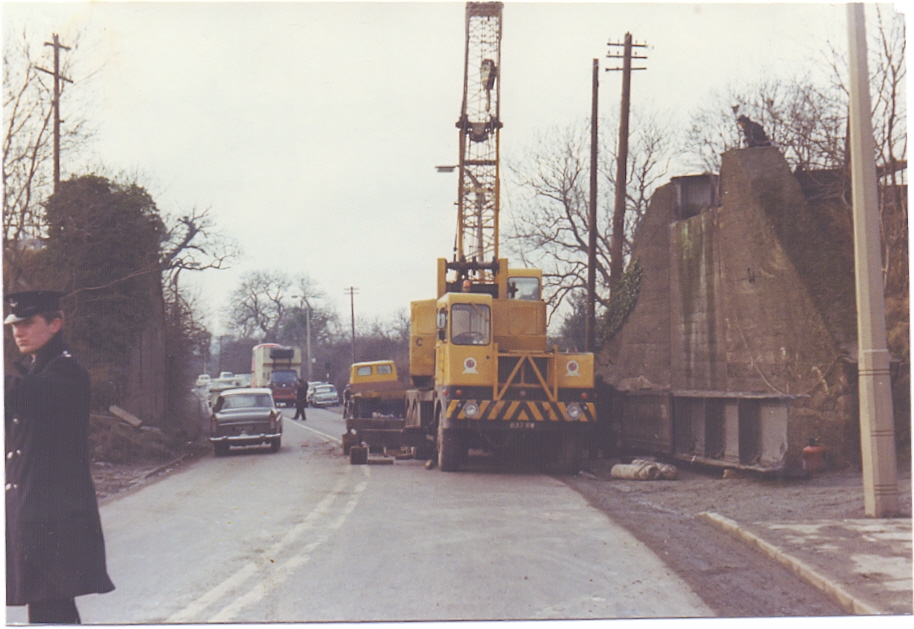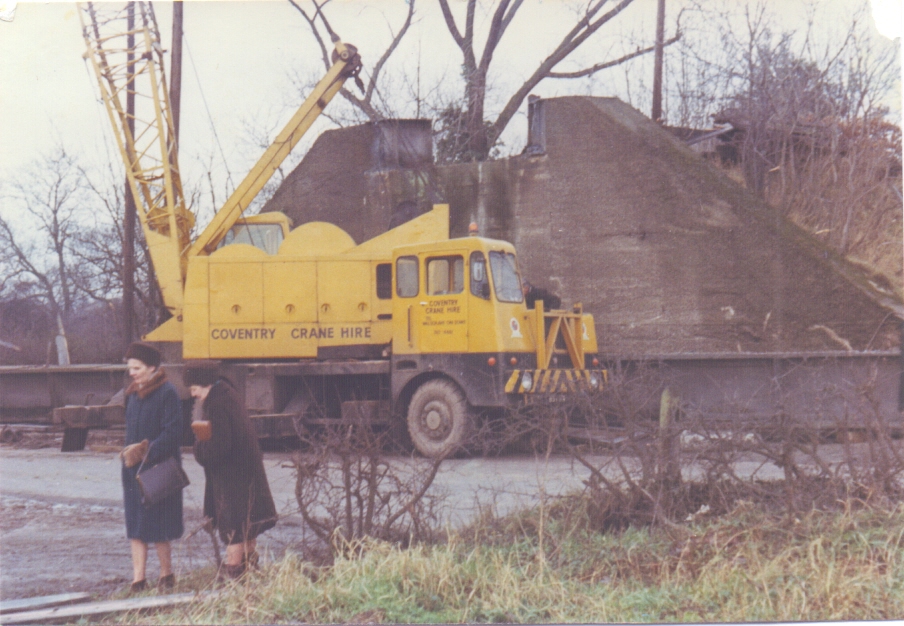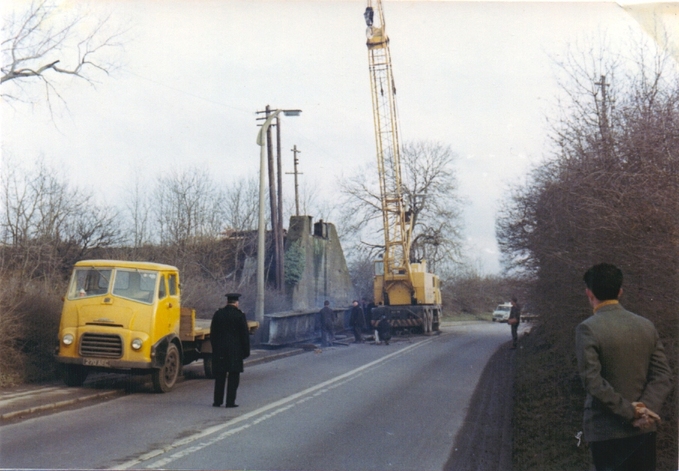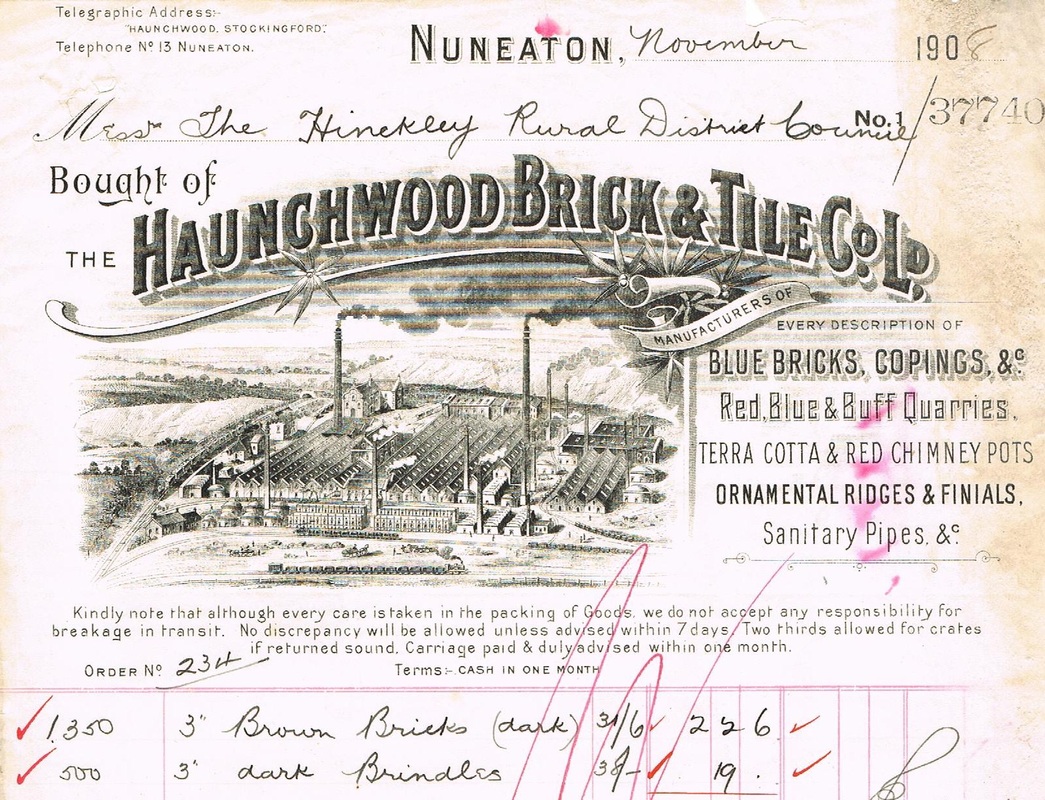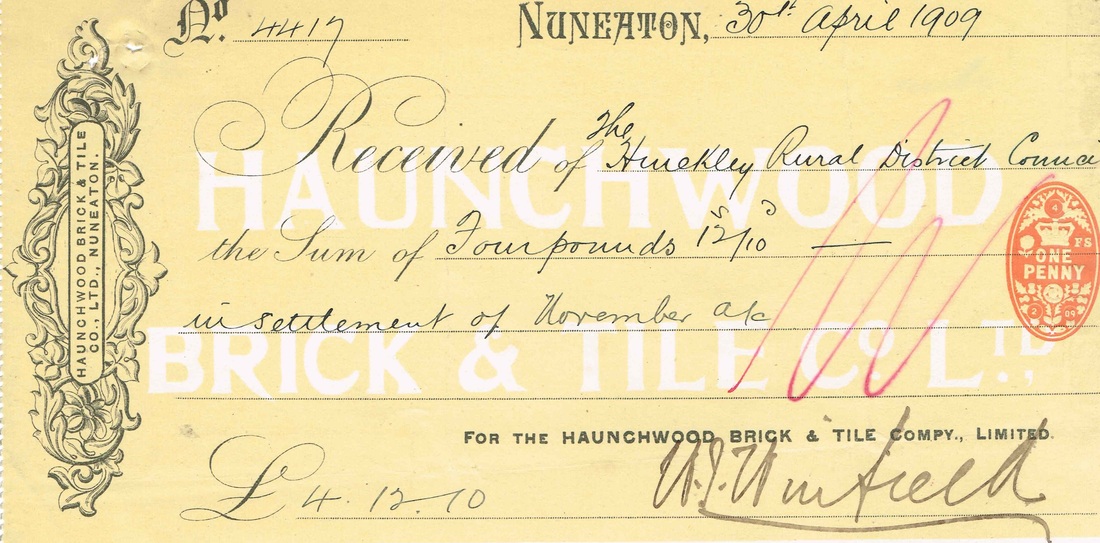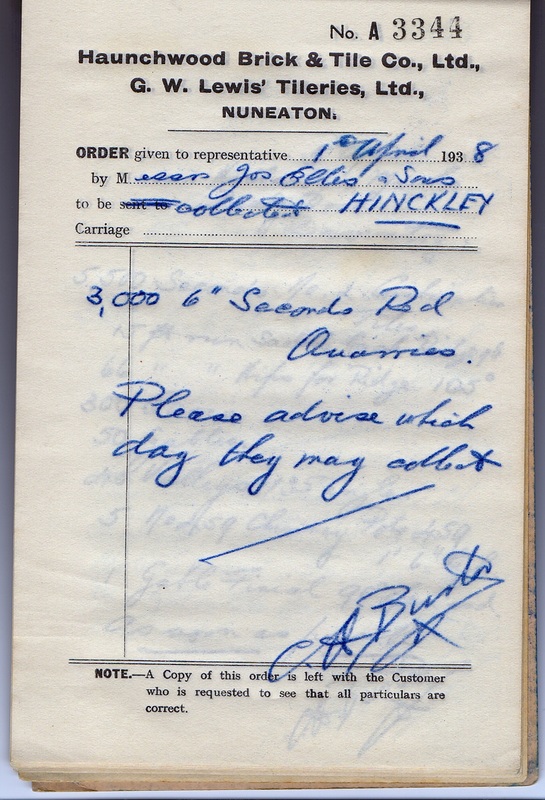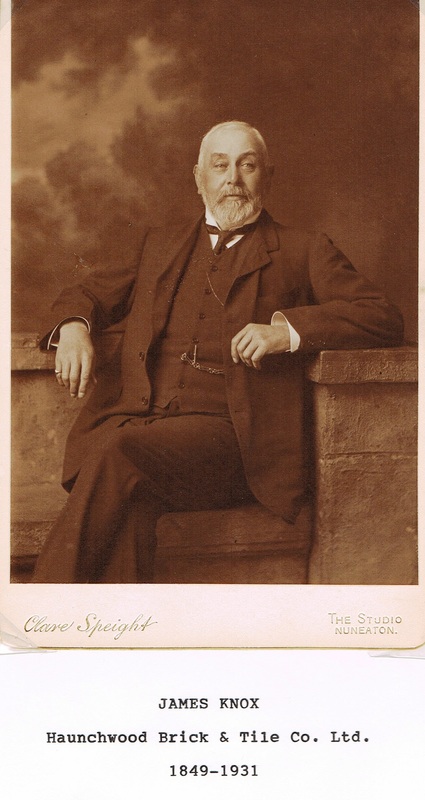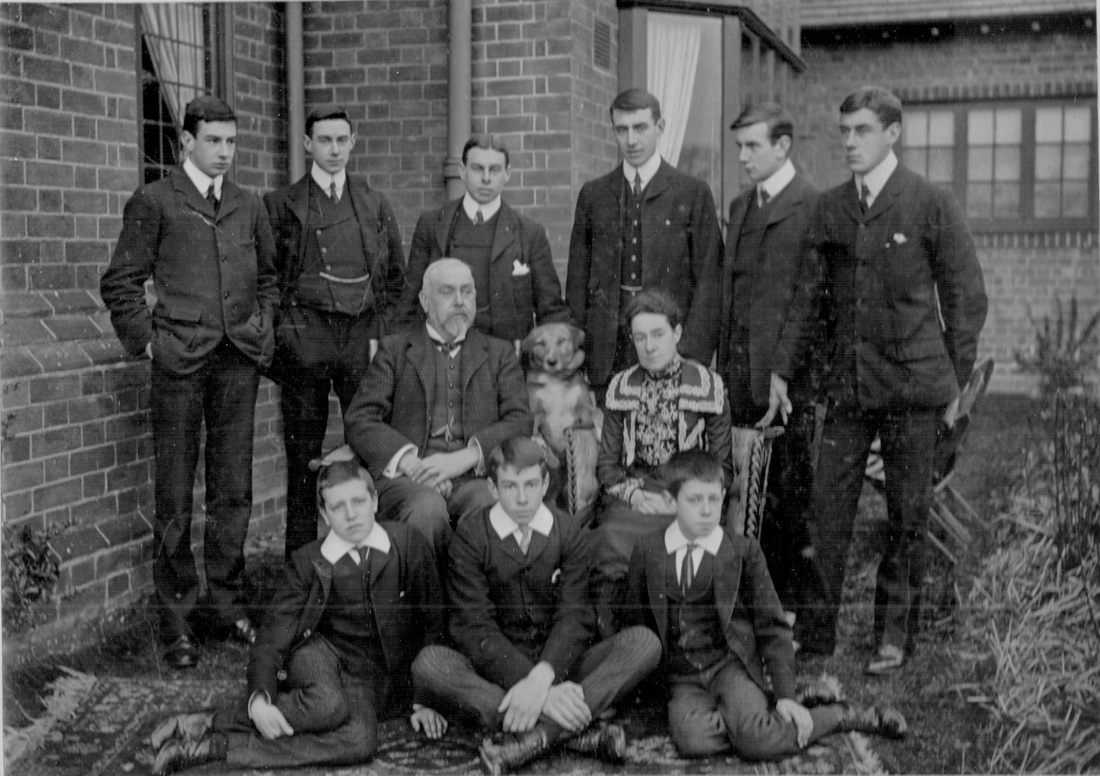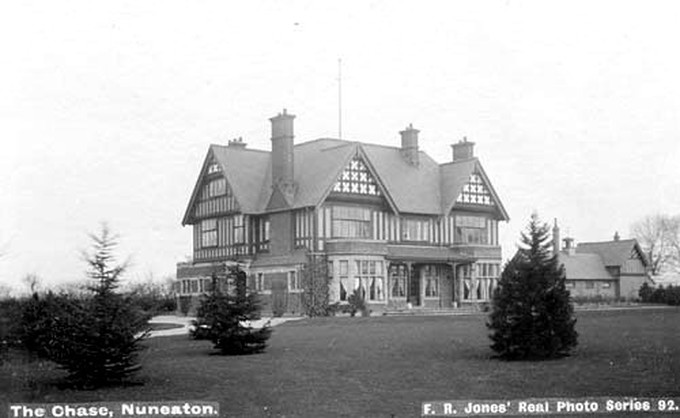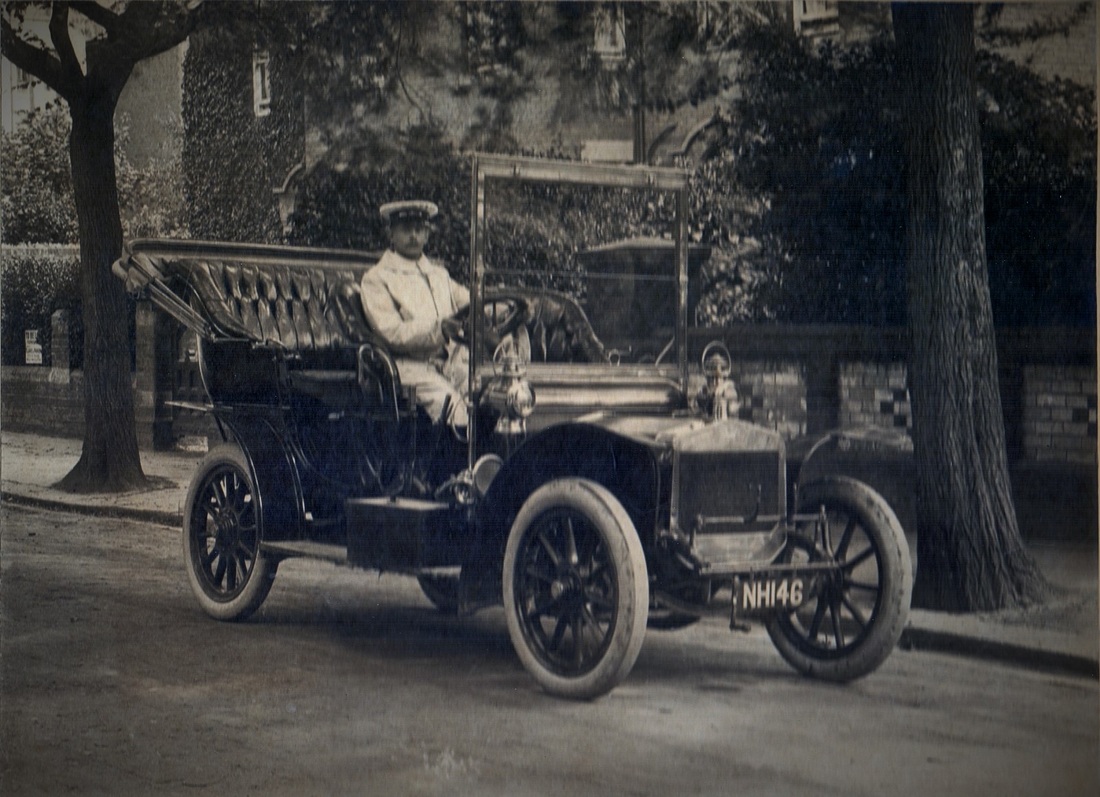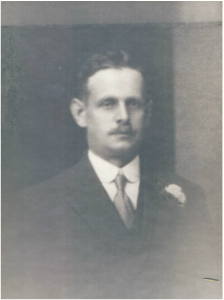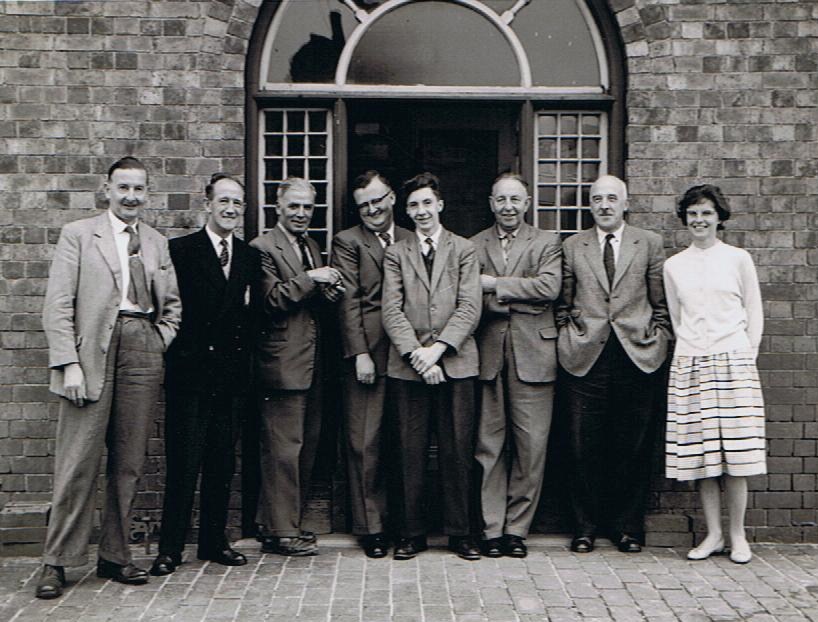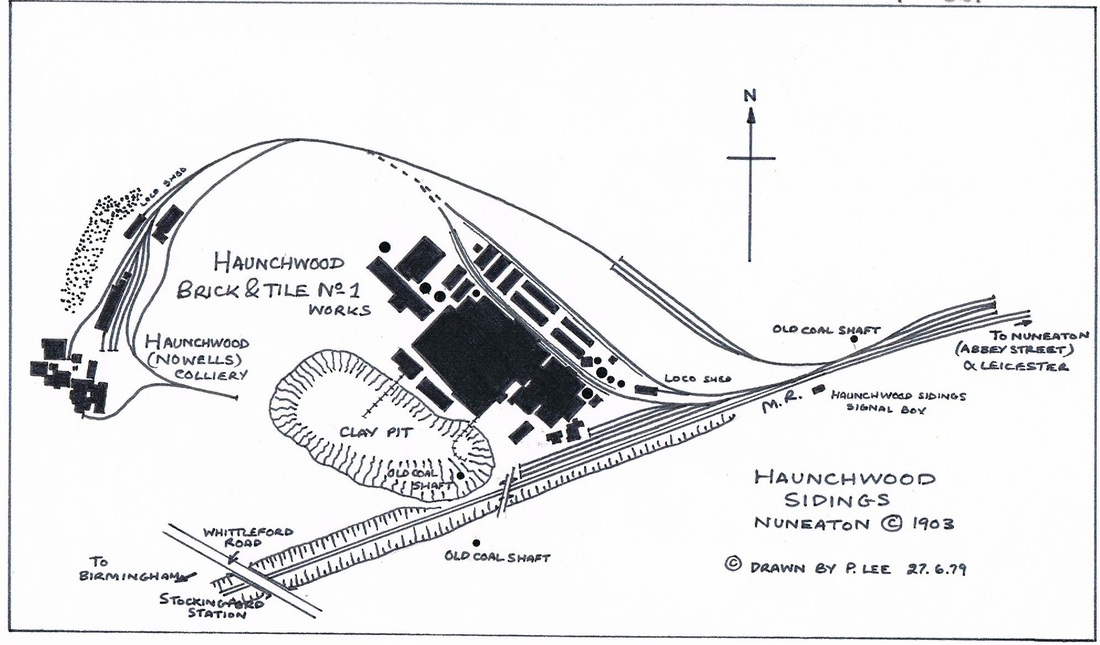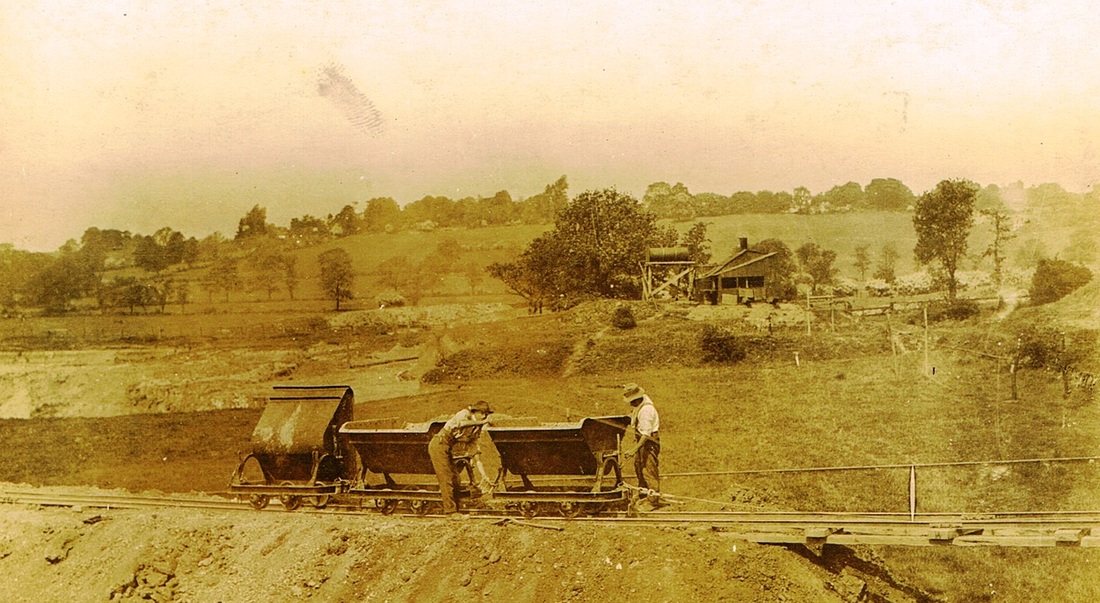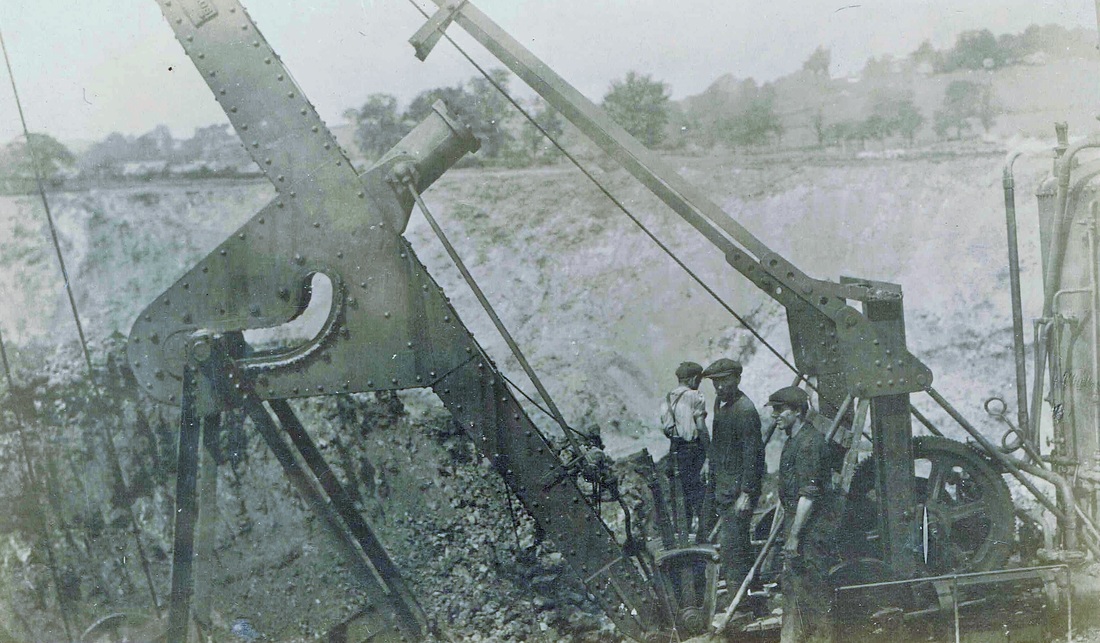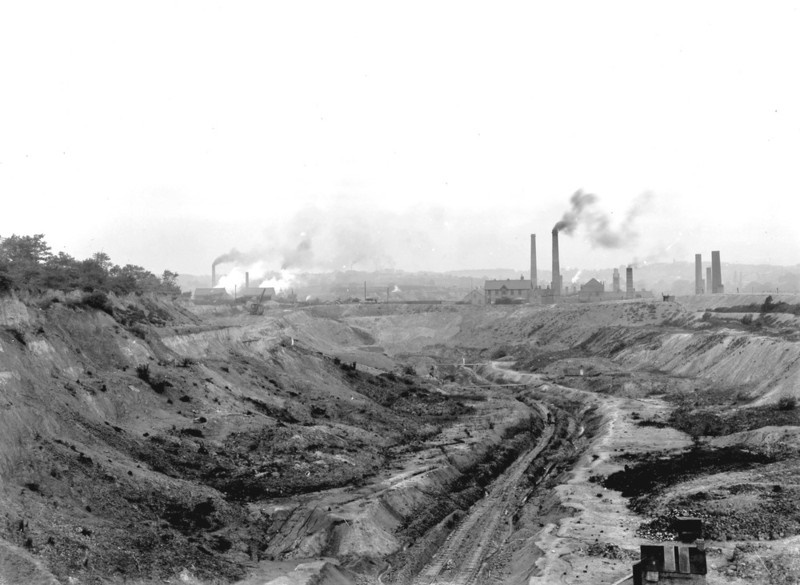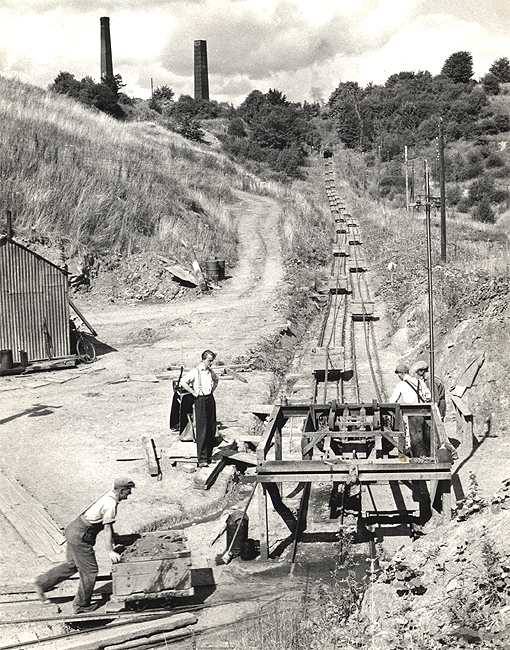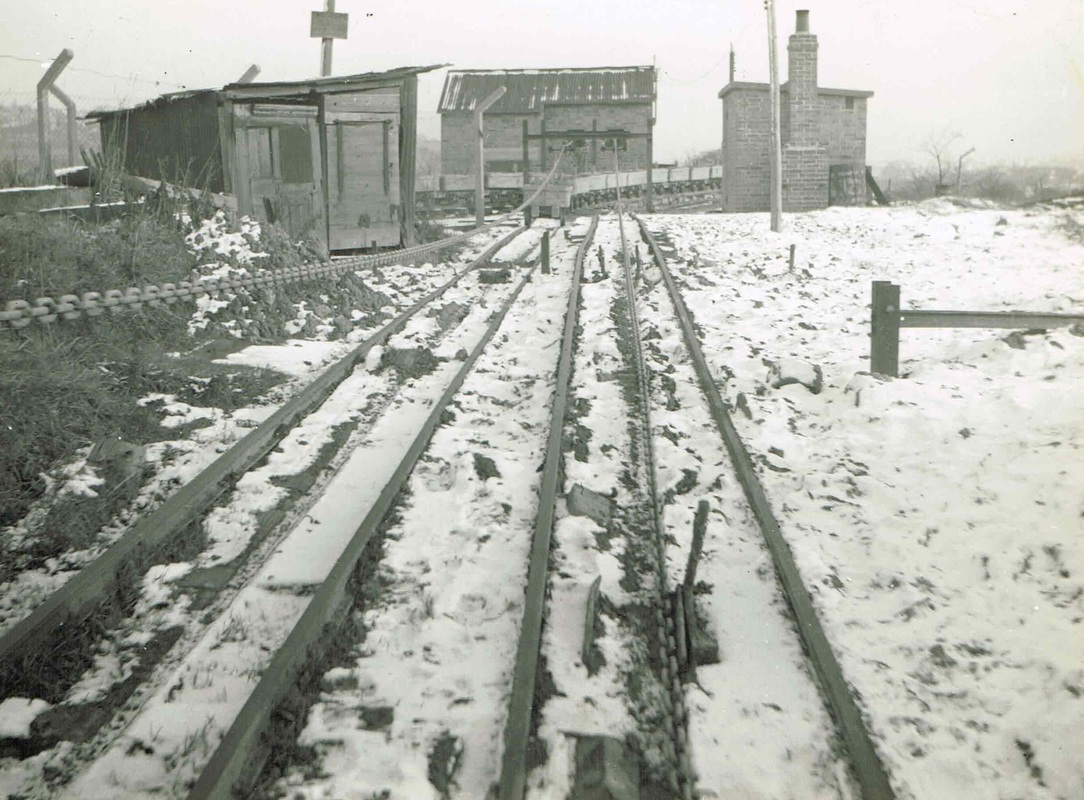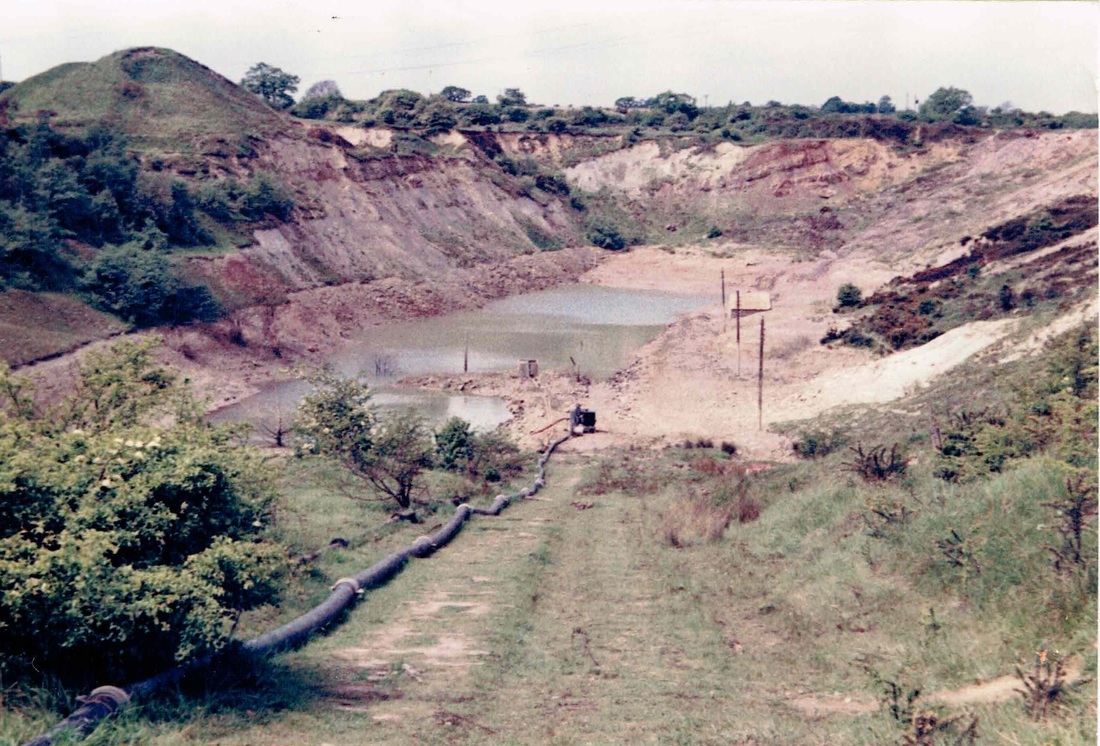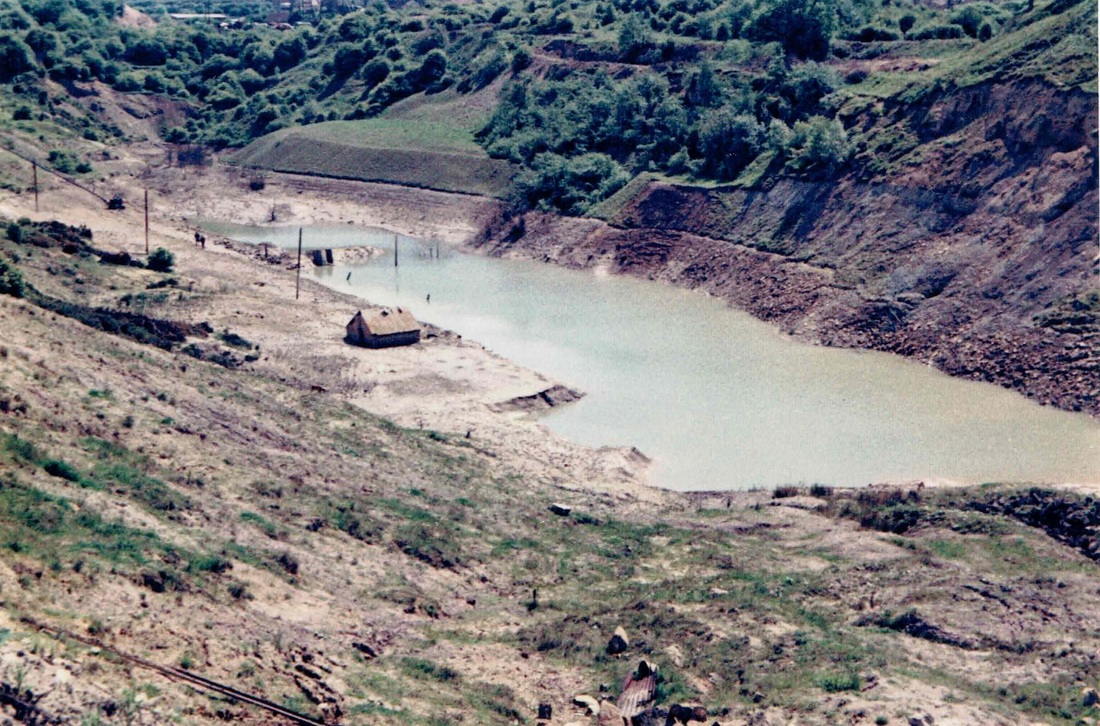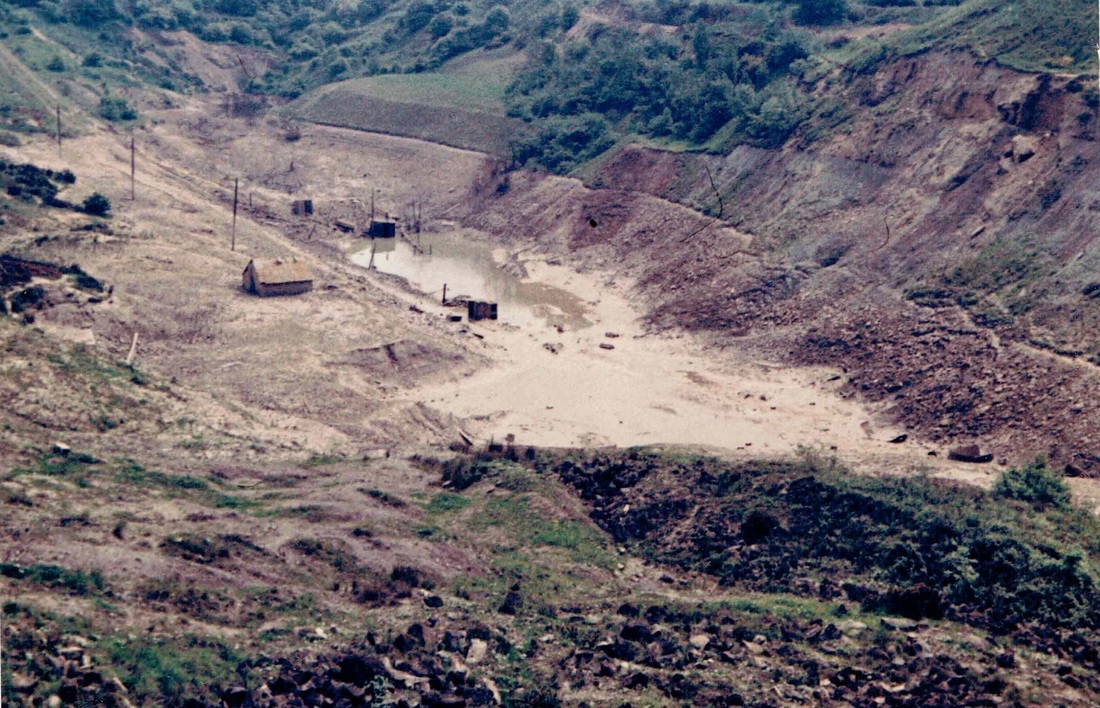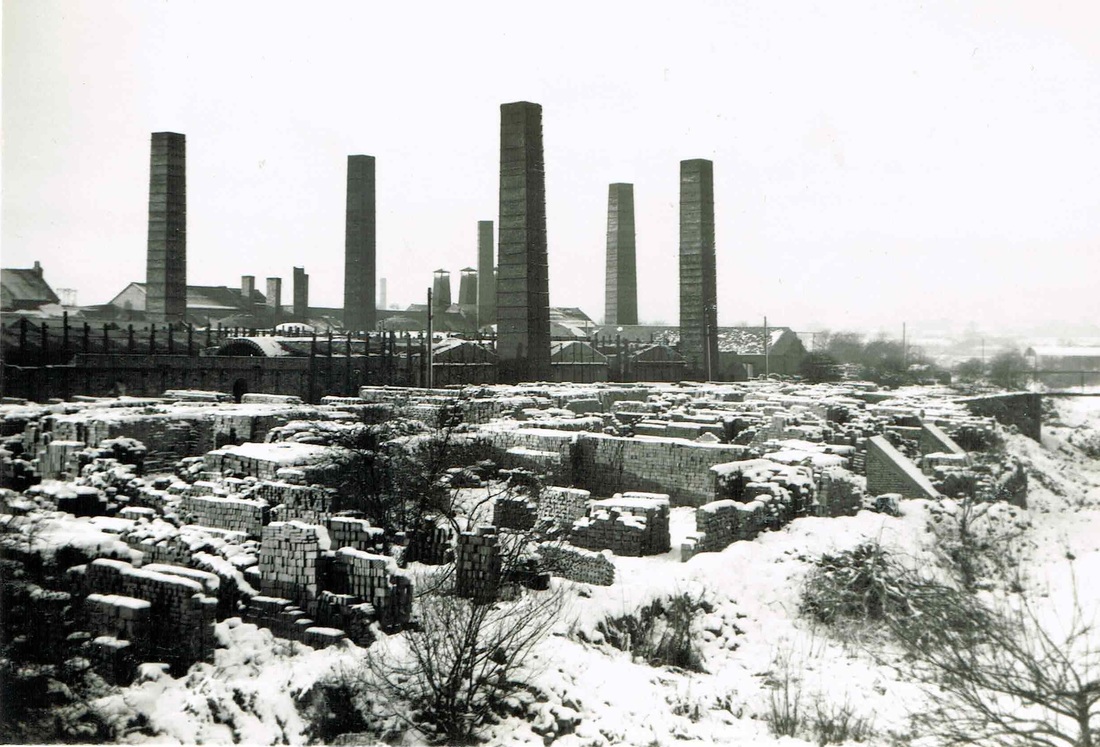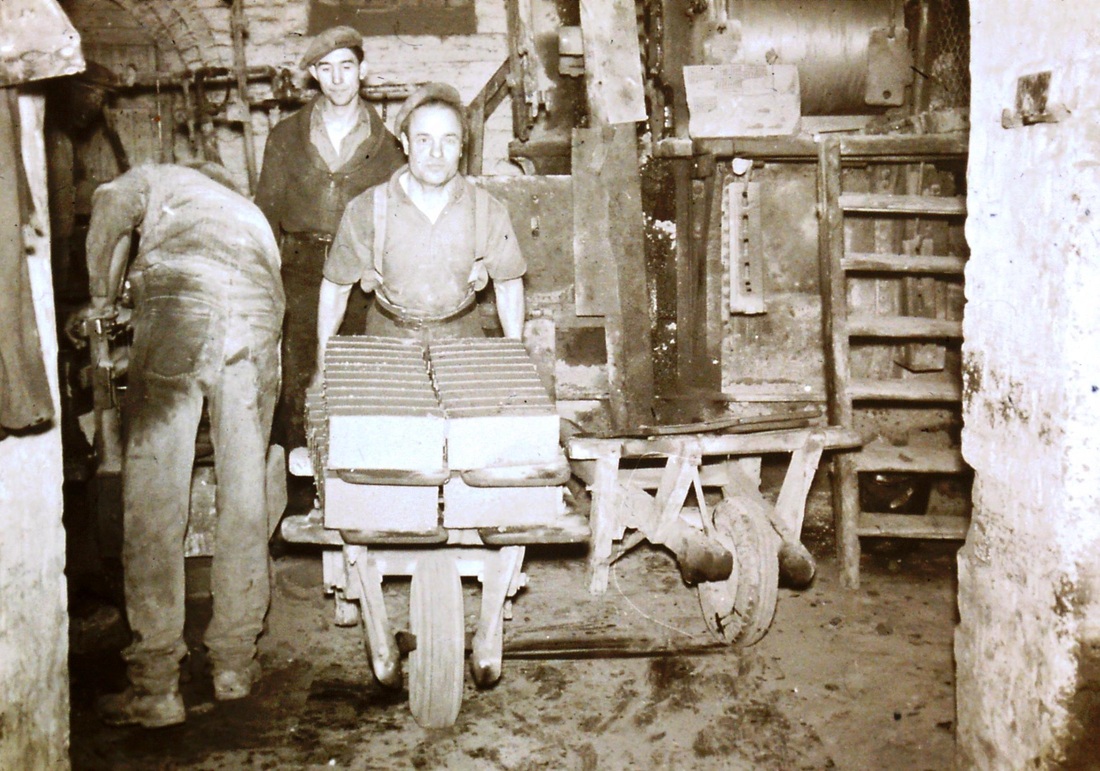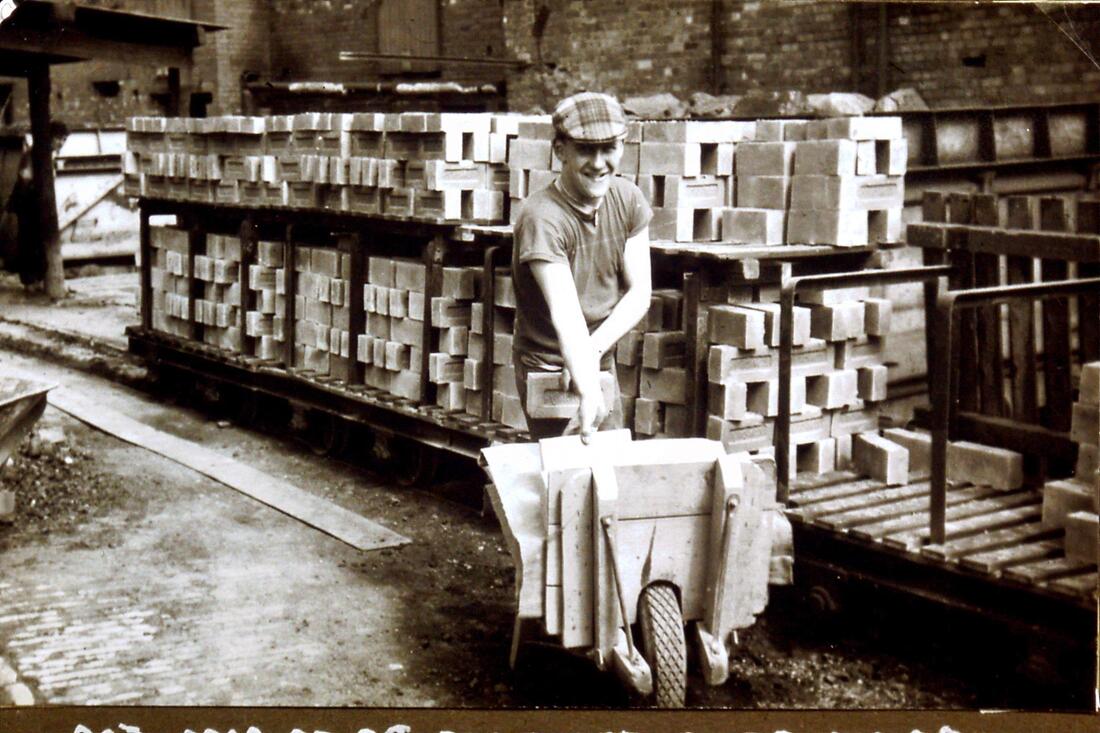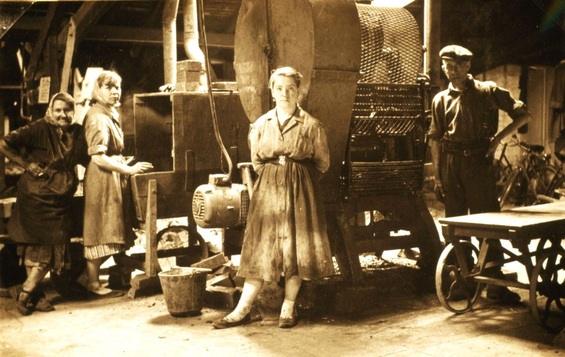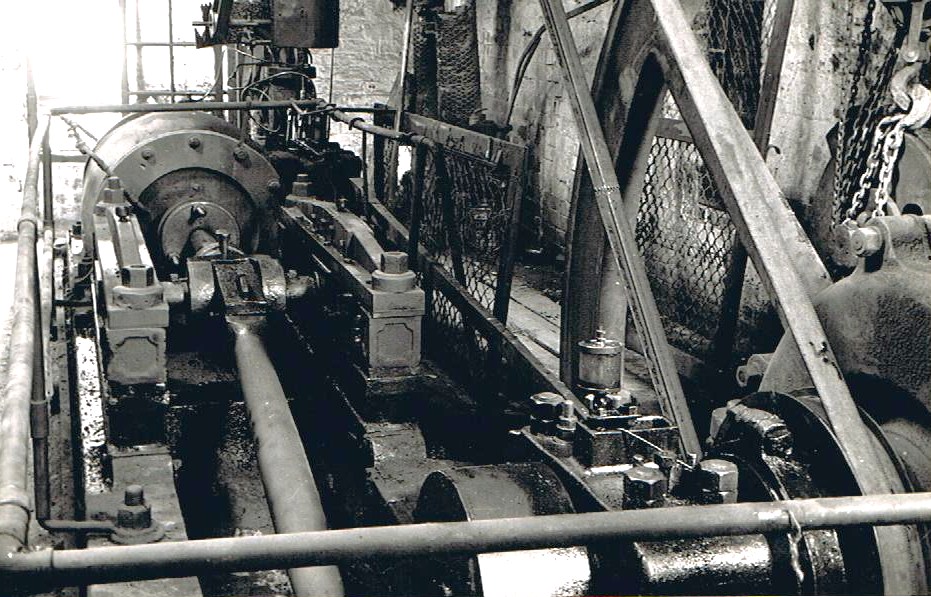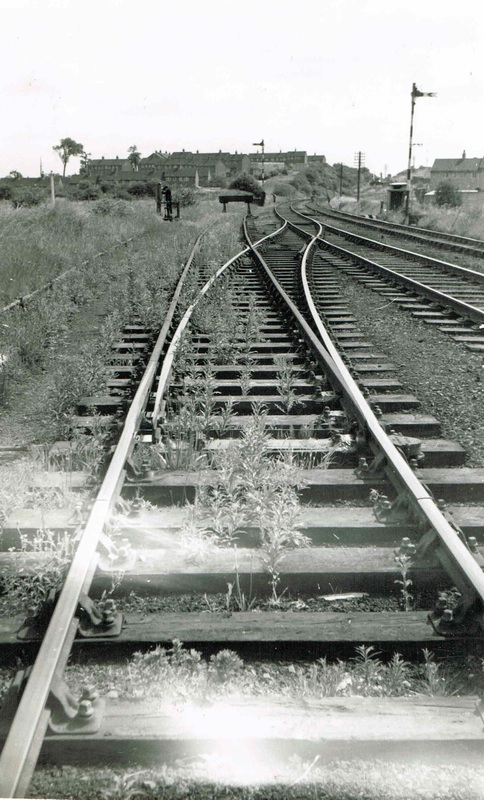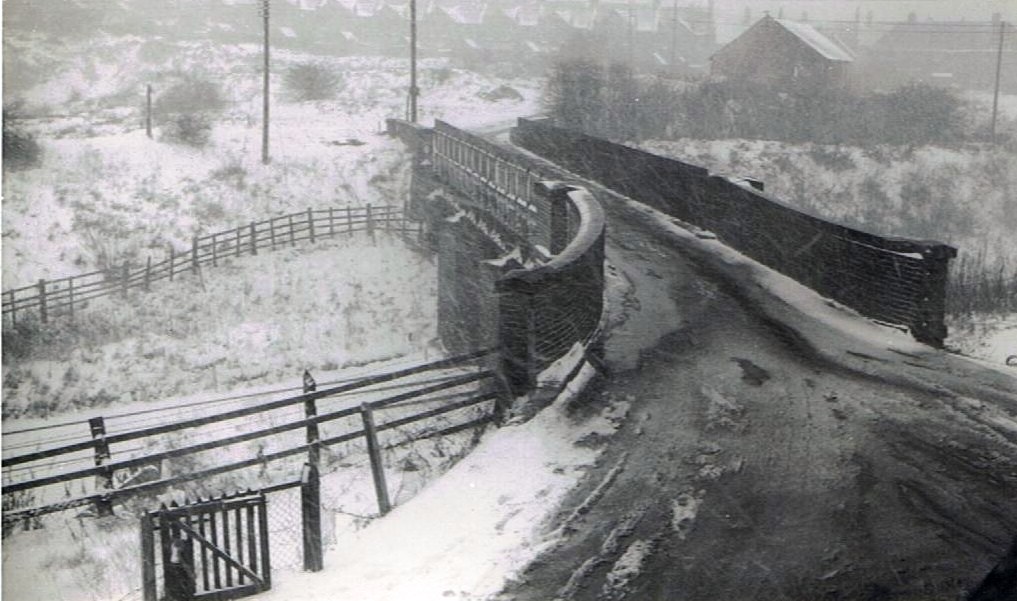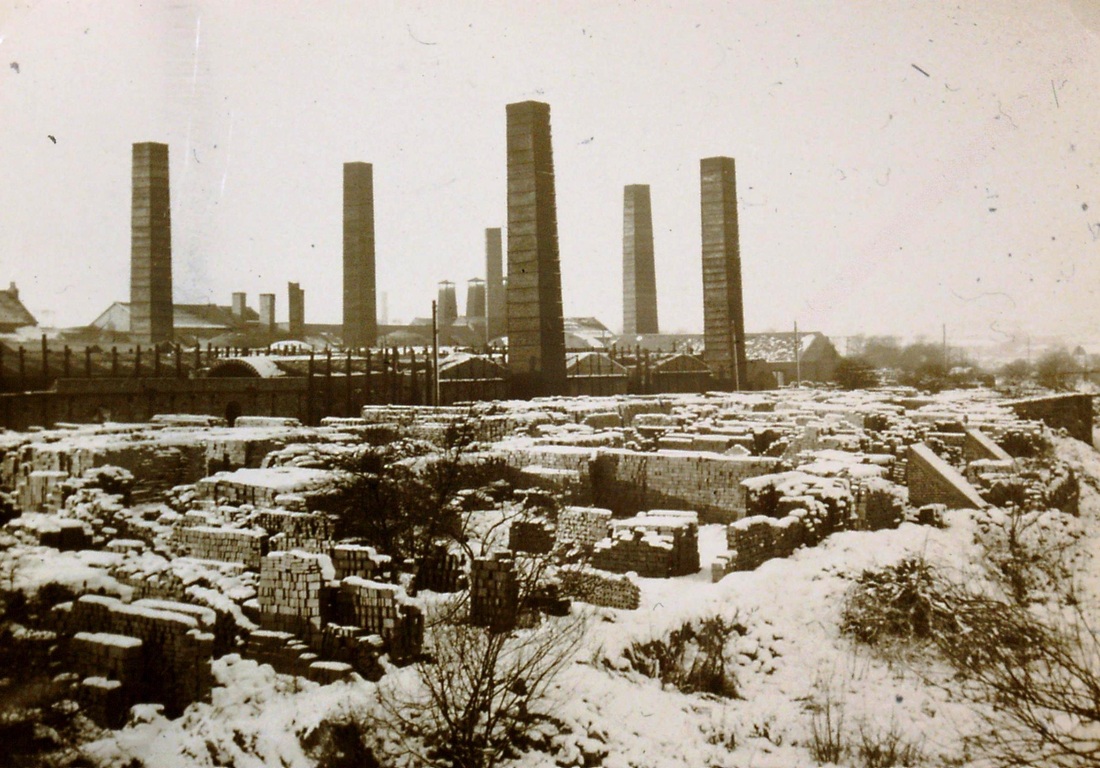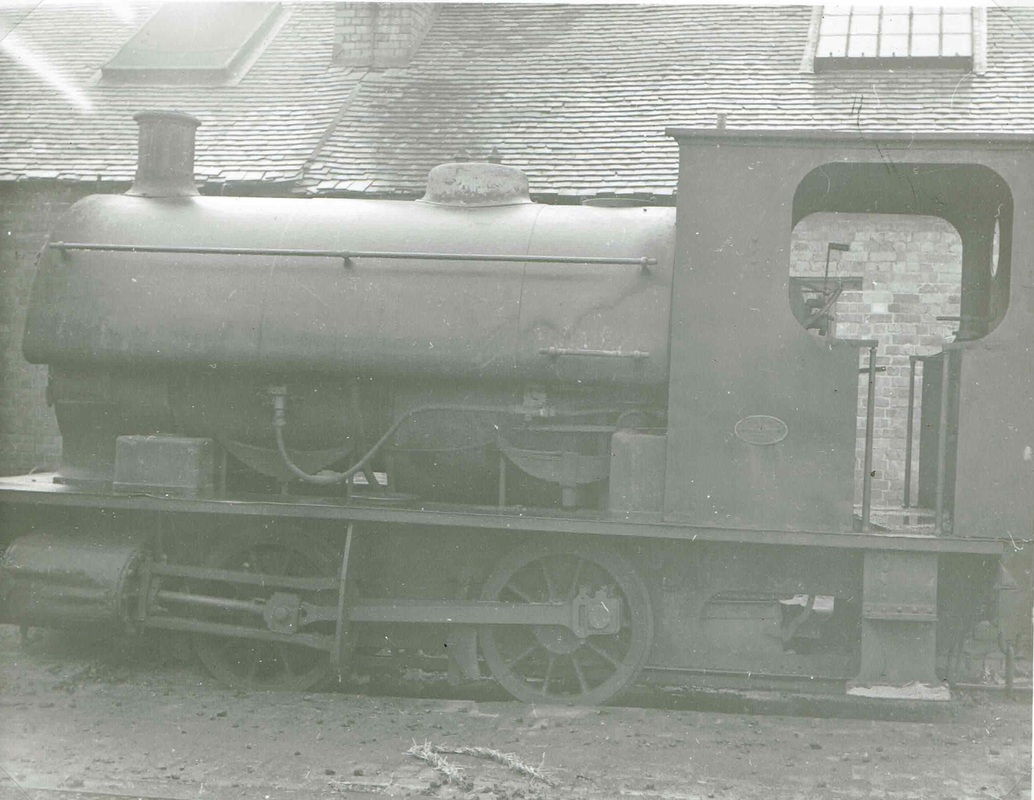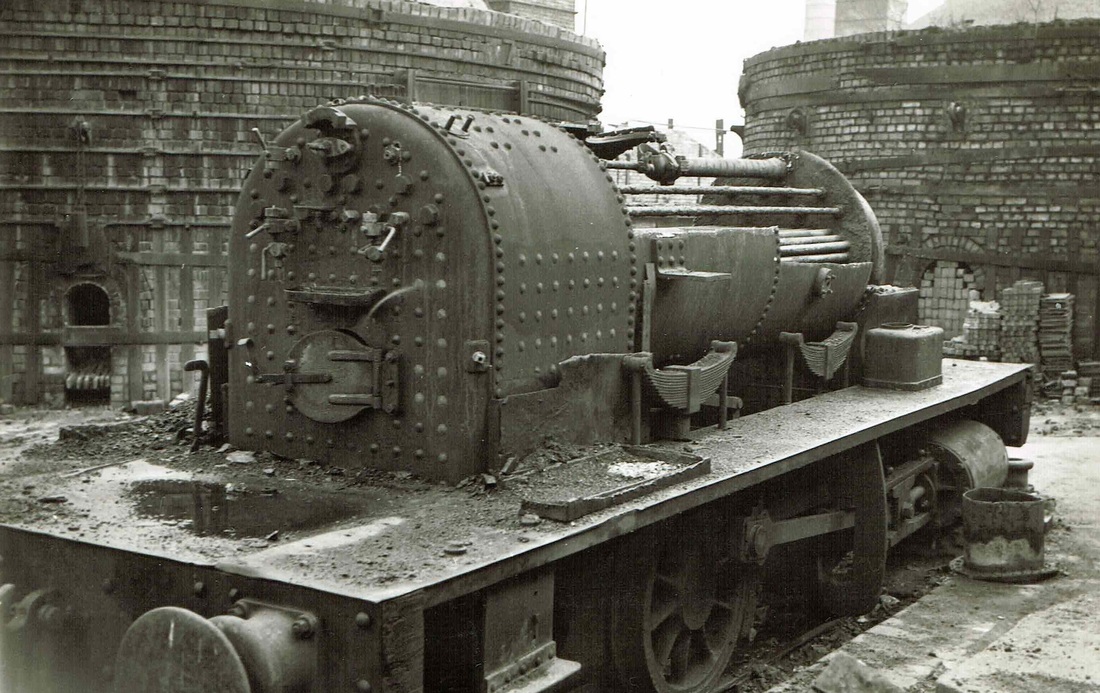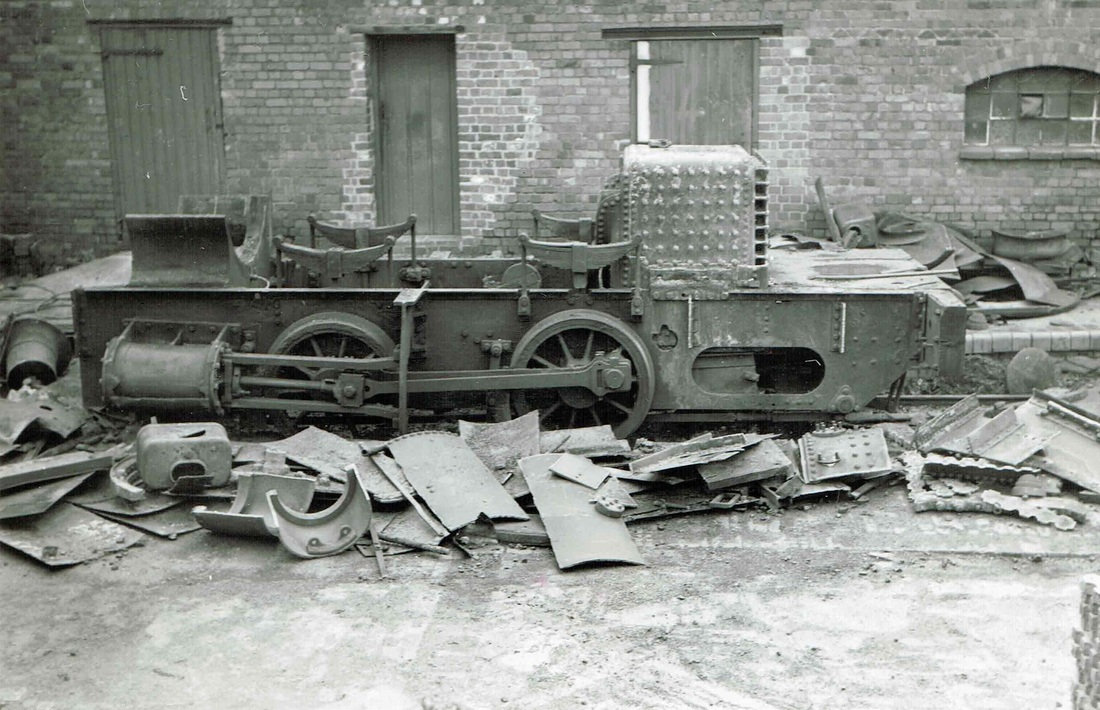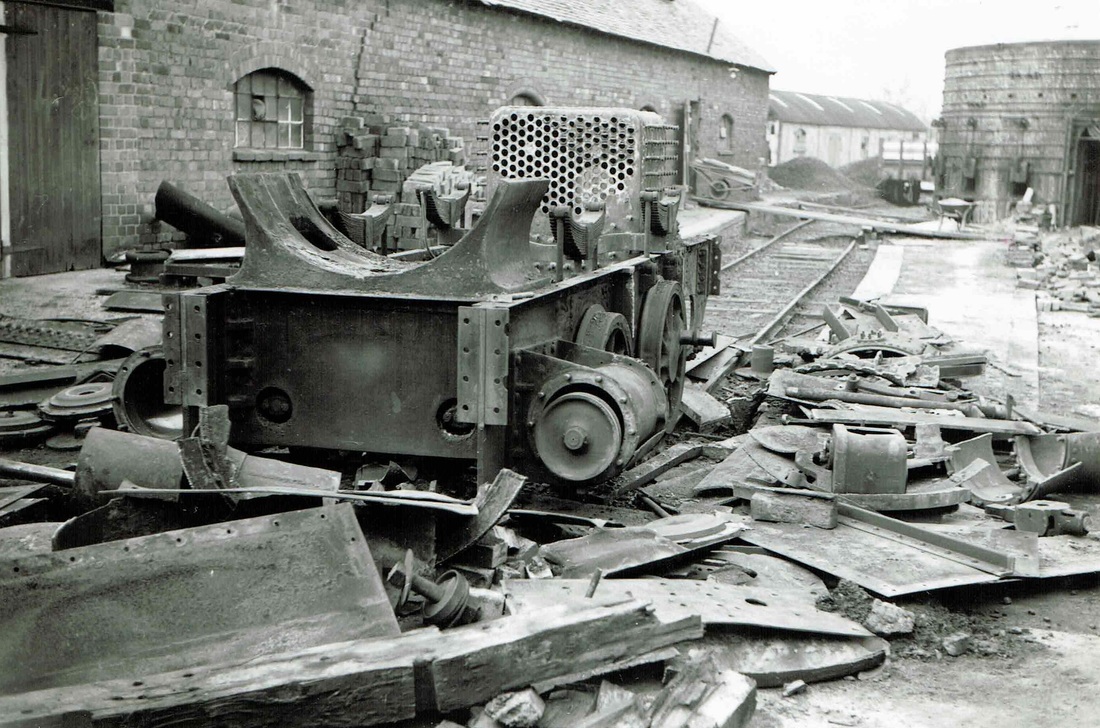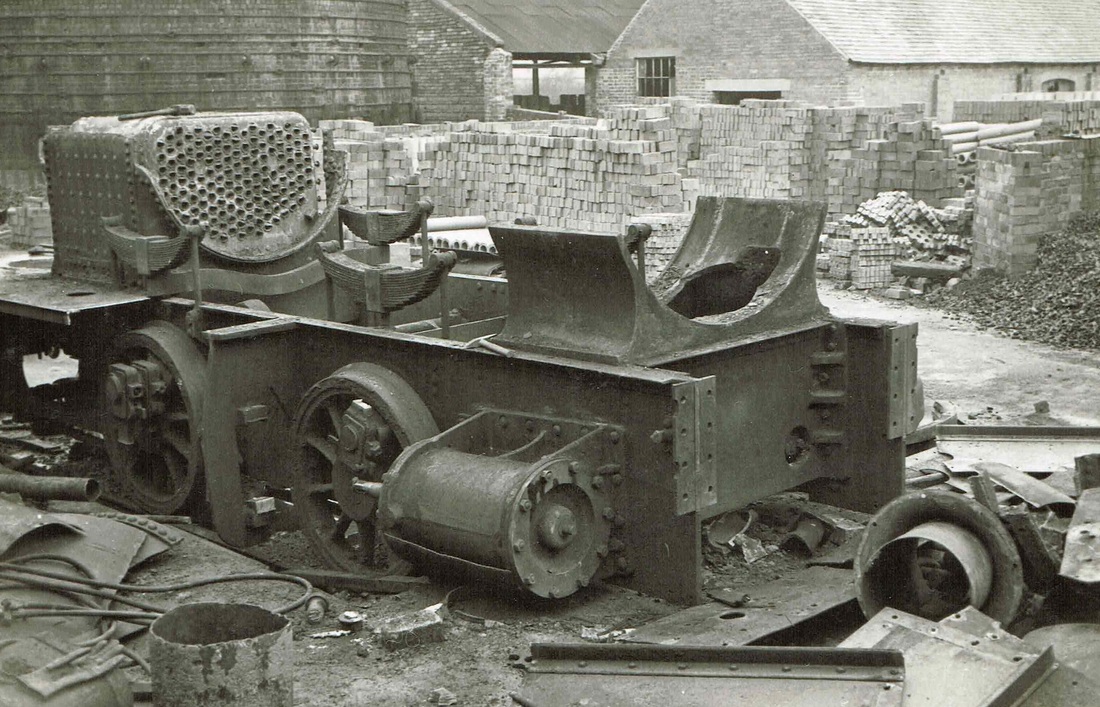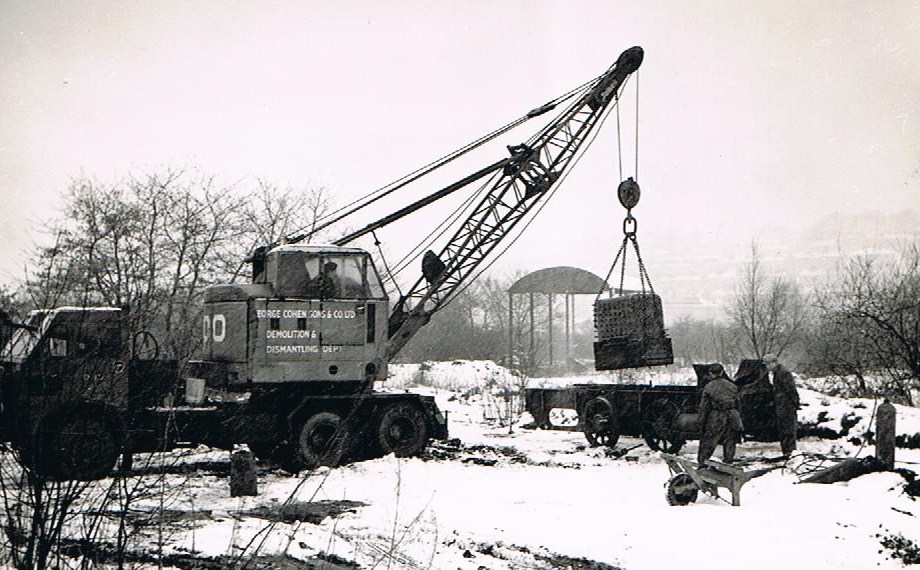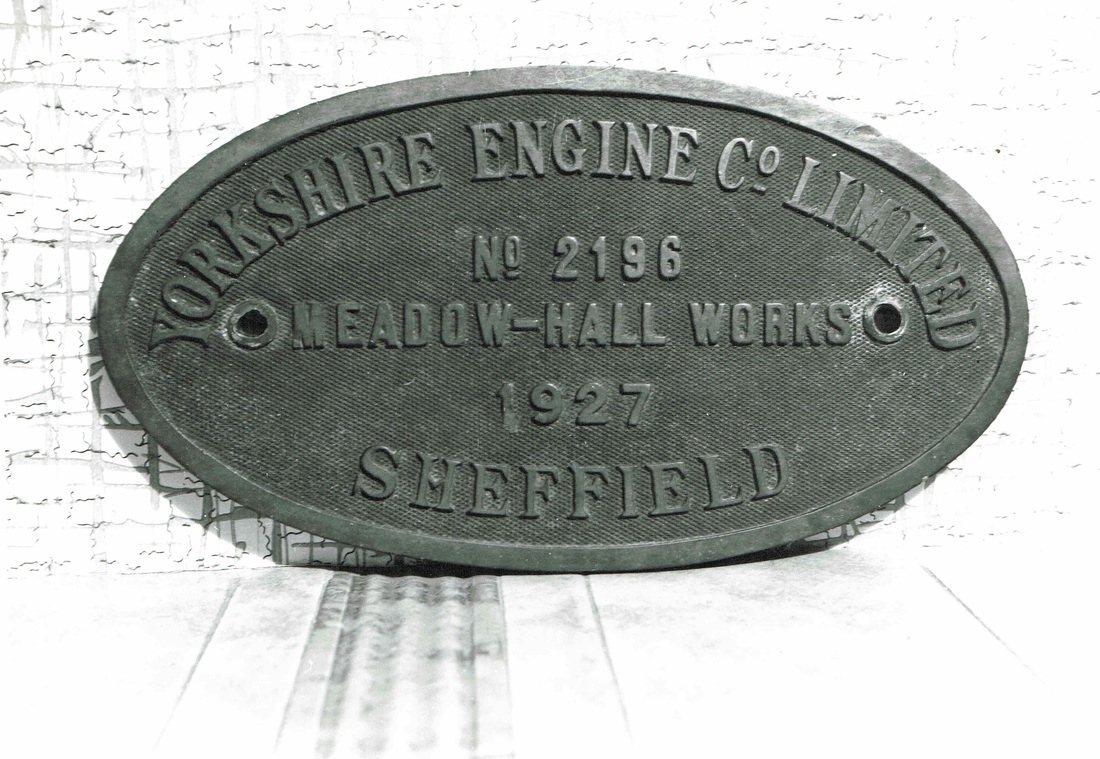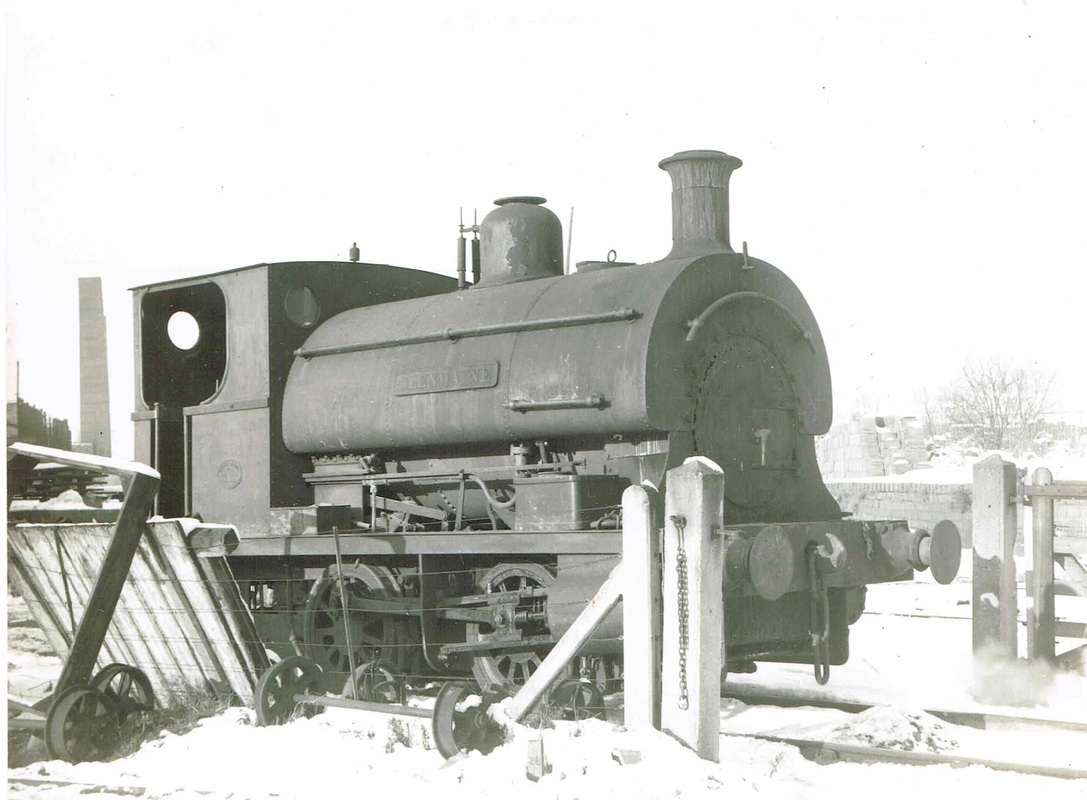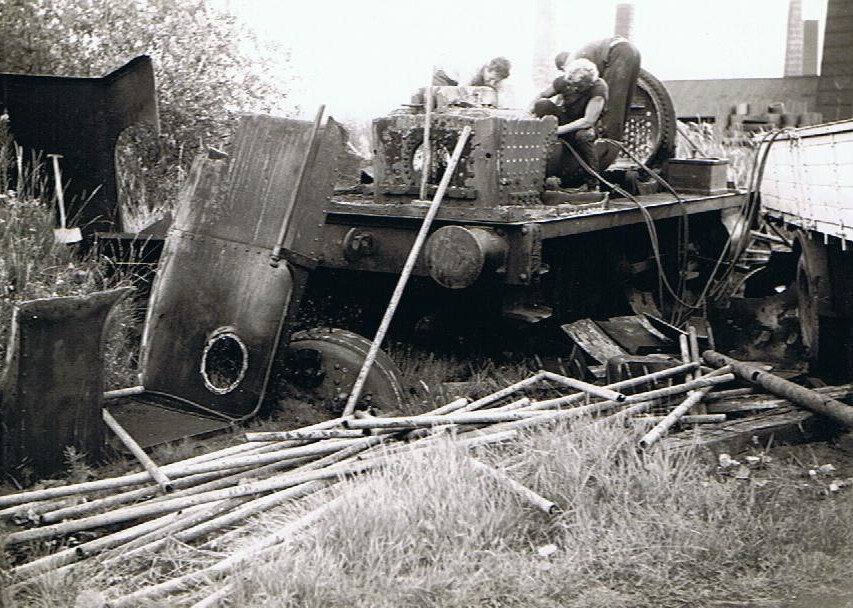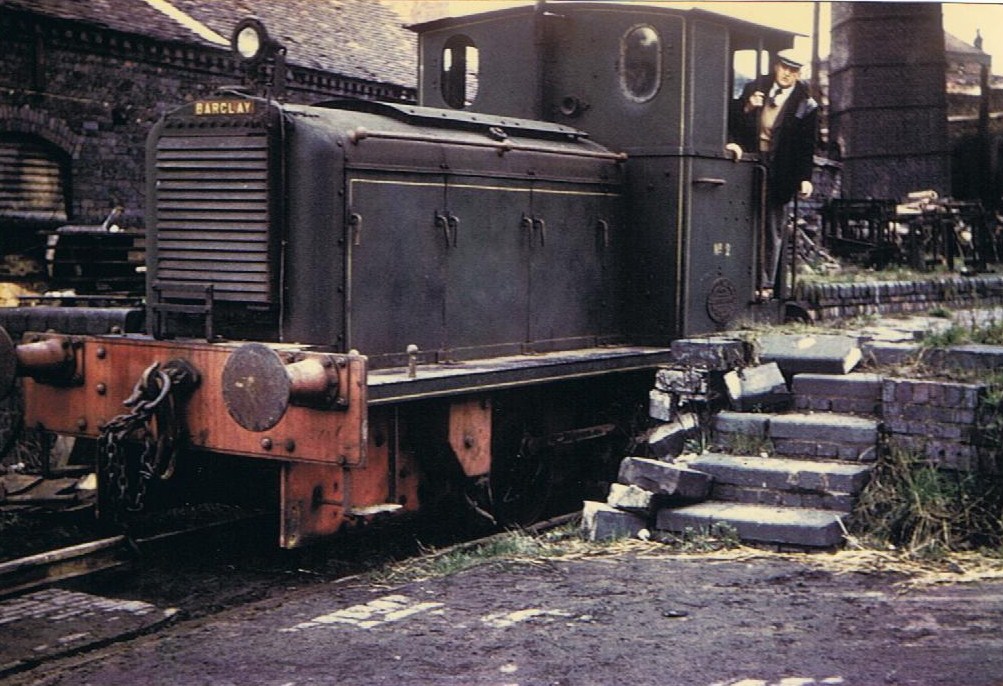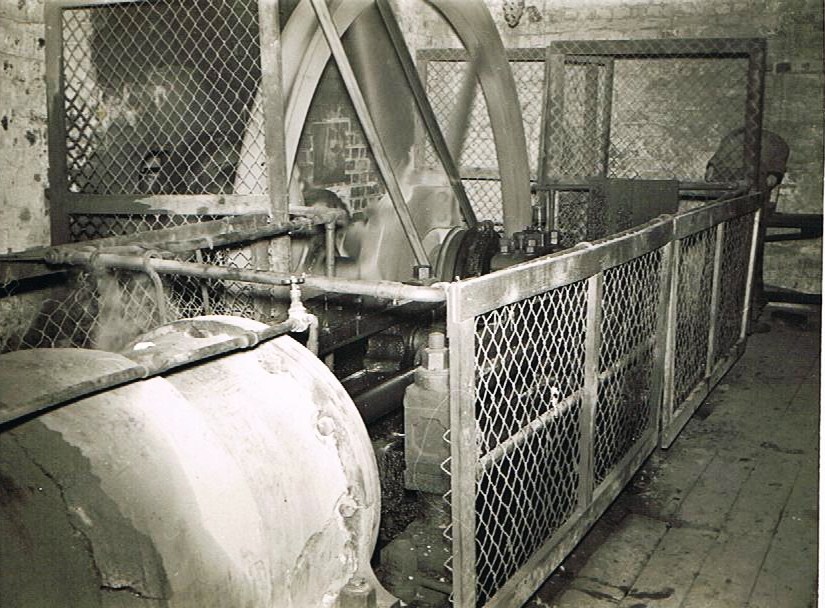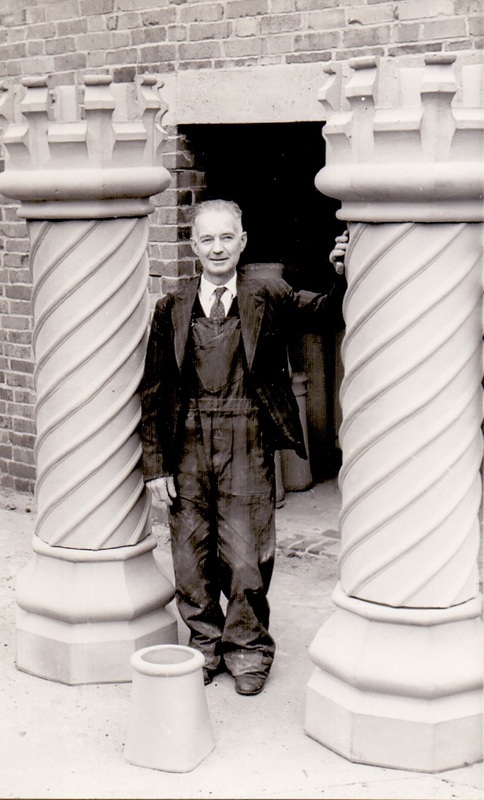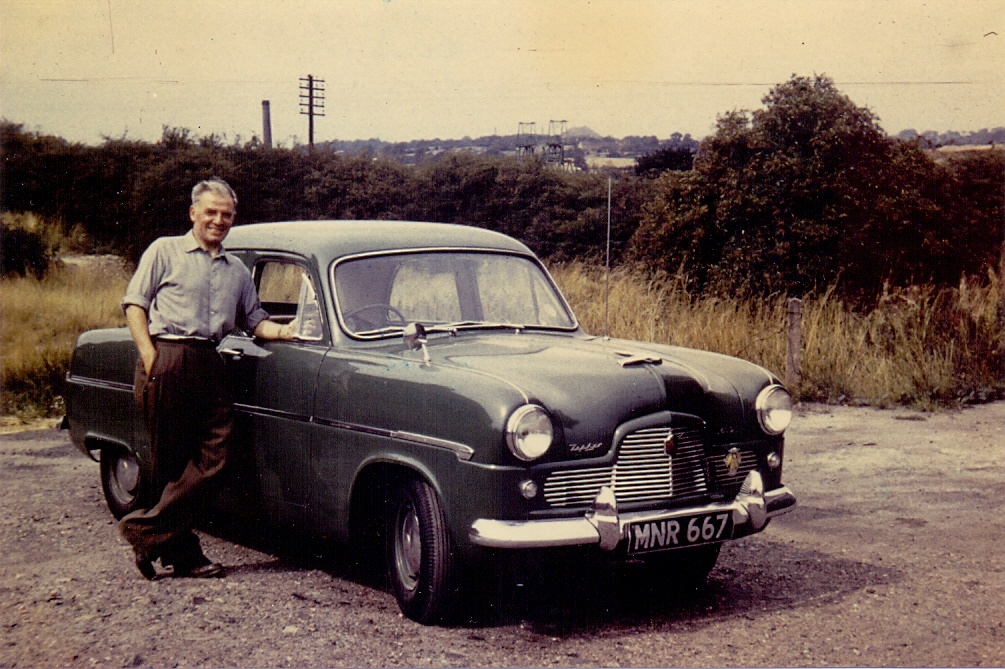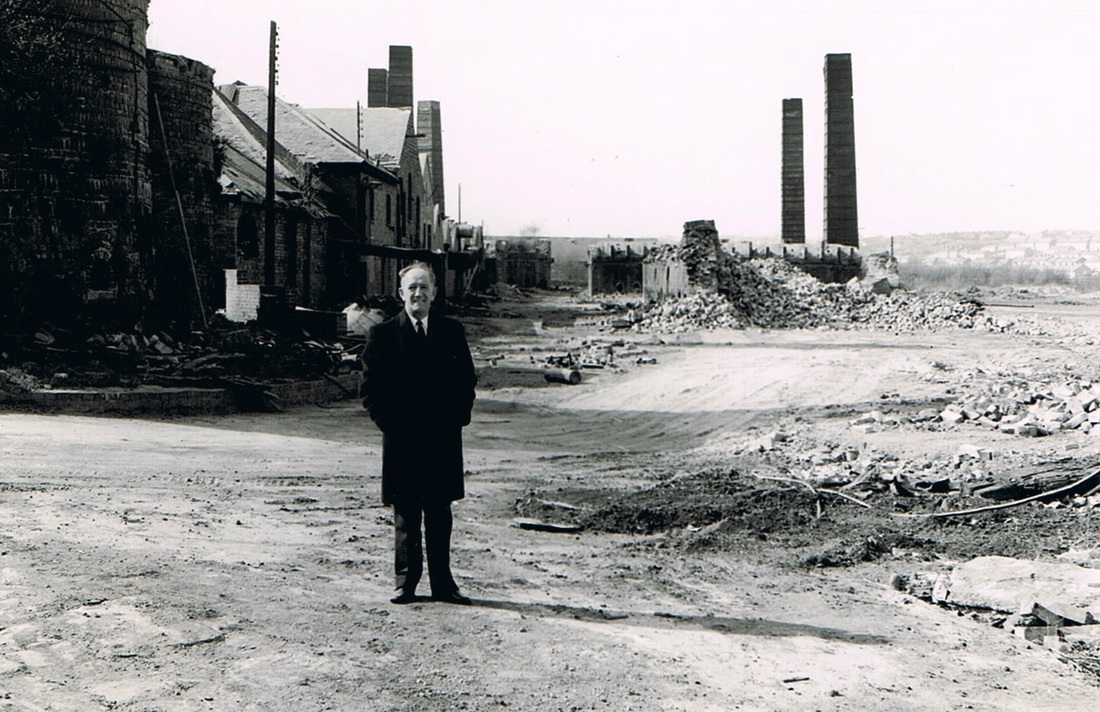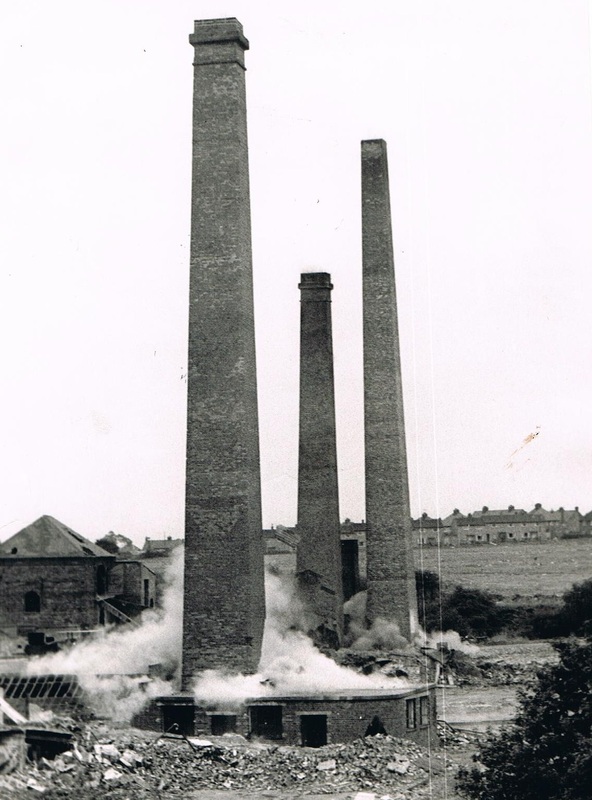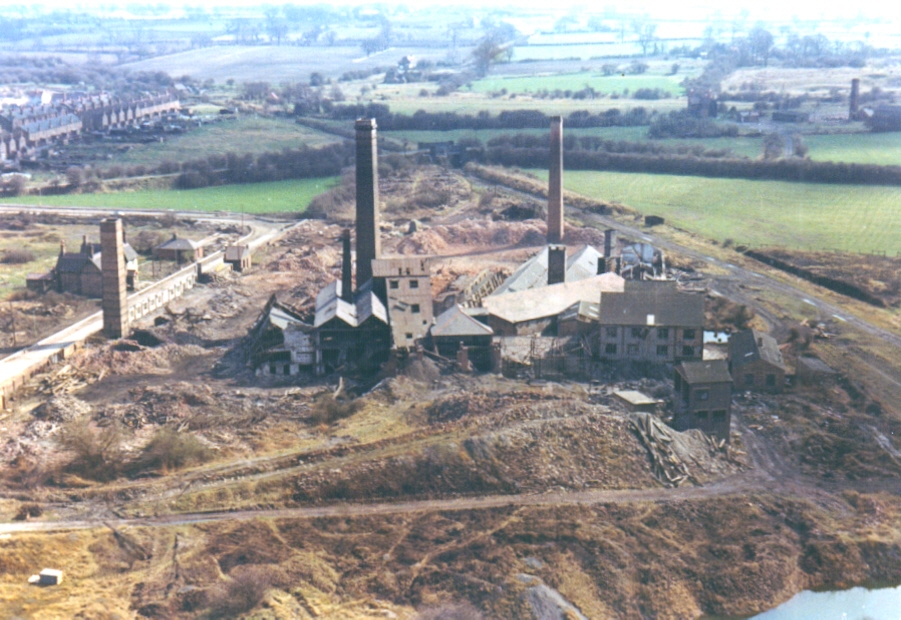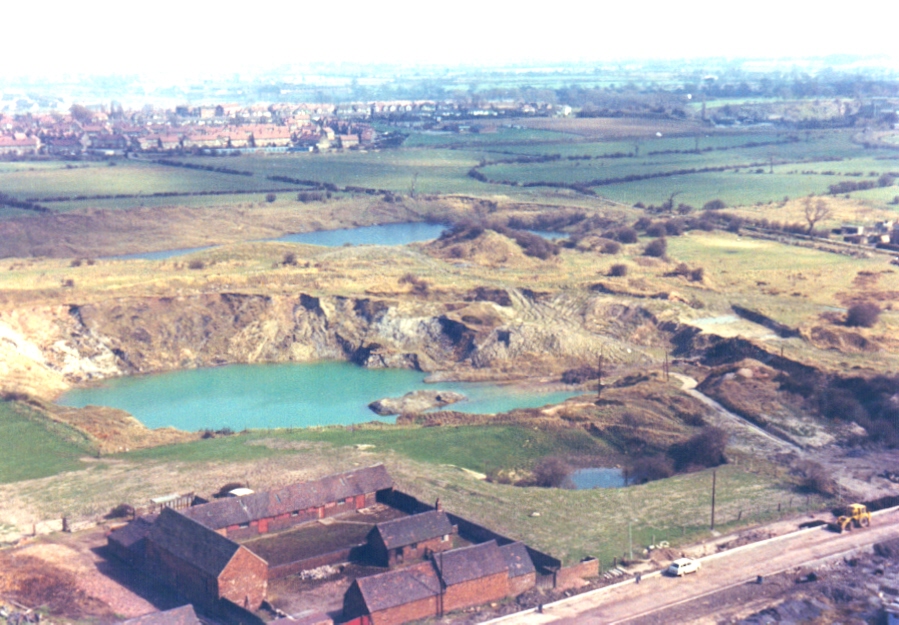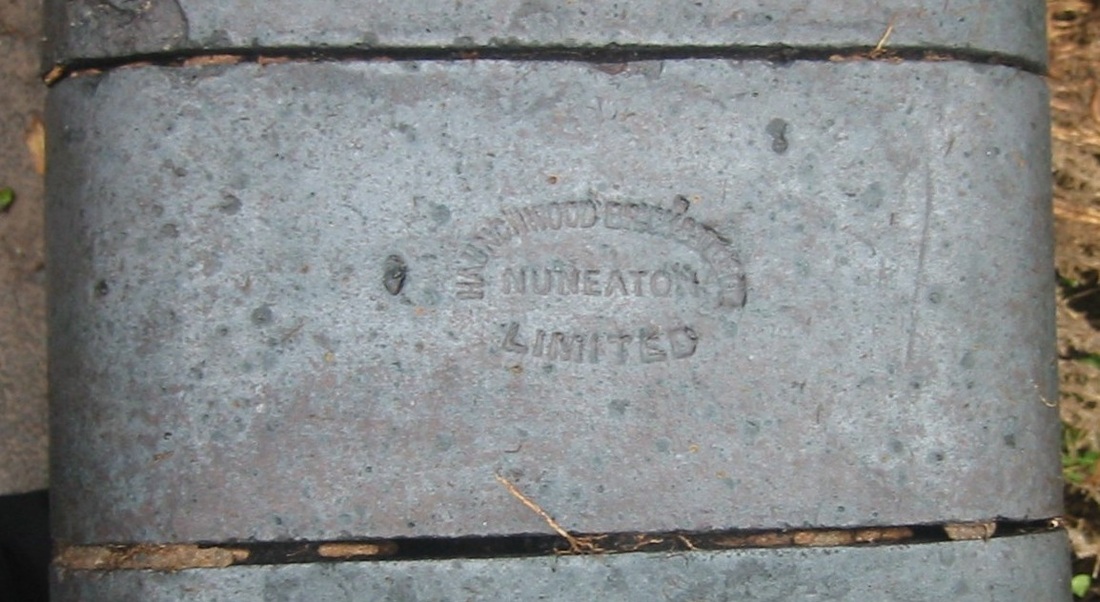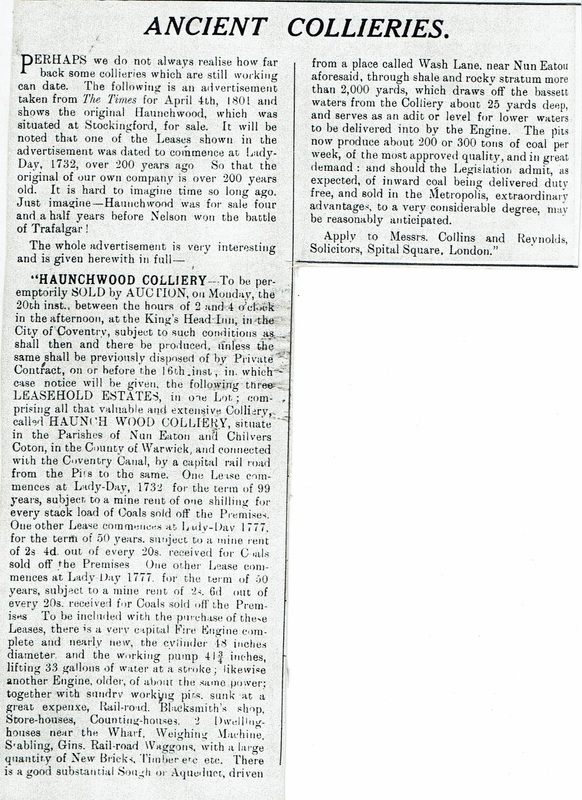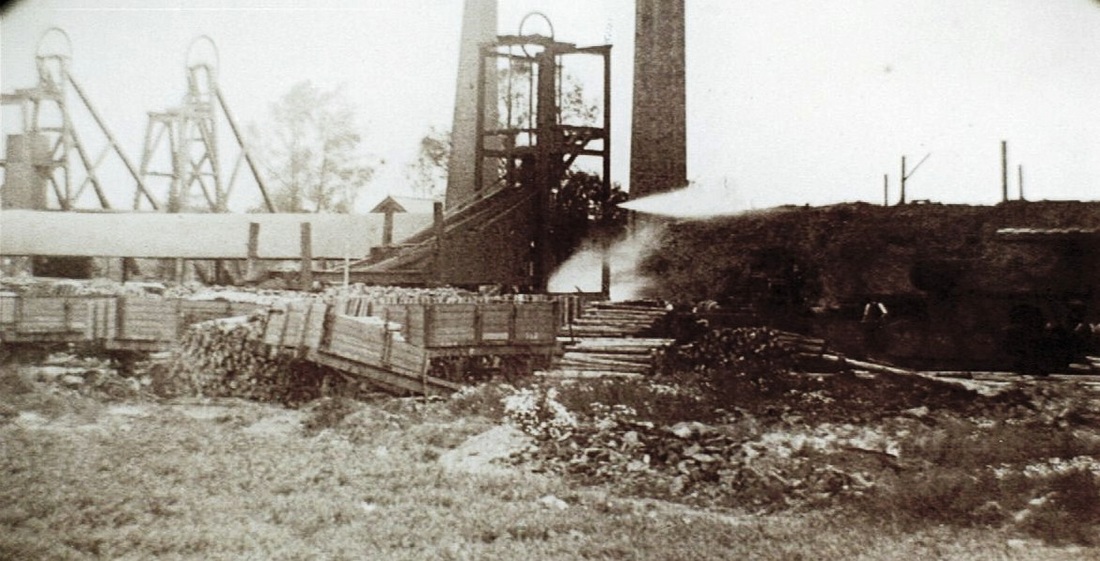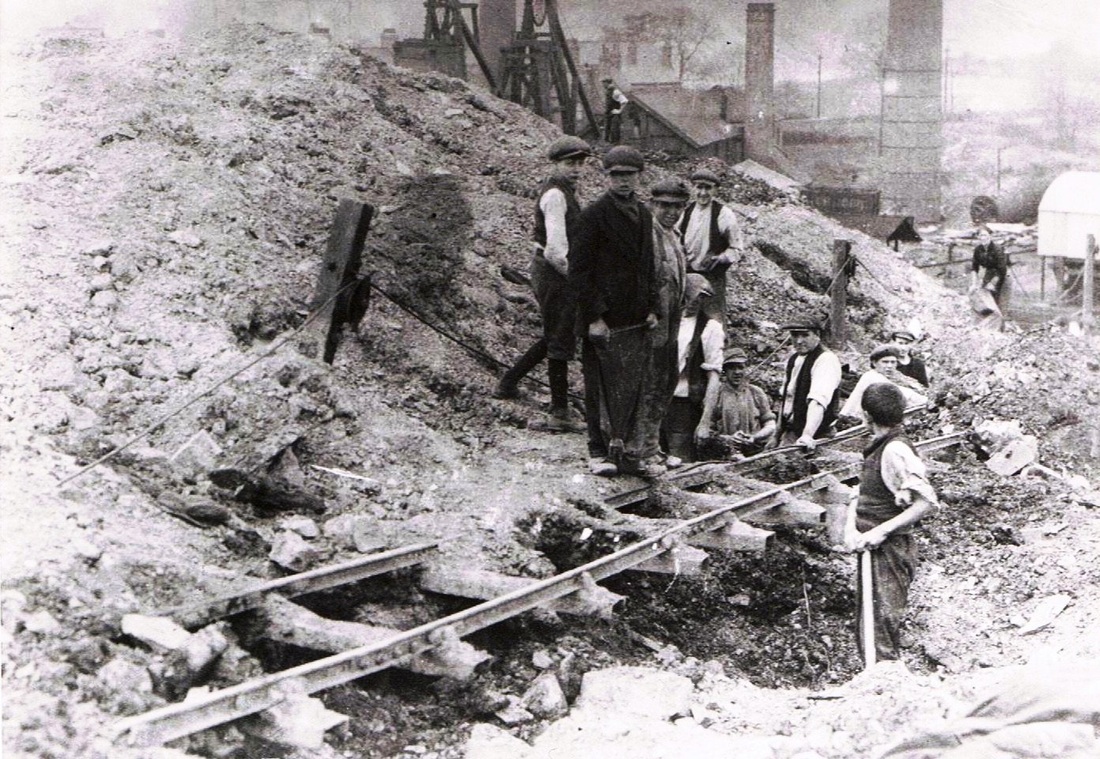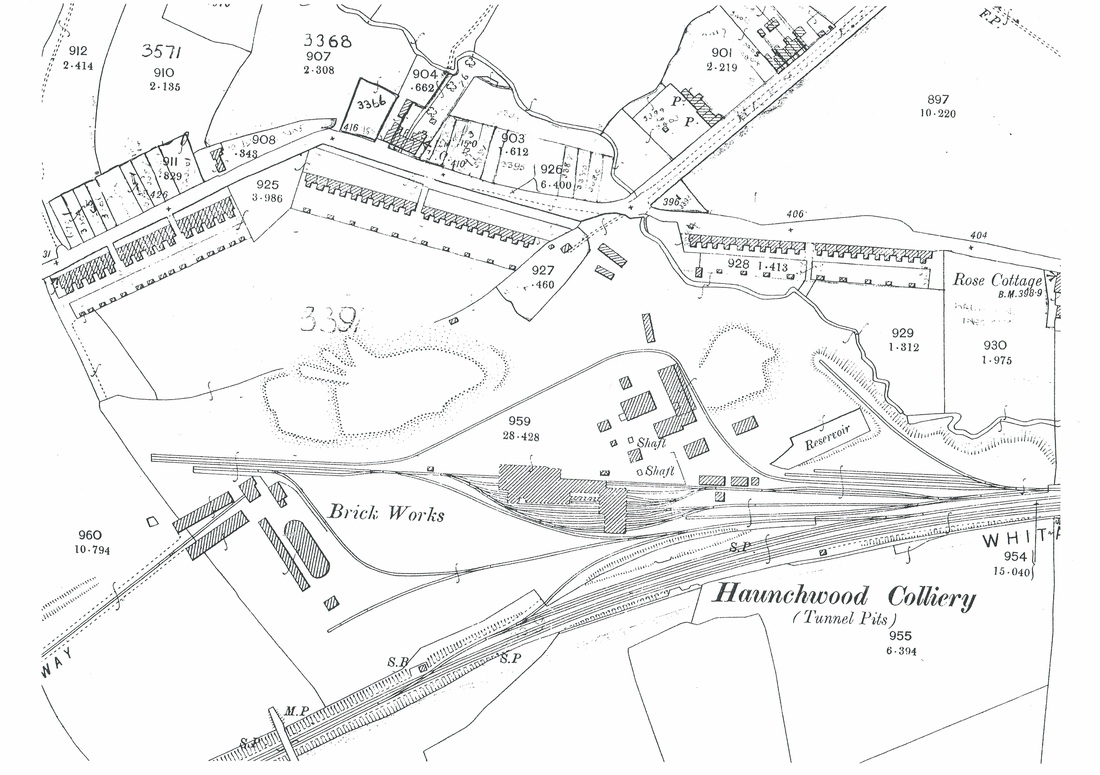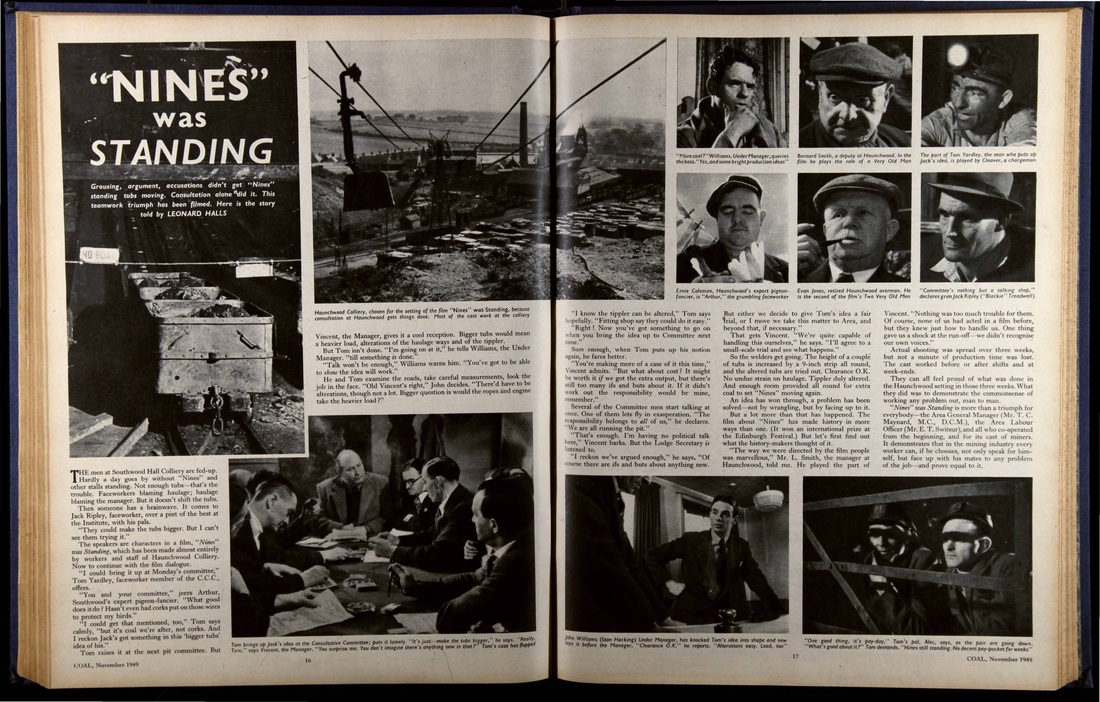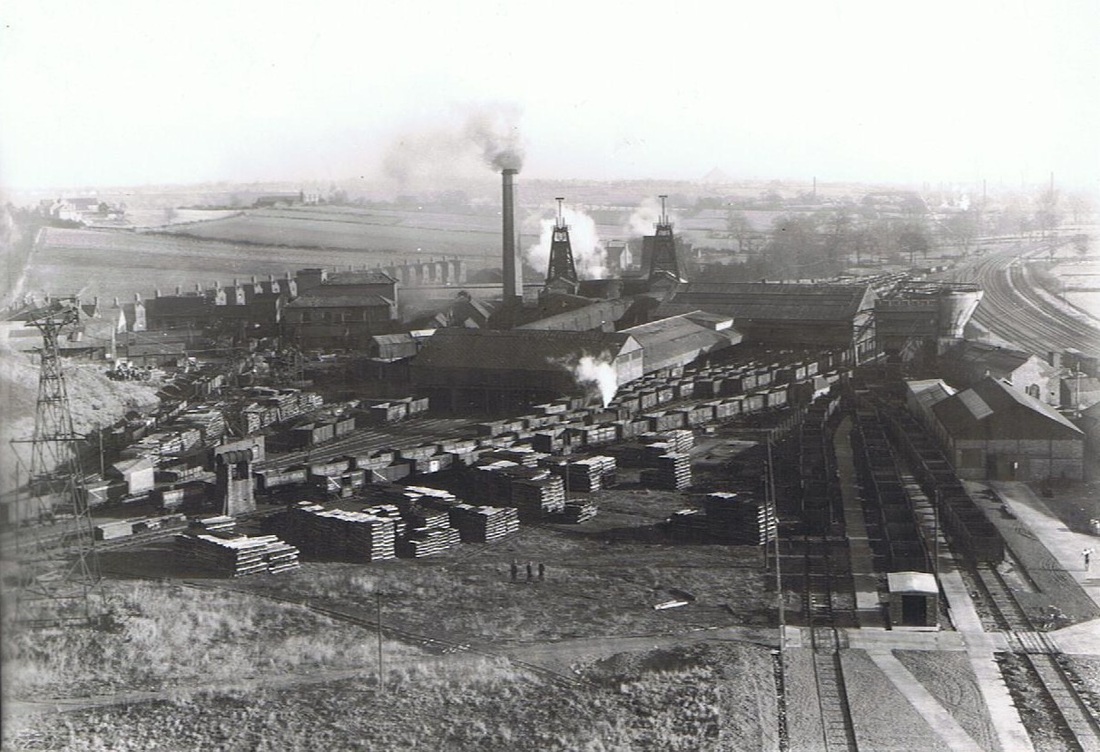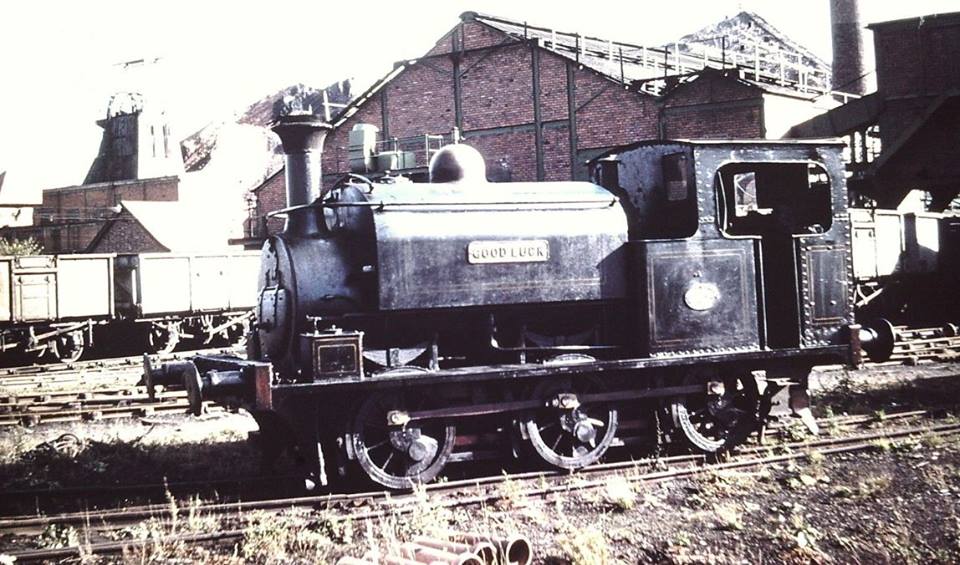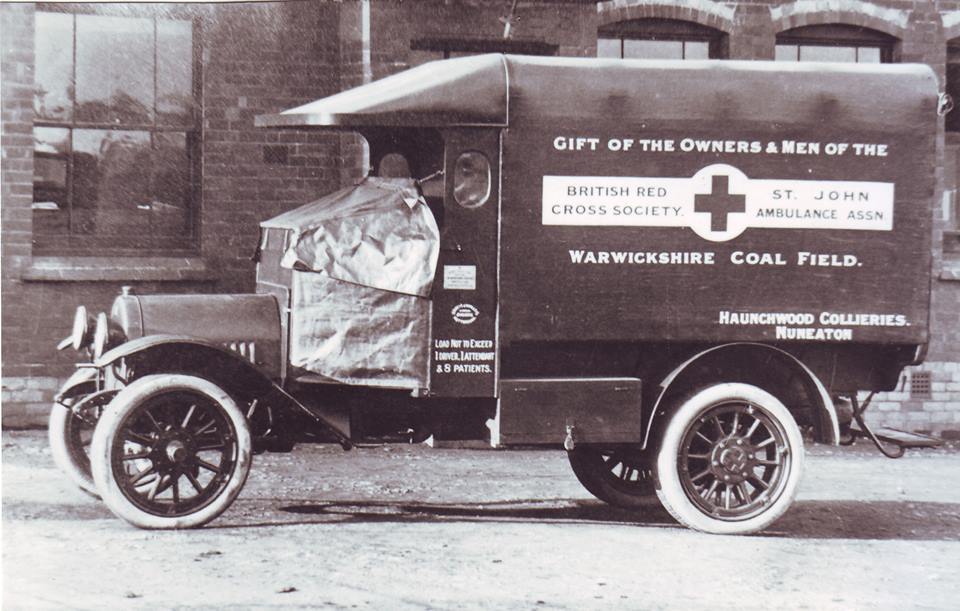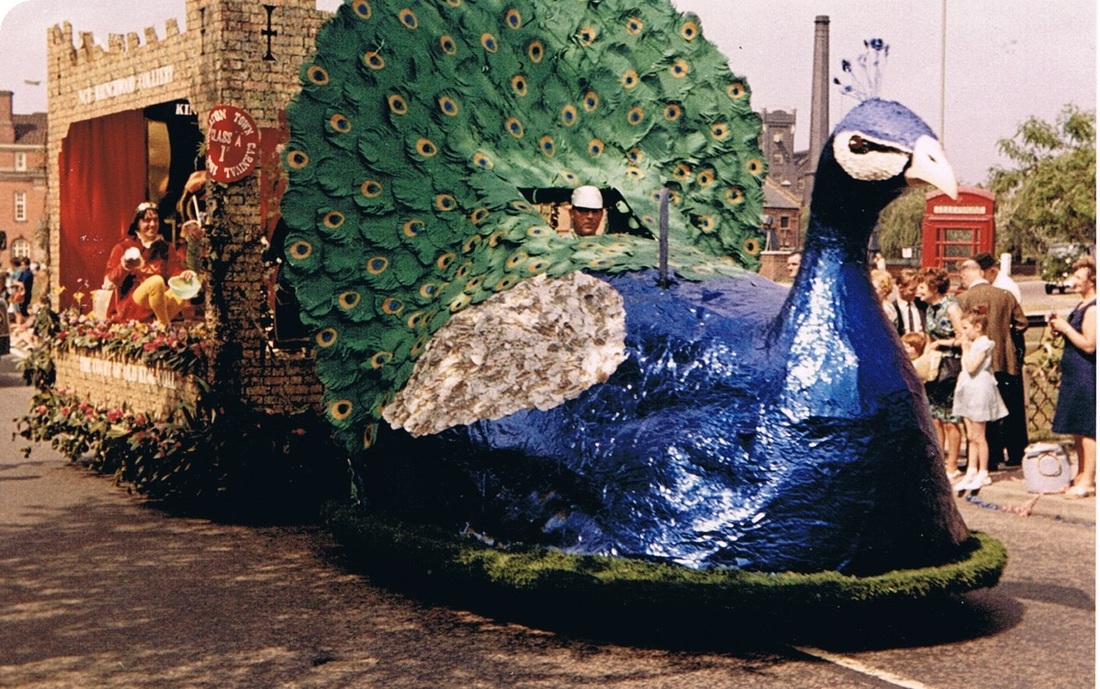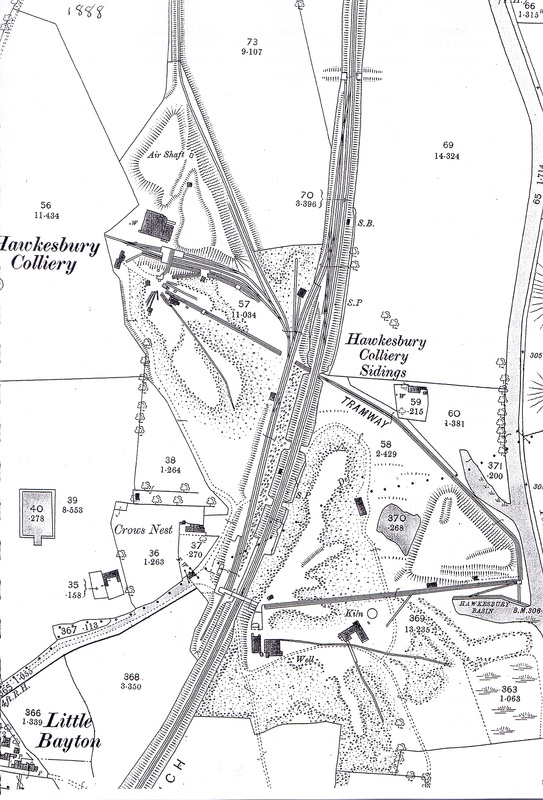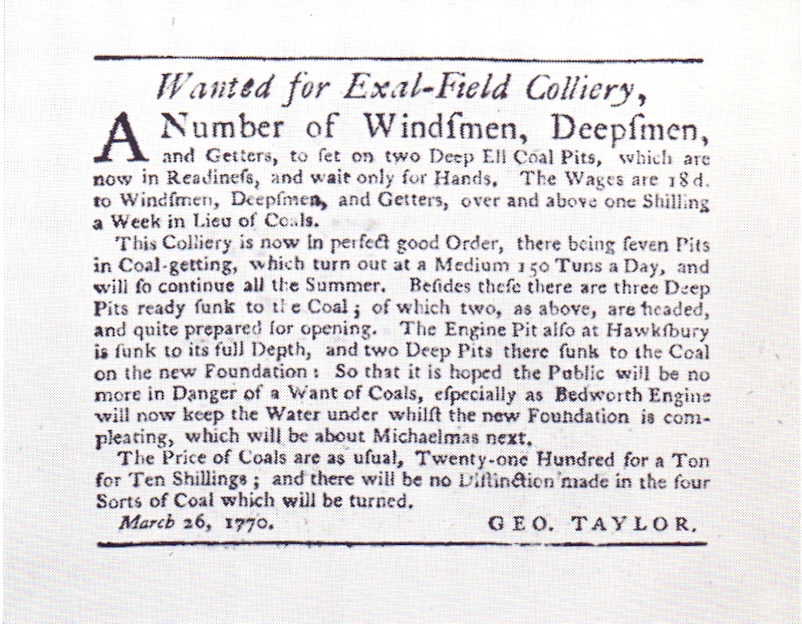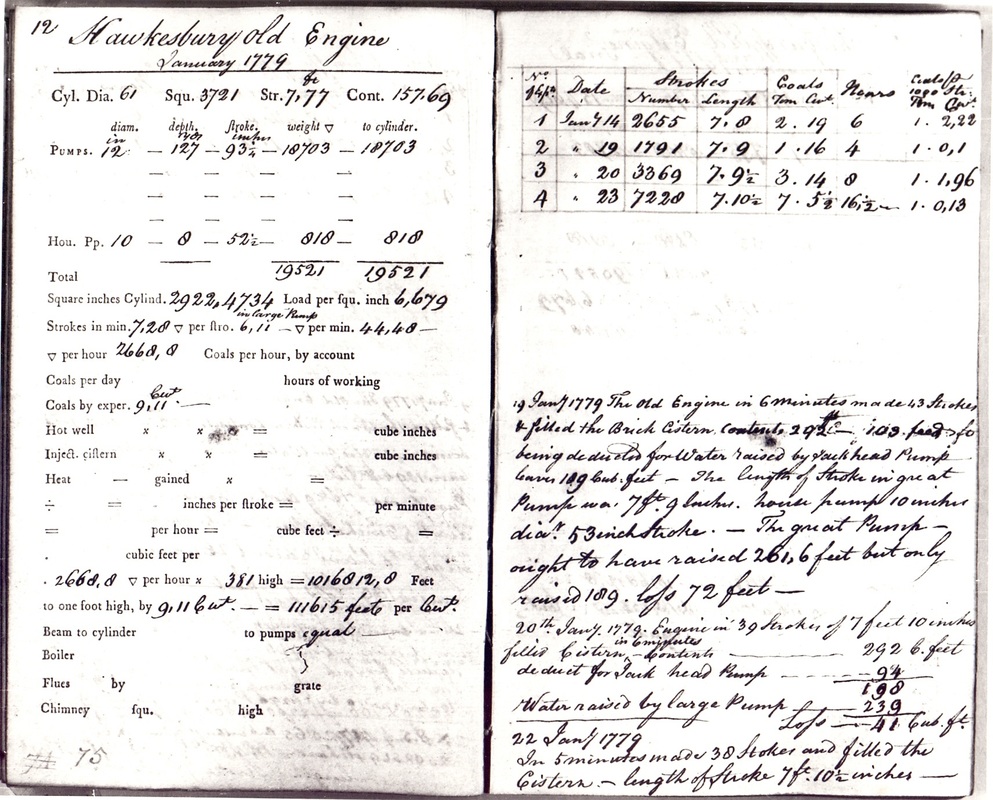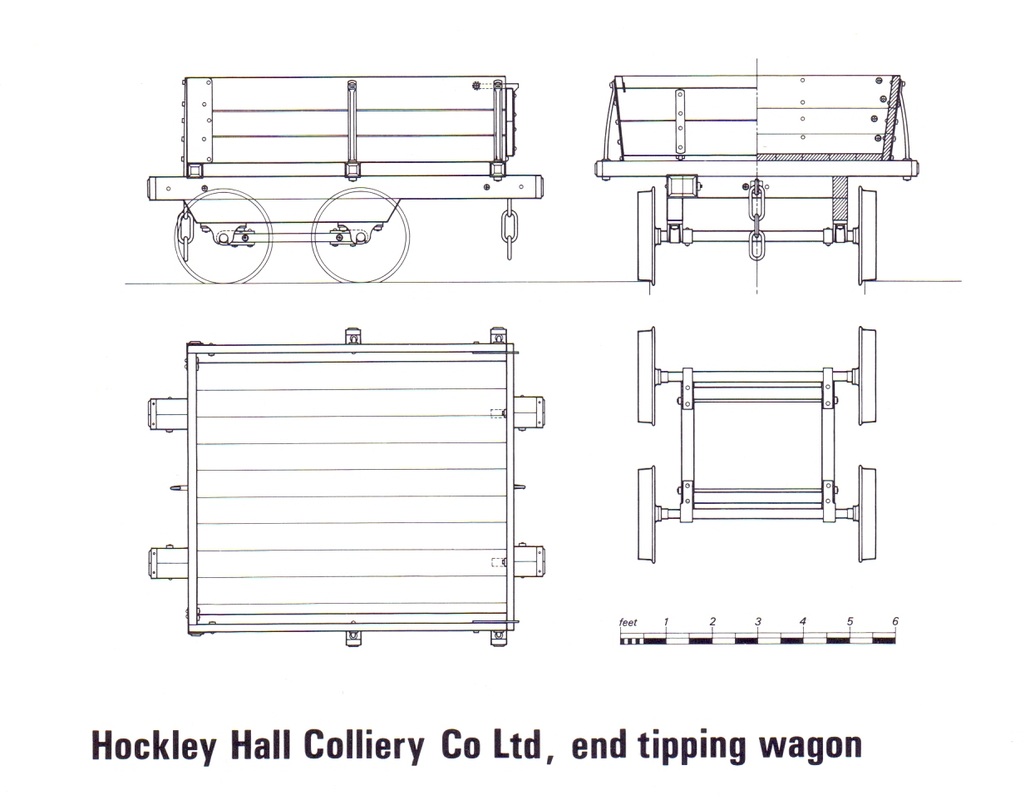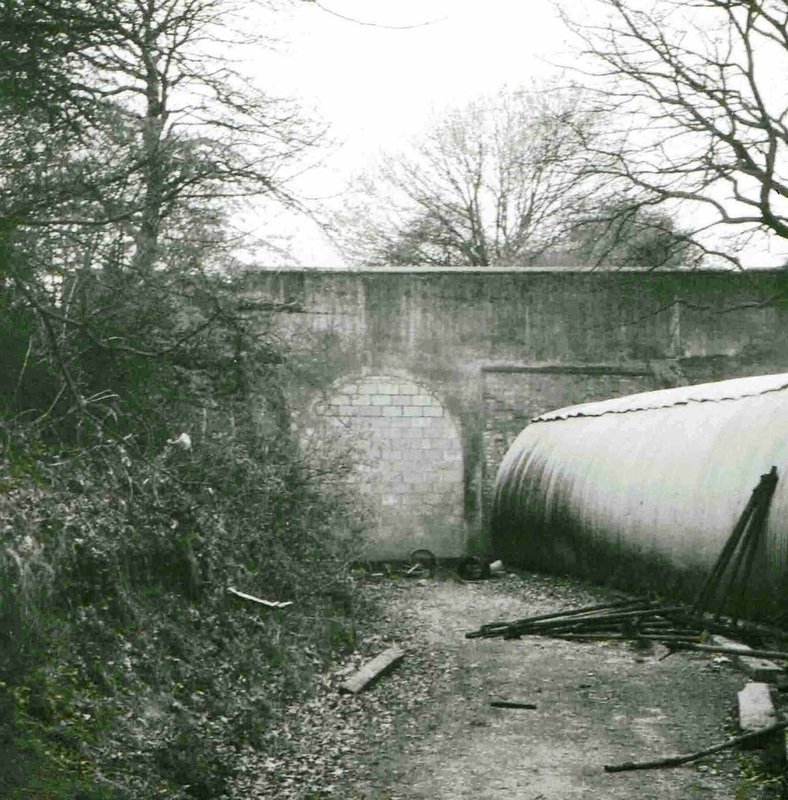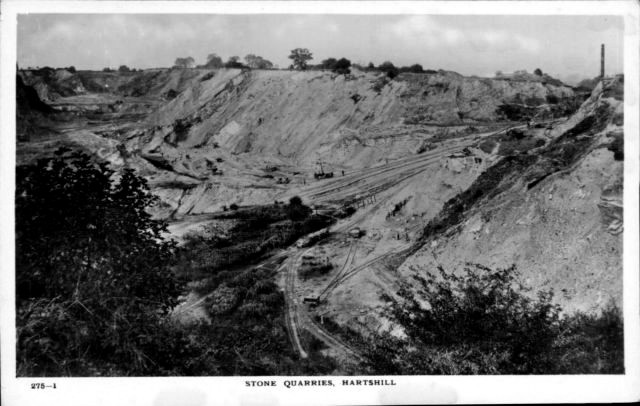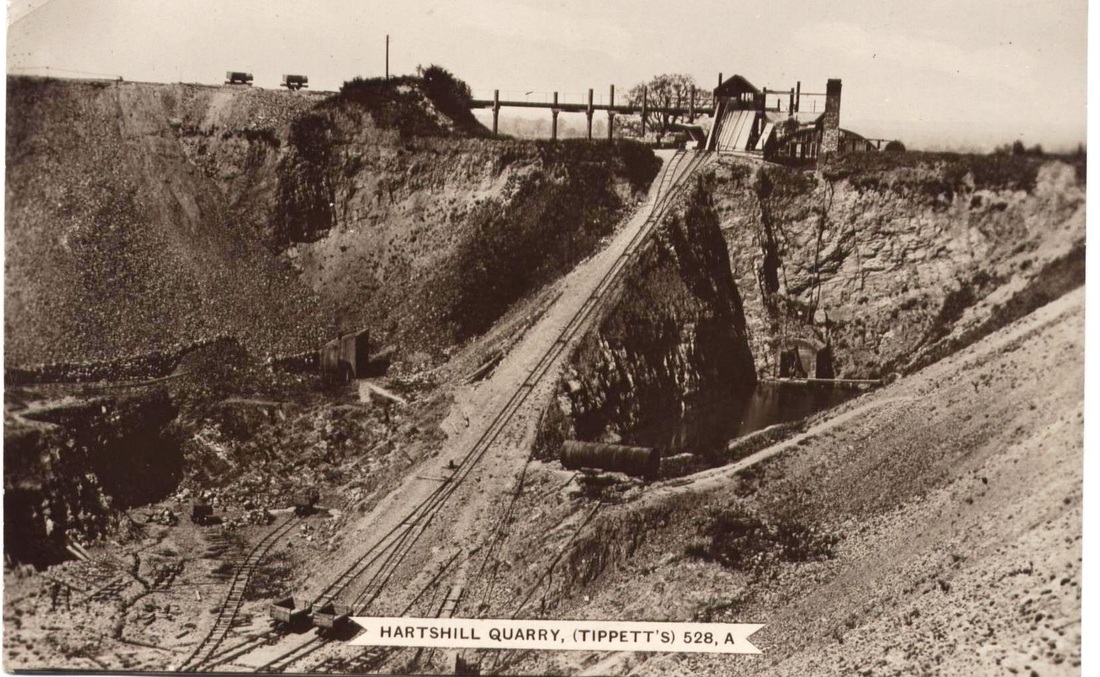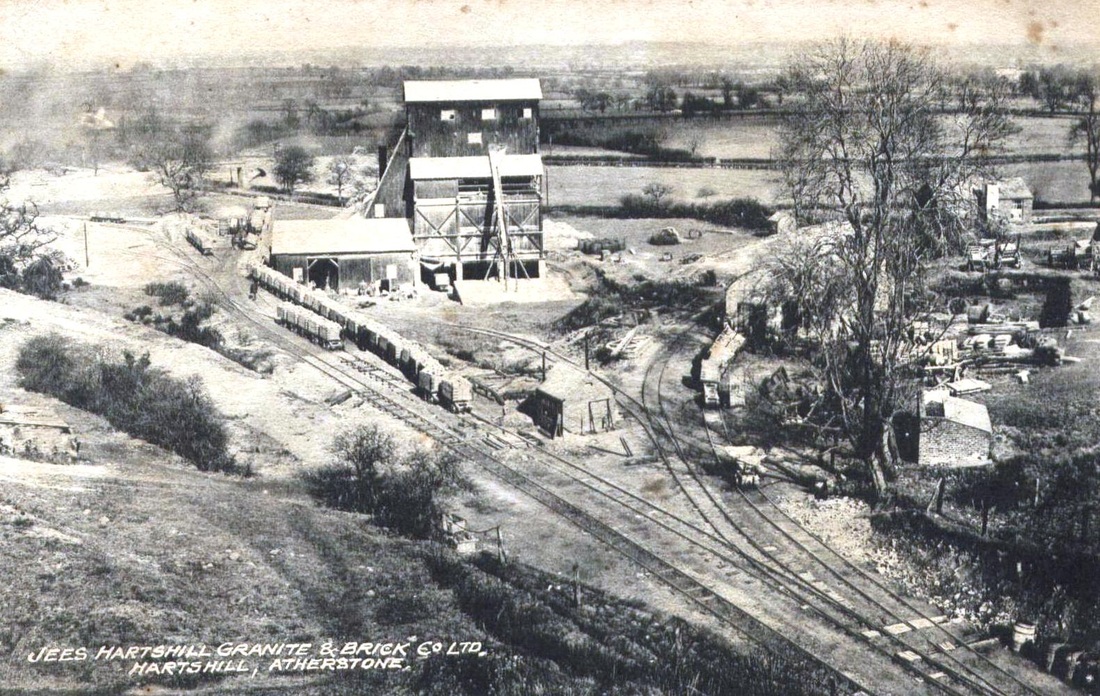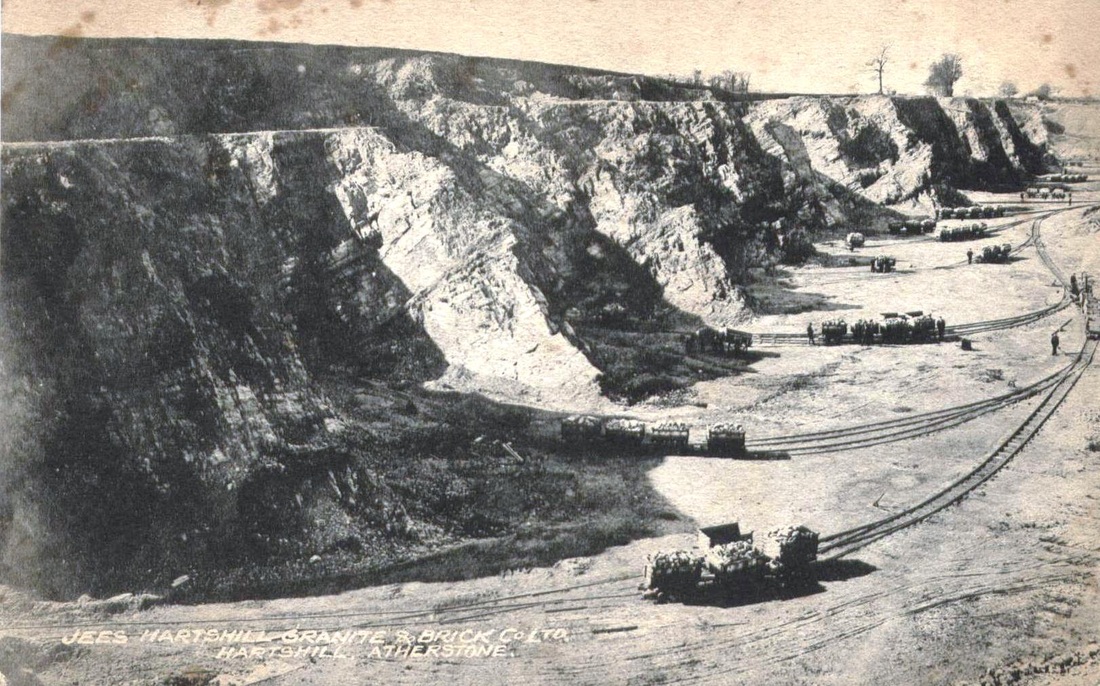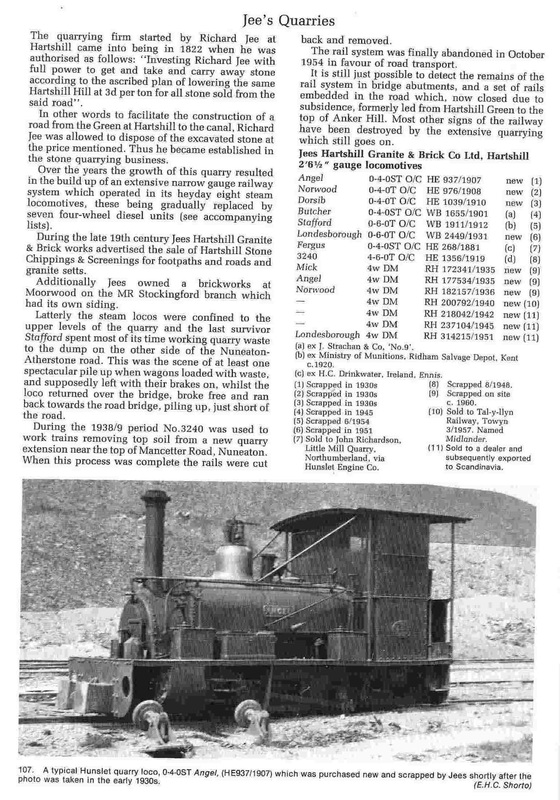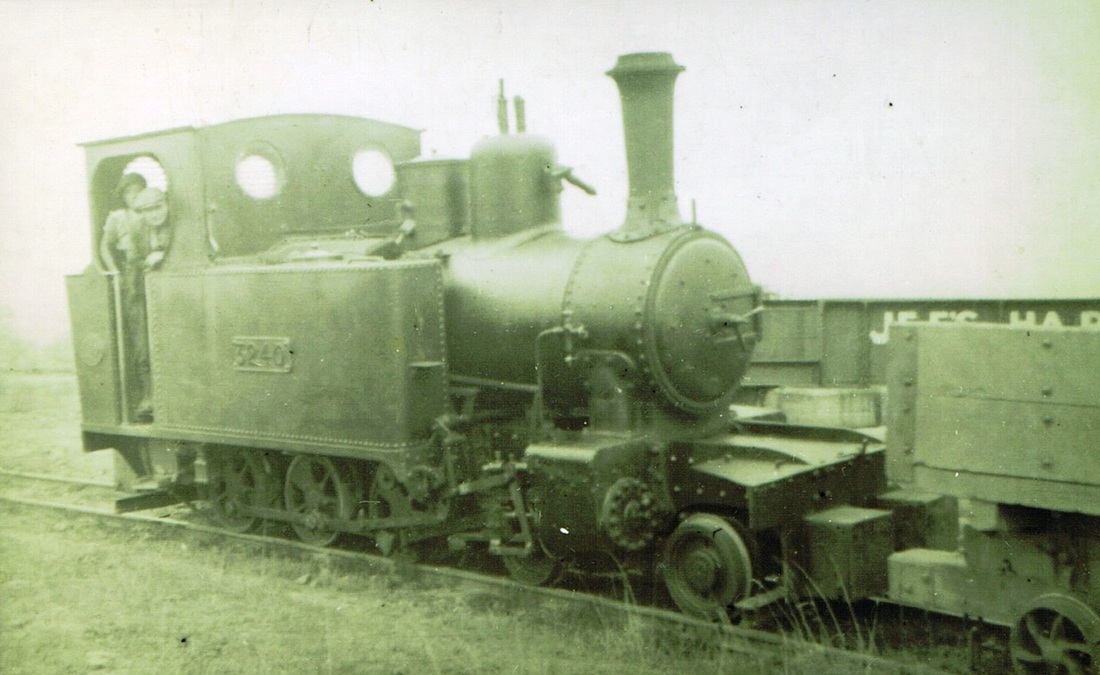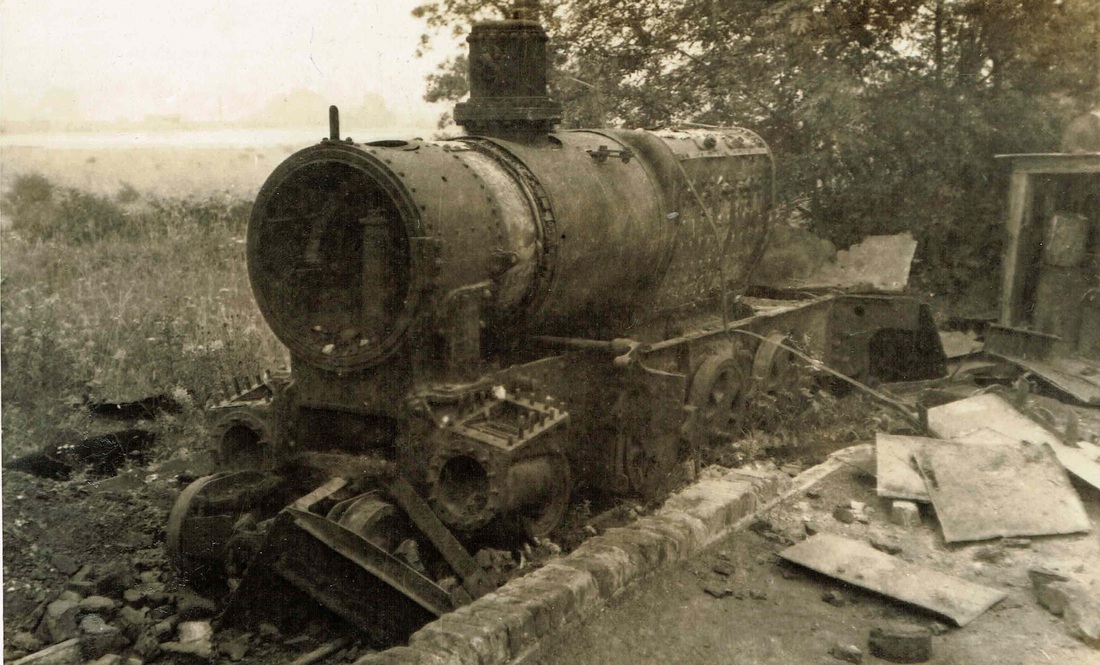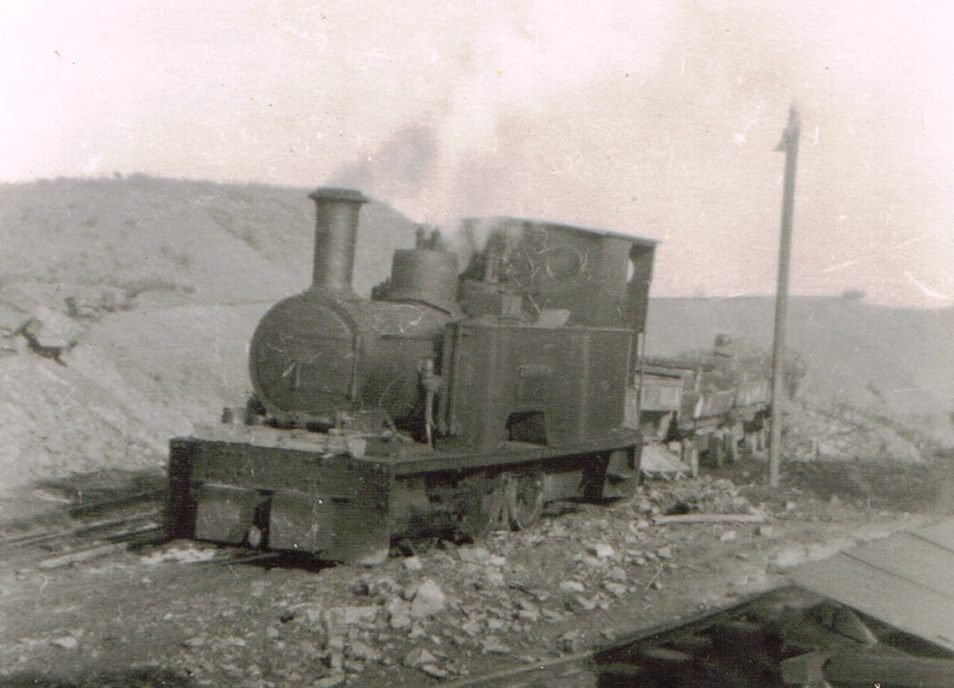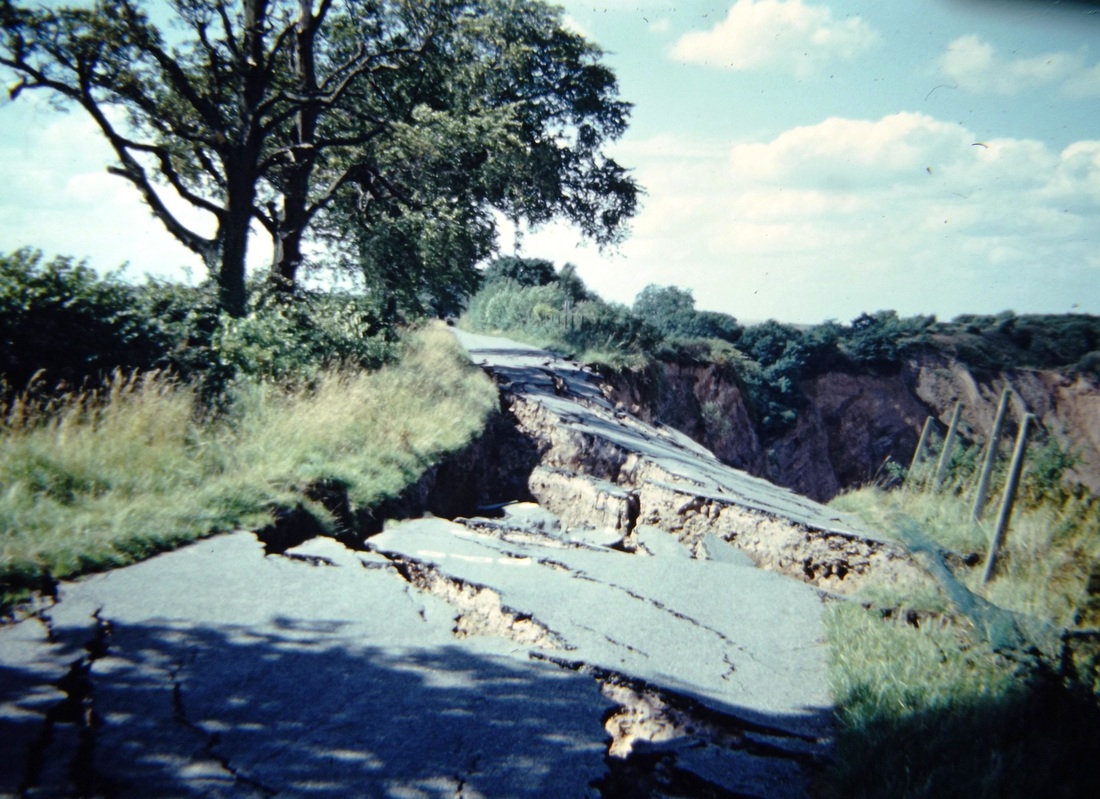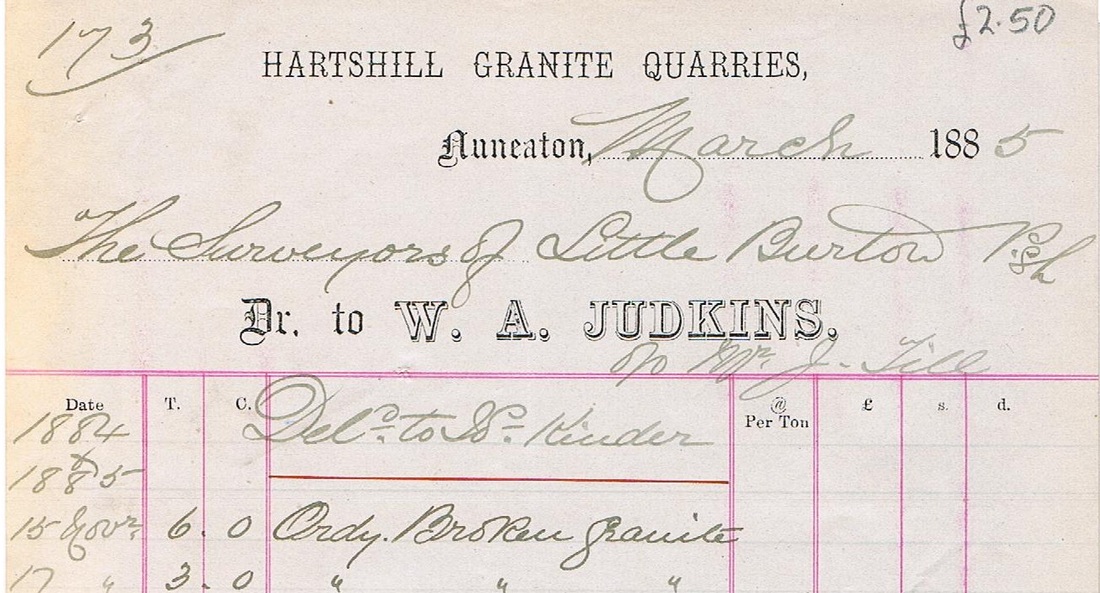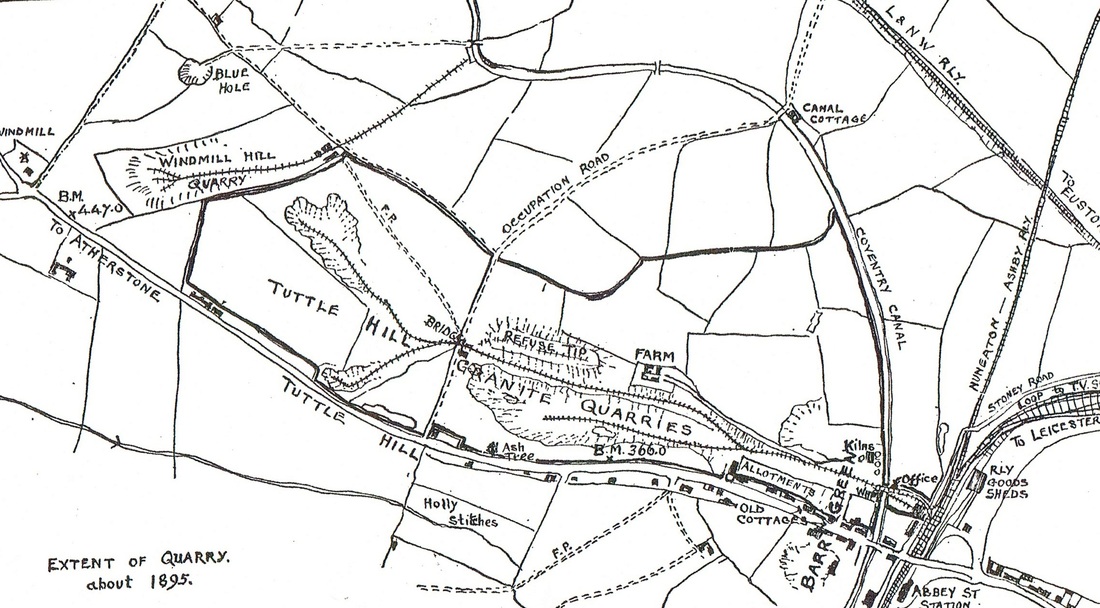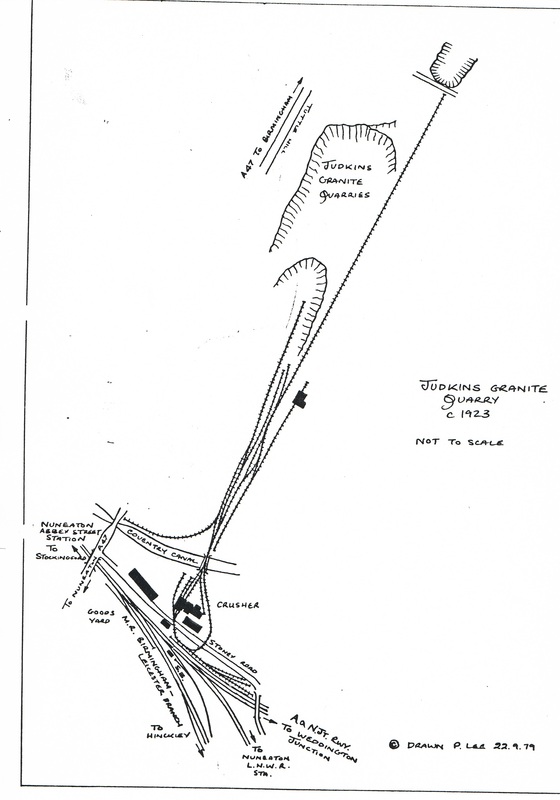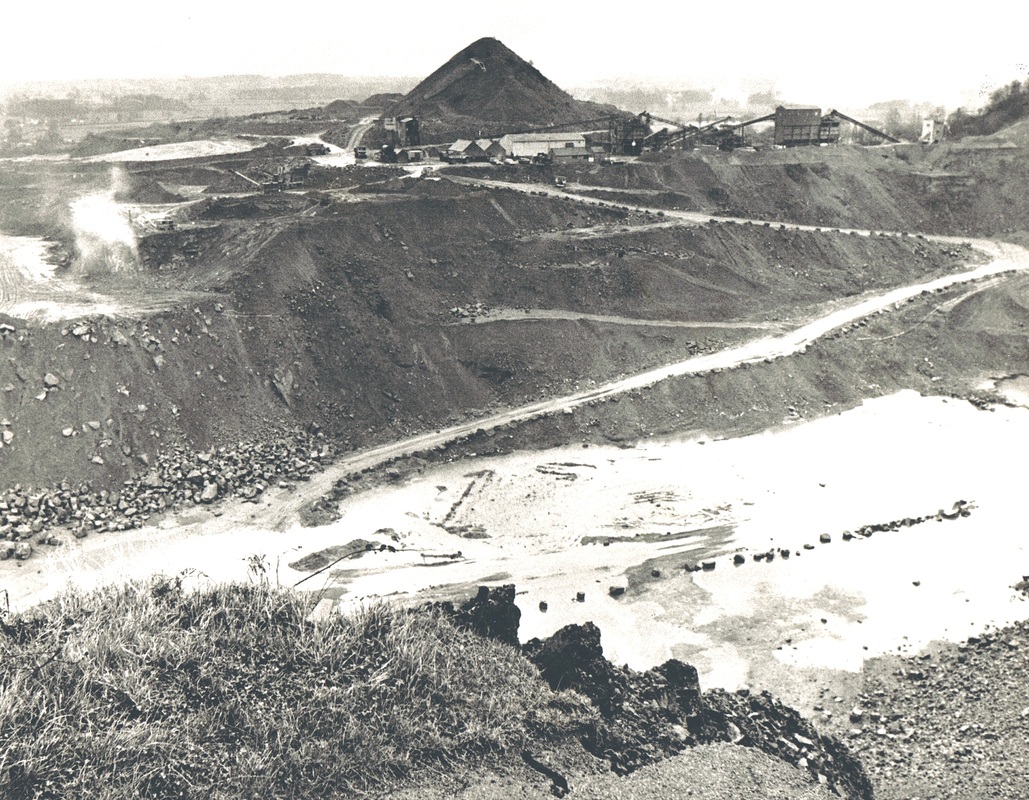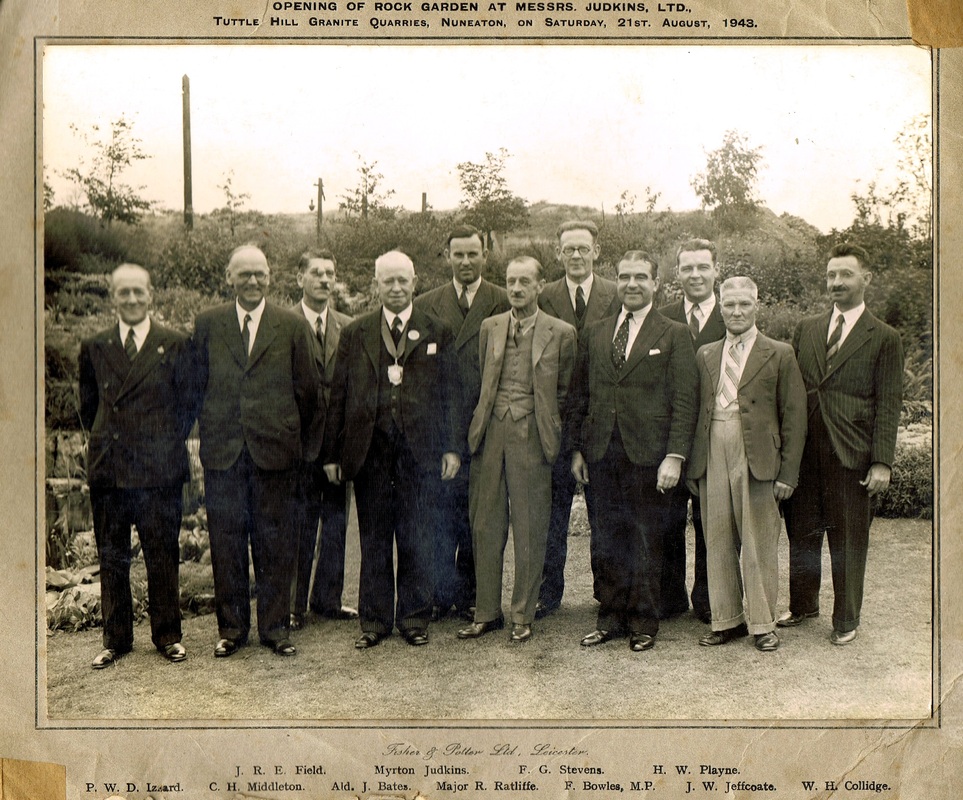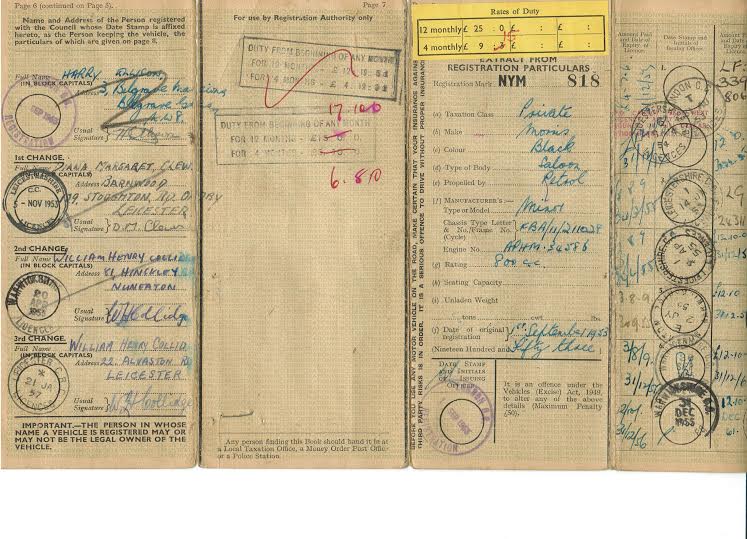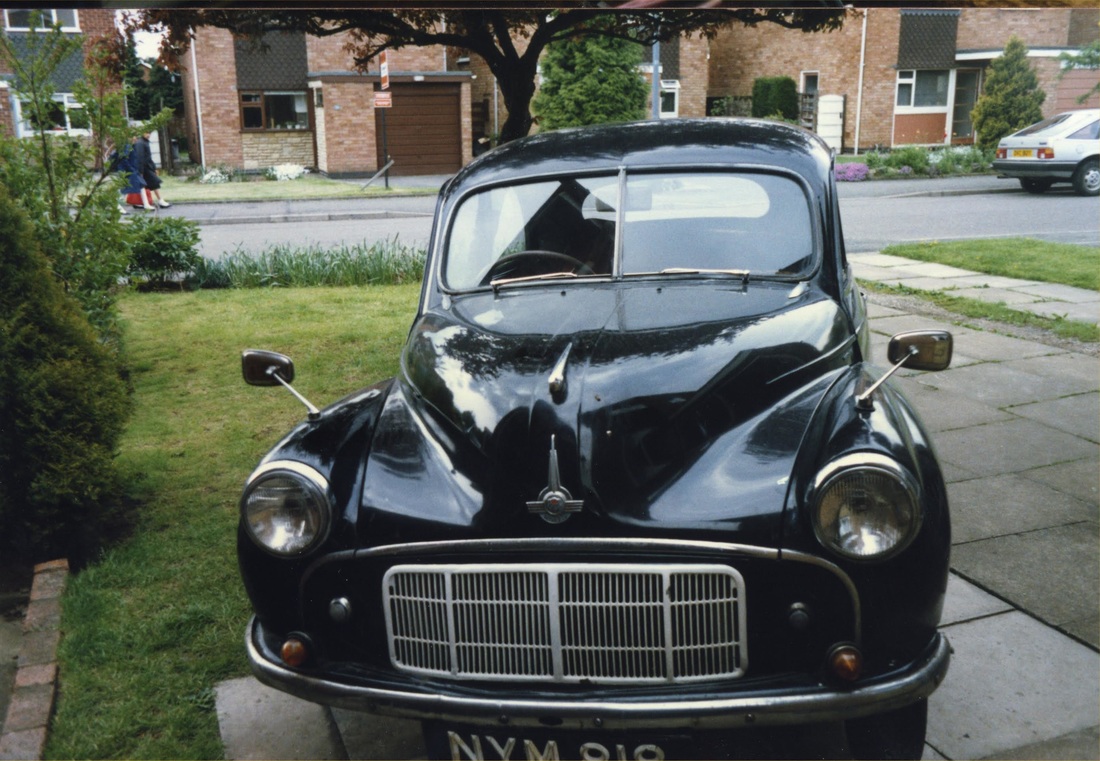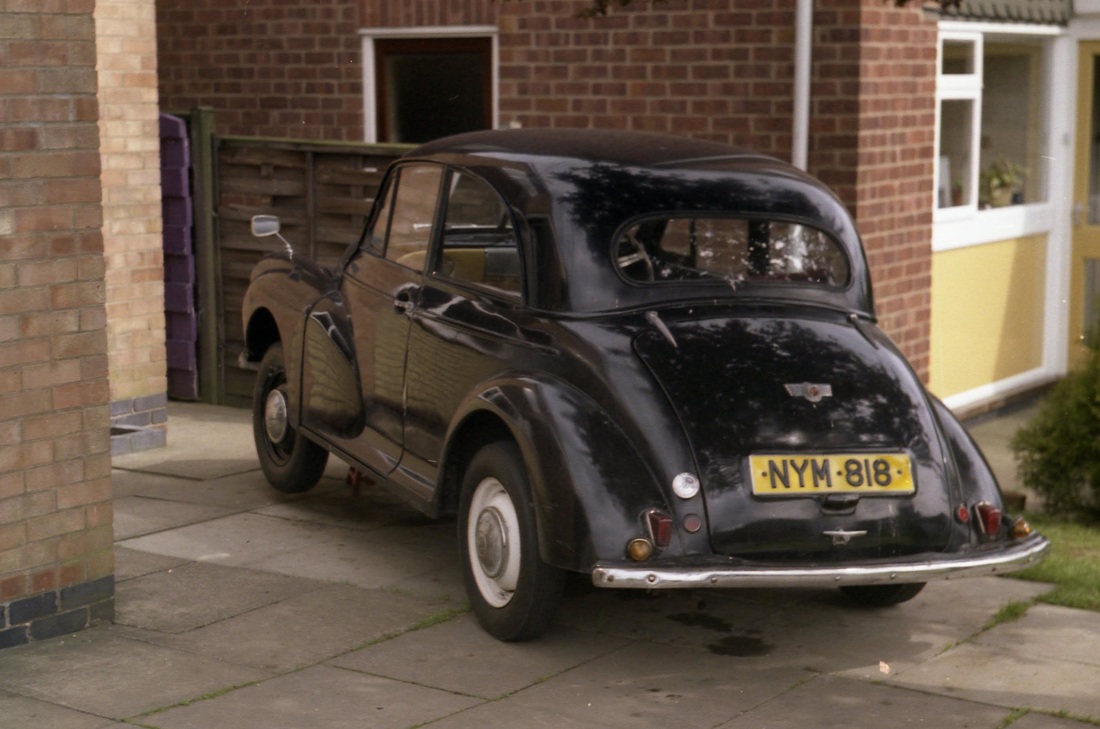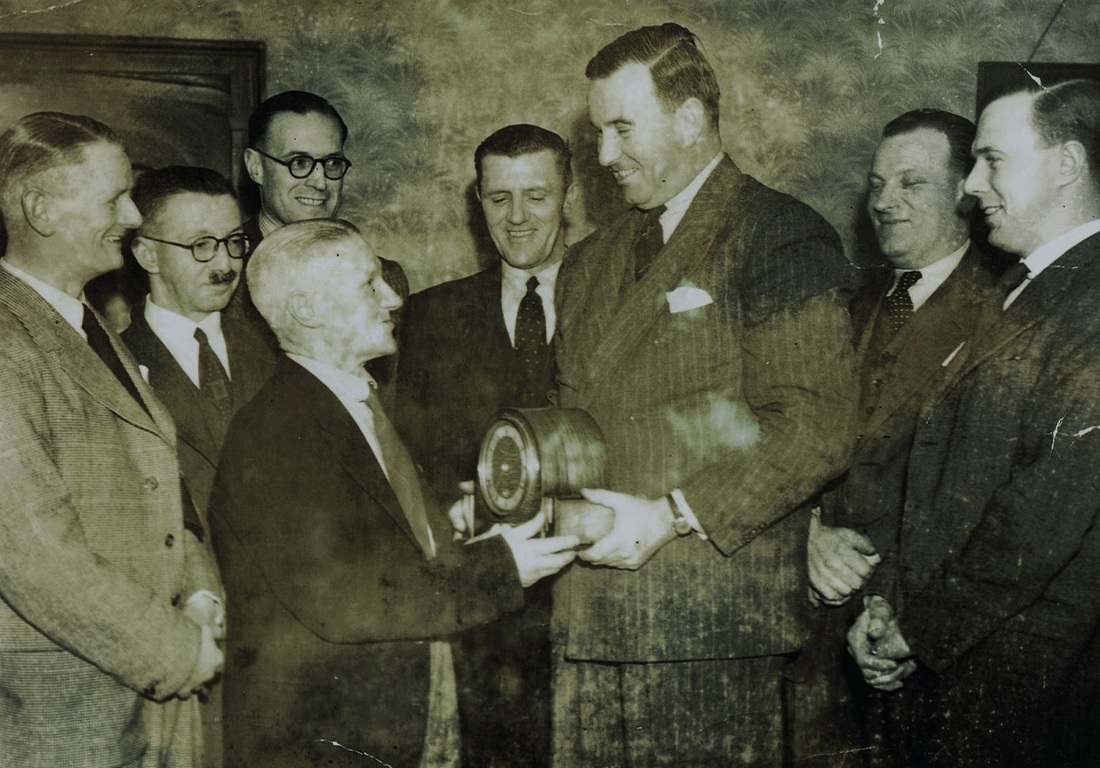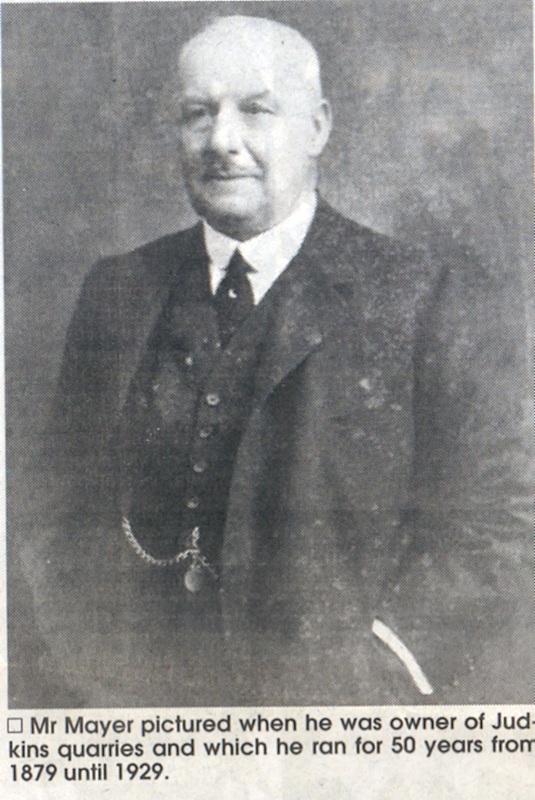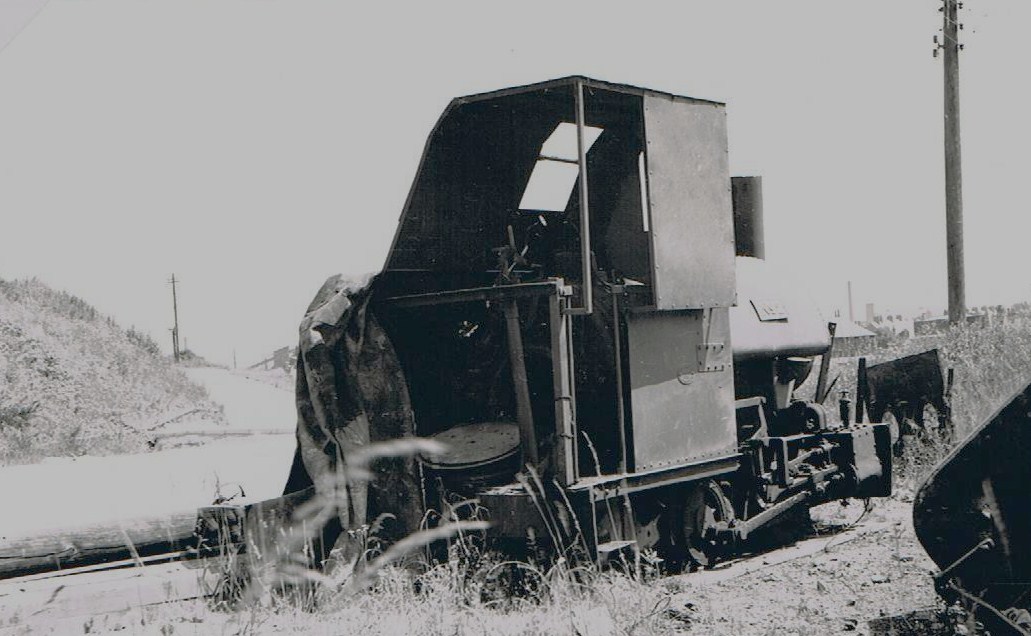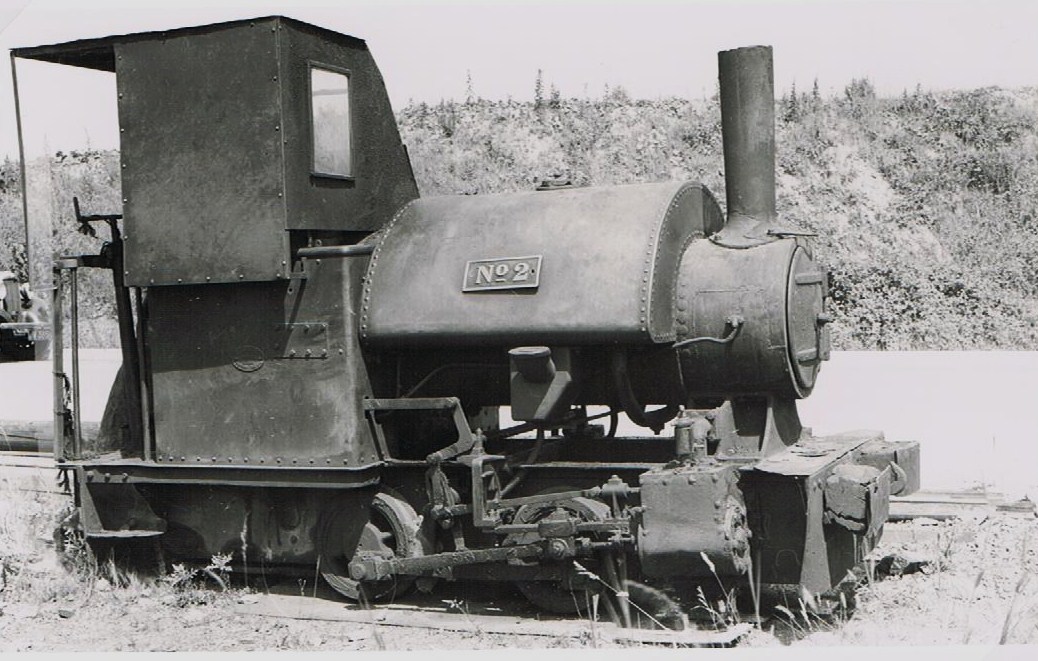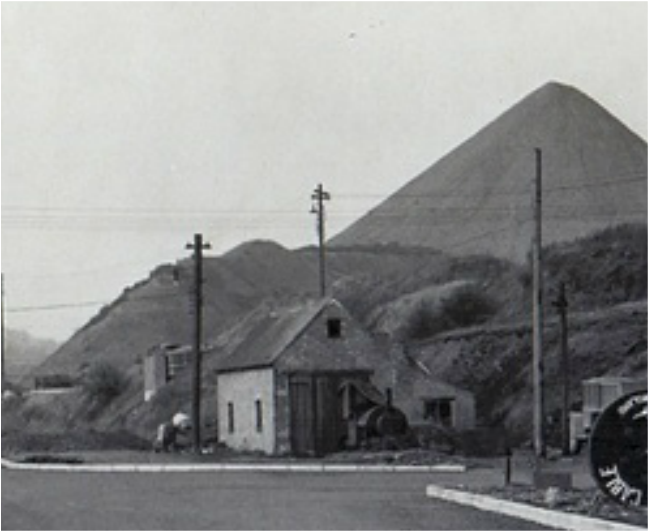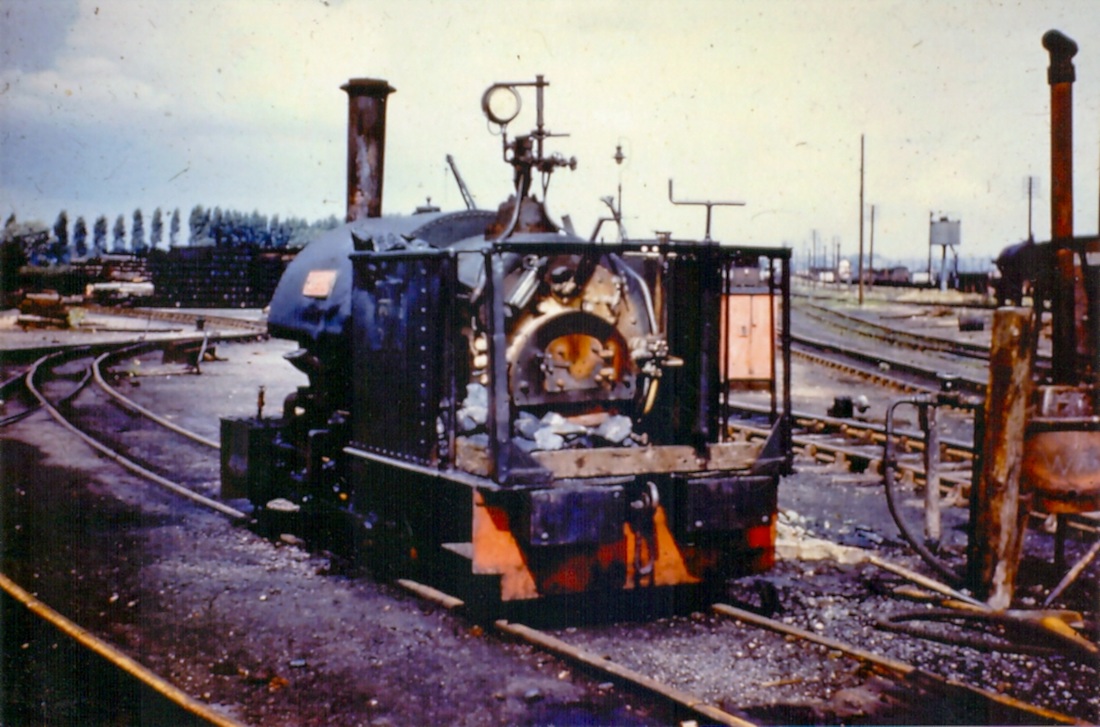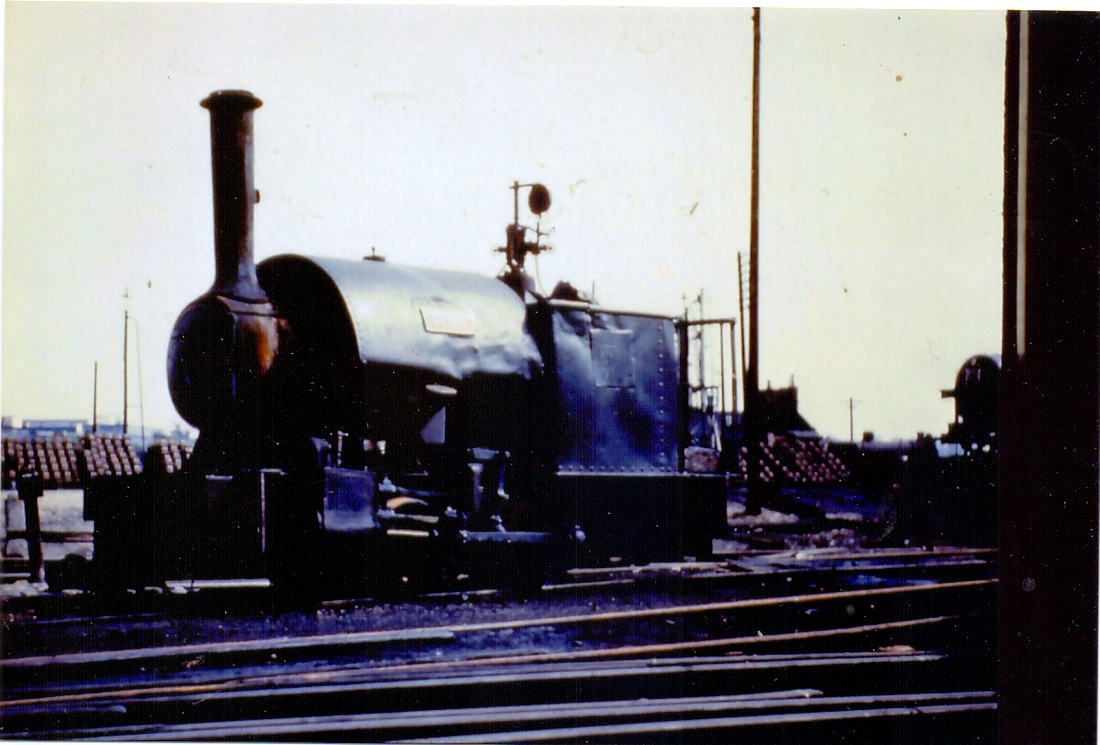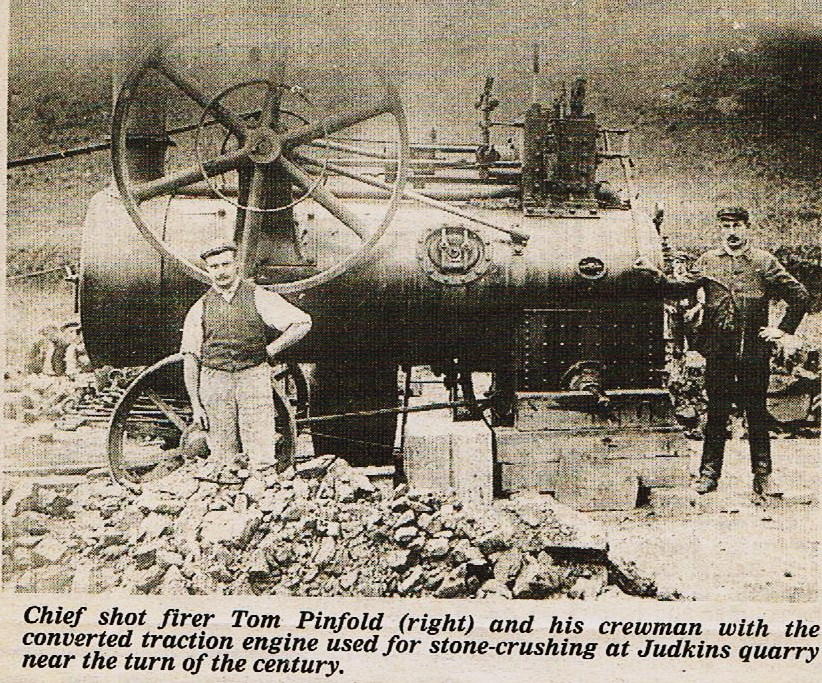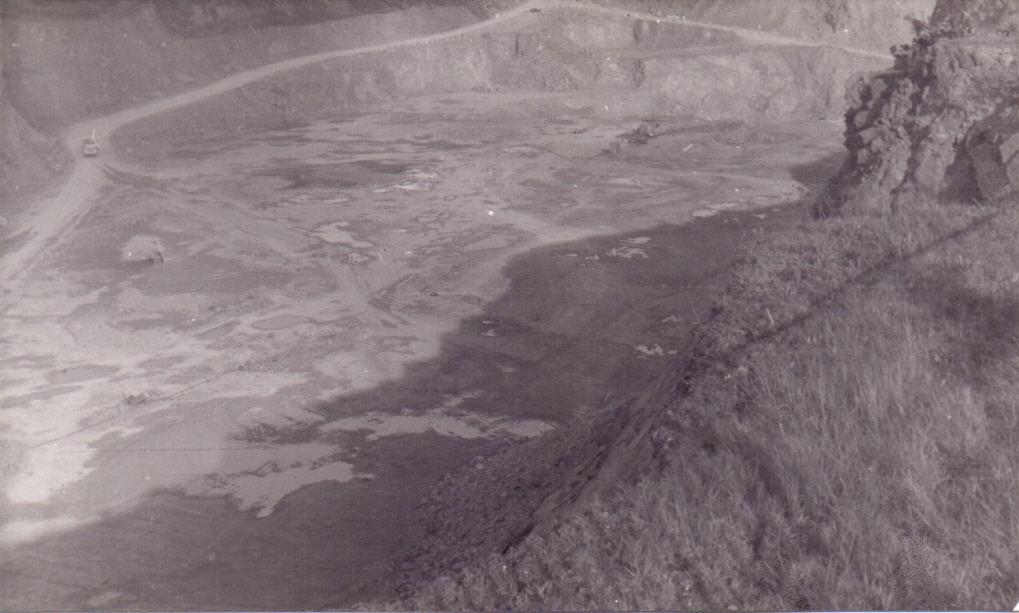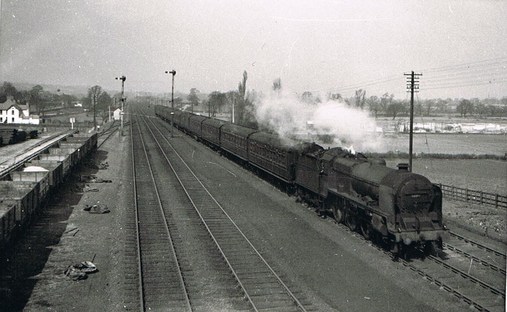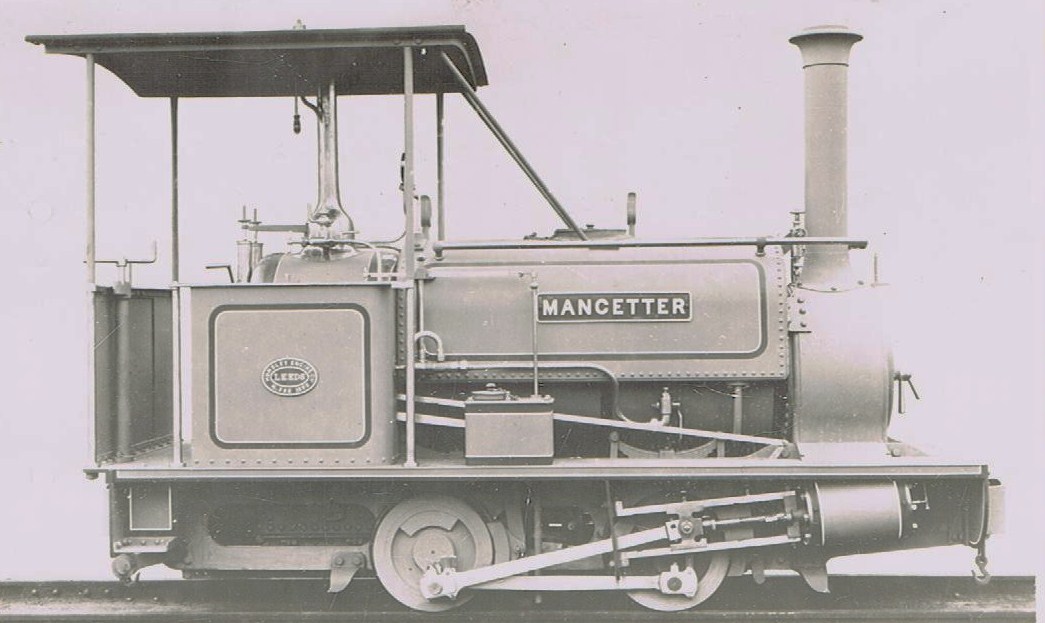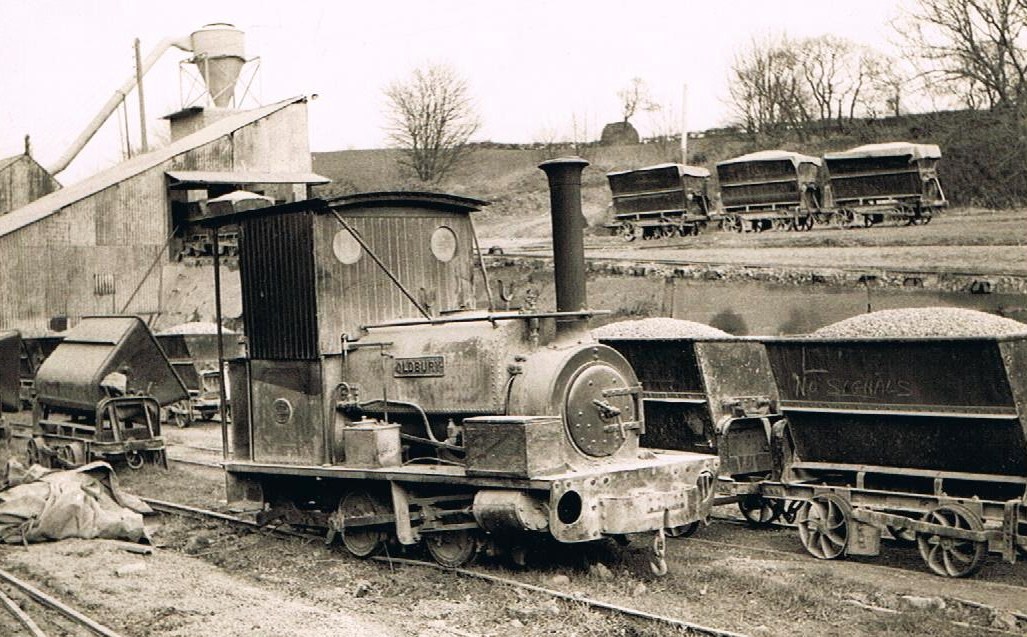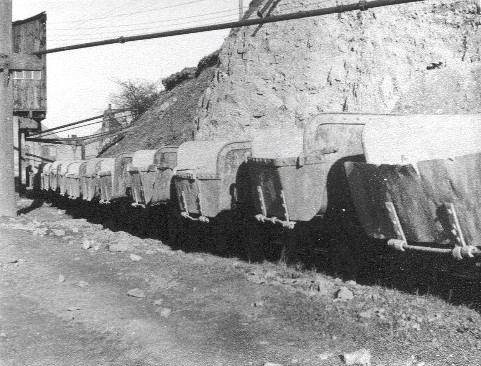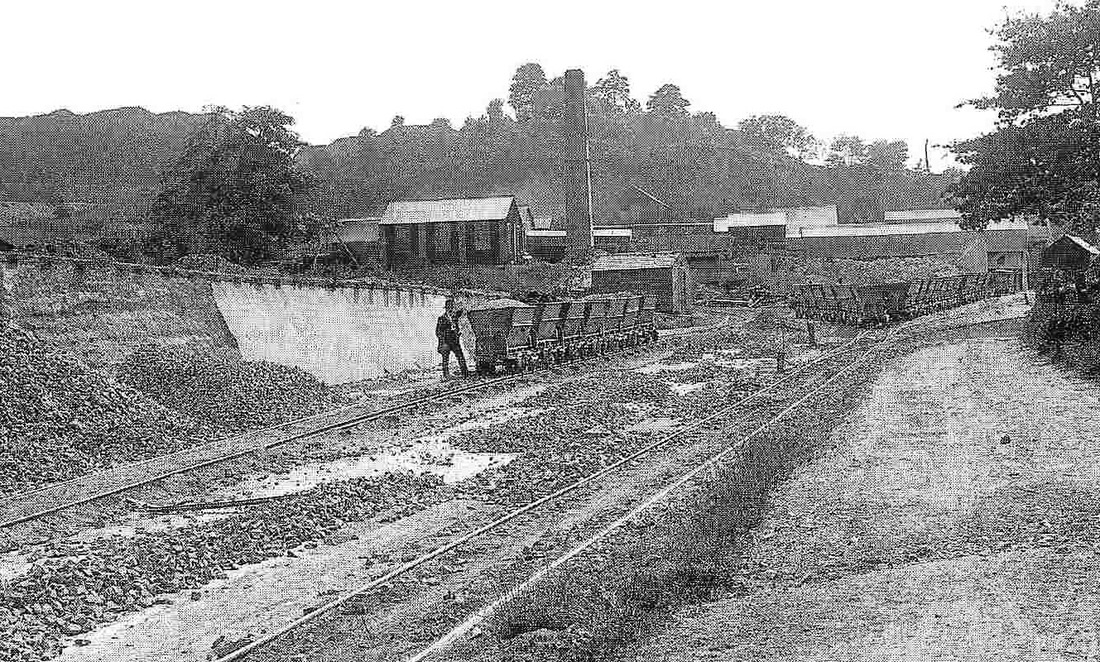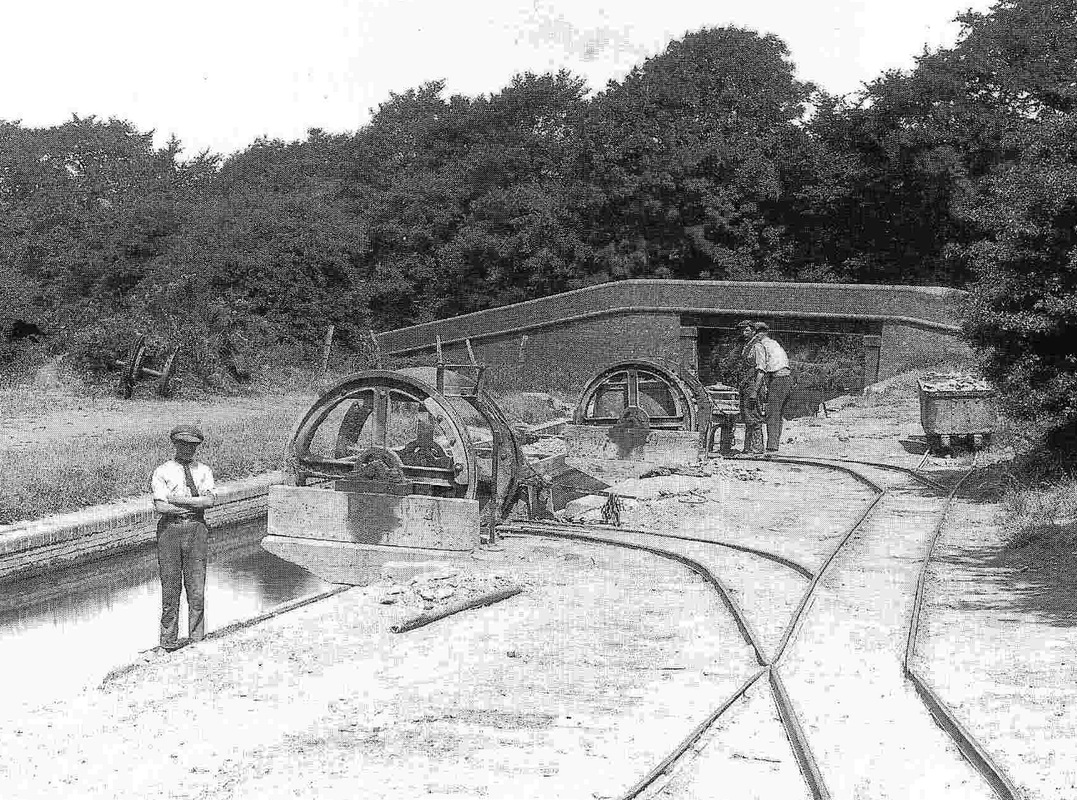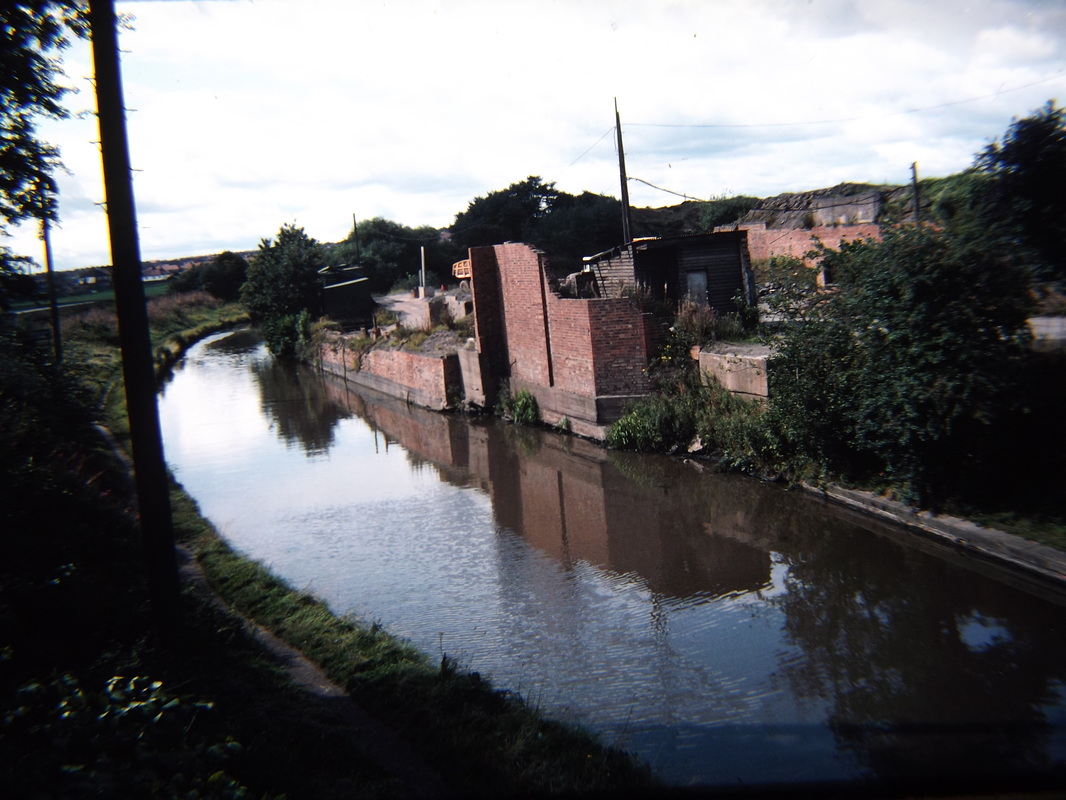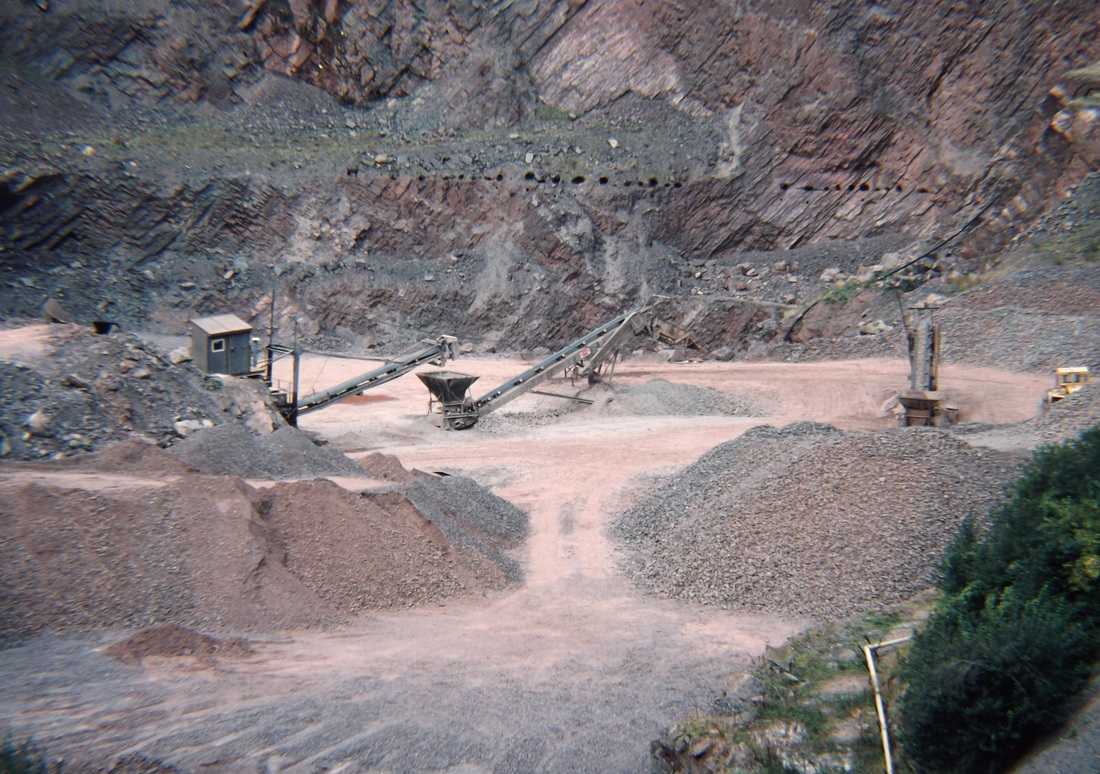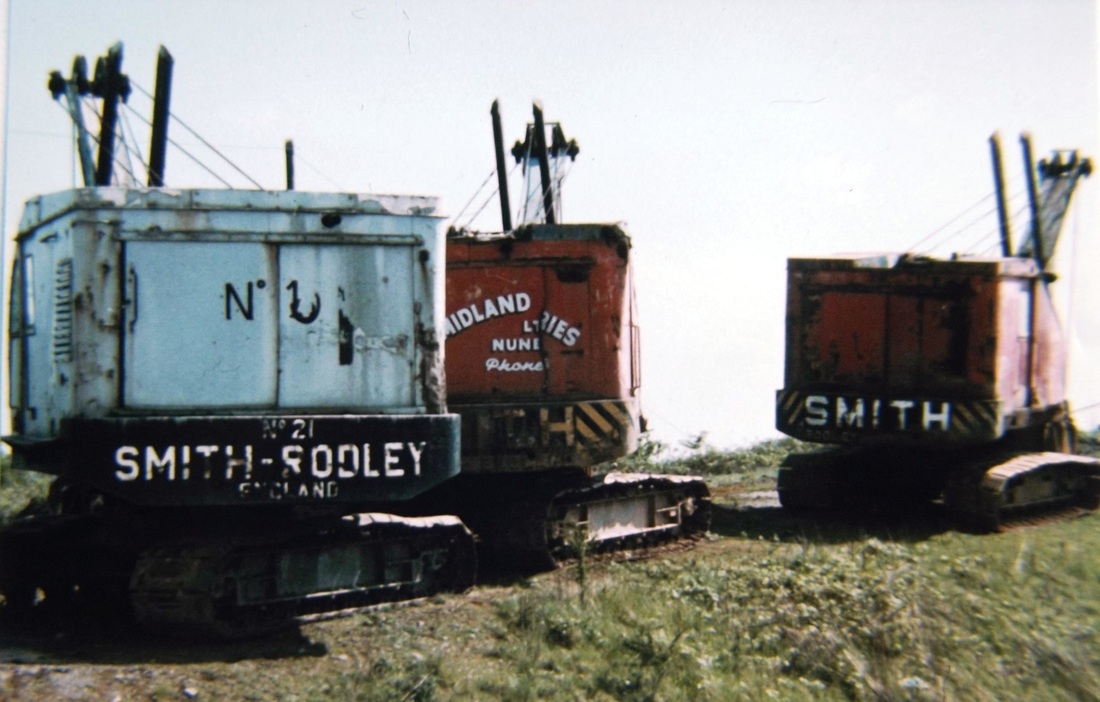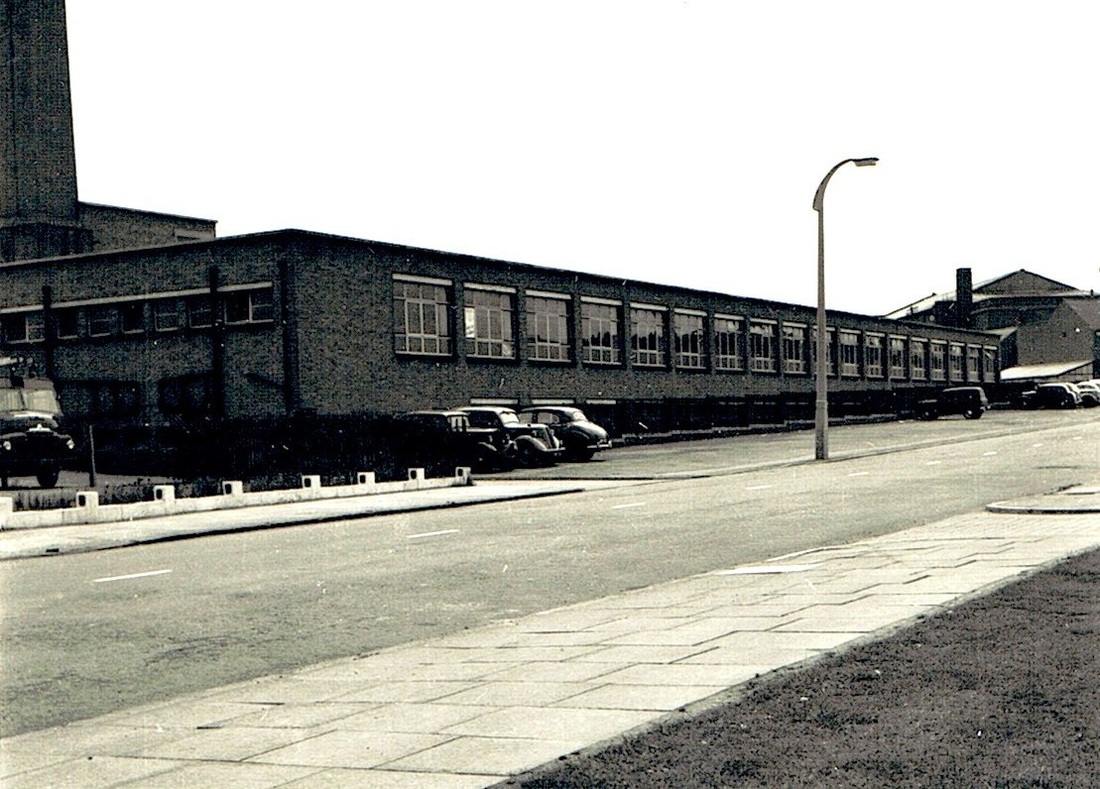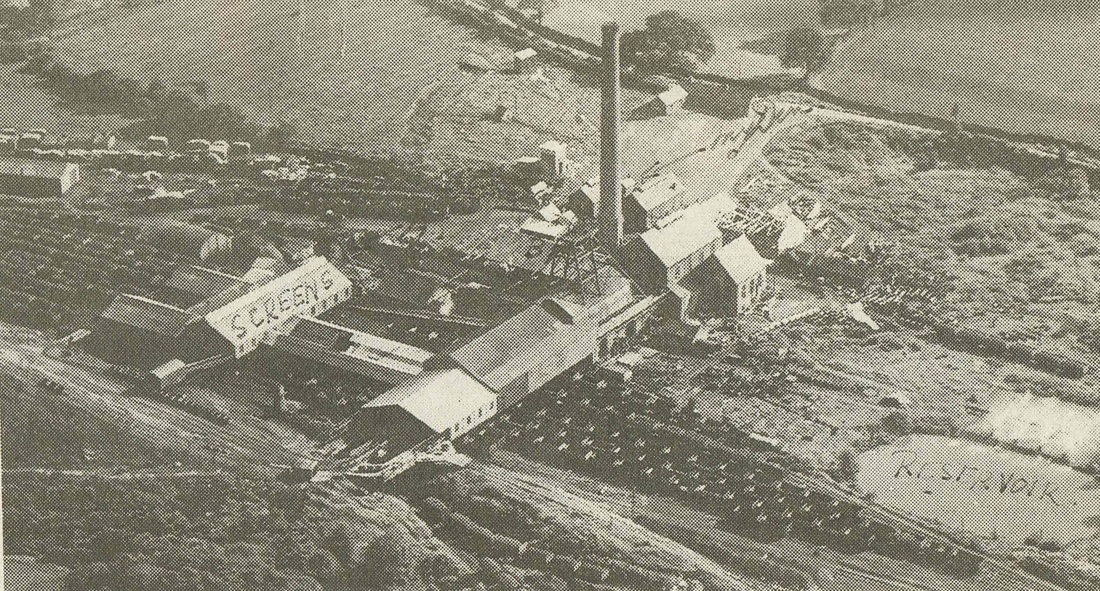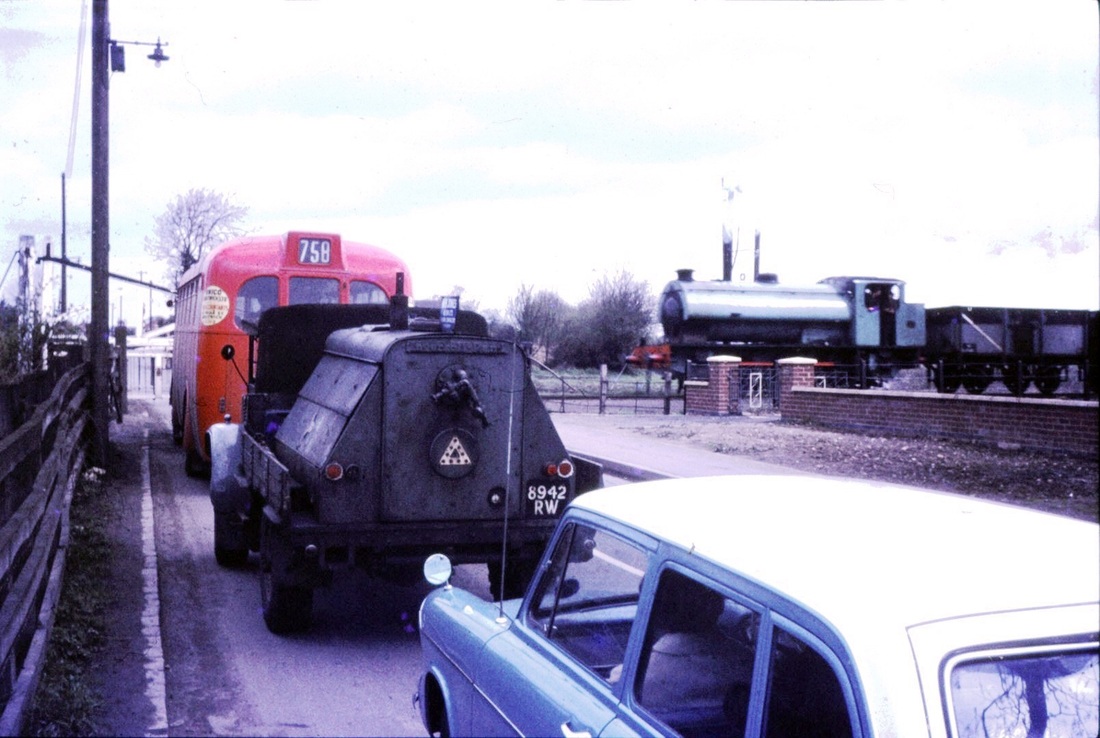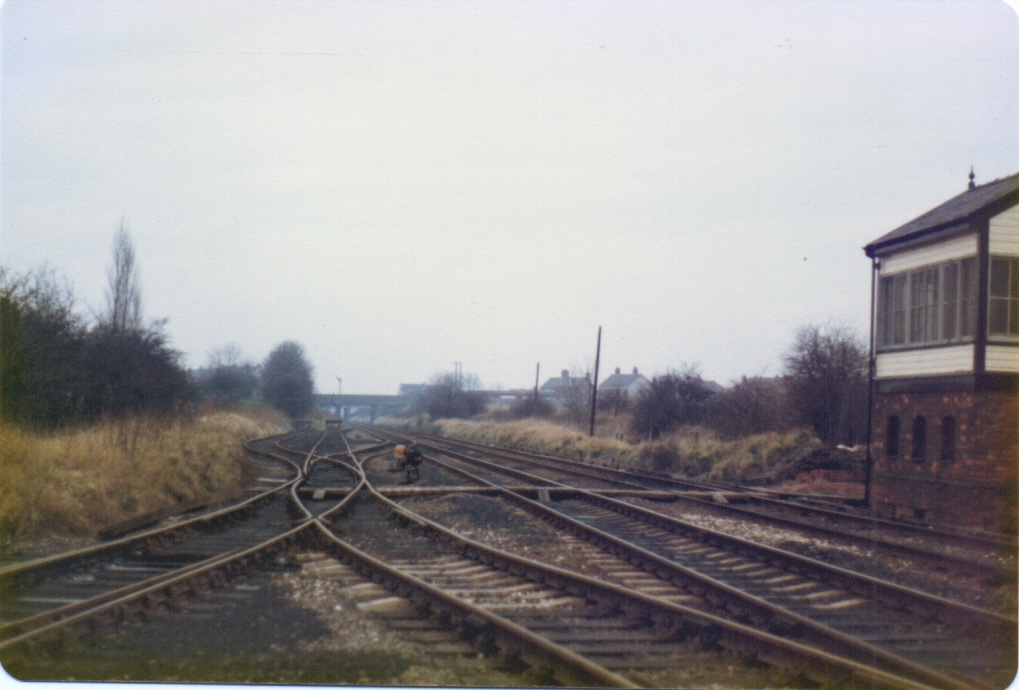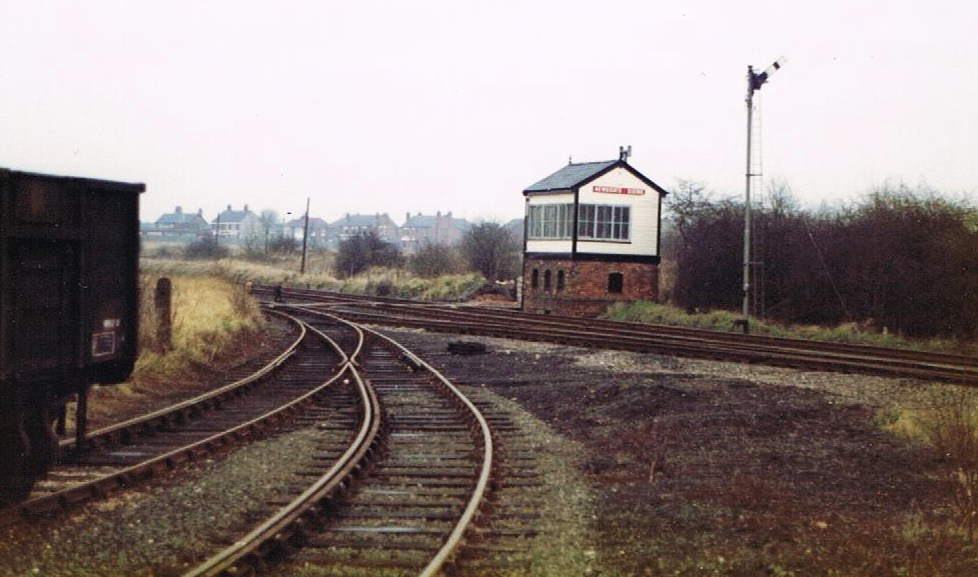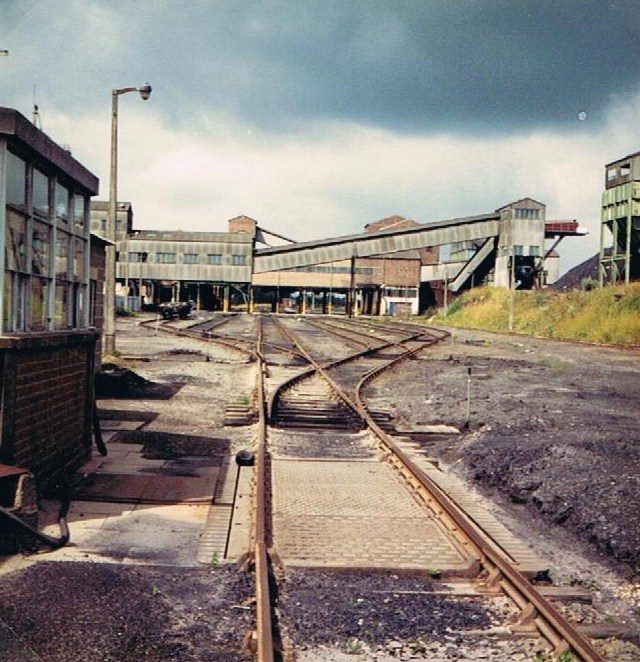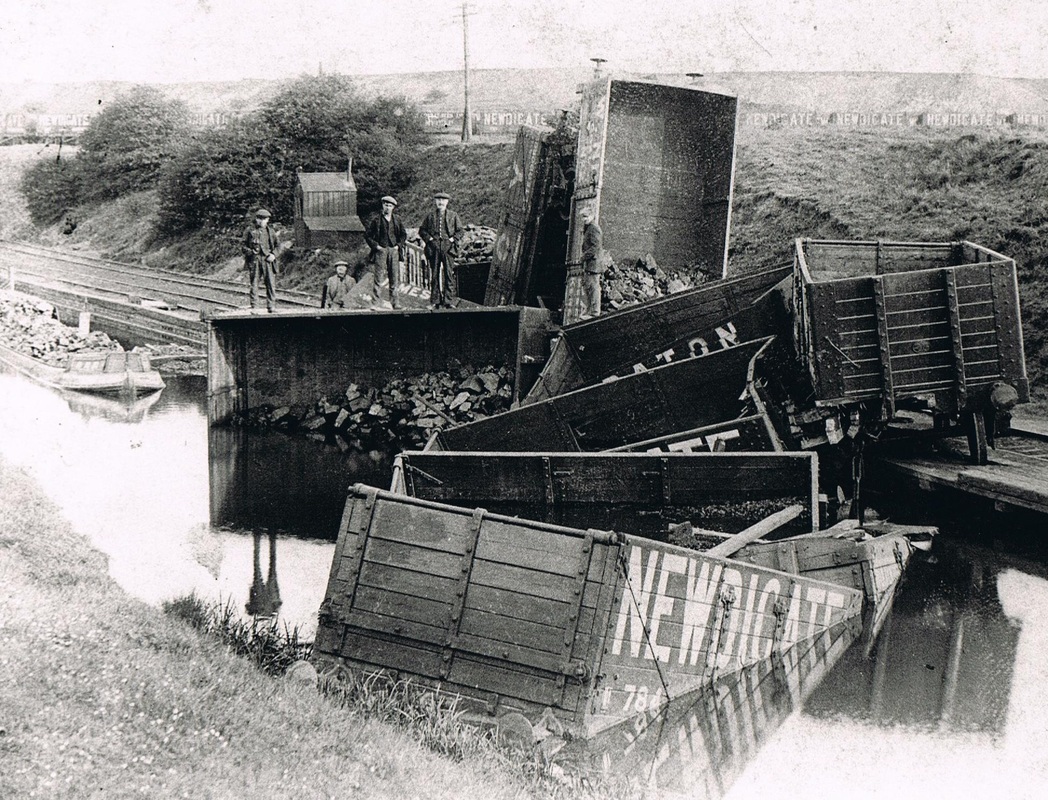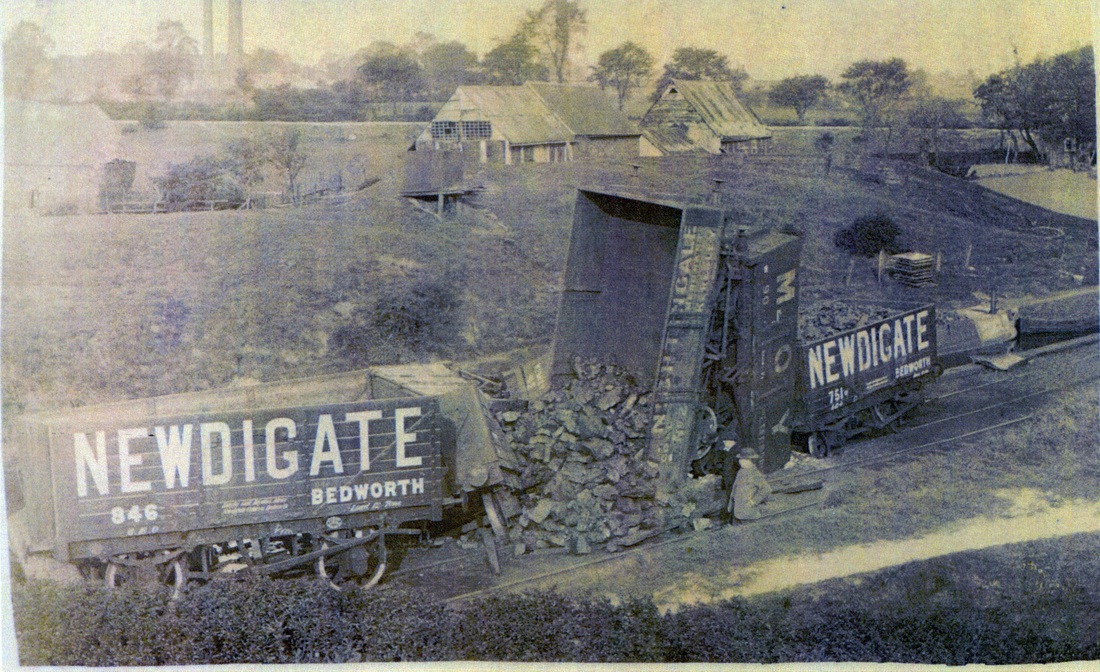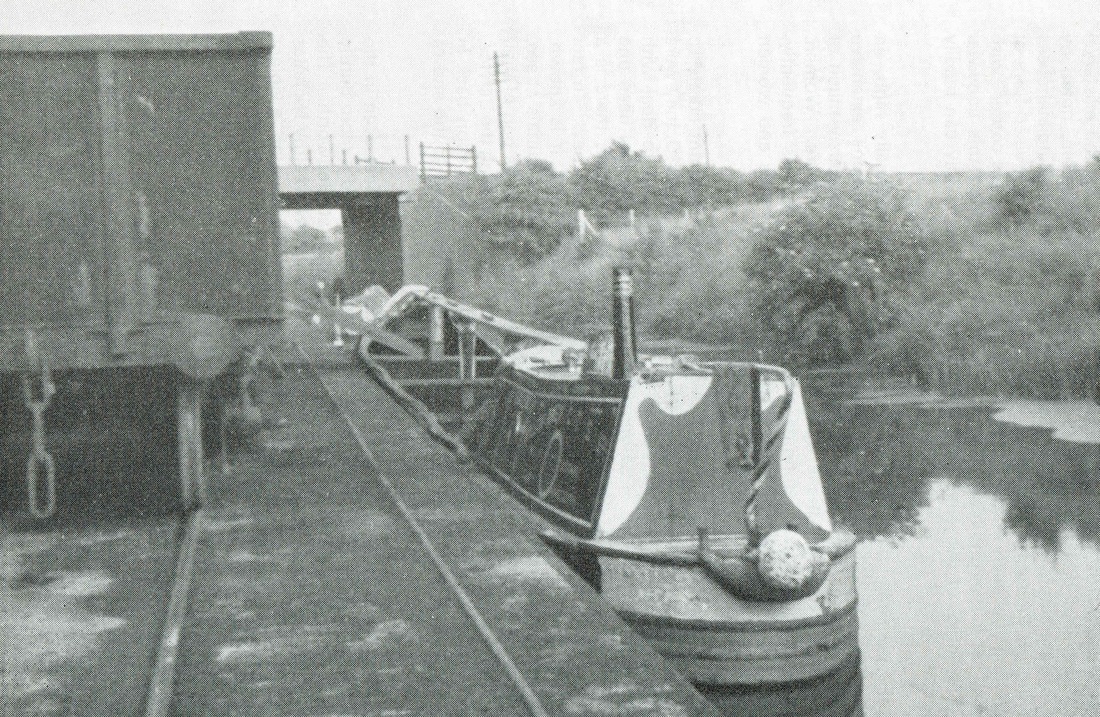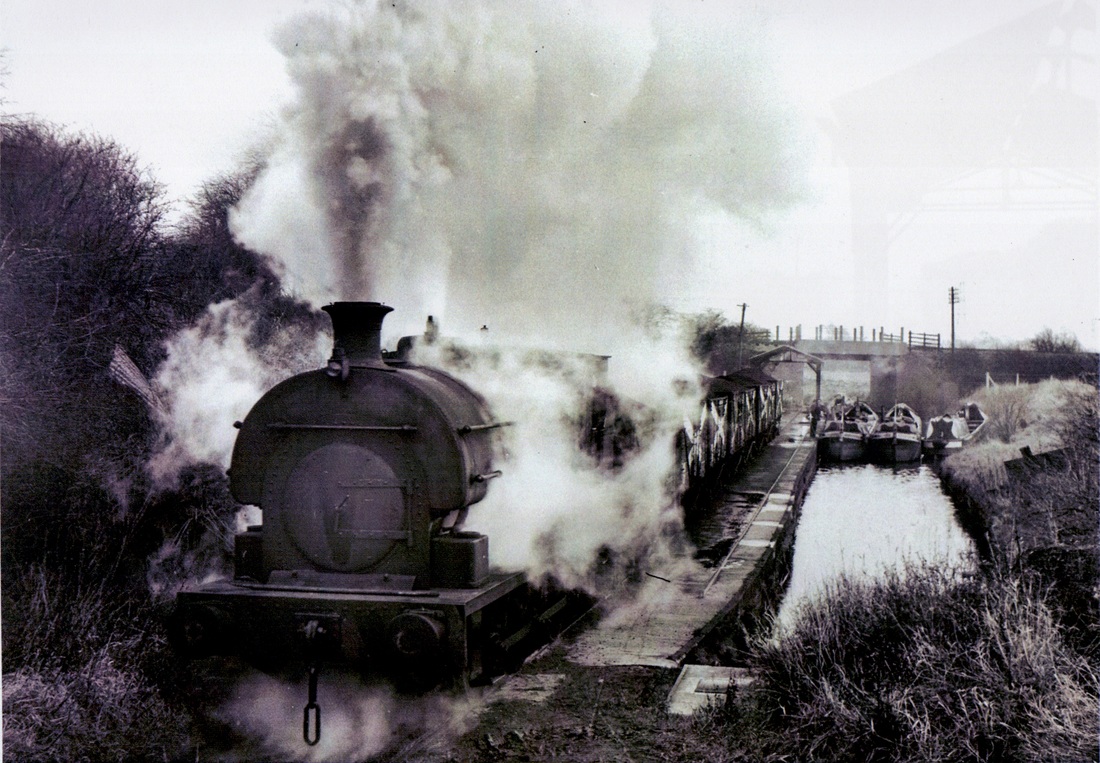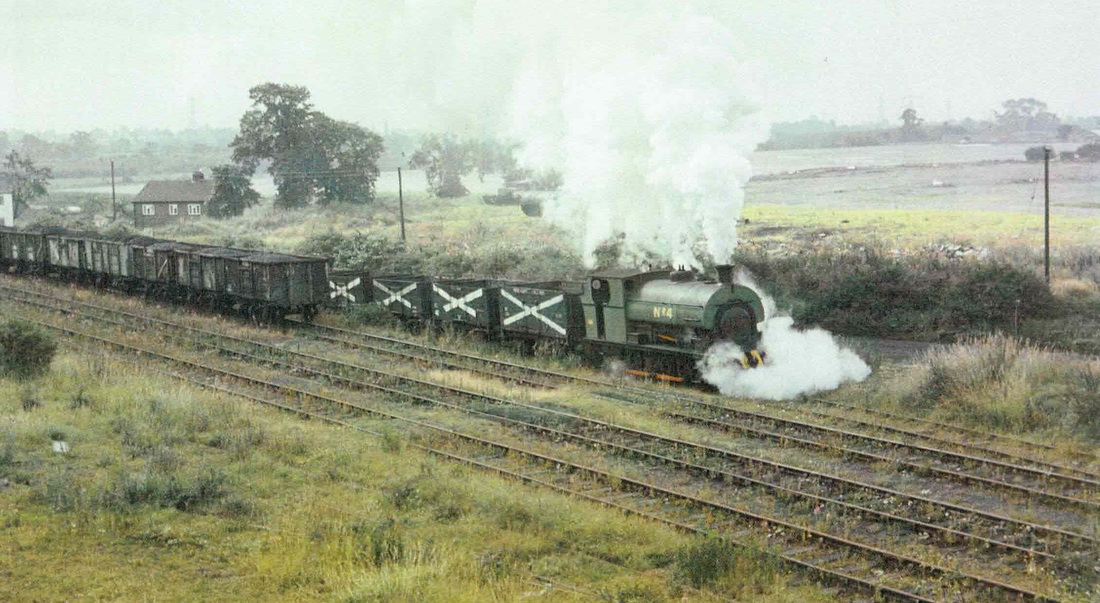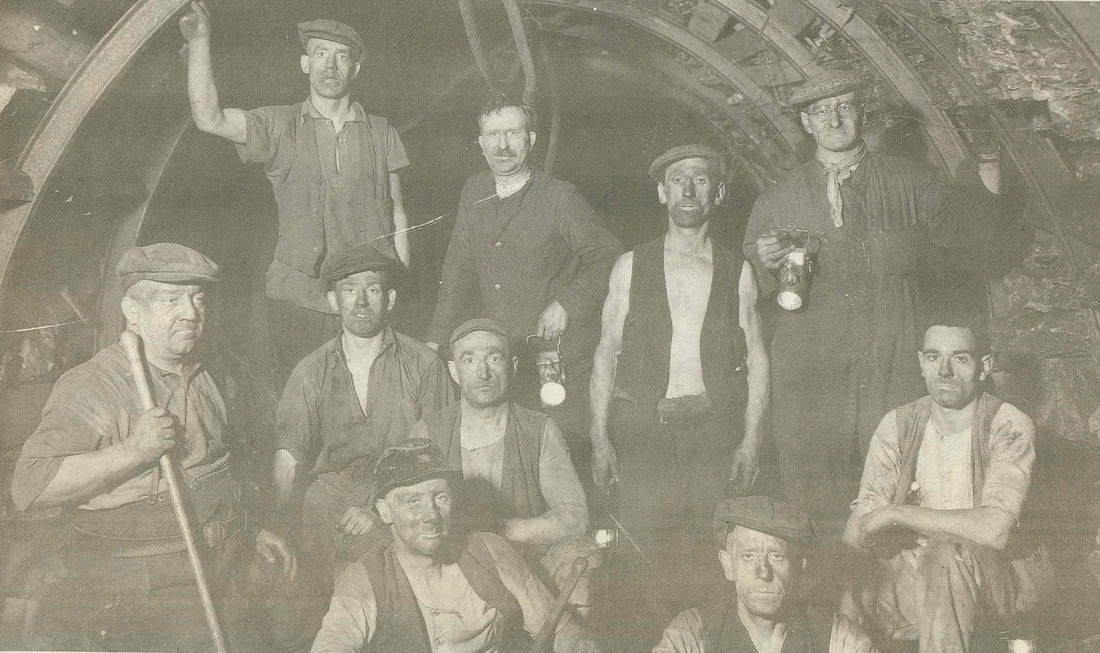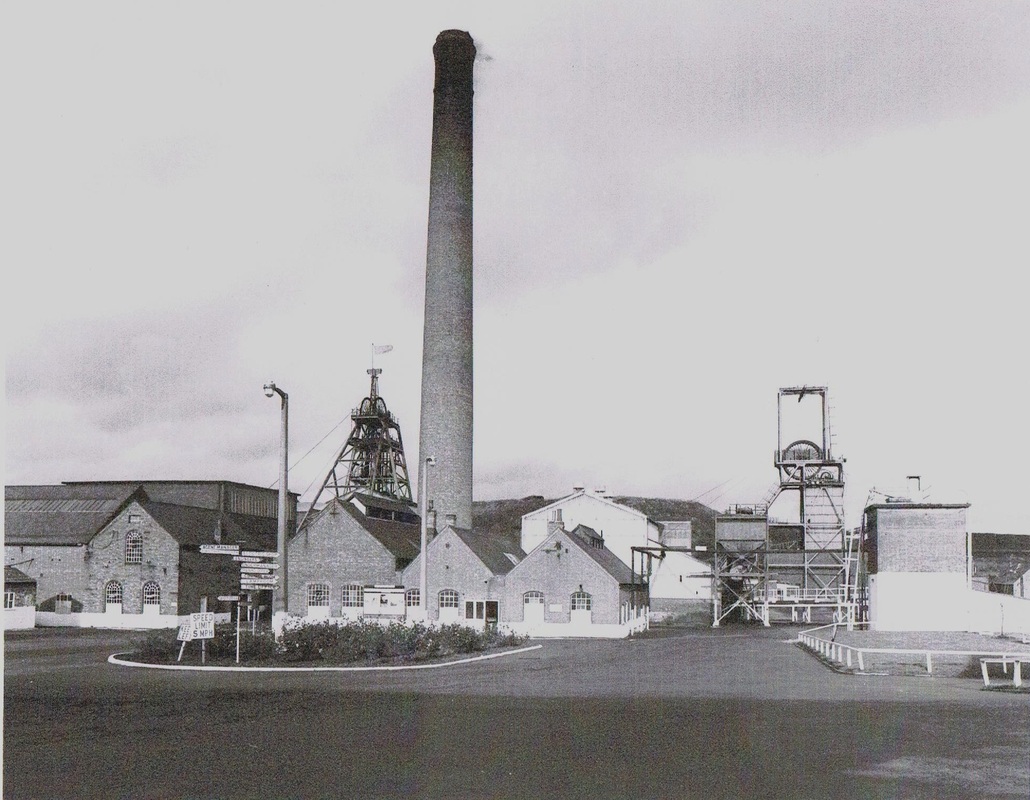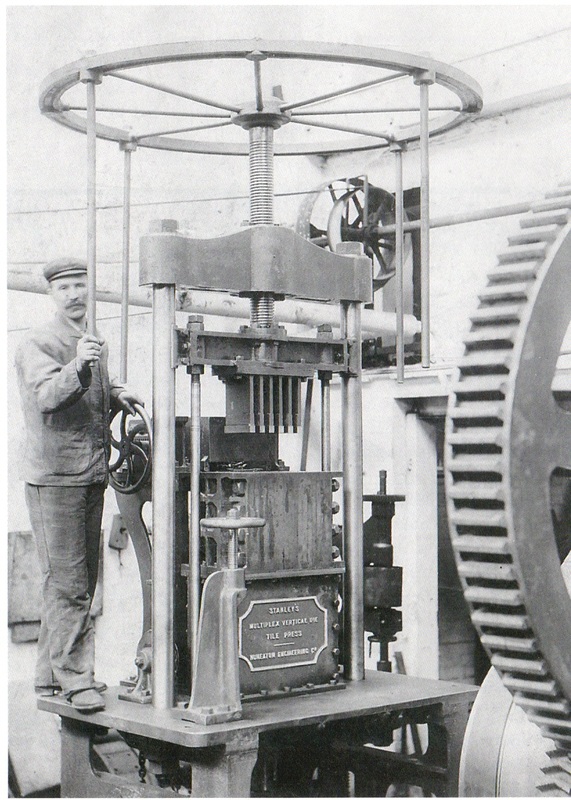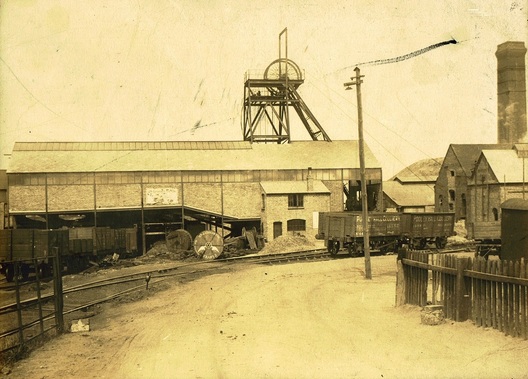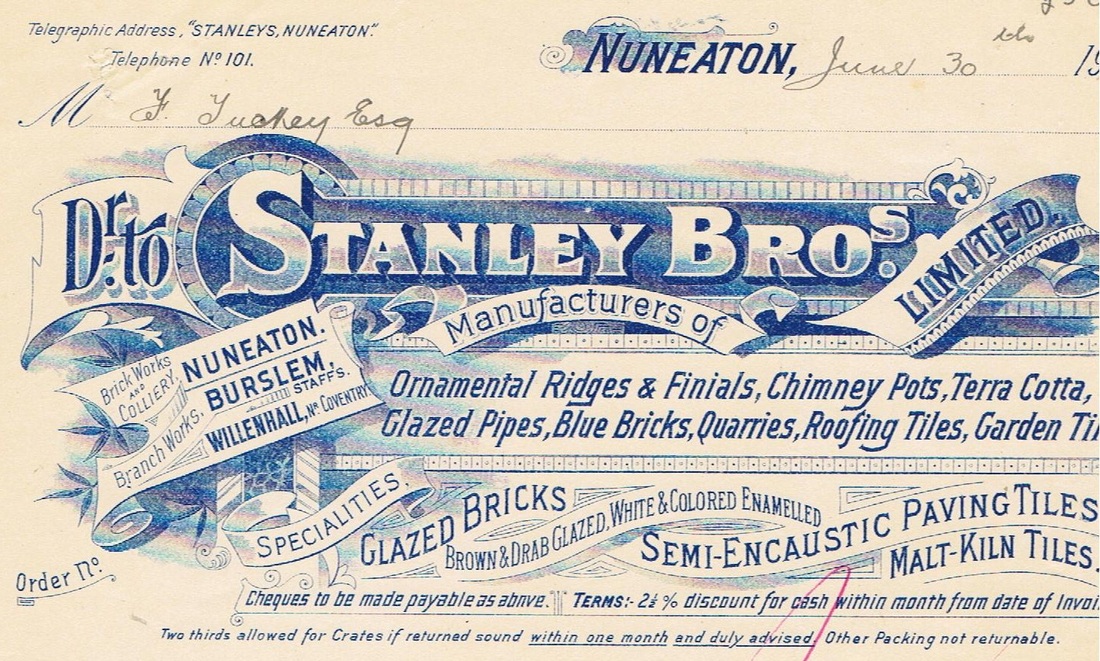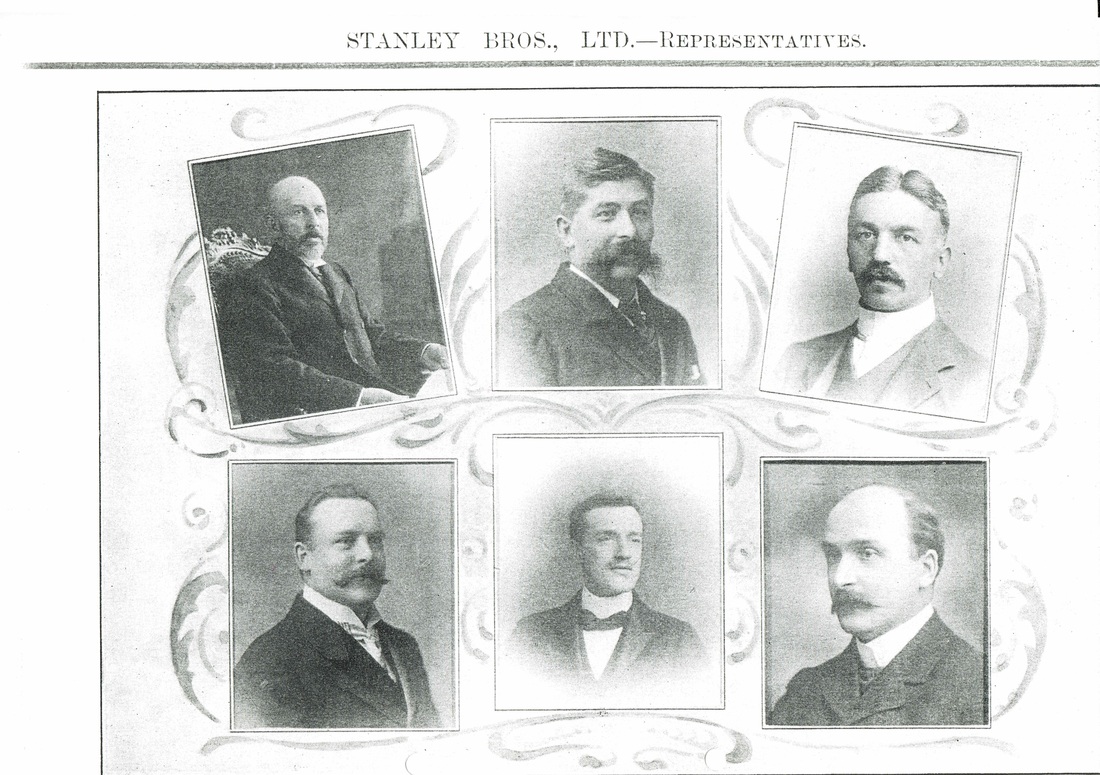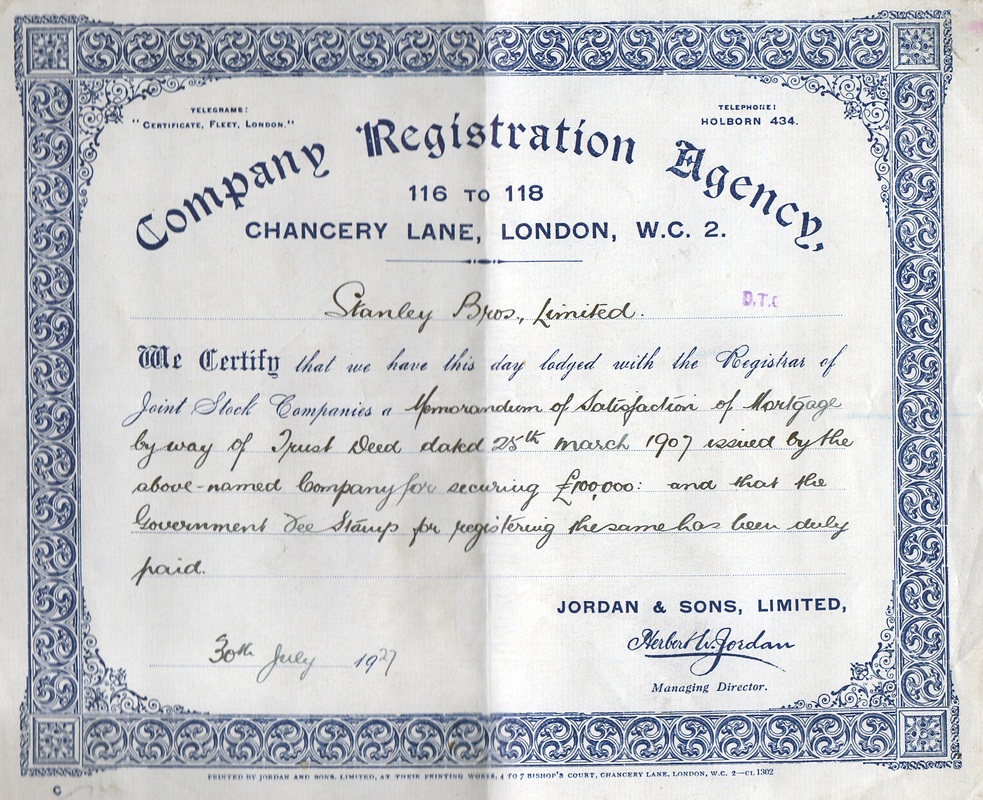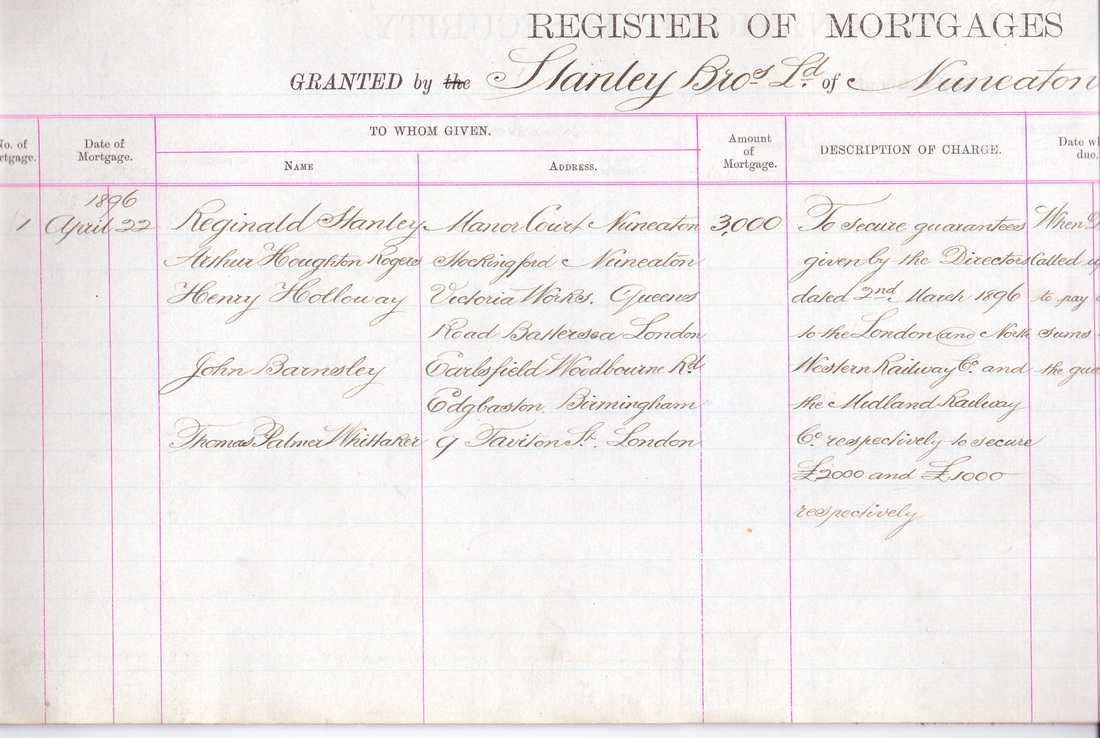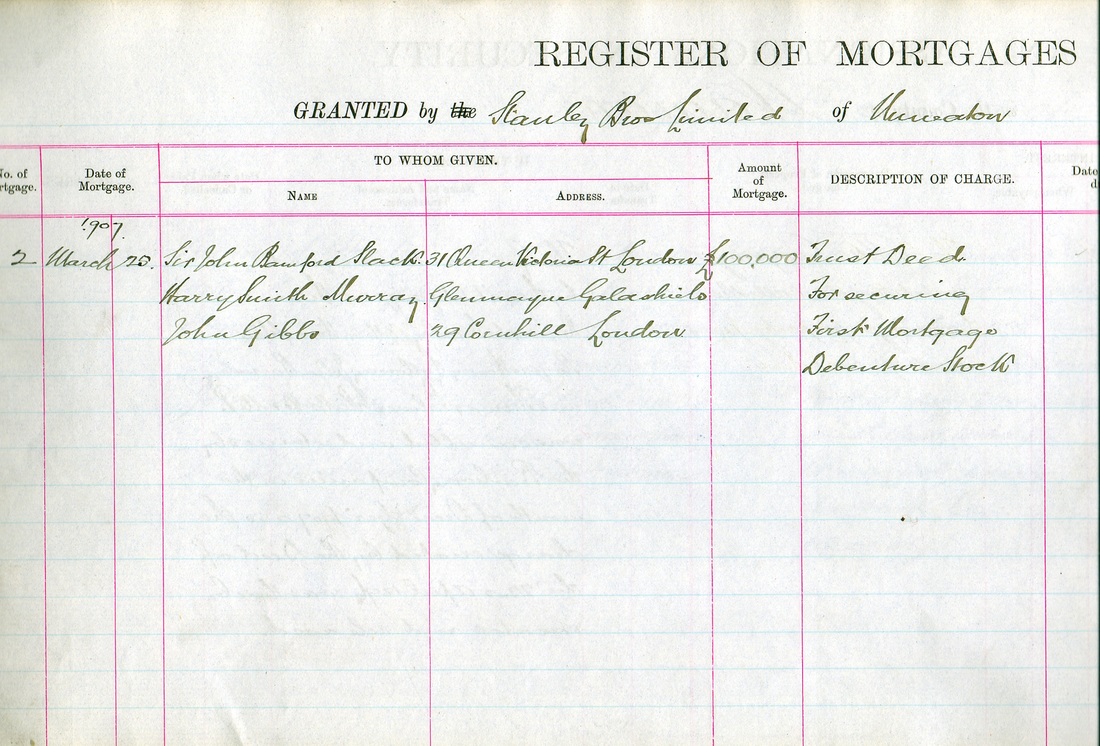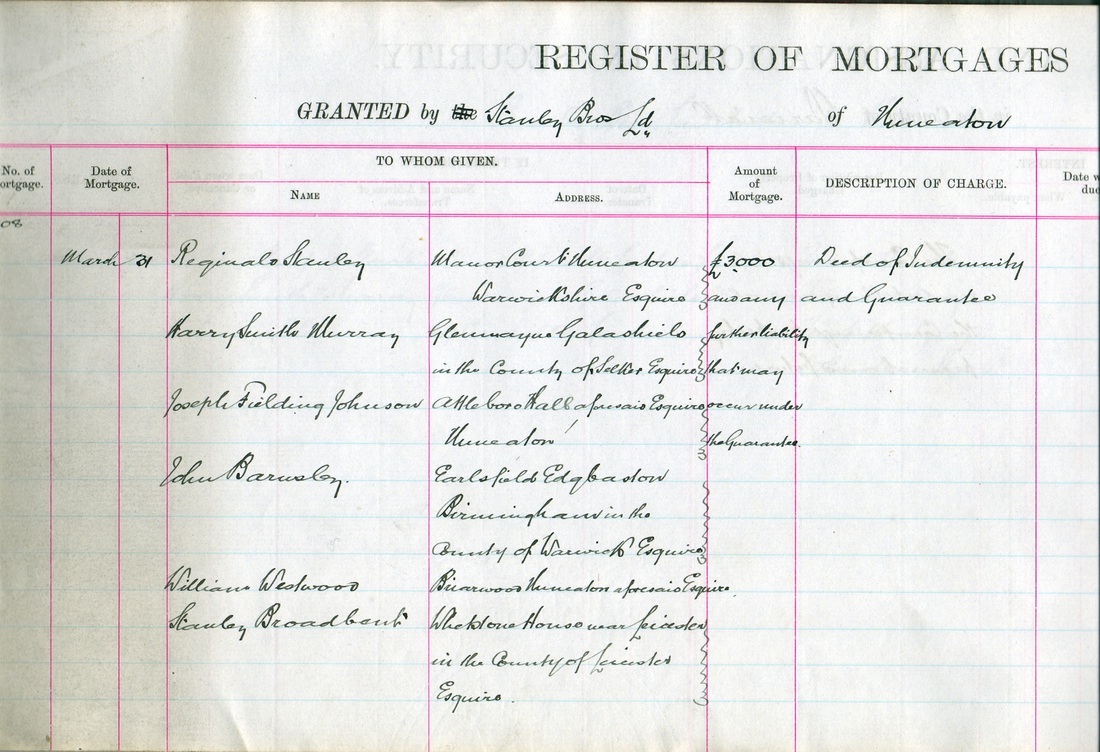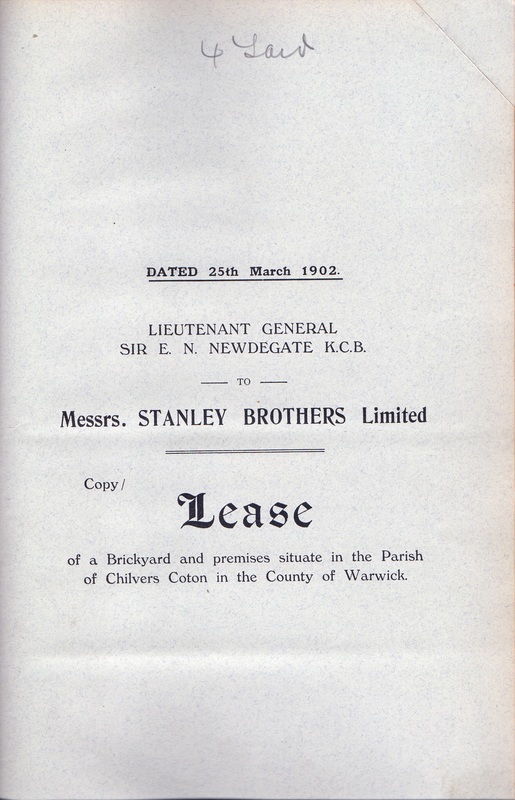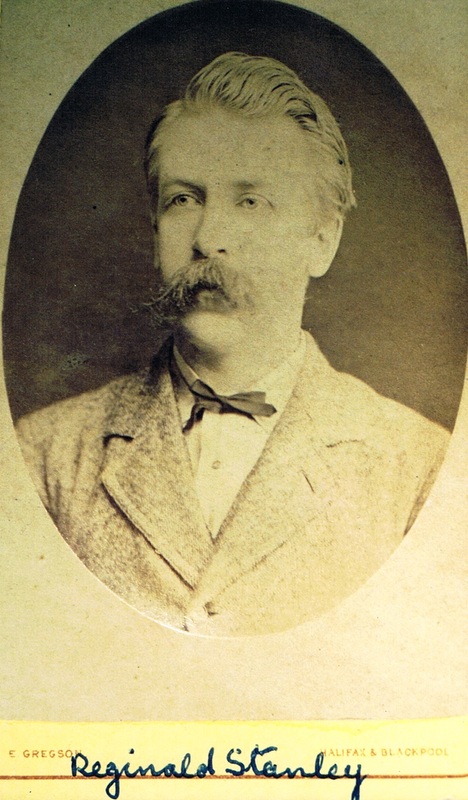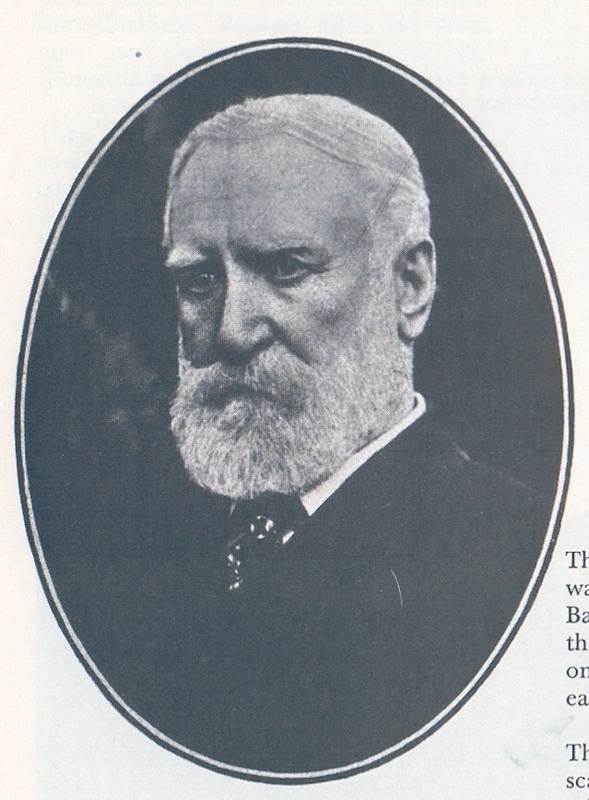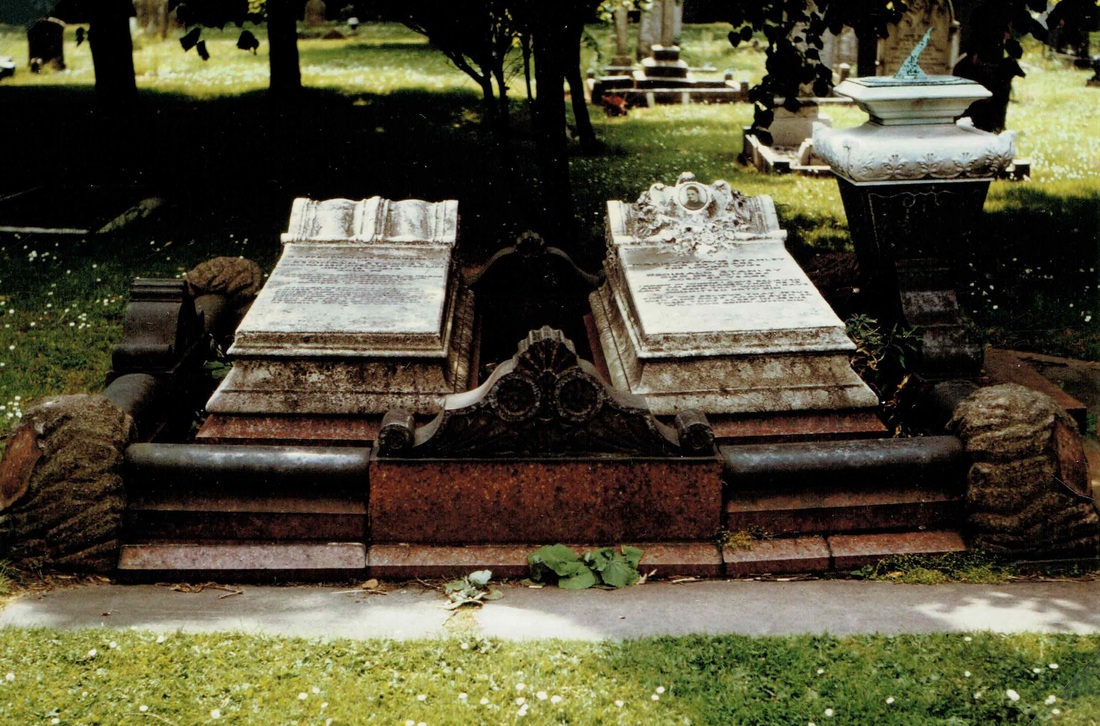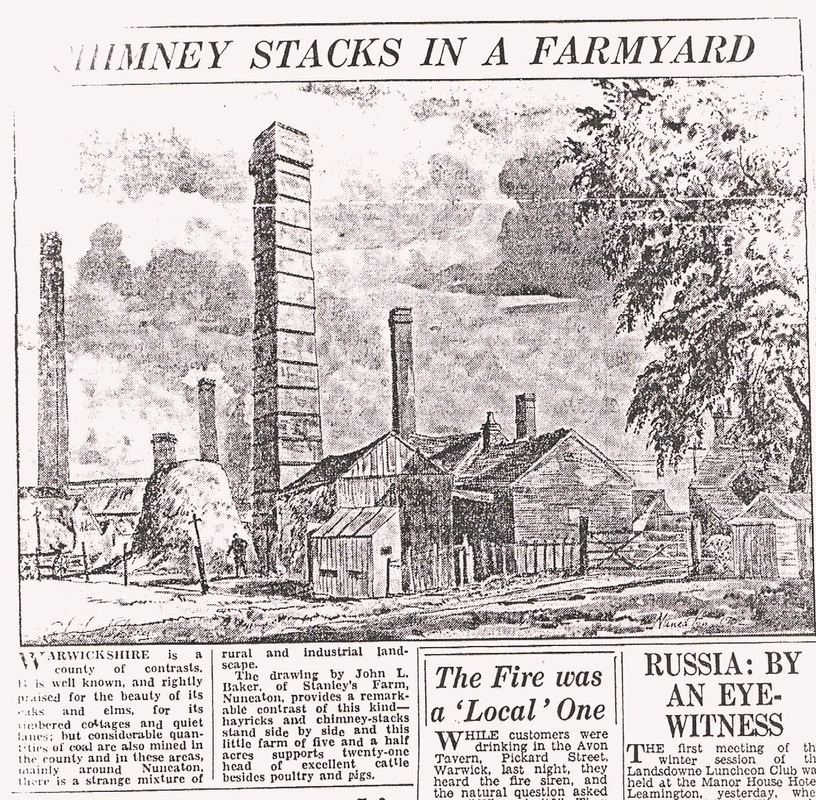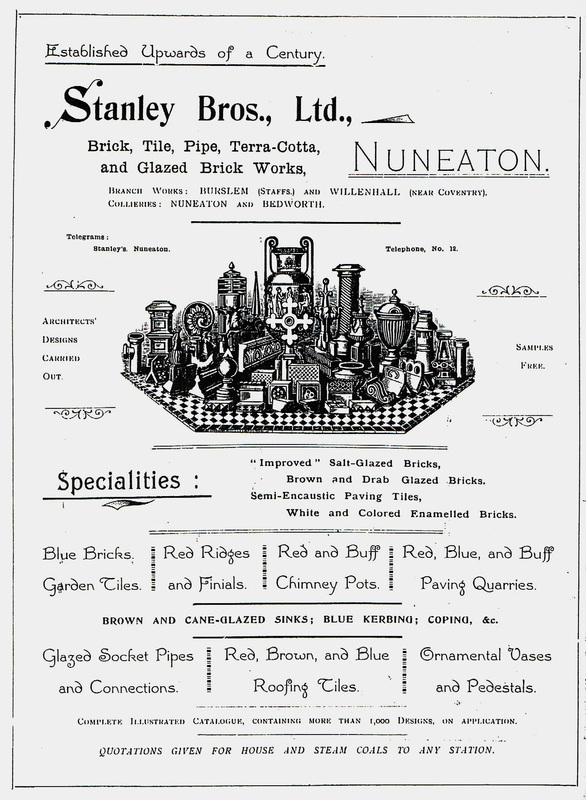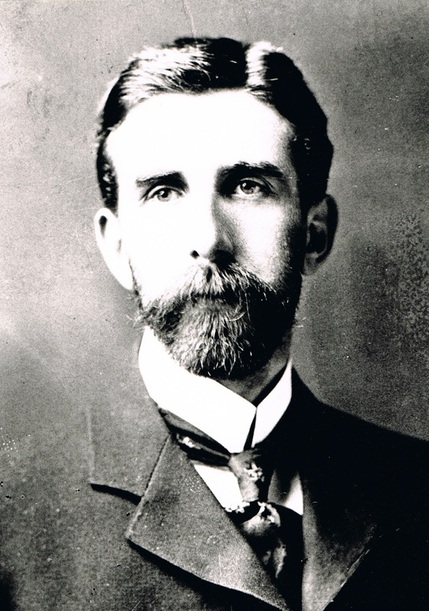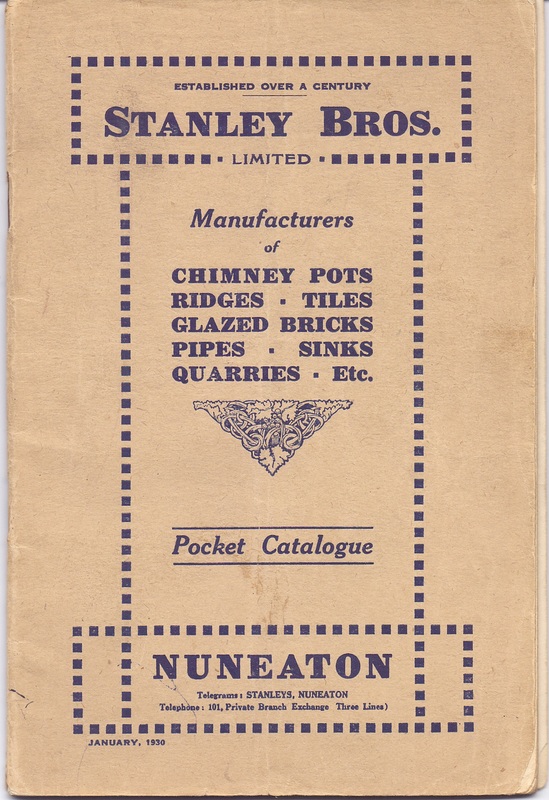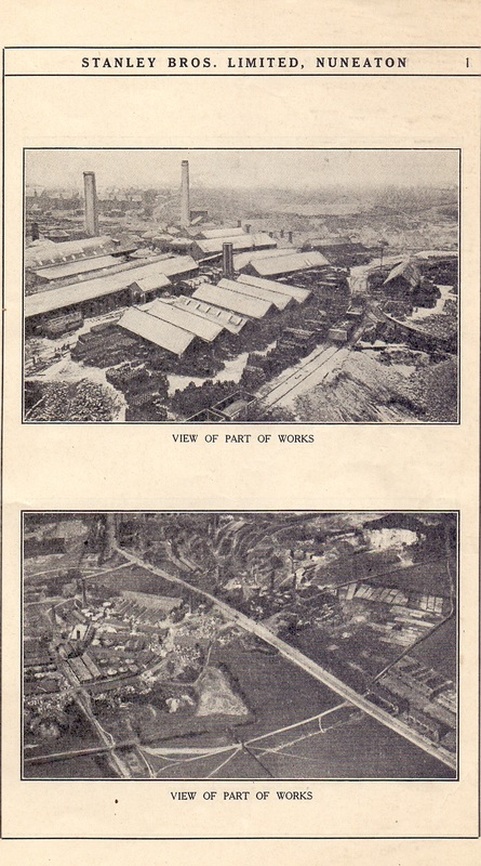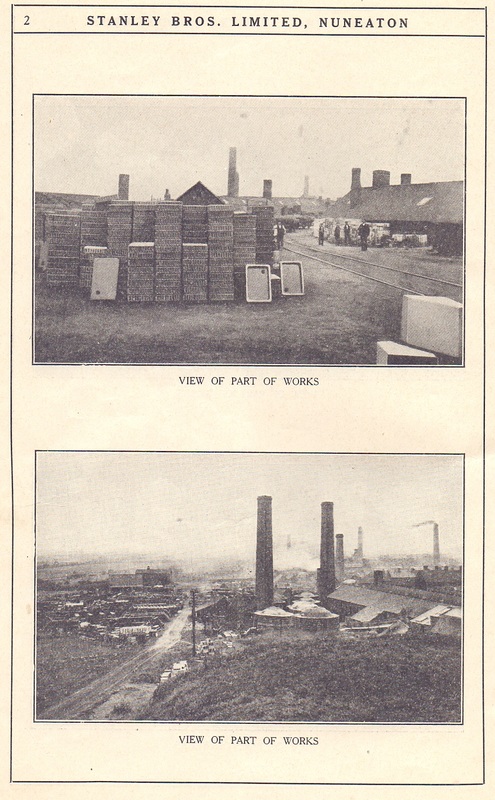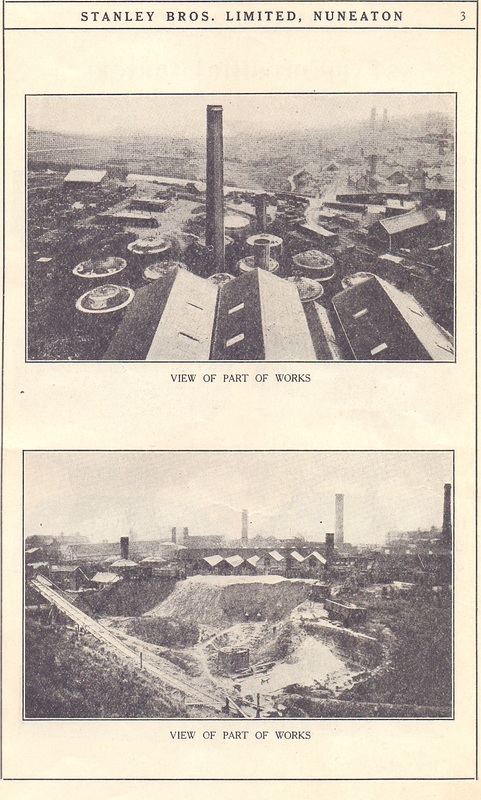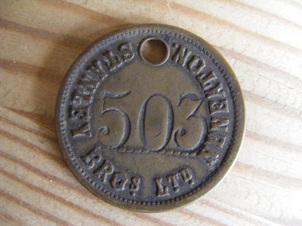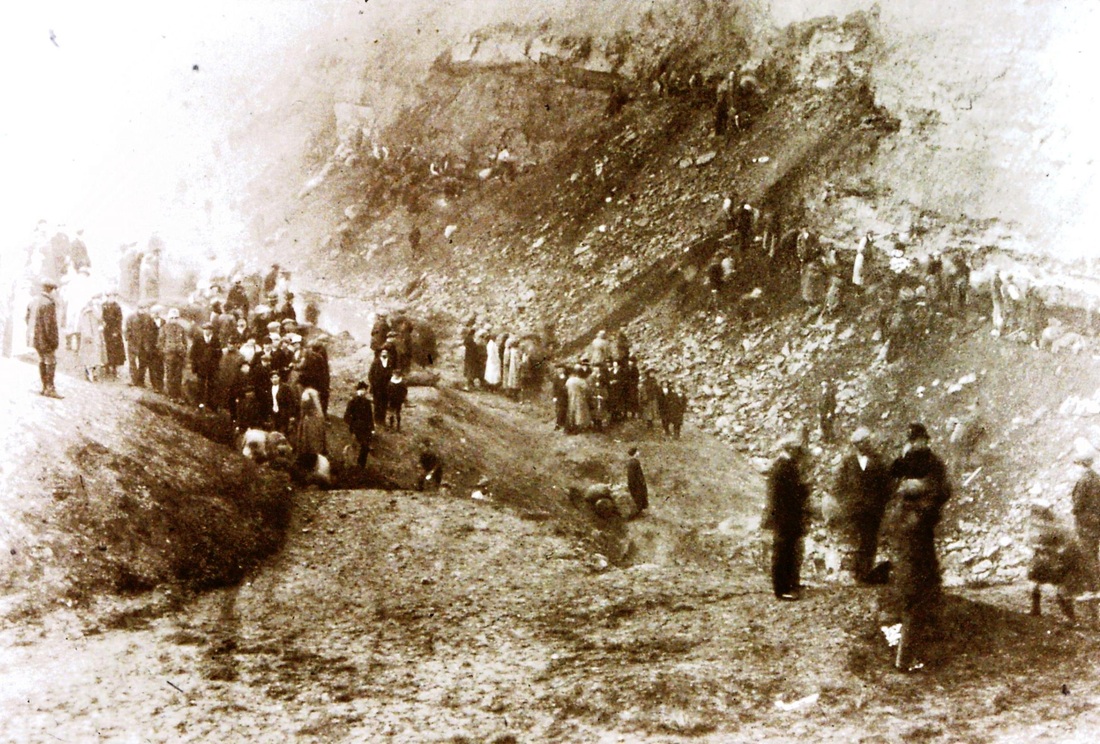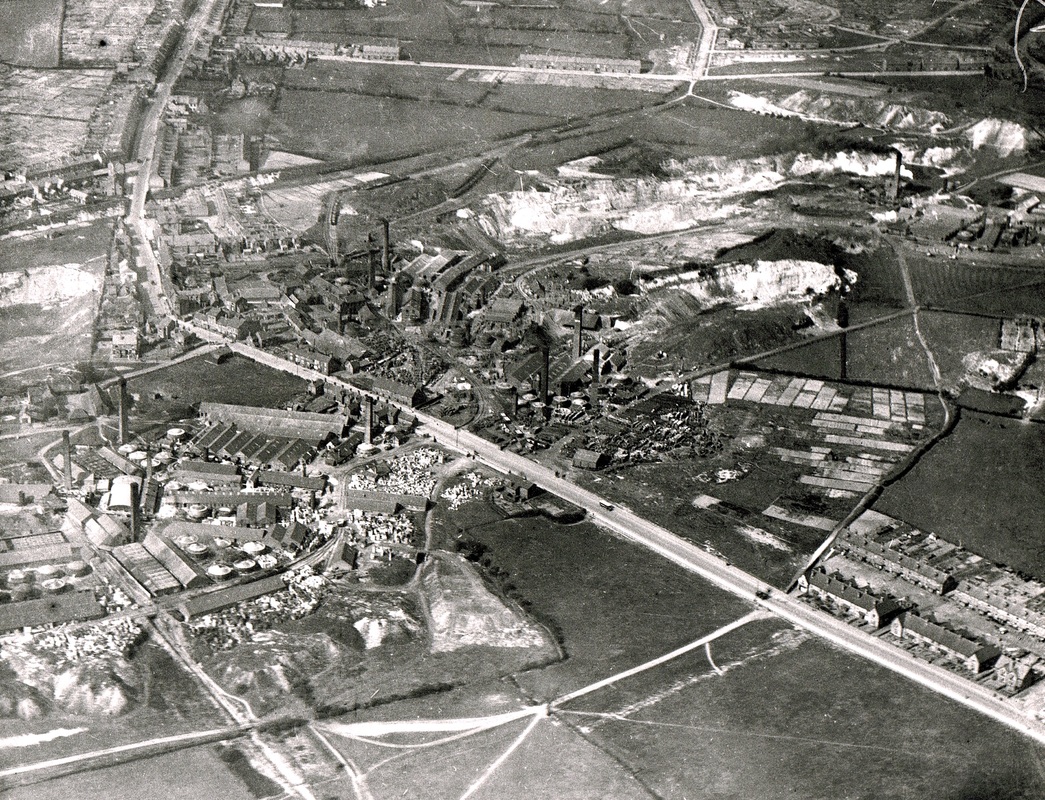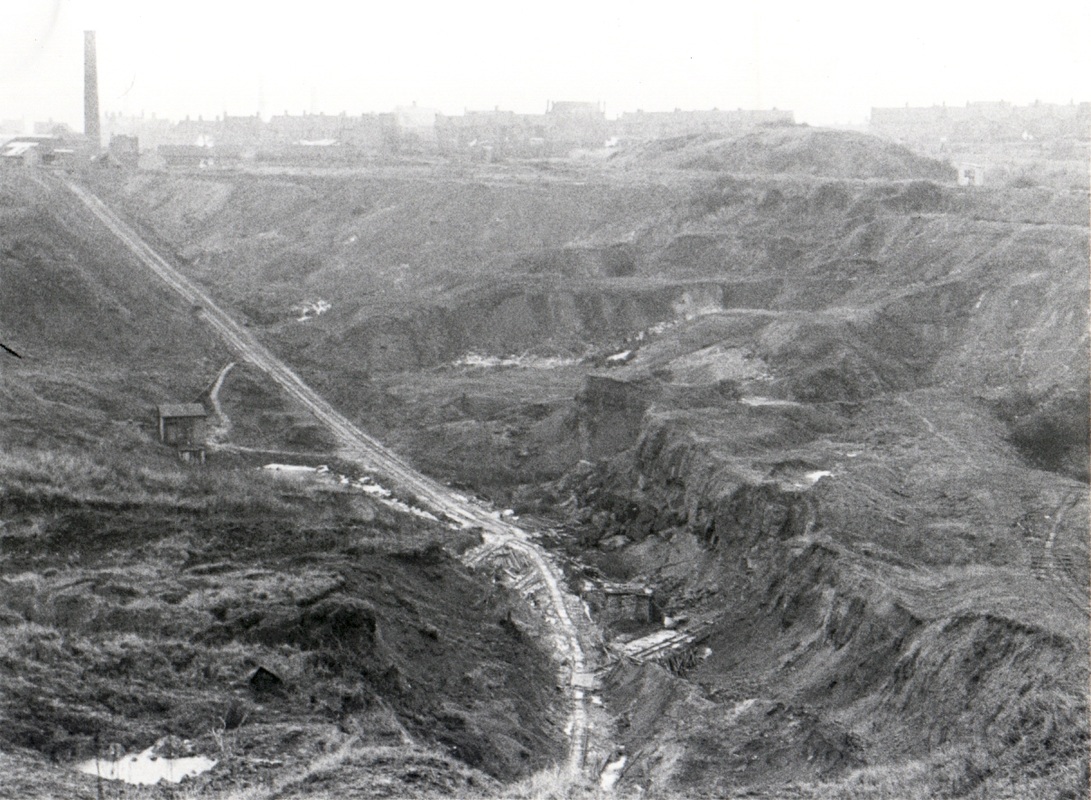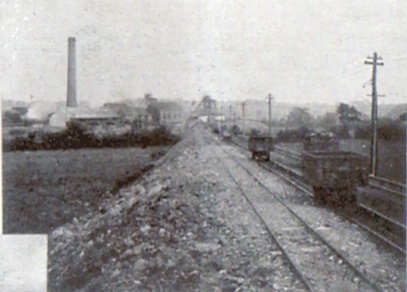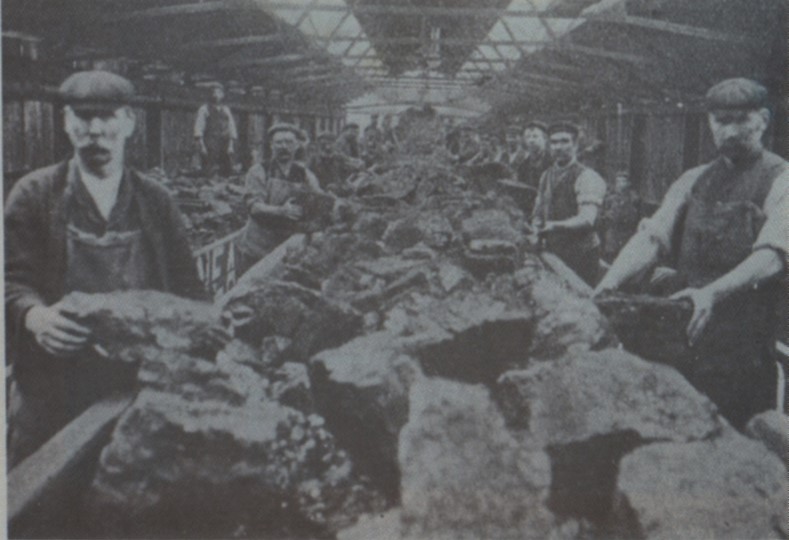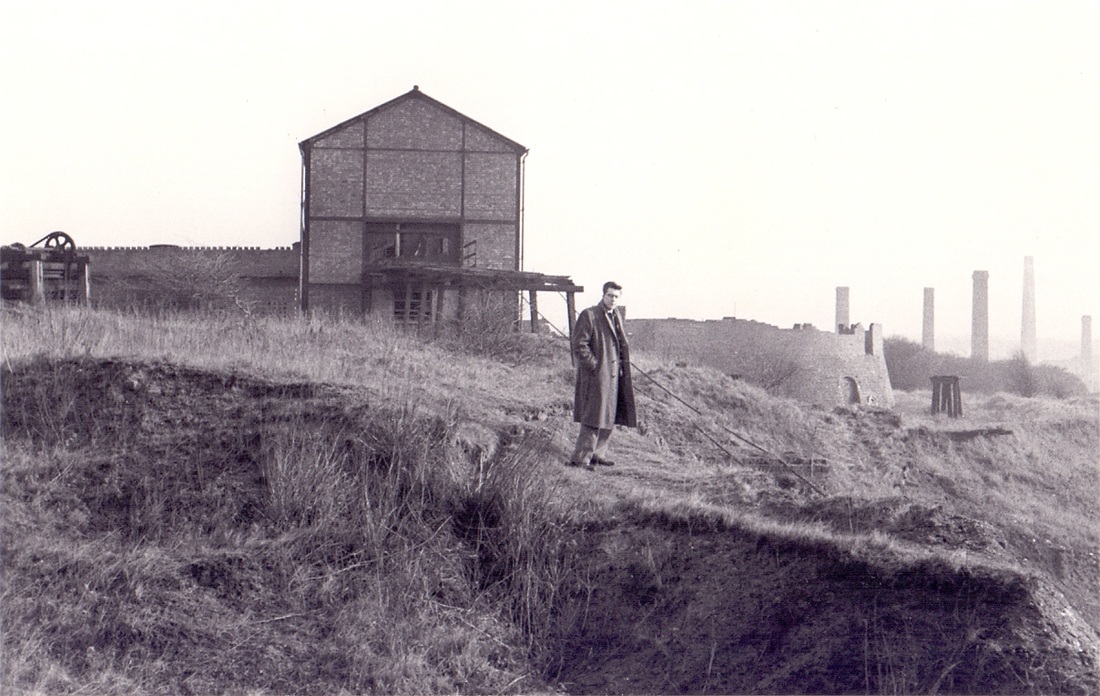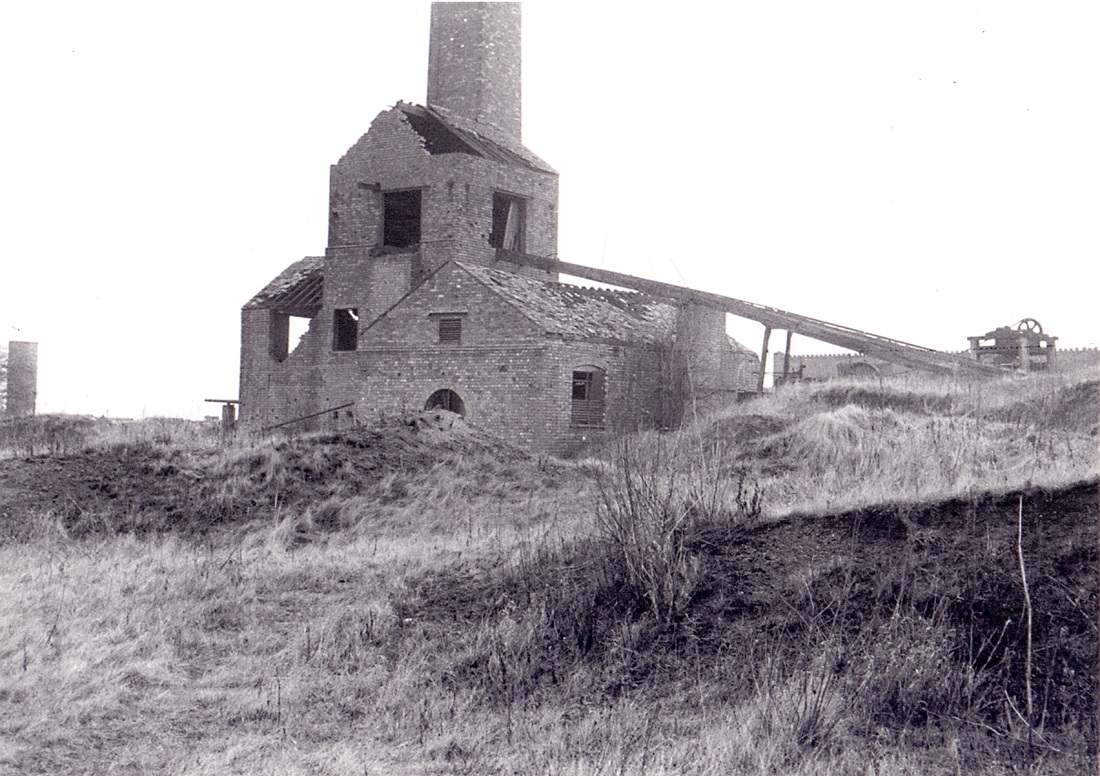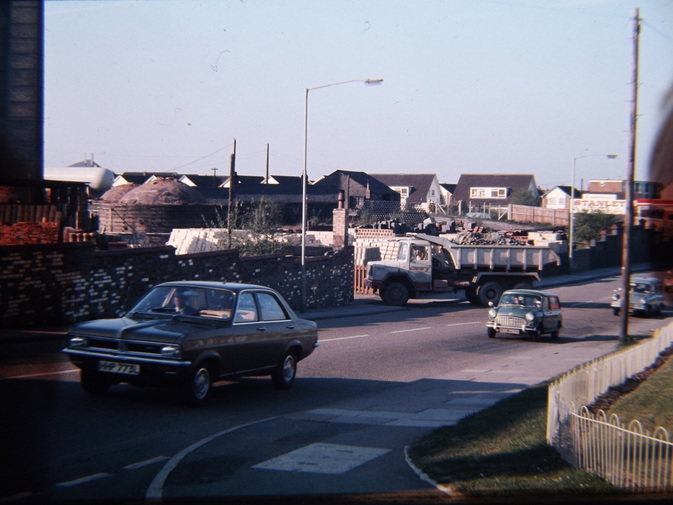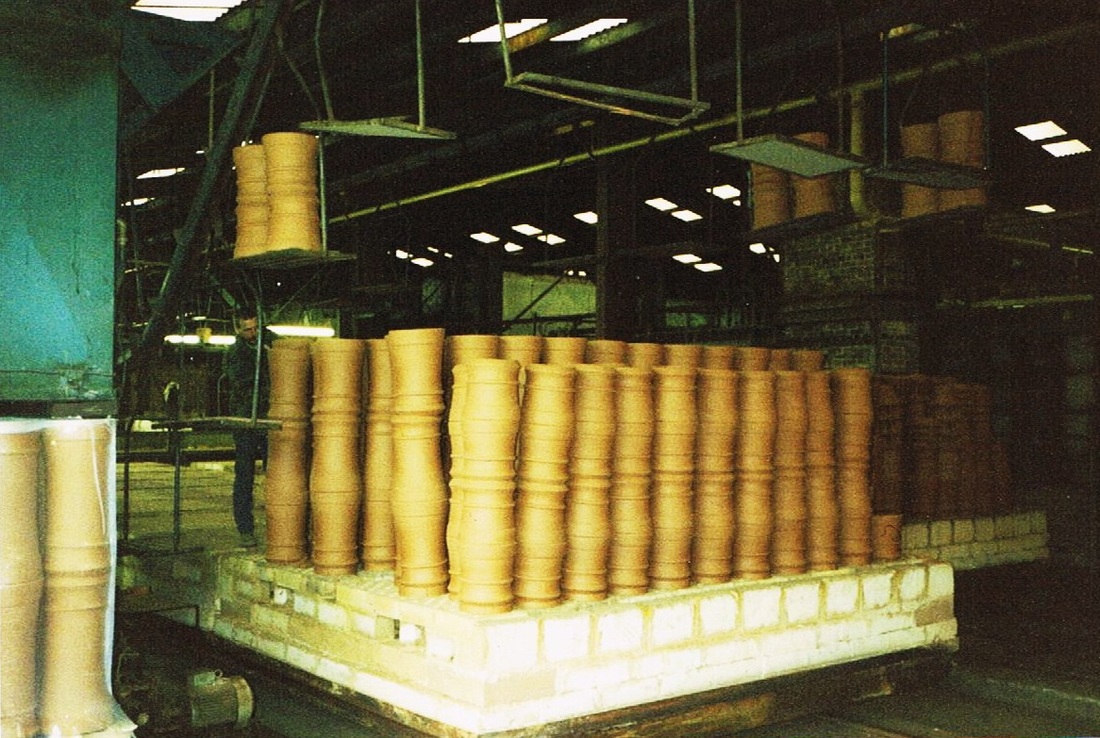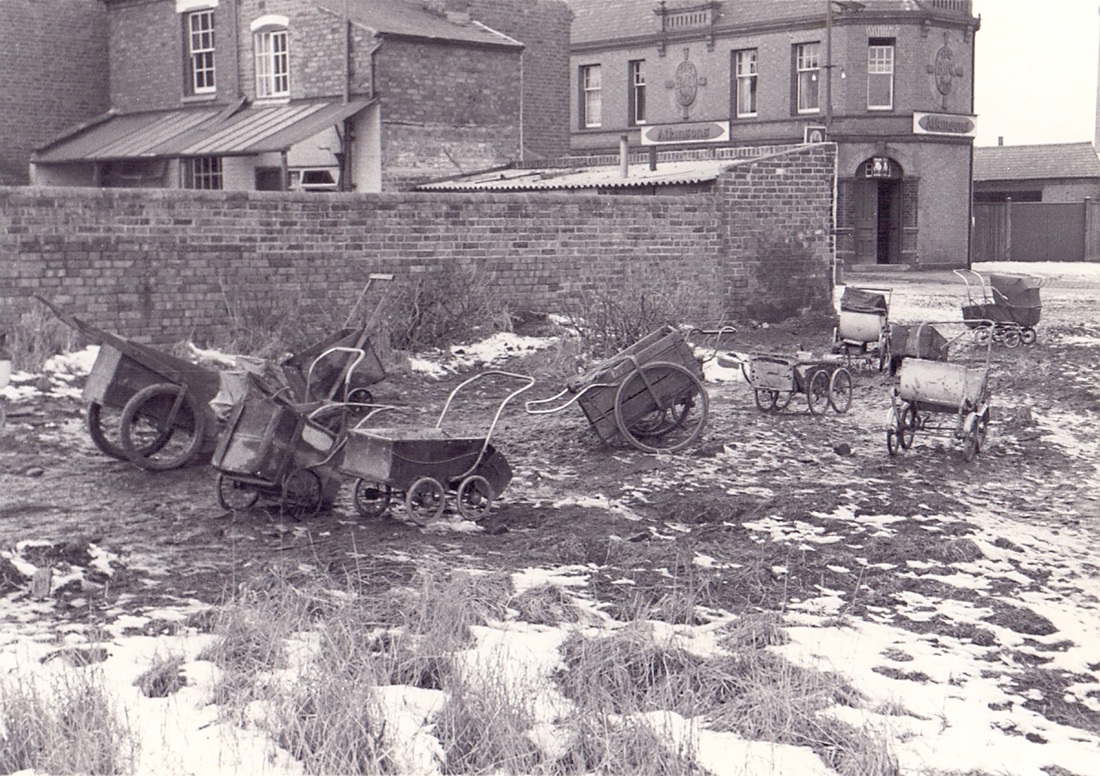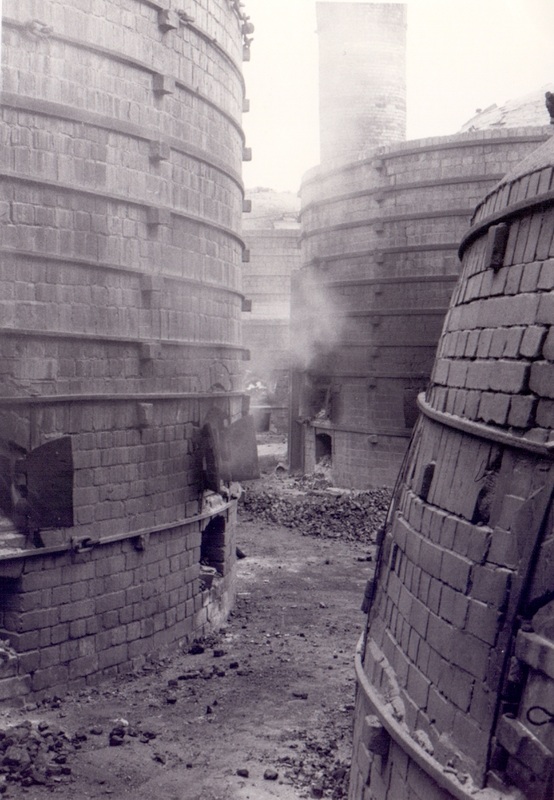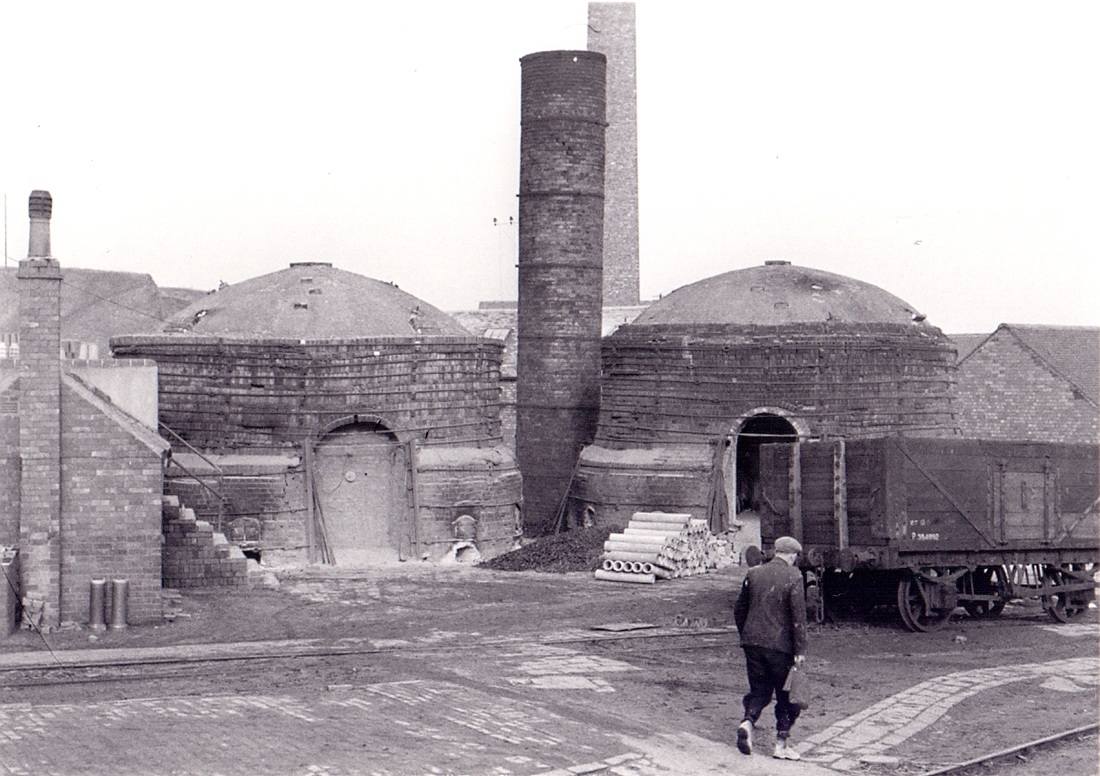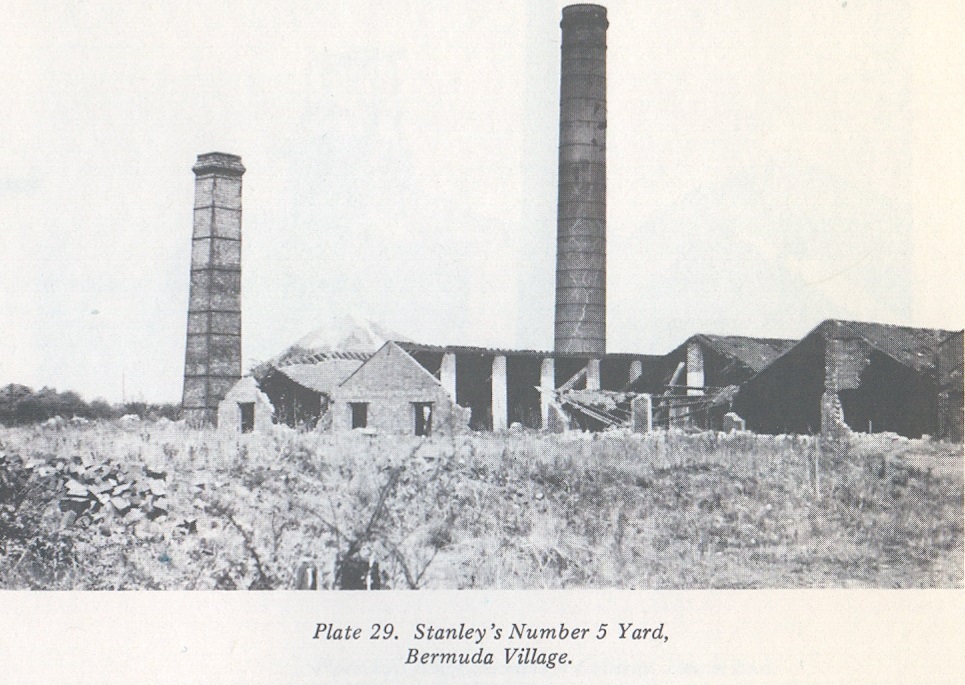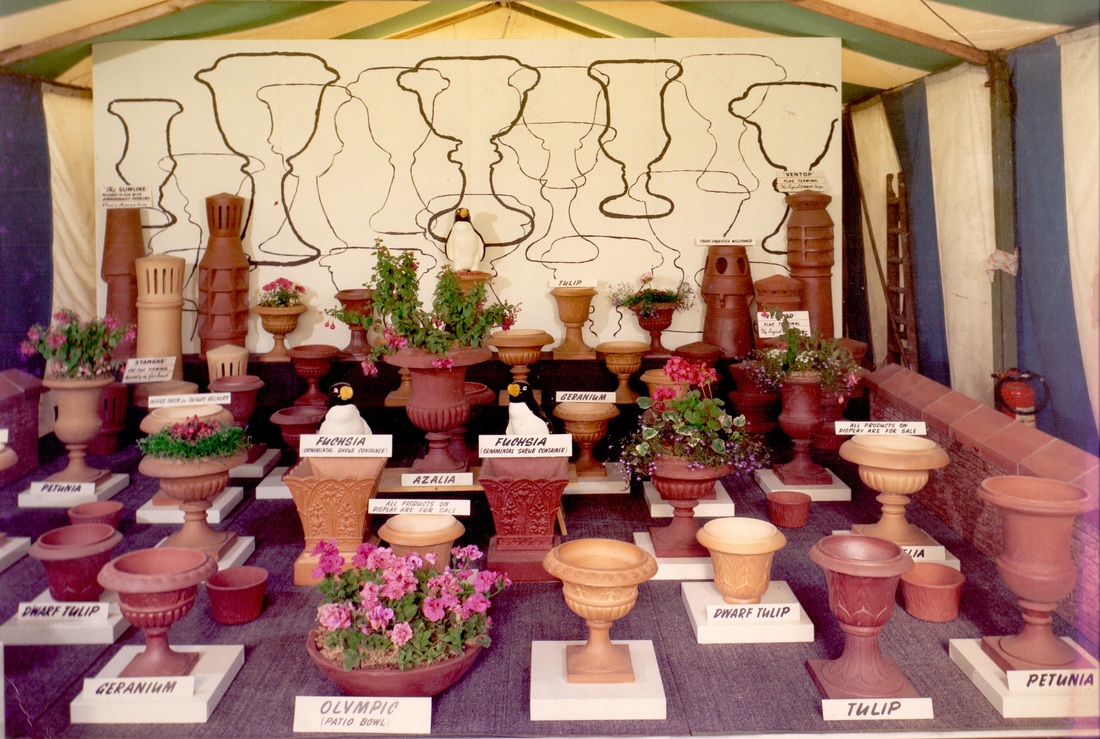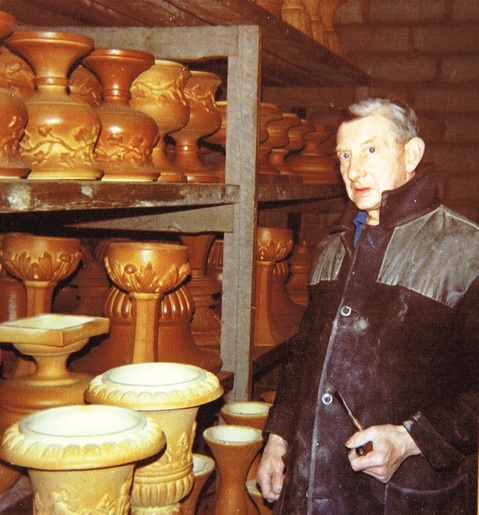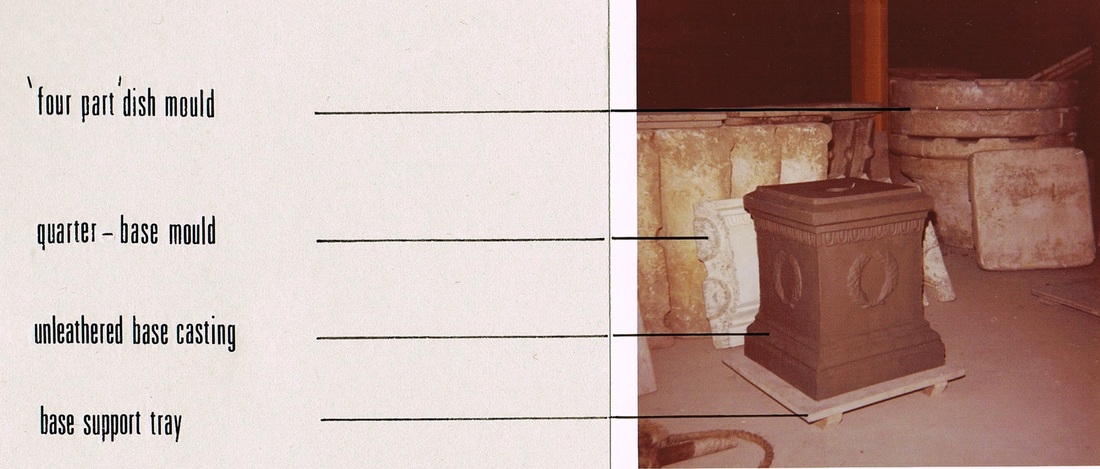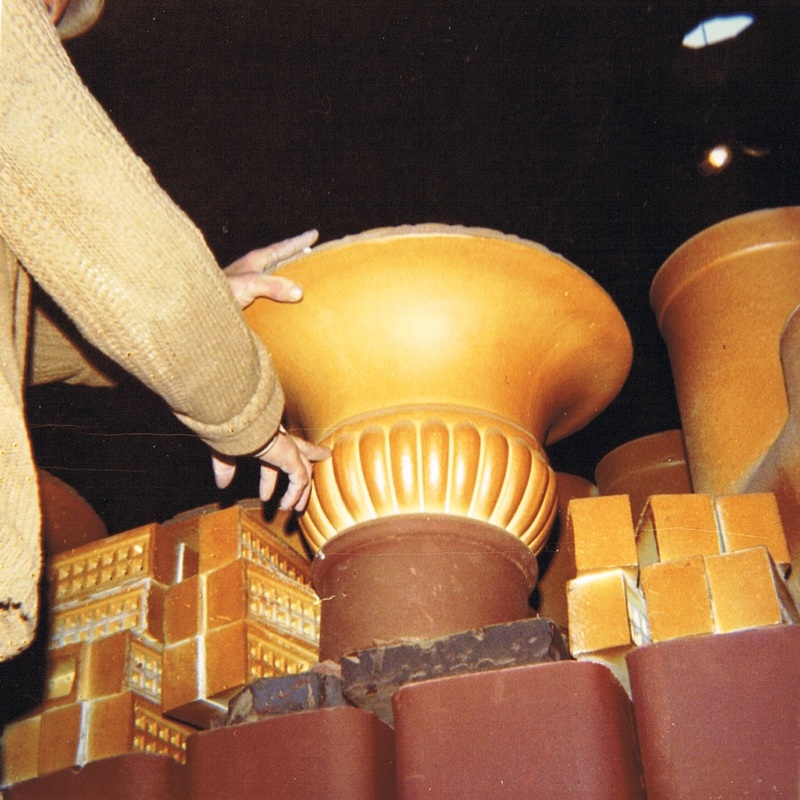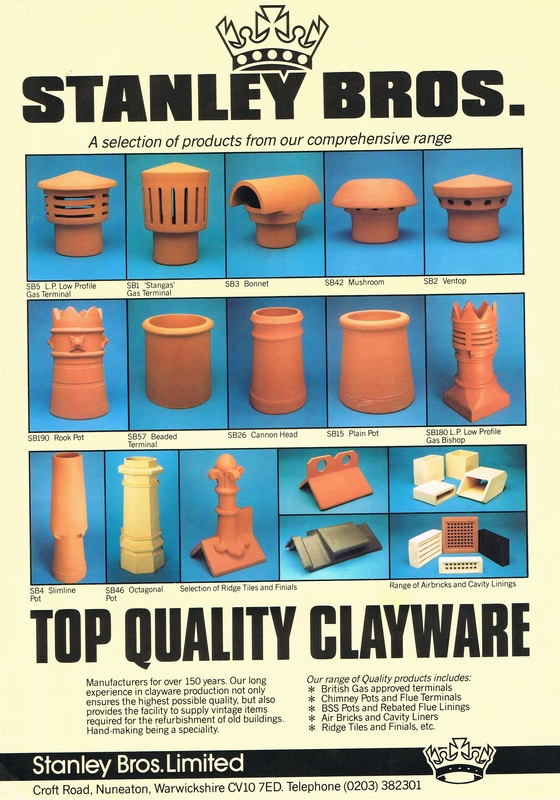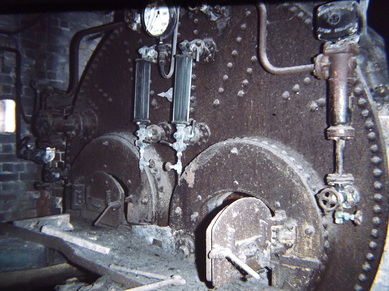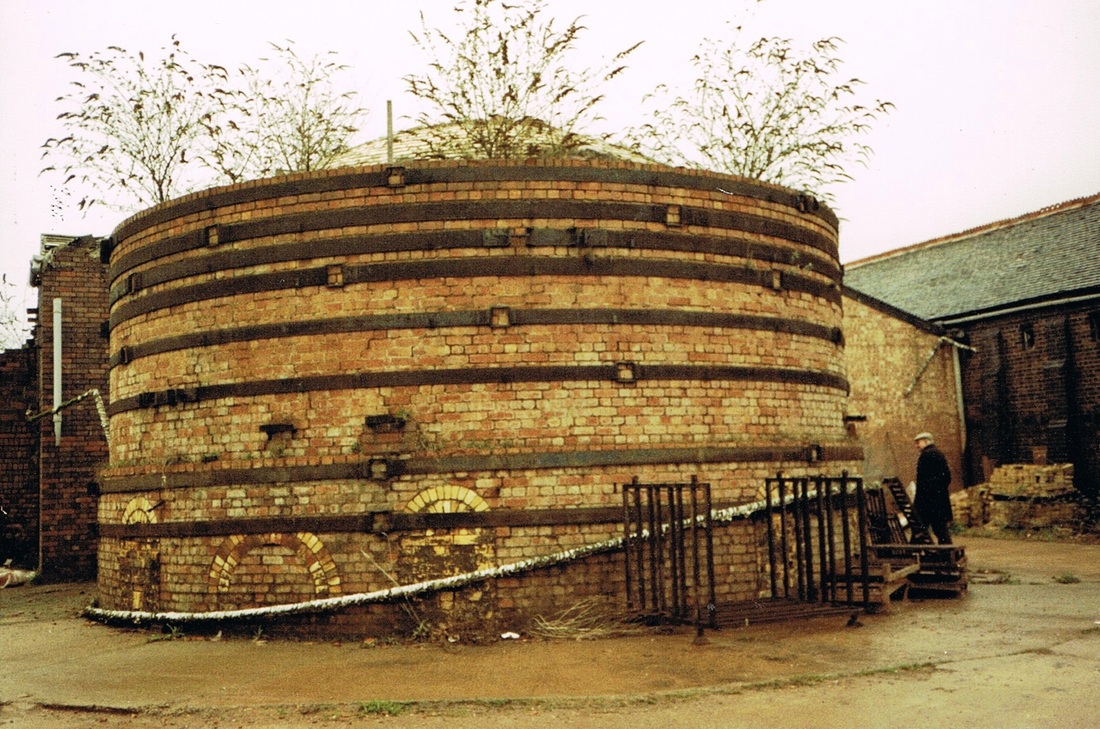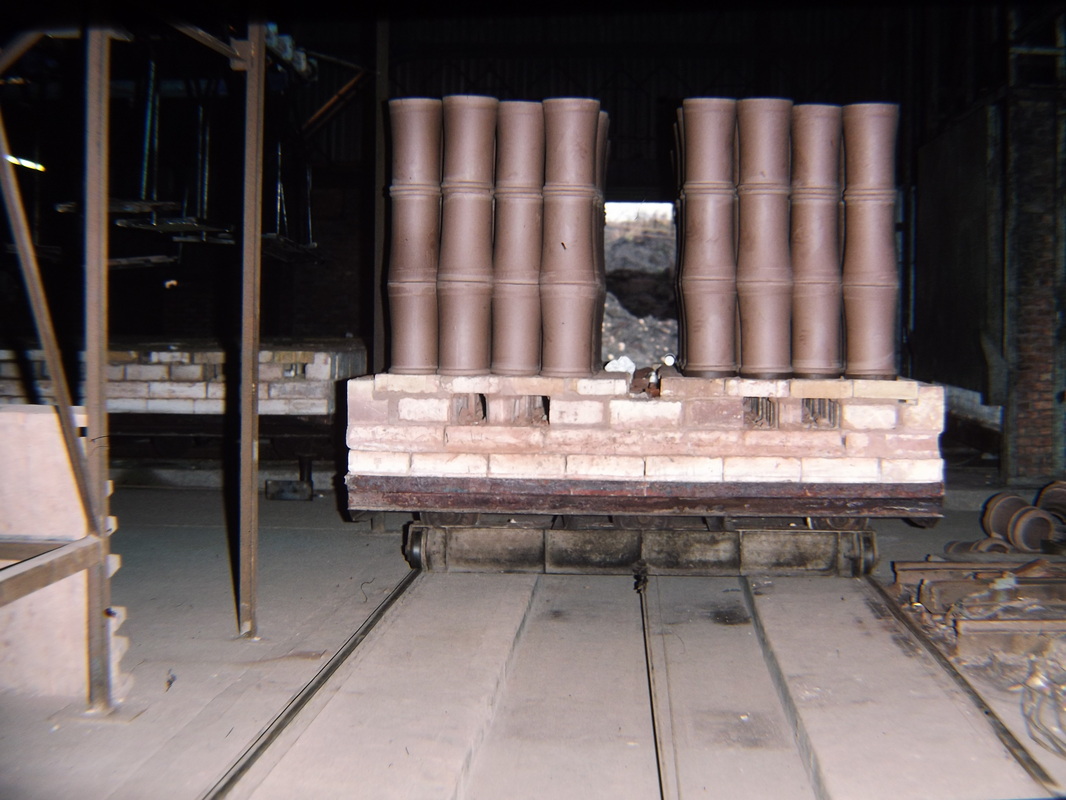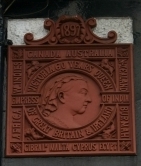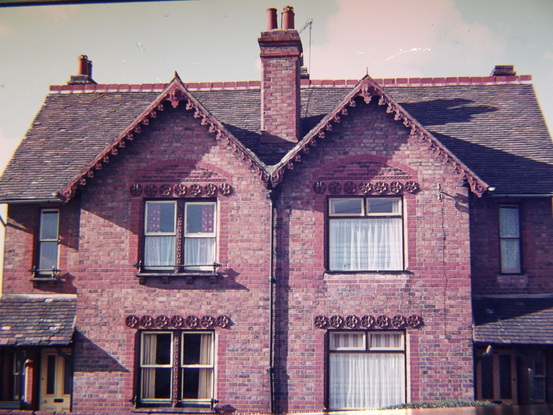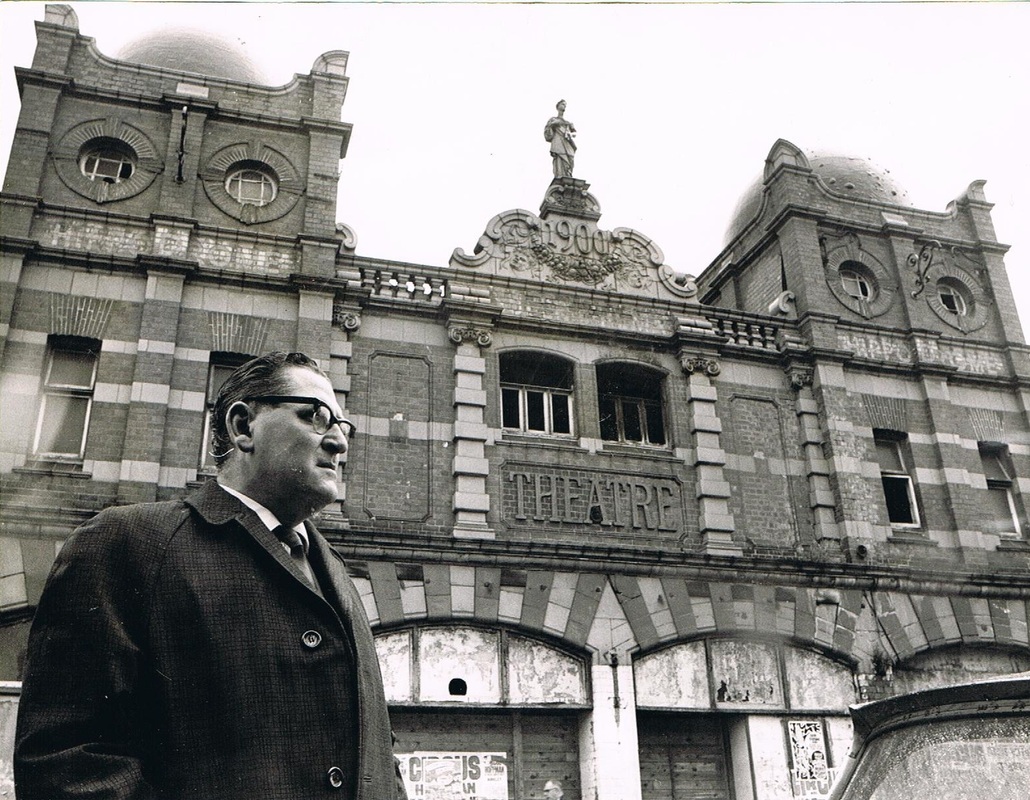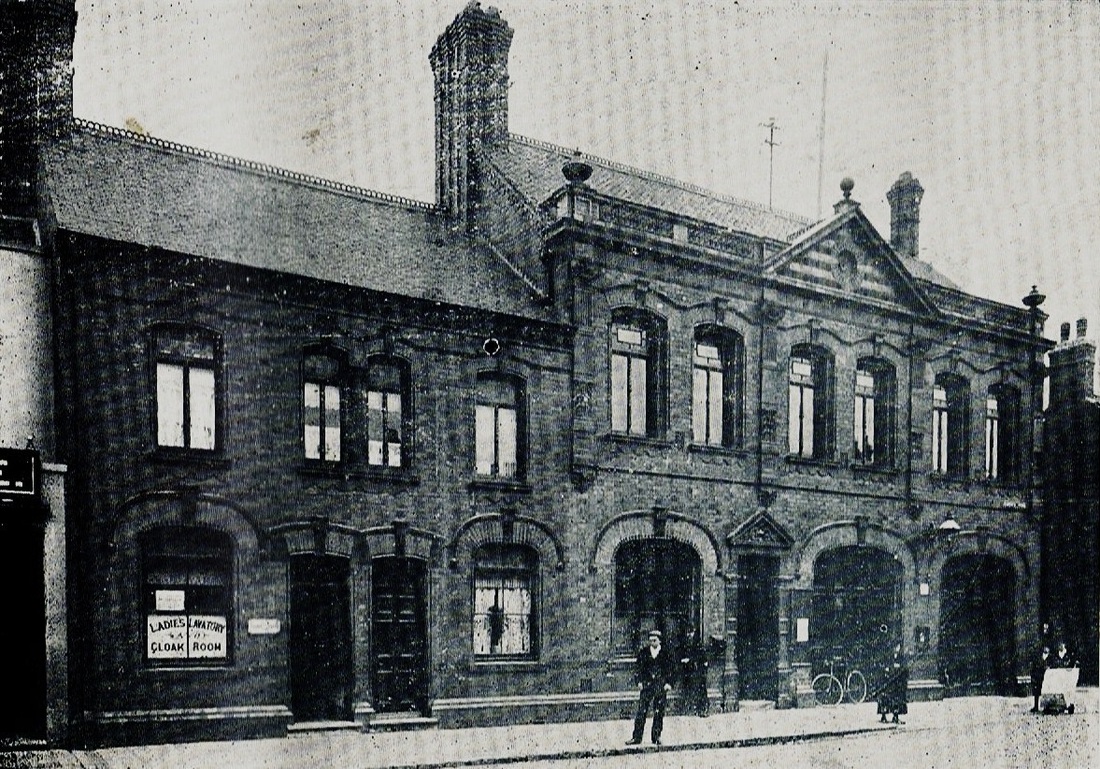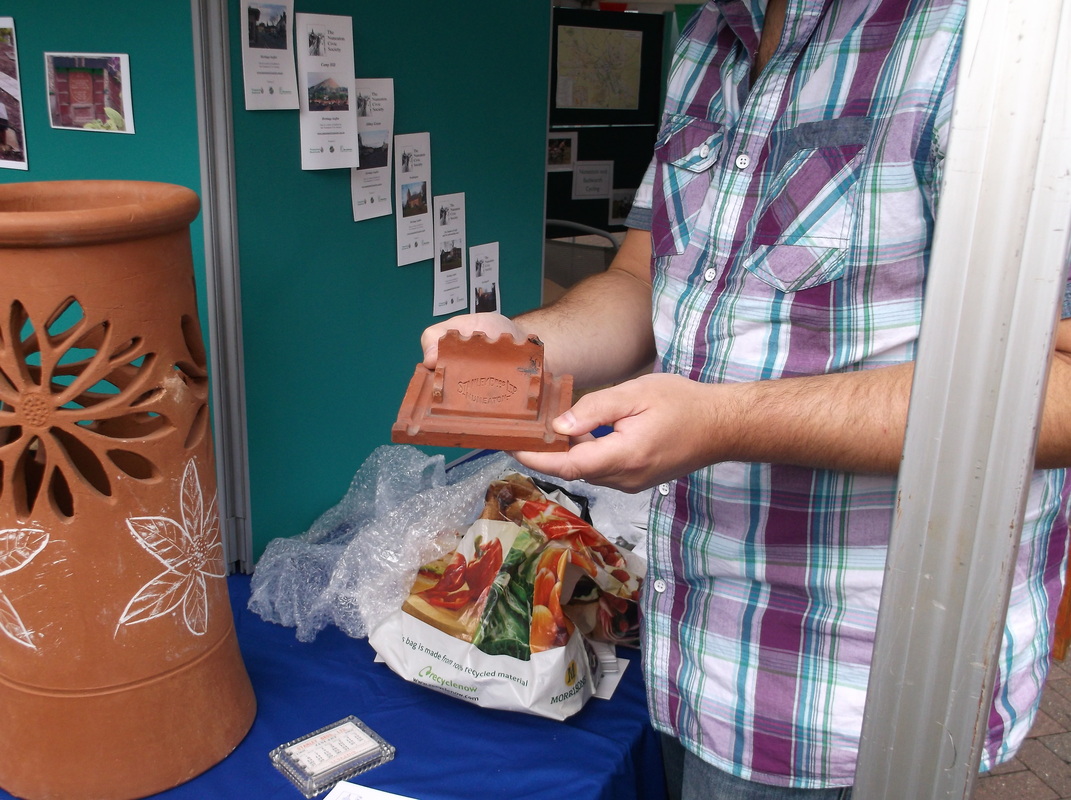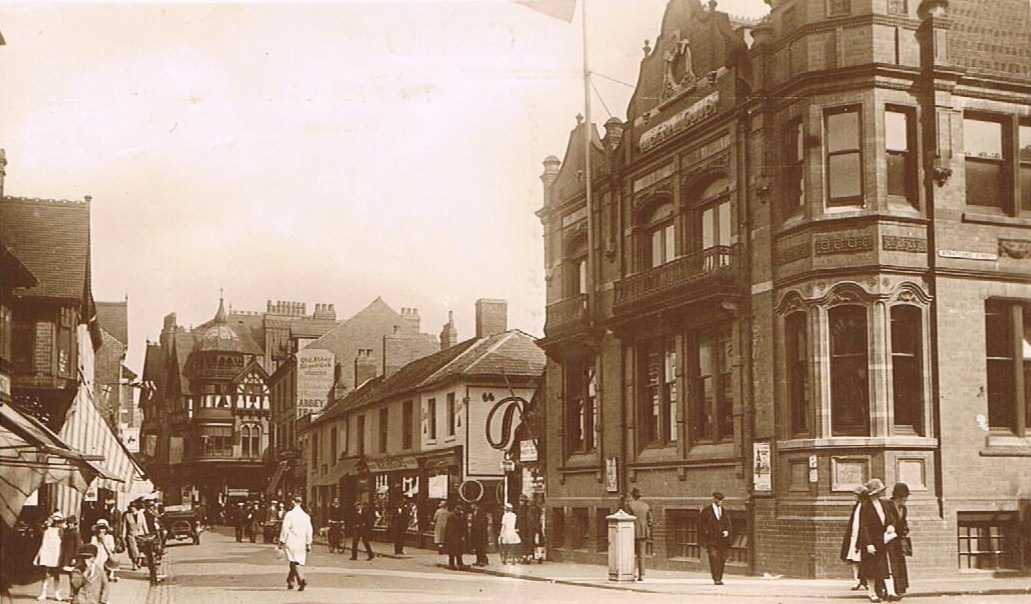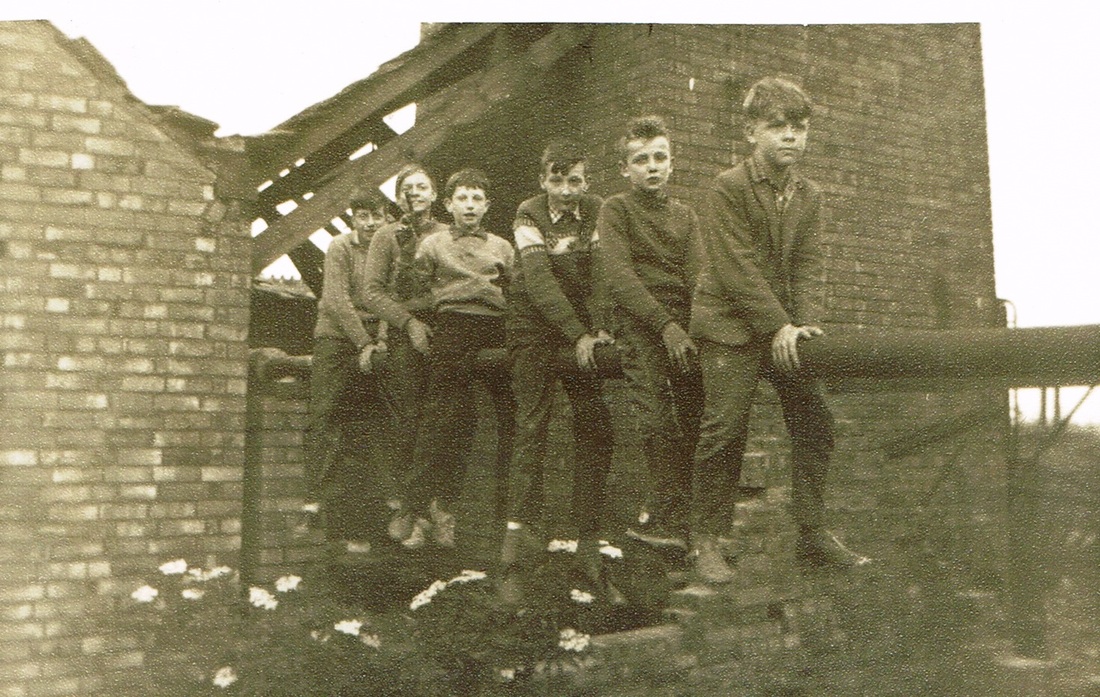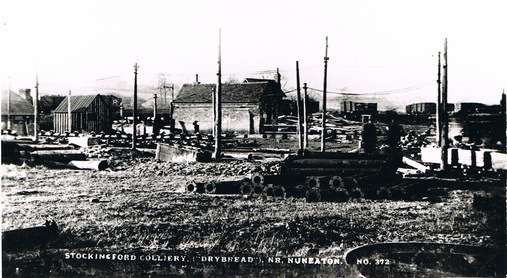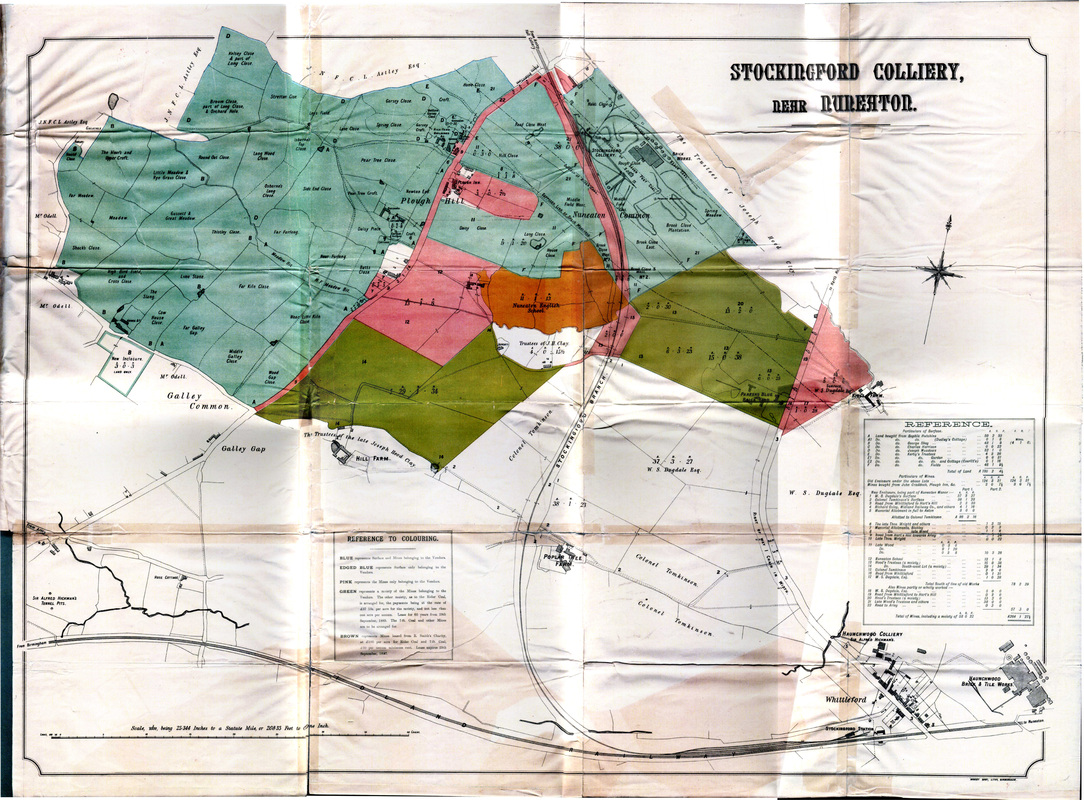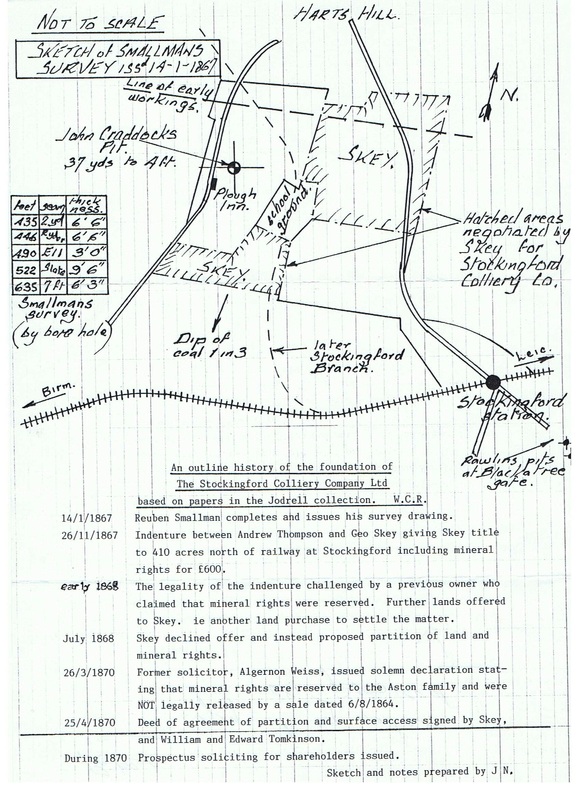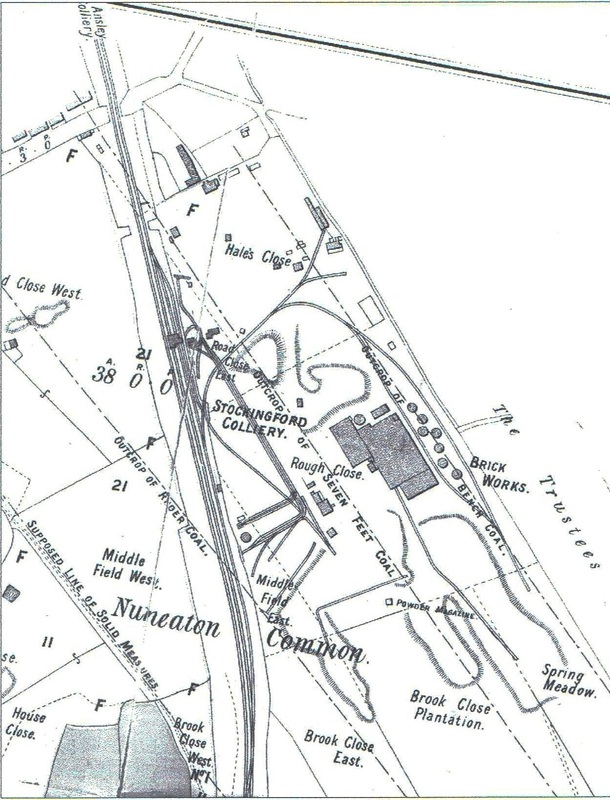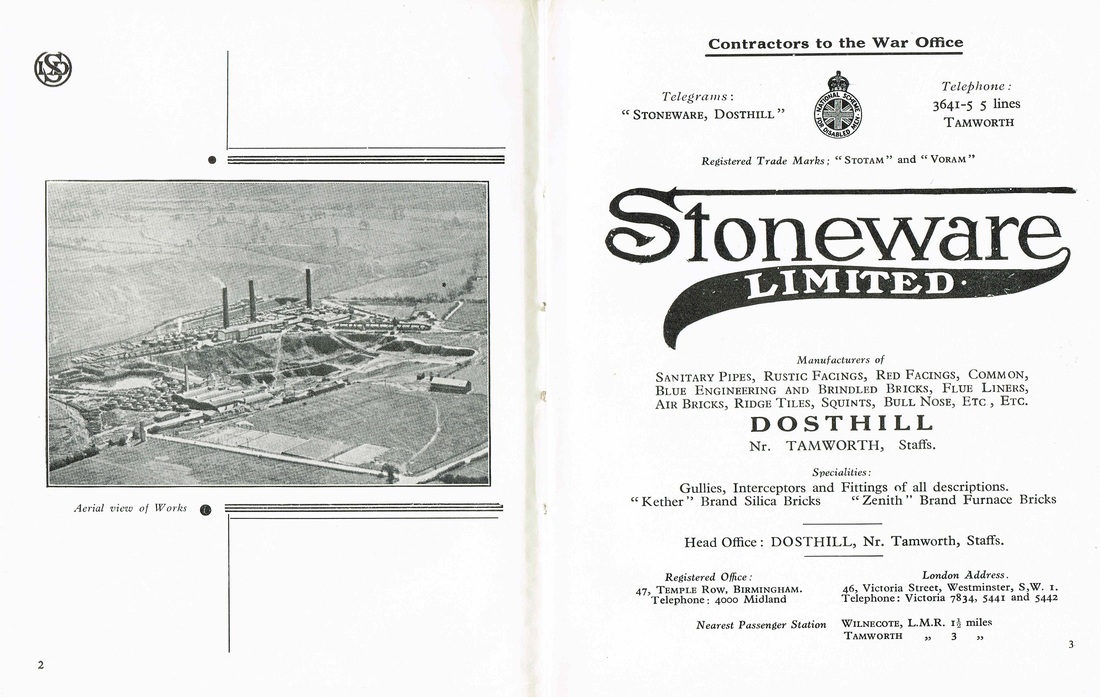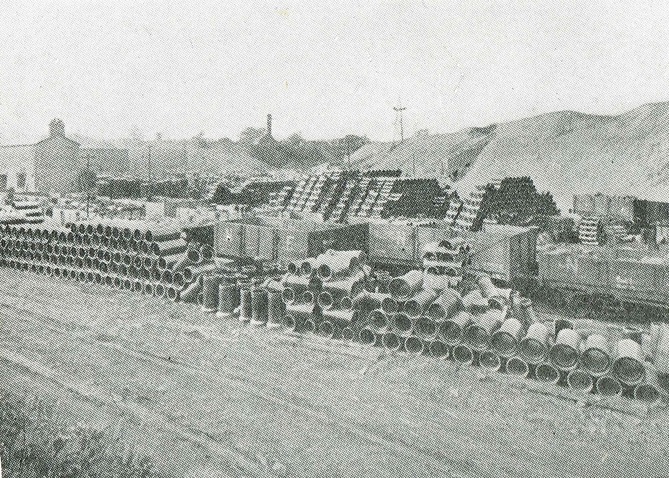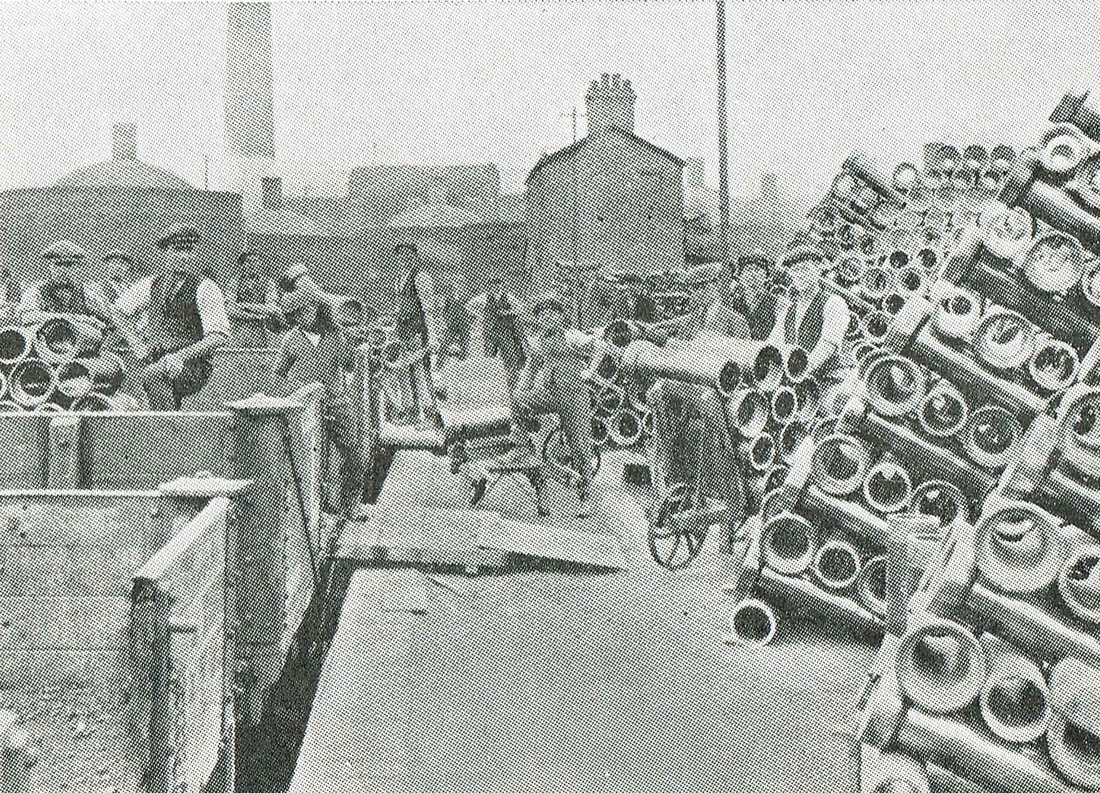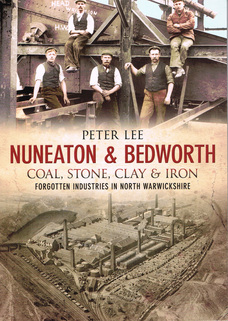
This book is now available through Amazon, Waterstones and all book shops which catalogues the various extractive industry commercial businesses back to the 17th century in the Nuneaton & Bedworth area. Some of the pictures here are from this book, but I will add new material and updates as they are received. (Currently out of print sold out but given sufficient interest can obtain a re-print)
The Extractive Industries of North Warwickshire
Coal Mining, Brick & Tile Making, Quarries, Ironstone & Ore Extraction
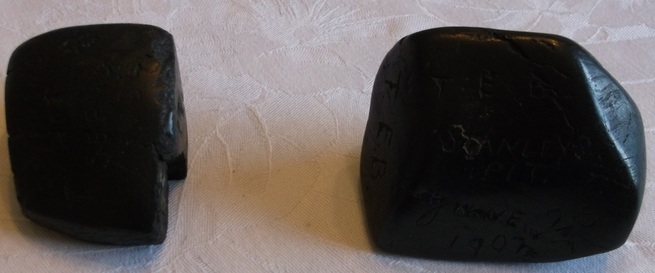 Two rare pieces of local coal. They have been polished and then engraved. The one on the left has the inscription: Drybread Pit, September 13th 1904. T.B.
The one on the right: Stanley's Pit, June 25th 1907. T.A.B.
Drybread Colliery was the Stockingford Colliery which closed in 1928.
Stanley's Pit, was Nuneaton (New) Colliery which closed in 1922. If you adjust your lap top screen you can see the engraving. (Tom Burgoyne (senior) courtesy of Ian Burgoyne)
Two rare pieces of local coal. They have been polished and then engraved. The one on the left has the inscription: Drybread Pit, September 13th 1904. T.B.
The one on the right: Stanley's Pit, June 25th 1907. T.A.B.
Drybread Colliery was the Stockingford Colliery which closed in 1928.
Stanley's Pit, was Nuneaton (New) Colliery which closed in 1922. If you adjust your lap top screen you can see the engraving. (Tom Burgoyne (senior) courtesy of Ian Burgoyne)
Although this section is largely a photographic archive and map area, it will also be a definitive catalogue of all the industrial undertakings in the area over time for the whole of North Warwickshire, although fuller and highly detailed files may be found in the Archives/Documents/Articles section, if a more detailed record is available. If this is applicable you will see the note: see file in Archives/Documents/Articles section for more details, in the caption.
A review of all the collieries, quarries and brick yards in the North Warwickshire area and the known history of their businesses.
Alvecote Colliery
Alvecote Colliery Co. Ltd
Tamworth Colliery
Merged with Pooley Hall and Amington (in Staffordshire) Collieries to form North Warwick Colliery May 1952. Alvecote surface installations removed afterwards.
Tamworth Colliery
Merged with Pooley Hall and Amington (in Staffordshire) Collieries to form North Warwick Colliery May 1952. Alvecote surface installations removed afterwards.
Amington Colliery
Although in Staffordshire this colliery was merged into what became the North Warwick Colliery in June 1951 when it was merged with Alvecote Colliery and Pooley Hall Colliery. After the merger coal winding, screening and despatch were centralised on Pooley Hall Colliery. Amington shafts were retained for manriding and ventilation without rail connection. Alvecote colliery shafts were capped and surface equipment dismantled shortly after merger. The merged workings closed April 1965.
Ansley Hall Coal & Iron Co. Ltd.,
Ansley Hall Colliery and Brickworks.
Ansley Hall Coal & Iron Co. Ltd
Sunk 1873-4, rail connected in September 1876.
National Coal Board Nr. 4 Area 1.1.1947
Closed 30th November 1959
Brickworks closed 13th December 1959
Part of the site became Ansley Hall Area Workshops opened June 1959 closed 15th November 1986.
Sunk 1873-4, rail connected in September 1876.
National Coal Board Nr. 4 Area 1.1.1947
Closed 30th November 1959
Brickworks closed 13th December 1959
Part of the site became Ansley Hall Area Workshops opened June 1959 closed 15th November 1986.
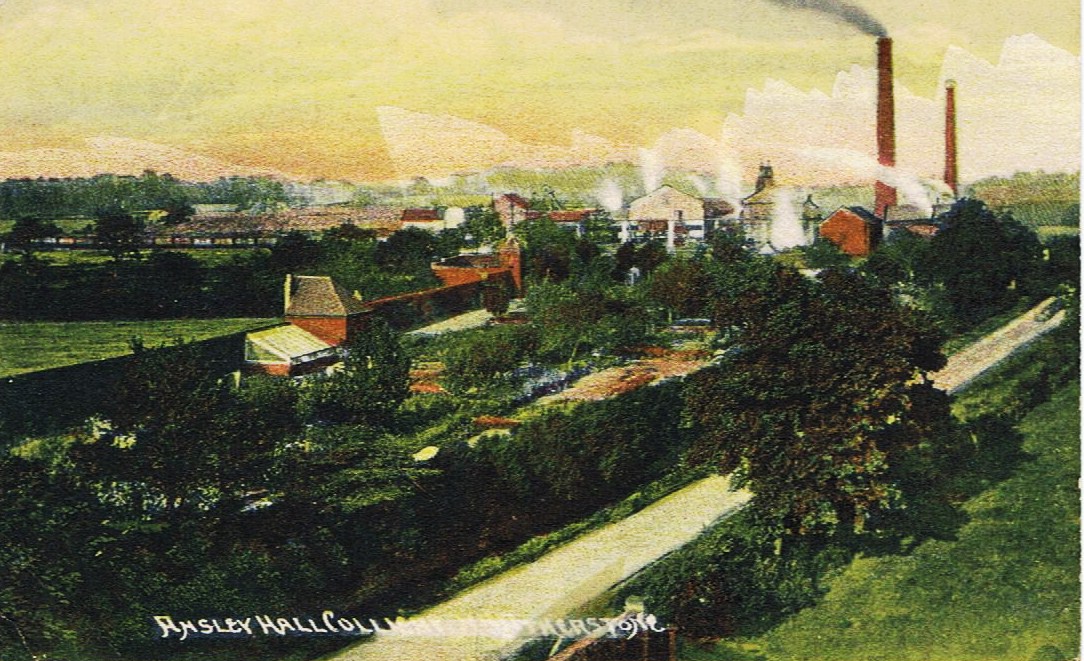
Ansley Hall Colliery c. 1910. The road in the foreground leads to Coleshill and Tamworth. The garden on the left is part of the Ansley Hall estate, the Hall itself being used as a vantage point to take this picture. Ansley Hall Colliery can be seen in the distance. The mansion was being used as the Colliery offices.
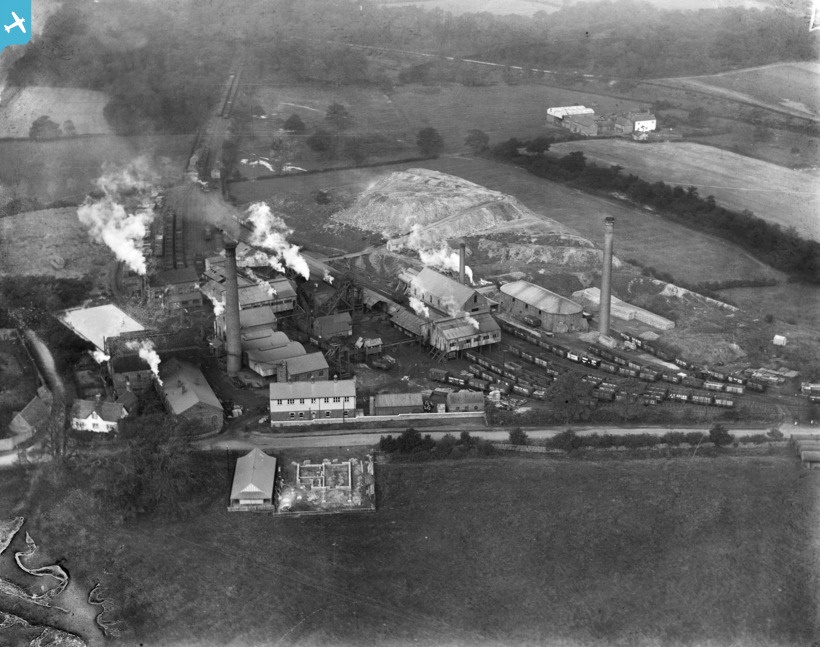
Ansley Hall Colliery c. 1920's with the pit head in the centre. Sidings full of coal wagons and the spur to the Ansley Hall (M.R) Stockingford Branch) leading off to the top. It is obscured from view here but the junction at the top curved to the left and over a bridge over Ridge Lane and led out on to an embankment to an interchange point with the main line railway company known officially as "Green's Siding". This was named after Eli Green, resident of Oldbury Hall whose land this was built on. In fact the end formation of the railway at "Green's Siding" was built over the former Oldbury Colliery at one time owned and worked by Eli Green. Midland Railway engines worked up the branch which can be seen at the top of the picture on the right through the trees. There was a run round loop where the trees are and then out onto Green's siding so that the colliery loco could fetch the wagons in. The Ansley Hall, or as its official title was known "The Stockingford Branch" was the steepest railway in Warwickshire and it called for some specialised knowledge by train crews. For one thing the Midland Railway laid it out with very light construction so that the bridges could only resist the weight of a six coupled loco with low axle loadings. This was OK during MR days when all they had were little Class 2 or 3 six wheelers, but as the BR era dawned the railway officials needed new stronger motive power to work the branch so they drafted in some Lancs & Yorks 0-6-0's for this job. They were good strong engines but they left a lot to be desired in the braking department, so only 12 loaded wagons were let down the branch at a time for fear of the downward trajectory overtaking the poor brakes on the Lanky, and old enginemen have told me (PL) it could be a bit hair raising coming down the branch and sometimes it was only the last gradual rise up to the home signal at the end of the branch at the Stockingford yard end which arrested the increasing speed. Only about 25 empty wagons were allowed up the branch at any one time. For many years a regular loco on the branch (and by all accounts a great favourite with enginemen) was ex MR Class 3 0-6-0 Nr. 43786. The Class 3 MR 0-6-0 engines were much better than the Class 4 0-6-0 which the LMS built in great numbers to replace them, but the Class 4 0-6-0's were not allowed up the branch any way due to their axle loadings and Nuneaton shed did not have much use for this class. 43786 was transferred away from Nuneaton shed in September 1957 and withdrawn in November 1957. In later years Ivall Class 3 2-6-0's were used as their axle weight was in line with the bridge strength requirements. (Lee Randle Collection)
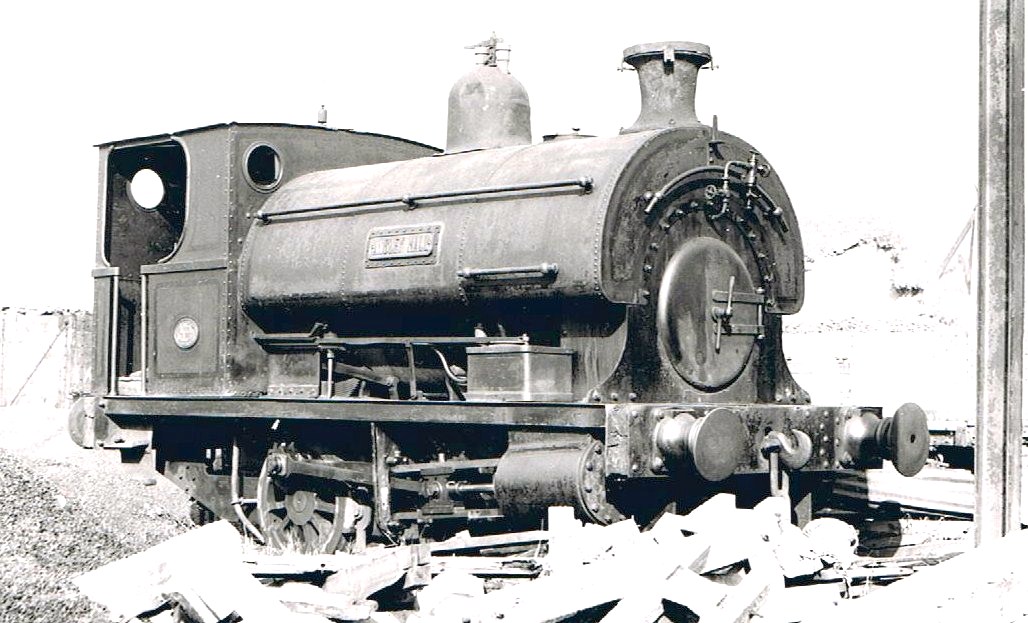
"Ansley Hall", a standard Peckett 0-4-0ST (works Nr.991/1905) purchased new, reboilered by Andrew Barclay in 1939 - hence the typical flat fronted Barclay smoke box door. After nationalisation it was transferred to Arley Colliery in March 1950, returned to Ansley Hall in June 1952 then to Binley Colliery in February 1960. It was scrapped there.
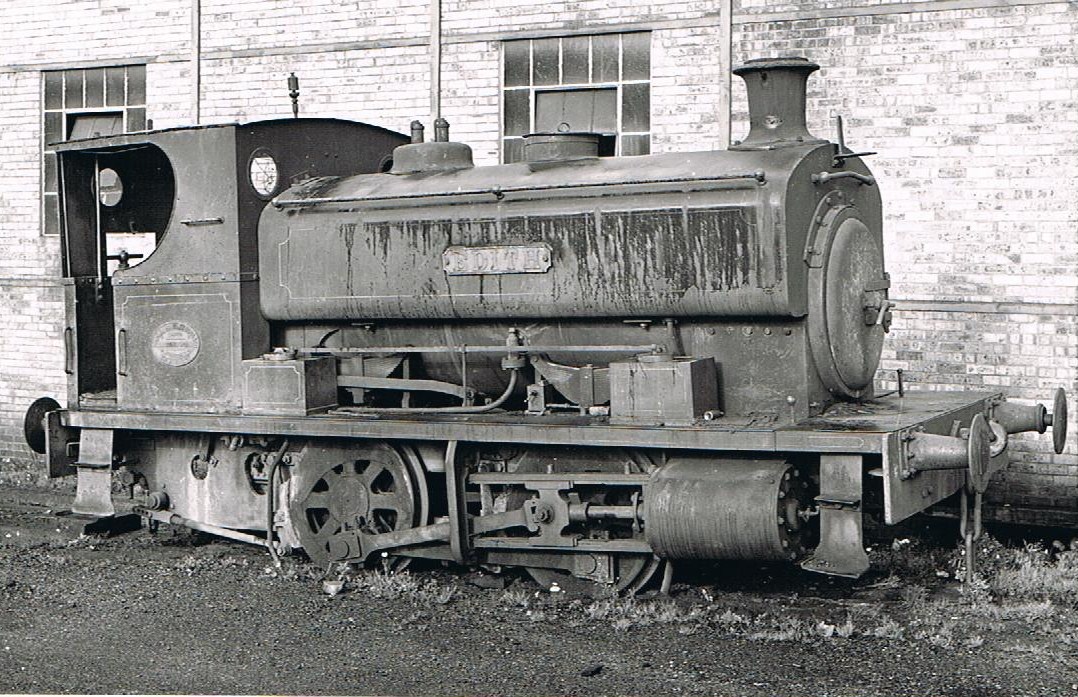
Ansley Hall Colliery 0-4-0ST "Edith" built by Andrew Barclay Nr. 1332 of 1913 repaired by Woodward & Kingsley Ltd., Station Works, Birdingbury between March and August 1954, then moved to Arley Colliery on 14th November 1959 where it is seen out of use and in filthy condition. It was scrapped on site by George Cohen, Sons & Co. Ltd in February 1964. (K.J.Cooper, IRS)
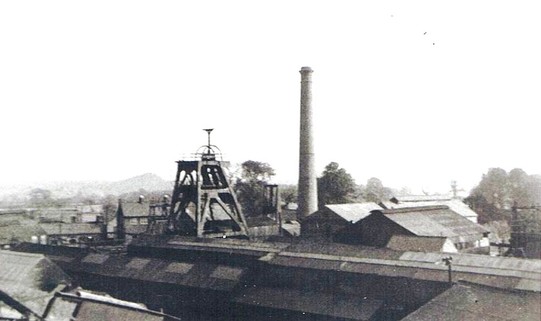
Ansley Hall Colliery in 1958. The pit head. The colliery business commenced in 1873 and the colliery estate covered 2,800 acres. Eventually this extended to 4000 acres. Sinking was carried out during 1873-4. A brickyard was also opened and this outlived the colliery. Closure took place on 14th November 1959. (Don Slaney)

This is Avonside Engine Co. 0-6-0 (1883/1922) ex- Haunchwood Colliery in March 1963 returned to the colliery in January 1967, residing in Ansley Hall workshops where it was rebuilt and restored to "As New" condition. It eventually ended up in preservation being sent to the Dinting Railway Centre, near Glossop on 5th July 1969, but has gone from there now and its latest home I do not have details of. (Geoff Edmands)
Arley Colliery
Arley Colliery Co. Ltd was registered on 24th January 1901 and closed 29th March 1968.
Attleborough Stone Quarries
Baddesley Collieries Ltd.
(William S. Dugdale until 1895 Baddesley Colliery Trustees until 14th June 1926.)
This colliery was originally owned and worked by the Stratford Dugdale on their estate and passed to the National Coal Board Area 4 on 1st January 1947.
Collieries:
Maypole, by 1848
Hene, by 1848
New Church, by 1848
Speedwell, sunk during 1848 (used as a pumping shaft until the 1980's but filled in July 1989).
Baddesley (also known as Baxterley Park or Stratford Colliery) Sinking commenced 7th May 1851.
Tramway said to date back to 1817, connected to the London & North Western Railway at Baddesley Sidings (earliest known agreement 8th July 1871, but this may have superseded an earlier one.)
Landsale at Baddesley canal coal wharf established 1885. This closed 1965
An underground explosion occurred on 2nd May 1882.
Railway line which crossed the A5 to the Trent Valley railway closed 1974
Colliery closed February 1989. Shafts capped July 1989.
Stocks cleared and railway closed October 1989
Collieries:
Maypole, by 1848
Hene, by 1848
New Church, by 1848
Speedwell, sunk during 1848 (used as a pumping shaft until the 1980's but filled in July 1989).
Baddesley (also known as Baxterley Park or Stratford Colliery) Sinking commenced 7th May 1851.
Tramway said to date back to 1817, connected to the London & North Western Railway at Baddesley Sidings (earliest known agreement 8th July 1871, but this may have superseded an earlier one.)
Landsale at Baddesley canal coal wharf established 1885. This closed 1965
An underground explosion occurred on 2nd May 1882.
Railway line which crossed the A5 to the Trent Valley railway closed 1974
Colliery closed February 1989. Shafts capped July 1989.
Stocks cleared and railway closed October 1989
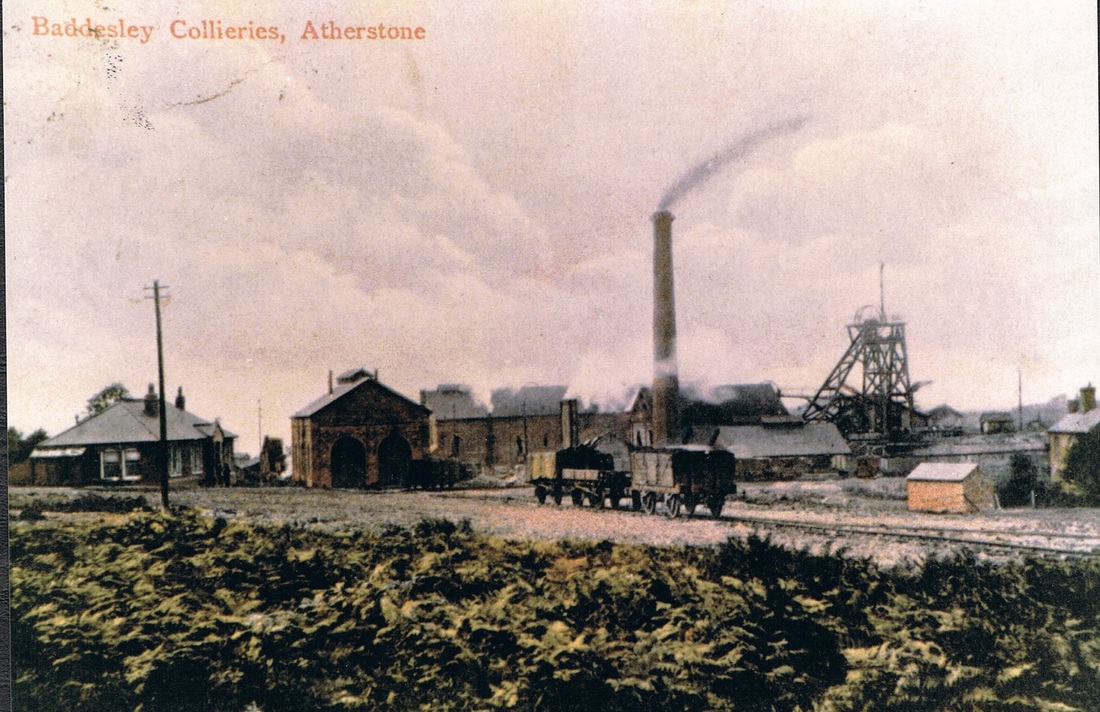
Baddesley Colliery combined several old pits of some antiquity.In 1848 there were three mines existing on Baddesley Common, Maypole, Home and New Church. Speedwell pit was sunk in that year. Coal production had ceased in the older pits by 1859 and the shafts were retained for pumping purposes. Sinking of new shafts started at Baxterley Park on 7th May 1851 and this new mine was called the Baddesley Colliery, but to confuse matters was also known at the time as Stratford or Baxterley Park. Before 1850 there had been a tramway from the pits on Baddesley Common down to the wharf on the Coventry Canal, but coincidentally with the opening of The Trent Valley Railway, the Speedwell and Baddesley mines the tramway was adapted to standard gauge to allow the canal wharf line to be extended to a connection with the main LNWR line. On 28.2.1878 the Midland Railway opened a branch to the colliery (The Kingsbury branch) which served other pits particularly Birch Coppice. A mine workers passenger service was operated from the Trent Valley line up to the colliery up until 1929. This postcard dates from around 1905 and shows the pit head arrangements then including the two road loco shed, which was later replaced, although the old shed remained in use for other purposes. (North Warwickshire Collieries Collection)
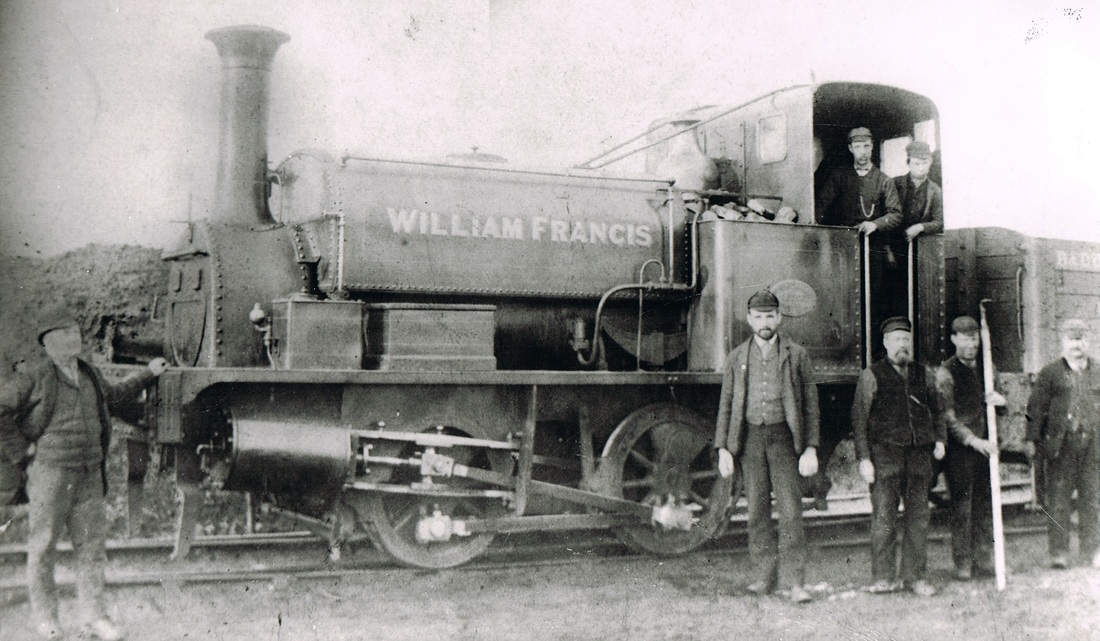
Baddesley Colliery loco, "William Francis" was the first of three which took this name. It was thought to be the first loco at Baddesley and was not joined by another until 1898, but one would have thought that it was necessary to work the Trent Valley connection by steam at an early date as the line was steeply graded and to haul wagons back up to the pit would have required quite a few horses. At any rate the IRS records indicate there was no loco before 1885 and when this arrived it seems small for all the work in hand at the colliery. It seems likely therefore that other locos predated this one but their records have been lost. "William Francis" - named after a member of the Stratford family - was built by the Hunslet Engine Co (358/85) in 1885 and sold for scrap by 1903 when a new "William Francis" was acquired. Being a four coupled engine its use was rapidly limited by the increased loads and may have been relegated to yard shunting as six coupled engines were needed for the steep gradients up from the Trent Valley exchange sidings. (Albert Fretwell)
Memories of the Garratt
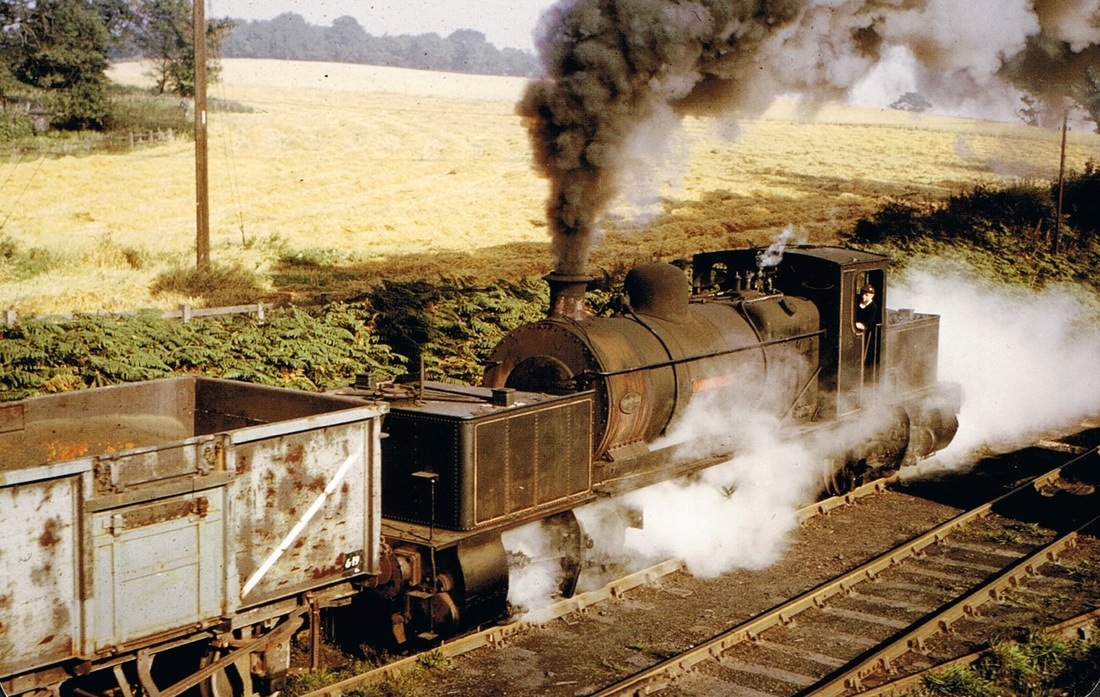
Baddesley Colliery "Garratt" loco,
0-4-4-0T - was the third loco named William Francis and was one of three of this type of loco built by Beyer Peacock. (The others went to Sneyd Colliery) and was the only one to survive into preservation. As you can see pushing empties up to the colliery from the main line interchange sidings was heavy work and these engines were well suited to short hard climbs. It was Beyer Peacock 6841 of 1937. It went away to Beyer Peacock for repairs in 1955, and again in 1958, when it returned to the mine on 19th April 1958. It was sold to Alan Bloom the famous Norfolk horticulturalist for use on his preserved railway set up at Bressingham Gardens where it remains to this day.
(Geoff Edmands)
A film of "William Francis" was made by Ivo Peters and can be seen here with the famous railway vicar. Rev. Teddy Boston in the film https://www.facebook.com/baddesley/videos/874151499318879
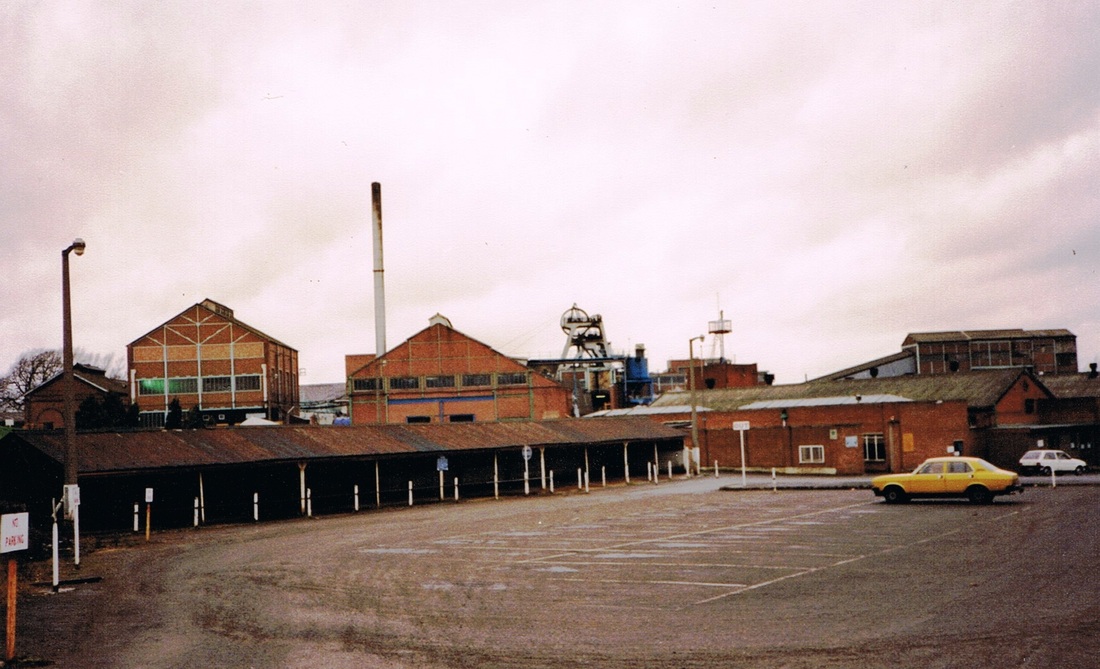
Baddesley Colliery pit head, after coal winding ceased. I took this series of photos between the official closure of the pit in February 1989 and when the railway closed in October 1989. Rail traffic was retained for removal of stock coal during this period. The Kingsbury branch although decommissioned at the time has re-opened in part to serve a new distribution park at Birch Coppice.
Birch Coppice Colliery (Morris & Shaw Ltd.)
Shaw & Caldicott until 1870
Original colliery called Birch Coppice was one of several collieries operated by Shaw & Caldicott in the 1840's.
Birchmoor (or Cockspur Pit) west of Polesworth sunk 1860. Abandoned 12th November 1883. Tramway lifted 1883.
Production started again at Birchmoor as the colliery was deepened between 1915-1918 but production ceased 1927. It was then used for pumping purposes.
Hall End Colliery (later to become Birch Coppice Colliery) sinking started 1875.
A brickworks using shale from the colliery was built in 1879.
Wood End Pit sinking commenced in 1911. Coal production started in 1914 and ceased 1921. The shafts were then used for pumping purposes and man riding.
In 1963 NCB Coal Products opened a pilot plant south of the colliery for the production of Homefire Briquettes. This had a very short life and closed in 1965.
All rail traffic ceased June 1986
The colliery closed 29th November 1986.
Original colliery called Birch Coppice was one of several collieries operated by Shaw & Caldicott in the 1840's.
Birchmoor (or Cockspur Pit) west of Polesworth sunk 1860. Abandoned 12th November 1883. Tramway lifted 1883.
Production started again at Birchmoor as the colliery was deepened between 1915-1918 but production ceased 1927. It was then used for pumping purposes.
Hall End Colliery (later to become Birch Coppice Colliery) sinking started 1875.
A brickworks using shale from the colliery was built in 1879.
Wood End Pit sinking commenced in 1911. Coal production started in 1914 and ceased 1921. The shafts were then used for pumping purposes and man riding.
In 1963 NCB Coal Products opened a pilot plant south of the colliery for the production of Homefire Briquettes. This had a very short life and closed in 1965.
All rail traffic ceased June 1986
The colliery closed 29th November 1986.
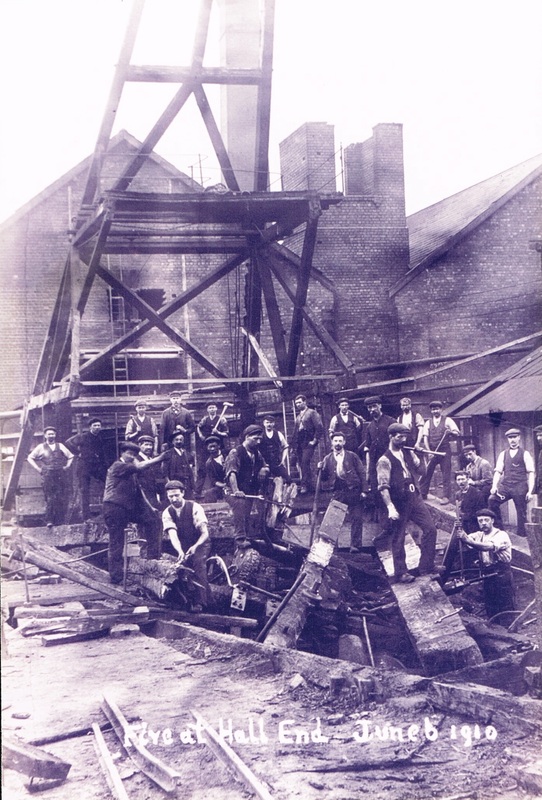
Hall End Colliery Fire 1910. Clearing the debris. Hall End Colliery opened in 1878 and later became the main colliery operated as Birch Coppice Collieries with scattered outlying shafts. The fire was started when lightning hit the headgear and ignited the timber. This travelled fast as the timber work was dry and dredged with grease. (North Warwickshire Collieries Collection)
Boon's Windmill Hill Quarry.
William Boon until 1900 William Boon & Sons until 1916
Boon's Granite Quarry until November 1955
William Boon worked Reservoir Quarry at Hartshill in 1876 and by 1887 was working the Windmill Hill Quarry seen here.
A narrow gauge tramway was laid to a wharf on the Coventry Canal. Between 1929 and 1955 this was worked by a diesel loco. Kerr Stuart "Bassett Green" works nr. 4422 of 1929 purchased new. The track was lifted by January 1956. The loco was scrapped by 1957.
In November 1955 the quarry was purchased by Judkins Ltd who absorbed the workings into their own quarry which was adjacent.
Boon's Granite Quarry until November 1955
William Boon worked Reservoir Quarry at Hartshill in 1876 and by 1887 was working the Windmill Hill Quarry seen here.
A narrow gauge tramway was laid to a wharf on the Coventry Canal. Between 1929 and 1955 this was worked by a diesel loco. Kerr Stuart "Bassett Green" works nr. 4422 of 1929 purchased new. The track was lifted by January 1956. The loco was scrapped by 1957.
In November 1955 the quarry was purchased by Judkins Ltd who absorbed the workings into their own quarry which was adjacent.
Charity Collieries, Bedworth
A new book is now available on the history of this group of Bedworth collieries. £5 + £1.25 P&P to purchase your copy email: [email protected]
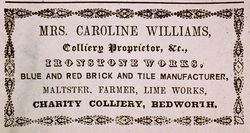
Charity Colliery was sunk on land owned by the Rev. Nicholas Chamberlaine charity in Bedworth. The first shafts were sunk in 1776 and these were referred to as Charity Nr. 1 Colliery, and the location of these was at Coalpit Fields in Bedworth. Another set of shafts were sunk in 1830 and this was called Charity Nr. 2 Colliery also in Coalpit Fields. The Charity did not mine the land themselves they let out the mineral rights and took Royalties on every ton of coal extracted. It turned out to be a very lucrative business and allowed the charity to erect a school and almshouses in the town. The second colliery Charity Nr. 2 when sunk in 1830 was to provide employment for ribbon weavers who were out of work because of a depression in the silk trade. The various lessees of the mineral rights are listed as follows. There is some doubt as to the proprietorship of the earliest ones:
1777-1804 John Woodhouse (1737-1814) held on a 42 year lease, mining ceased on this site in 1804.
1830 Charles McTaggart and Peter Unger Williams trading as McTaggart & Williams.
before 1837 Peter Unger Williams (1775-1837)
1837-1848 Caroline St.Barbe Williams (1780-1873) relict of P.U.Williams and her sons:
John McTaggart Williams (1810-1859) and Charles McTaggart Williams (1819-1858)
Trading as: variously Williams Brothers, Caroline Williams & Sons
1848-1859 Williams & Co. (Charles McTaggart Williams)
1859-1861 Bedworth Charity Colliery & Ironstone Works (Williams Brown, Receiver & Manager)
1861-1878 Messrs. J, G and J.G. Addenbrooke and C. Pidcock (of Roughay Works, Darlaston) trading as:
Addenbrooke & Pidcock.
1879-1892 Christopher James Schofield of Manchester (trading as the Bedworth Coal & Iron Co. Ltd), (George Barker Manager 1876-1886). 1892-1899 Executors of C.J.Schofield (1832-1892)
1899 The plant was bought by William Johnson MP who sold it to:
1899-1924 Stanley Brothers Ltd of Stockingford, Nuneaton.
There were as many as 10 pits at one time. The official closure date is the 13th September 1924. The lease was surrendered 20th April 1925.
Later some of the pithead buildings that remained were leased to Sir Norman Wisdom (the famous comedian) who invested in a concrete block manufacturing works on the site which subsequently continued to trade until the 1970's.
1777-1804 John Woodhouse (1737-1814) held on a 42 year lease, mining ceased on this site in 1804.
1830 Charles McTaggart and Peter Unger Williams trading as McTaggart & Williams.
before 1837 Peter Unger Williams (1775-1837)
1837-1848 Caroline St.Barbe Williams (1780-1873) relict of P.U.Williams and her sons:
John McTaggart Williams (1810-1859) and Charles McTaggart Williams (1819-1858)
Trading as: variously Williams Brothers, Caroline Williams & Sons
1848-1859 Williams & Co. (Charles McTaggart Williams)
1859-1861 Bedworth Charity Colliery & Ironstone Works (Williams Brown, Receiver & Manager)
1861-1878 Messrs. J, G and J.G. Addenbrooke and C. Pidcock (of Roughay Works, Darlaston) trading as:
Addenbrooke & Pidcock.
1879-1892 Christopher James Schofield of Manchester (trading as the Bedworth Coal & Iron Co. Ltd), (George Barker Manager 1876-1886). 1892-1899 Executors of C.J.Schofield (1832-1892)
1899 The plant was bought by William Johnson MP who sold it to:
1899-1924 Stanley Brothers Ltd of Stockingford, Nuneaton.
There were as many as 10 pits at one time. The official closure date is the 13th September 1924. The lease was surrendered 20th April 1925.
Later some of the pithead buildings that remained were leased to Sir Norman Wisdom (the famous comedian) who invested in a concrete block manufacturing works on the site which subsequently continued to trade until the 1970's.
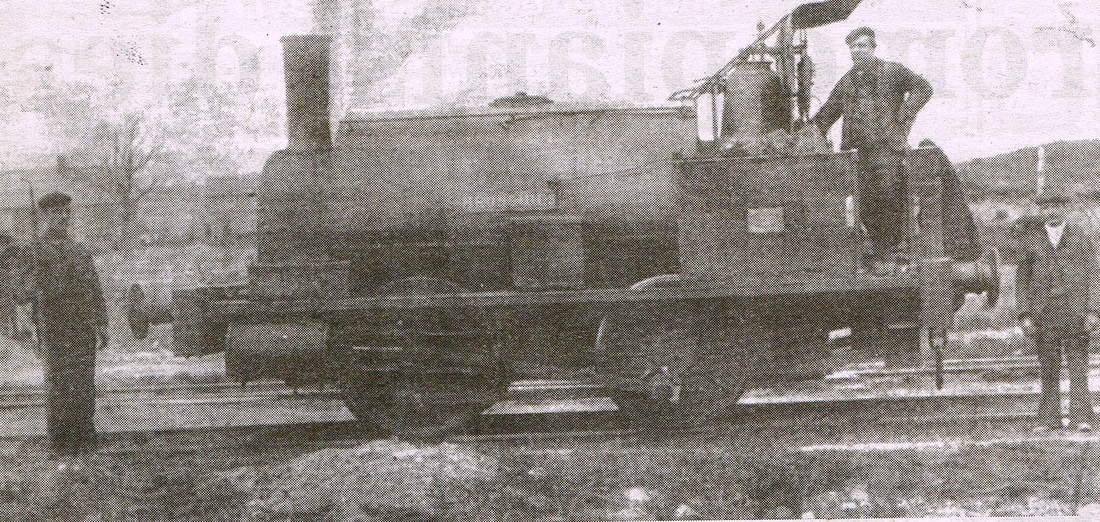
Charity Colliery Nr. 2 "Ironsides" a Henry Hughes loco of indeterminate date (possibly 1870's) which seems to have survived the closure of the colliery in 1924 and been transferred to Stanley Brothers, Stockingford works in 1925 with other plant, where it was later scrapped. Jim Case is the driver. The Case family were drivers of steam locos at both Charity and at Newdigate Colliery. (Bedworth Echo)
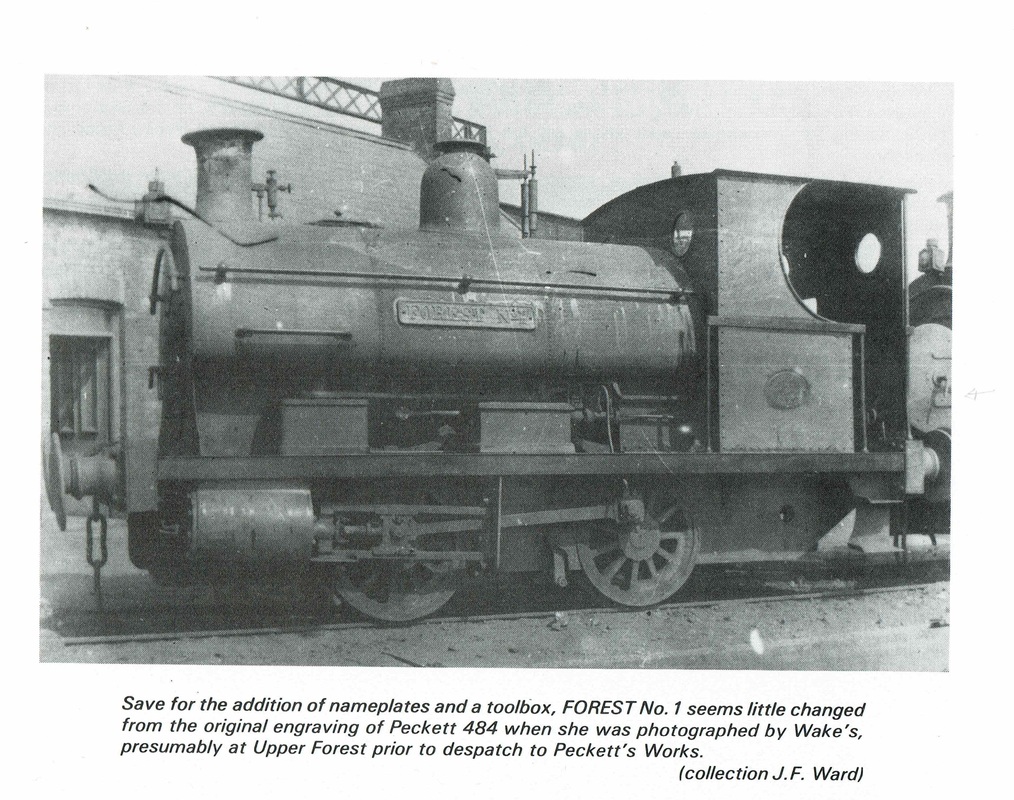
Charity Colliery had several steam locos, one of which was Forest Nr. 1 a little four coupled Peckett which they obtained second hand from J.F.Wake, a dealer, who had obtained it from the Upper Forest & Worcester Steel & Tinplate Works Ltd., Morriston, West Glamorgan. The loco was probably obtained by Stanley Brothers Ltd when they operated the colliery and worked until 1924 when the colliery closed and it was sold for scrap shortly afterwards. (IRS Journal)
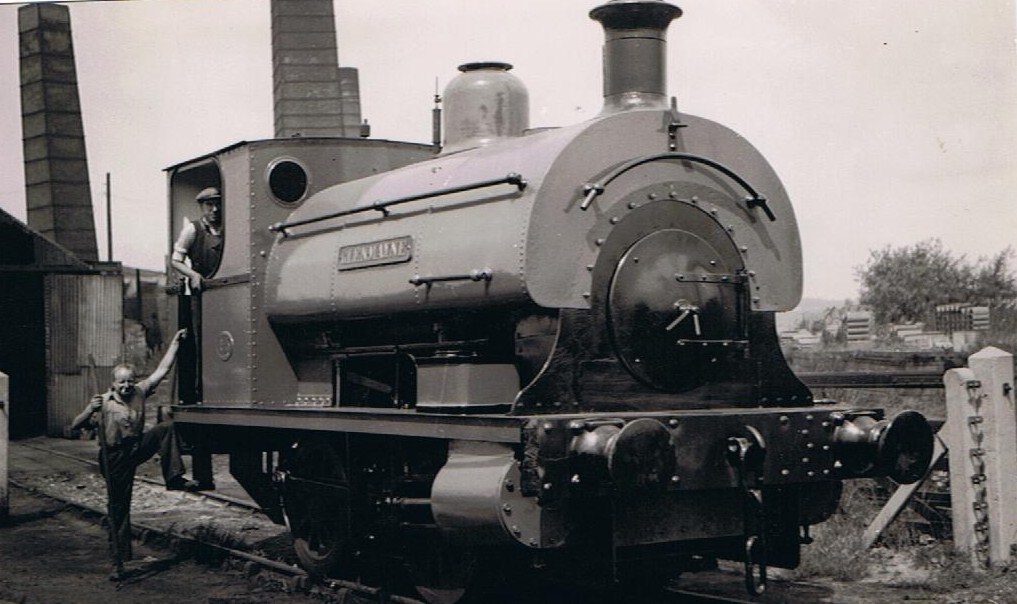
Stanley Brothers acquired a brand new Peckett "Glenmayne" named after the residence of the then Chairman of Stanley Brothers - Col. Harry Smith Murray (1858-1924), a Scotsman whose residence was "Glenmayne" a magnificent Scottish mansion near Galashiels. (see photo below). The loco was new in 1904 (P983/1904). It was sold to Haunchwood Brick & Tile where it is seen in good condition after refurbishment in the early 50's. Both Ironsides and Glenmayne were transferred away from Charity Colliery in 1925 but Forest Nr. 1 was in too poor condition and was scrapped. (M.J.Lee)
Charity Banks Brickworks
Charity Brick works processed the former Charity Colliery waste tip into breeze blocks. It was owned until 1972 by the famous comedian, Norman Wisdom (1915-2010). Albert Greenhough was the manager.
 Charity Banks brickworks, on the site of the former Charity Colliery became a concrete block works. (Mort Birch)
Charity Banks brickworks, on the site of the former Charity Colliery became a concrete block works. (Mort Birch)
Collycroft Colliery & Brickworks
William Wilson 1830-1854 approximate dates (?sunk in 1830)
Edward Wilson later, as late as 1876 when it was abandoned.
Howlette & Wilson Estates Colliery & Brickworks from 1893. Closed in 1900 re-opened 1910.
Formerly abandoned 28th March 1910
Brickworks closed 1900 and offered for sale, but did not re-open.
It had a tramway which connected to the Coventry Canal.
Edward Wilson later, as late as 1876 when it was abandoned.
Howlette & Wilson Estates Colliery & Brickworks from 1893. Closed in 1900 re-opened 1910.
Formerly abandoned 28th March 1910
Brickworks closed 1900 and offered for sale, but did not re-open.
It had a tramway which connected to the Coventry Canal.
Coventry Colliery, Keresley.
Owned by the Warwickshire Coal Co. Ltd (a subsidiary of the Coltness Iron co. Ltd from 1824). Registered in 1901 Sinking commenced in 1911 coal reached in 1917 and the colliery was in full production by 1923.
First closed 16th October 1991. Sold to Coal Investments Ltd 5th April 1994. Finally closed on 23rd August 1996 and shafts filled and capped. Site now occupied by Pro-Logis Industrial Park. The branch was refurbished and relaid for access to the industrial estate and re-opened for a short period but is currently out of use.
First closed 16th October 1991. Sold to Coal Investments Ltd 5th April 1994. Finally closed on 23rd August 1996 and shafts filled and capped. Site now occupied by Pro-Logis Industrial Park. The branch was refurbished and relaid for access to the industrial estate and re-opened for a short period but is currently out of use.
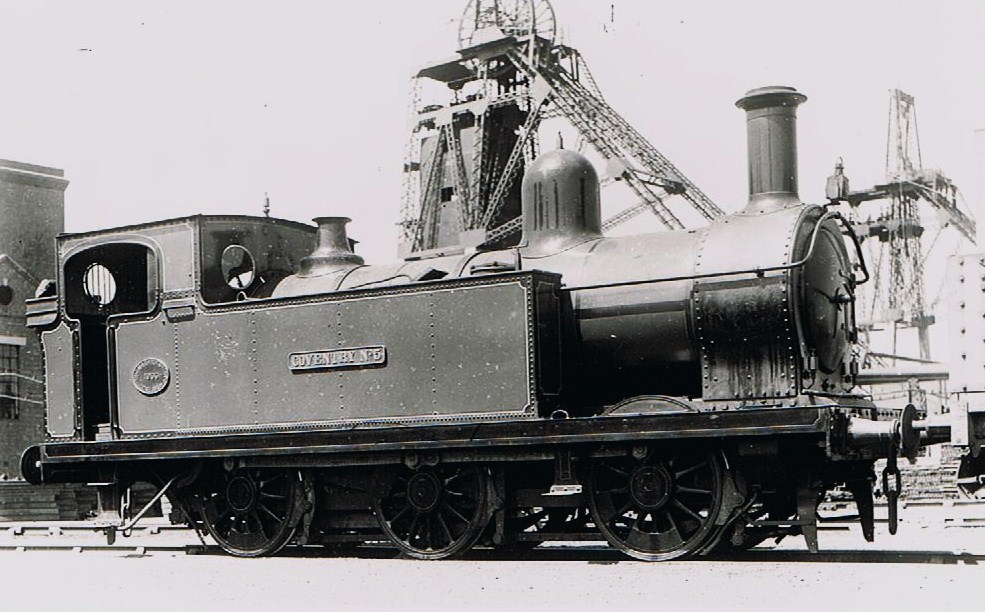
Perhaps the most interesting and photogenic loco to work at Coventry Colliery was this beauty. Displaying all the great aesthetic qualities of that well known British locomotive builder - Sharp Stewart with balanced proportions of chimney/dome/ and elegant safety valve bonnet. SS Nr. 3449 of 1889 it was originally sold to the Barry Railway in South Wales for working both coal and passenger trains on that intensive system. It was their Nr. 1. The Barry Railway was absorbed into the Great Western Railway where it became Nr. 699. It was rebuilt at Swindon in 1922. Returned to GWR duties in 1923 it then worked until 1931 when it was put on the sale list that April. It was purchased by a dealer - J.F.Wake of Darlington - who sold it to the Coltness Iron Co. Ltd., who then transferred it to their subsidiary the Warwickshire Coal Co. Ltd. for use at Keresley where it became Nr. 5. It looks newly refurbished in this view but was scrapped on site in March 1962 by J&H.B.Jackson Ltd., the Coventry scrap dealer. (Roger Carpenter Collection)
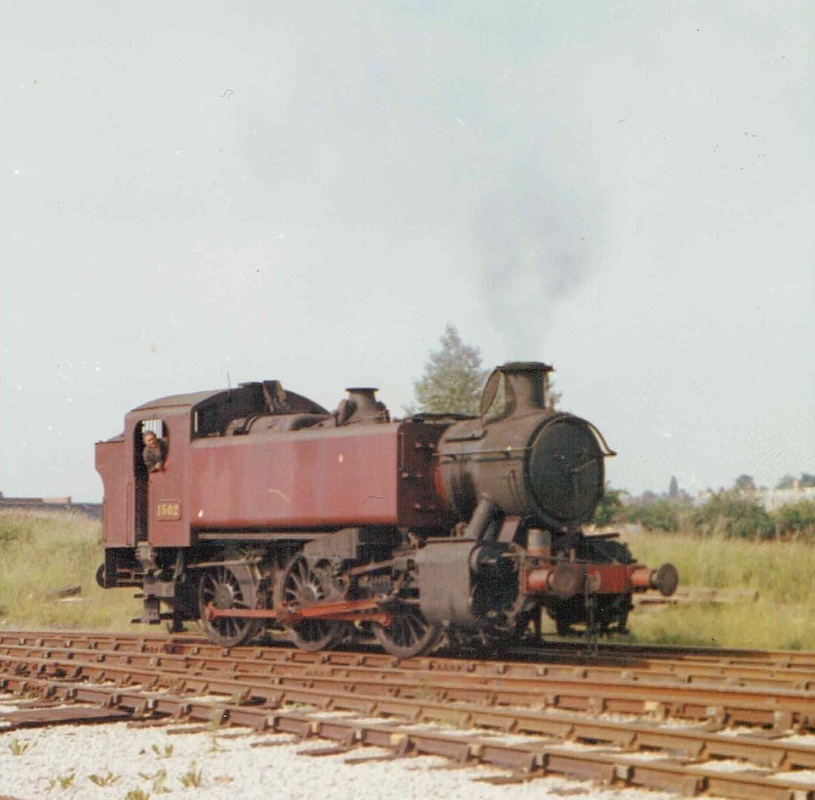
Coventry Colliery purchased two second hand former GWR tanks from BR. Nrs. 1501, 1502 & 1509. They had originally been used for moving empty stock trains out of Paddington station etc. so were worlds away from their intended duties. Nr. 1502 was built in 1949 and was rebuilt by Andrew Barclay's of Kilmarnock from whence it came in August 1962. They were painted Indian Red, a browny red colour at Coventry Colliery. This loco only served Coventry Colliery for eight years being cut up by Cashmores in October 1970. (Michael Mears)
Coventry Power Station
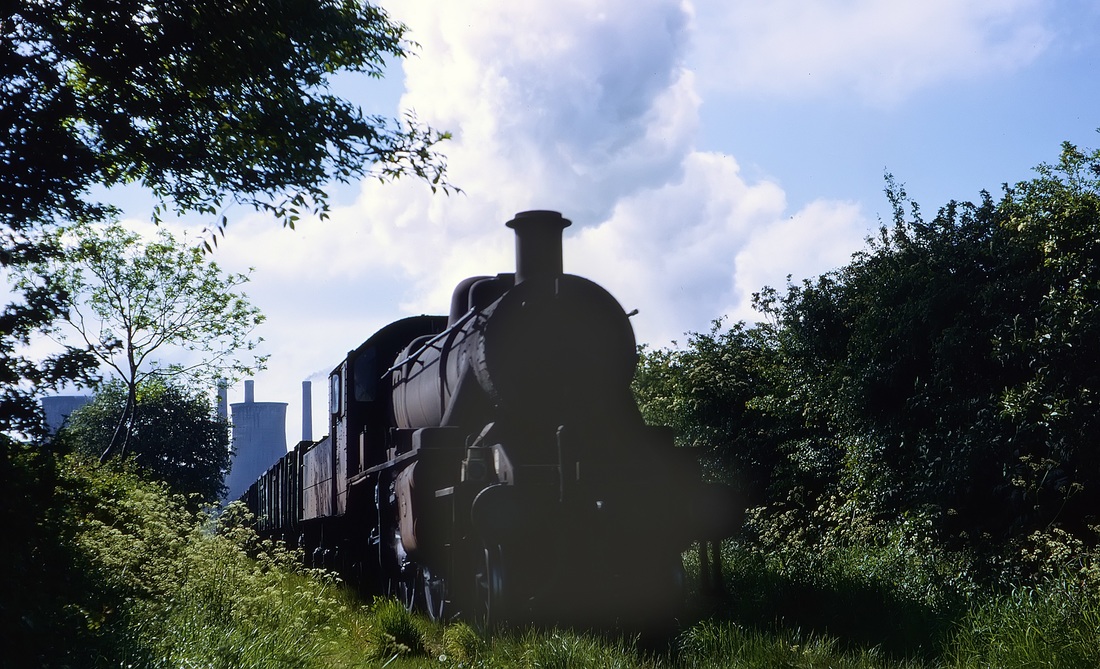
Coventry power station was served by the former branch which ran from Hawkesbury Lane sidings to the site of the former Wyken Colliery where it had formerly connected with a narrow gauge tramway to Craven Colliery. Part of the power station obliterated the workings of Victoria Colliery. In this evocative view of a train on this lonely and forgotten backwater we see an Ivatt Class 2 2-6-0 on a train in June 1966. (Derek Huntriss)
Daw Mill Colliery, Near Whitacre
Production started March 1965, acquired by RJB Mining (UK) Ltd.30th December 1994.
Closed 2013 as a result of a fire underground. The last working coal mine in Warwickshire.
Sidings retained for future use.
Closed 2013 as a result of a fire underground. The last working coal mine in Warwickshire.
Sidings retained for future use.
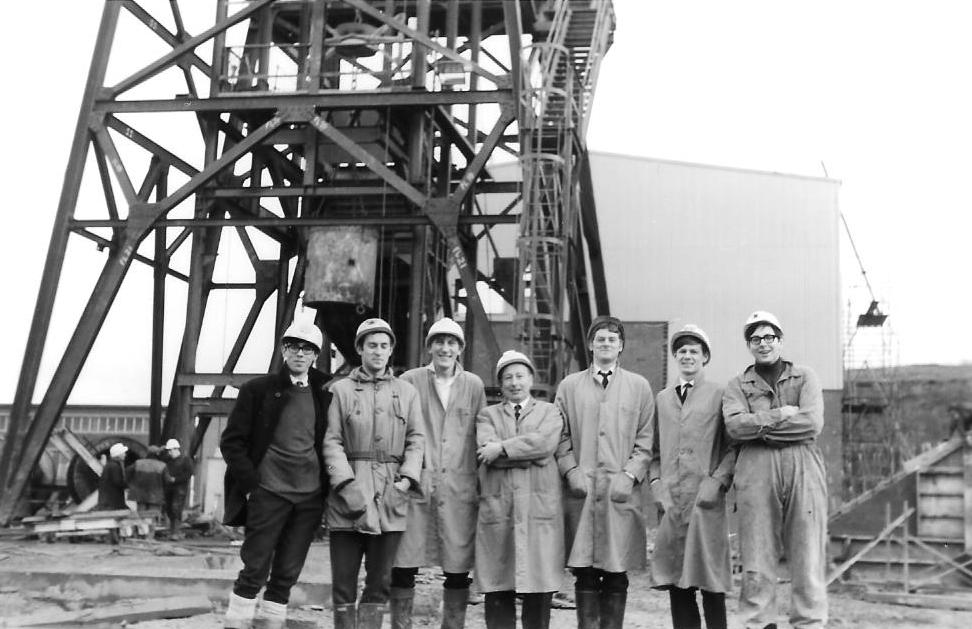
Mr. T.W.Evans who was a Lecturer in Mining Surveying at Nuneaton Technical College (in the centre of the picture) has set his camera up on a time delay and taken this photo of a visit by six of his students from the college. The photo was probably taken in 1967/68 when the colliery was sinking its second shaft. Mr. Evans was also a qualified surveyor of mines. John Kent a surveyor at Kingsbury Colliery between 1961-66 says the fellow with the donkey jacket is Stan Williams, Surveyor and on his right John Leyshon Assistant Colliery Surveyor. Roger Andrew who is now a Fellow of the Royal Institute of Chartered Surveyors says the men on the photo are from left to right: Roy Tallis, Graham Ceeney, John Robertson, Mr. Evans, Nigel Taylor, Roger S. Andrew and Richard Barker. Only two of the apprentices above went on to qualify as surveyors of mines, Roger and Roy Tallis. I guess the run-down of the coal industry locally meant that they found work in other industries. (Photo courtesy of Eileen Worthington, daughter of Mr. Evans)
Exhall Colliery, near Bedworth
Mining in the Exhall area dates back to the 16th century.
There was an Exhall Colliery in existance in 1774 consisting of 8 shafts.
The Exhall Mining Company incorporated in 1852 with a capital of £50,000 in £1 shares.
In 1857 a limited company was formed by Edward Wilson who died in 1895, then the colliery was run by his executors.
Traded as Exhall Colliery Co. Ltd. until 21 December 1906.
In 1913 Exhall Colliery took over Newdigate Colliery which had gone into liquidation
Exhall Colliery & Brickworks Ltd until May 1939.
Hawkesbury & Exhall Collieries Ltd.
The history of Exhall Colliery is complicated with workings in pits whose workings were absorbed into the later colliery back into the 18th century.
The brickworks closed in 1939.
The colliery closed on April 2nd 1938.
A new company was formed in April 1939 as Hawkesbury & Exhall Colliery Ltd.
A serious fire broke out in May 1943 and the mine was sealed on 29th May 1943
The mine was officially abandoned on May 9th 1944.
The NCB re-opened the workings in 1947 until another fire caused it to be abandoned again in February 1949.
The pithead was demolished in July 1968.
There was a major accident at the colliery on September 21st, 1915. 14 colliers died from carbon monoxide poisoning.
There was an Exhall Colliery in existance in 1774 consisting of 8 shafts.
The Exhall Mining Company incorporated in 1852 with a capital of £50,000 in £1 shares.
In 1857 a limited company was formed by Edward Wilson who died in 1895, then the colliery was run by his executors.
Traded as Exhall Colliery Co. Ltd. until 21 December 1906.
In 1913 Exhall Colliery took over Newdigate Colliery which had gone into liquidation
Exhall Colliery & Brickworks Ltd until May 1939.
Hawkesbury & Exhall Collieries Ltd.
The history of Exhall Colliery is complicated with workings in pits whose workings were absorbed into the later colliery back into the 18th century.
The brickworks closed in 1939.
The colliery closed on April 2nd 1938.
A new company was formed in April 1939 as Hawkesbury & Exhall Colliery Ltd.
A serious fire broke out in May 1943 and the mine was sealed on 29th May 1943
The mine was officially abandoned on May 9th 1944.
The NCB re-opened the workings in 1947 until another fire caused it to be abandoned again in February 1949.
The pithead was demolished in July 1968.
There was a major accident at the colliery on September 21st, 1915. 14 colliers died from carbon monoxide poisoning.
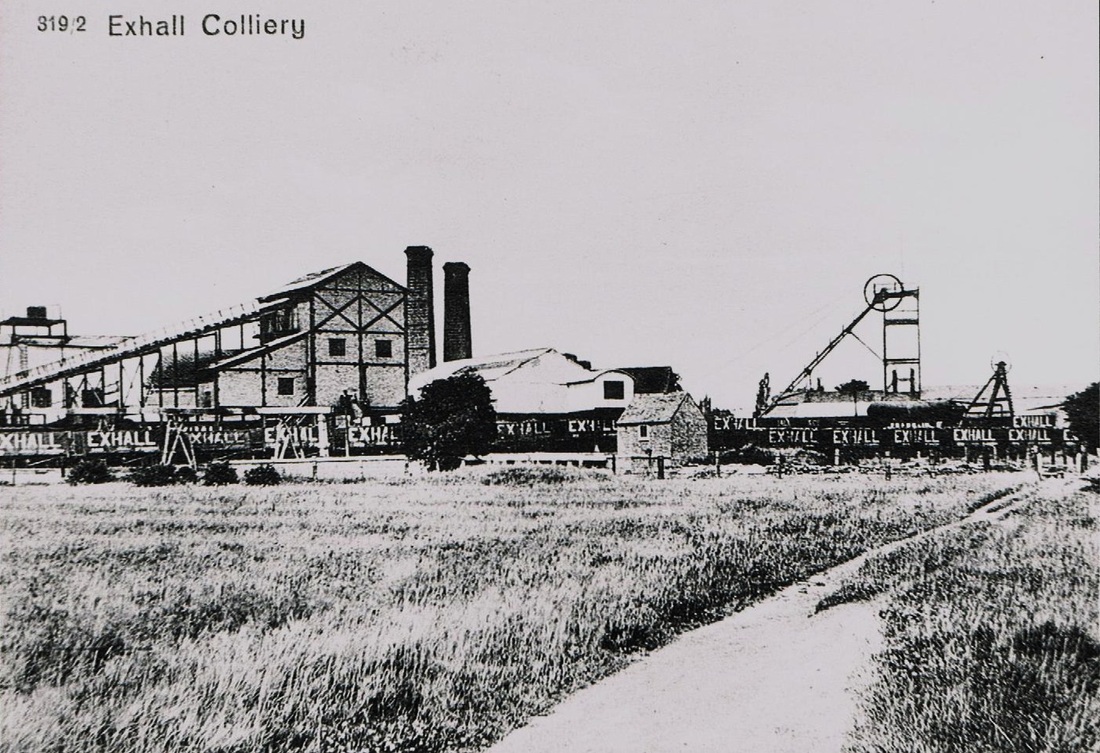
Exhall Colliery, Bedworth. A view of the general layout of the colliery and some of the hundreds of distinctive wooden 10T wagons used for distribution of their products all over the country. c. 1910. It traded latterly as Hawkesbury & Exhall Collieries Ltd until taken over by the NCB on 1.1.1947. Between 21.12.1906 until May 1939 it was trading as Exhall Colliery & Brickworks Ltd and up until 1906 was managed by Edward Wilson. There were several pits in the complex history of this colliery with coal workings recorded back to the 18th century. A detailed account of the colliery will shortly appear on this web site.
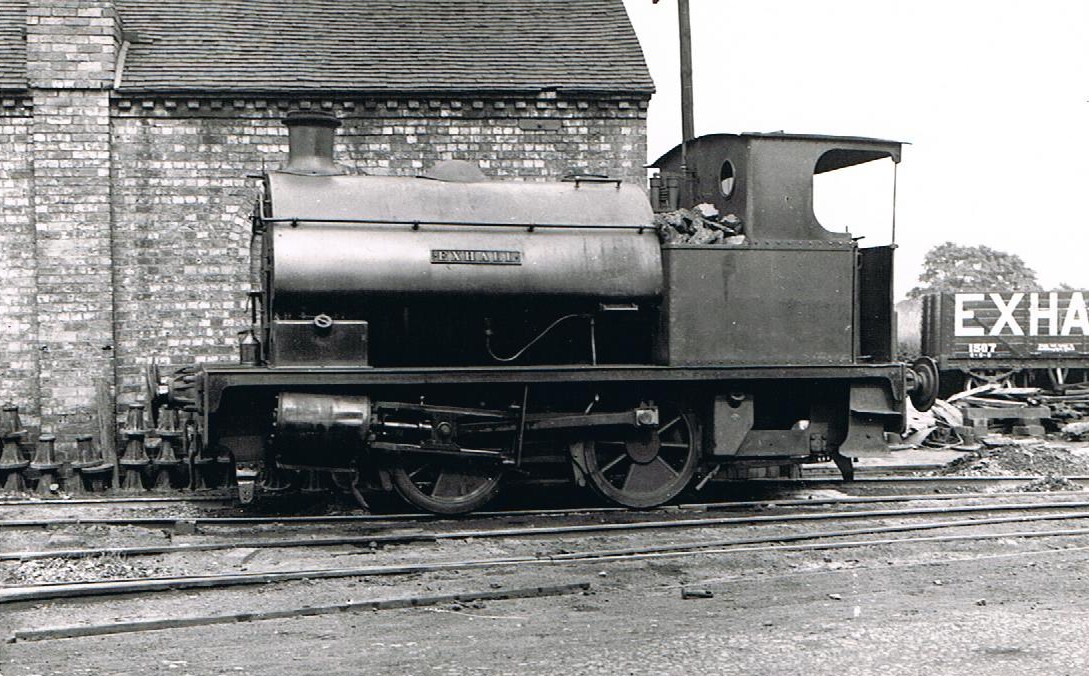
Exhall Colliery loco - "Exhall Nr. 4" (WB1952 of 1912) a Bagnall of Stafford product. Pictured at the pit in 1938. Purchased new for the colliery it was sold shortly after this picture was taken to the Leicestershire Colliery & Pipe Co. Ltd. Exhall was shut because of an underground fire in 1938 and this probably precipitated the sale, but in the event the shafts re-opened in June 1939 and they had to hire in a loco from George Cohen the scrap dealer to shunt the branch and the colliery sidings. A Peckett.
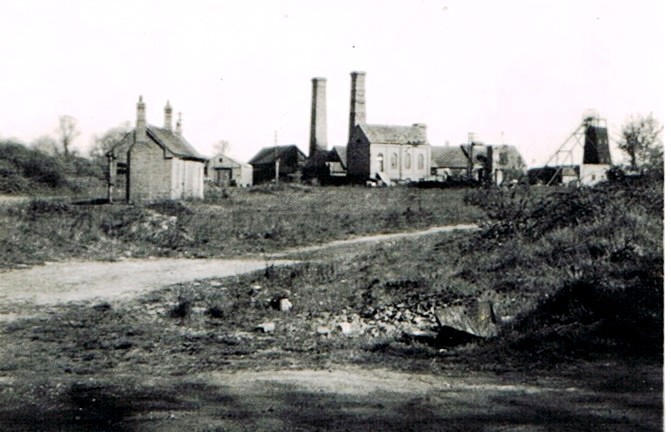
The remains of Exhall Colliery c. 1950. The screens stood in the foreground. All of the pit head buildings have been removed save the building on the extreme right which is where one of the shaft stood. This has been re-used as an industrial unit. Few people know that one of the old pit shafts lurks below the floor of their work place. (Maurice Billington)
Foleshill Gas Works, Longford
The first gasworks was opened in Coventry in 1824. A new gasworks was opened at Longford in 1909.
The gas company became part of the West Midlands Gas Board on 1st May 1949.
The gas company became part of the West Midlands Gas Board on 1st May 1949.
Glascote Colliery
This colliery was closed in 1943.
Griff Colliery Co. Ltd, Chilvers Coton, Nuneaton.
The Newdigate family leased the mineral rights on their estate to colliery entrepreneurs or worked the mines themselves over a period of three hundred years. With such a long history and so many individual pits sorting out their exact history has been difficult. This is what I have made of it so far:
PITS and their known operating dates:
Griff Delphs (1604)
South Griff (closed by 1800)
Griff Lowsey Meadows (1787-1800)
Griff Engine Pit
Deep Foundation Pit
Barrel Gin
Wheel Pit
Horse Gin
Whimsey
Sir Richard Newdigate's Bassett Engine Pit
Three Gins
Mr. Wilkins Gin
Griff Barbara (1780-1850)
Griff Charles (extant 1880's)
Caroline (1832-1850 Converted to a pumping station which continued in use until the 1980's)
Griff Slate Colliery (extant 1841)
Griff Nr. 1
Griff Nr. 3
Griff Nr. 4 (1851-22.7.1960)
Griff Nr. 5 (Metz's Pit 1870-1900, named after the Battle of Metz)
Griff New Winnings or Clara Colliery (1891-27.5.1955)
(Bermuda Village was erected to house the miners working in this colliery)
PITS and their known operating dates:
Griff Delphs (1604)
South Griff (closed by 1800)
Griff Lowsey Meadows (1787-1800)
Griff Engine Pit
Deep Foundation Pit
Barrel Gin
Wheel Pit
Horse Gin
Whimsey
Sir Richard Newdigate's Bassett Engine Pit
Three Gins
Mr. Wilkins Gin
Griff Barbara (1780-1850)
Griff Charles (extant 1880's)
Caroline (1832-1850 Converted to a pumping station which continued in use until the 1980's)
Griff Slate Colliery (extant 1841)
Griff Nr. 1
Griff Nr. 3
Griff Nr. 4 (1851-22.7.1960)
Griff Nr. 5 (Metz's Pit 1870-1900, named after the Battle of Metz)
Griff New Winnings or Clara Colliery (1891-27.5.1955)
(Bermuda Village was erected to house the miners working in this colliery)
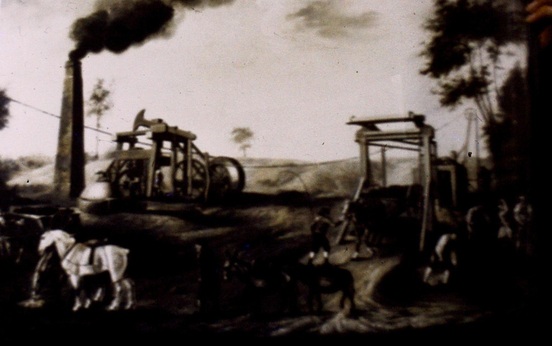
One of the Newcomen pumps at Griff. This was first erected in 1714. Prior to erection of this engine fifty horses were used to pump water out of the mines. Two more Newcomen engines were erected in 1719 and 1825. It is said that the 1714 engine was taken down and re-erected at Hawkesbury Junction on the Coventry Canal. This image from an oil painting. (Fred Phillips Collection)
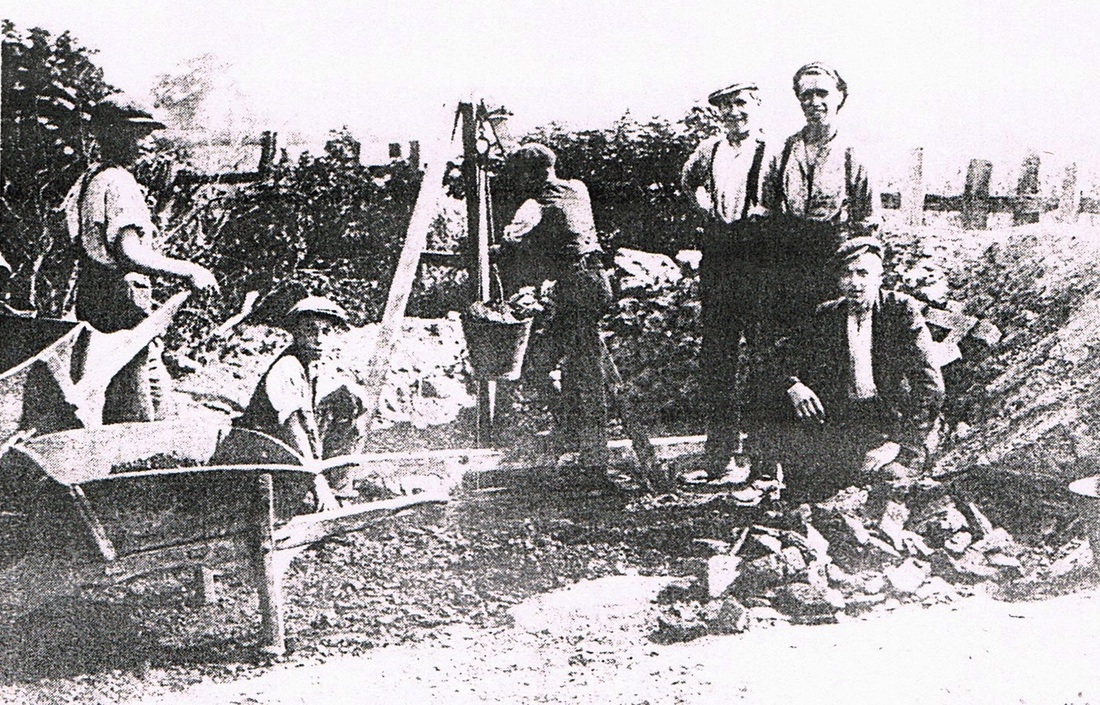
The earliest form of coal raising was to simply dig a hole in the ground, put in some timber planking to prevent the sides from caving in and lower a bucket down. In the general strike of 1926 Griff Miners resorted to this as the coal was only a few inches down in the Griff area and outcropped in several place.
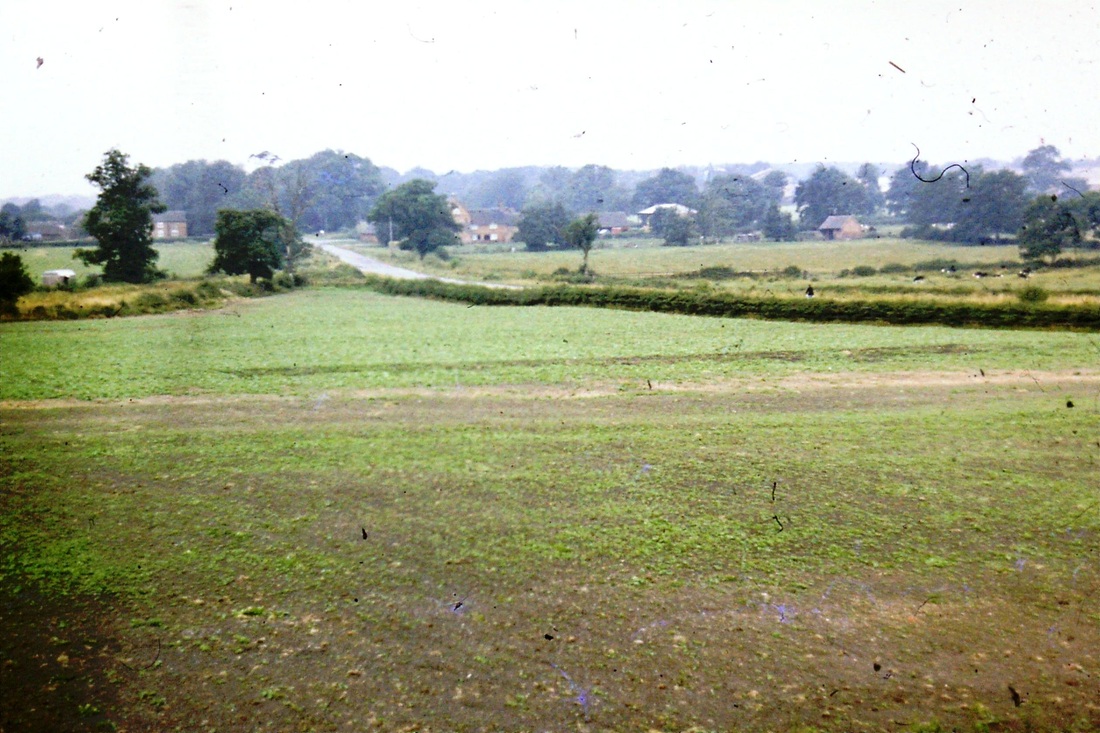
Fred Phillips knew the Griff area like the back of his hand and would know where to look for the old industrial features of the landscape hereabouts. Fred took this photo because it shows a dark line in the field middle left to right where the old coal trucks hauled by horse on the rickety cast iron rails trundled along an old tramway linking the outlying pits to the canal wharf. Slack coal has been shaken loose over the years from these wagons and blackened the soil. Only Fred would have known this, and Fred would almost certainly have known which shaft the coal was wound from, but unfortunately this detail has not been recorded. (Dr. Alan White Collection)
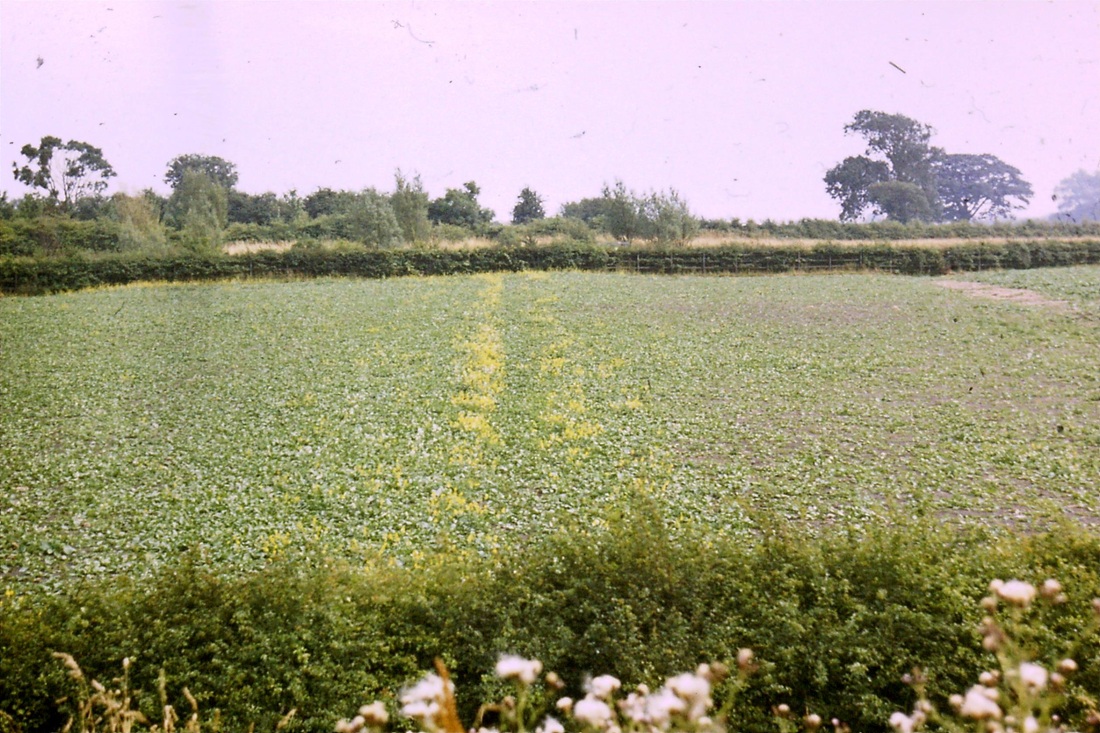
Another tramway photo taken by Fred Phillips to illustrate the course of the line, this time with crops in the field but somehow the yellow colouring of the plants has picked out the tram route. Maybe the sooty soil was more conducive to promoting the growth of these plants and for a time at least the track bed was exposed in this way. I have seen tramways built in stone blocks, wooden baulks, strap rails, cast iron rails and of course - steel track. But never a vegetable tramway before! (Fred Phillips, Dr. Alan White Collection)

Griff Collieries 0-6-0ST "Britannia" between shunting duties. This interesting old loco was a product of the Hunslet Engine Co. (their Nr. 222 of 1879). Originally built for a main line company in South Wales, the Alexandra (Newport & So. Wales) Docks & Railway, Newport, Monmouthshire who sold it to Griff Colliery in June 1894. It was scrapped on site by J&HB Jackson of Coventry in September 1956.
(M.J.Lee)

Griff Colliery received this ex War Department 0-6-0T side tank Nr.70211 OC built by Hudswell Clarke in 1915 (works number 1102) in 1948 (one of two WD locos acquired that year). It went back to Hudswell Clarke in April 1954 for rebuilding being returned in June 1954. It was scrapped by John Cashmore Ltd. Great Bridge Staffs sometime after October 1960.
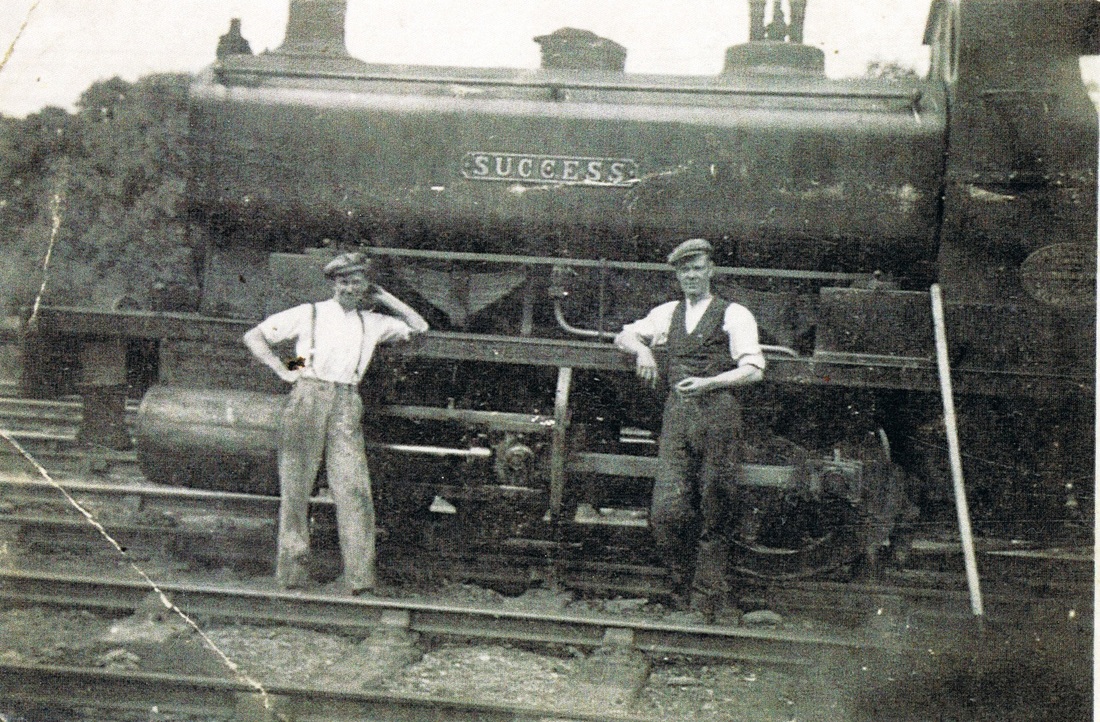
Griff Colliery loco - Success. With Arthur Millington, shunter on the right. "Success" was new to Griff ex Andrew Barclay (1167/1909) and was transferred ito Haunchwood Colliery on 21st December 1960. Although it did little work there before being scrapped on site by John Cashmore Ltd in June 1966. (Pauline Nottingham).

You can see how precarious it was working down Griff Colliery (and collieries generally) in this view as the former collapsing wooden props beyond are replaced by steel rings to hold up the roof. Note no protective clothes of any description, no gloves handling these rusty rings and banging them into place. The tub seems to have been propped at a strange angle to allow the work to be carried out. All very worrying.
William Griffiths Granite Quarries at Griff, nr. Nuneaton
Griff Granite Co. Ltd. until c. 1908
William Griffiths & Co. Ltd.
The quarry was worked as early 1850. A tramway system was installed in the 19th century, largely worked by horses or by rope. The company owned two quarries at Griff Hollows and the Griff Hill Quarry which was leased from the London Brick Co. Ltd. This was the last one to be operated. A private siding agreement with the LNWR was signed on 1st March 1912. There was also a narrow gauge line which was operated by a Motor Rail diesel loco (MR20024/1950 4W DM) from 1950 until closure of the rail system in 1963 in favour of road transport and conveyors. The main line siding was removed during January 1964.
William Griffiths & Co. Ltd.
The quarry was worked as early 1850. A tramway system was installed in the 19th century, largely worked by horses or by rope. The company owned two quarries at Griff Hollows and the Griff Hill Quarry which was leased from the London Brick Co. Ltd. This was the last one to be operated. A private siding agreement with the LNWR was signed on 1st March 1912. There was also a narrow gauge line which was operated by a Motor Rail diesel loco (MR20024/1950 4W DM) from 1950 until closure of the rail system in 1963 in favour of road transport and conveyors. The main line siding was removed during January 1964.
Haunchwood Brick & Tile Co. Ltd., Stockingford, Nuneaton.
Nr. 1 Works (Haunchwood Road, Stockingford) opened c. 1870 Closed October 1970, demolished during 1971.
Clay was mined using at least three small shafts, the last one being abandoned in 1905.
Nr. 2 Works (Heath End Road) may have been an earlier owner but was in use by 1889. Closed in 1939, but not demolished until 1970-72 period.
Nr. 3 Works dated from c. 1883 and traded as the Griff Brick & Pipe Co. Ltd. until 1900. Closed in 1965. Site cleared 1968/9.
Clay was mined using at least three small shafts, the last one being abandoned in 1905.
Nr. 2 Works (Heath End Road) may have been an earlier owner but was in use by 1889. Closed in 1939, but not demolished until 1970-72 period.
Nr. 3 Works dated from c. 1883 and traded as the Griff Brick & Pipe Co. Ltd. until 1900. Closed in 1965. Site cleared 1968/9.
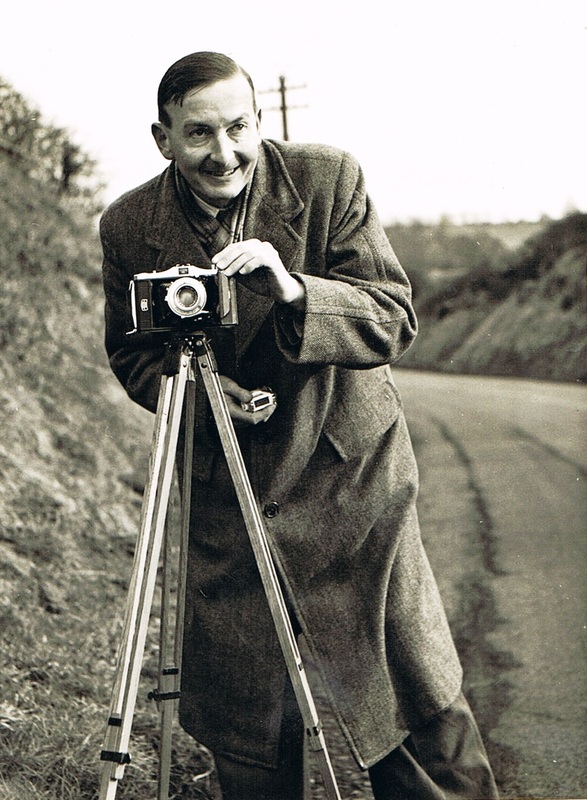
Most of the photographs of Haunchwood Brick & Tile were either taken by Geoff Edmands or in his collection. Geoff worked at Haunchwood Brick & Tile for some years as an accounts manager there, and was a great friend of your web site manager - Peter Lee. His Haunchwood Brick & Tile photographs are now the copyright of www.nuneatonhistory.com. They present a fascinating record of this successful company and I am very grateful to Geoff for his kindness, friendship and our many trips out together, and of course, the generosity of his wife Madge who was a firm family friend until she recently passed away. Geoff was one of the old school of local historians where dissemination of information was the most important thing. The Edmands archive is as important as any locally and we have yet to see the full extent of the depth and breadth. But it does assist you now to see how this once important brickworks operated and I am pleased to share it with others not only involved in social but also economic and industrial history.
(The photo was almost certainly taken by Geoff's cousin Reg. Bull on one of their many missions to record the old scene.)
Haunchwood Brick & Tile Co. was founded by James Knox
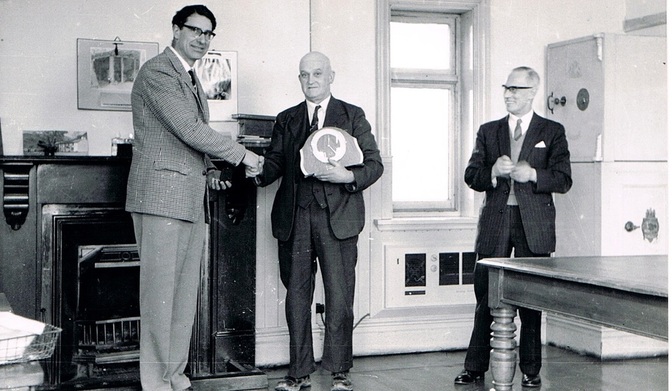
Tony (A.K.) Knox, MD of Haunchwood Brick & Tile presents a long service award in the brickyard offices to Horace Jephcote, foreman at Nr. 1 yard, Stockingford with a striking clock and medallion for 50 years service with the company. Mr. E.W.Daffern, (Company Secretary) is on the right. 24th January 1964 (Geoff Edmands, Nr. 2527 )
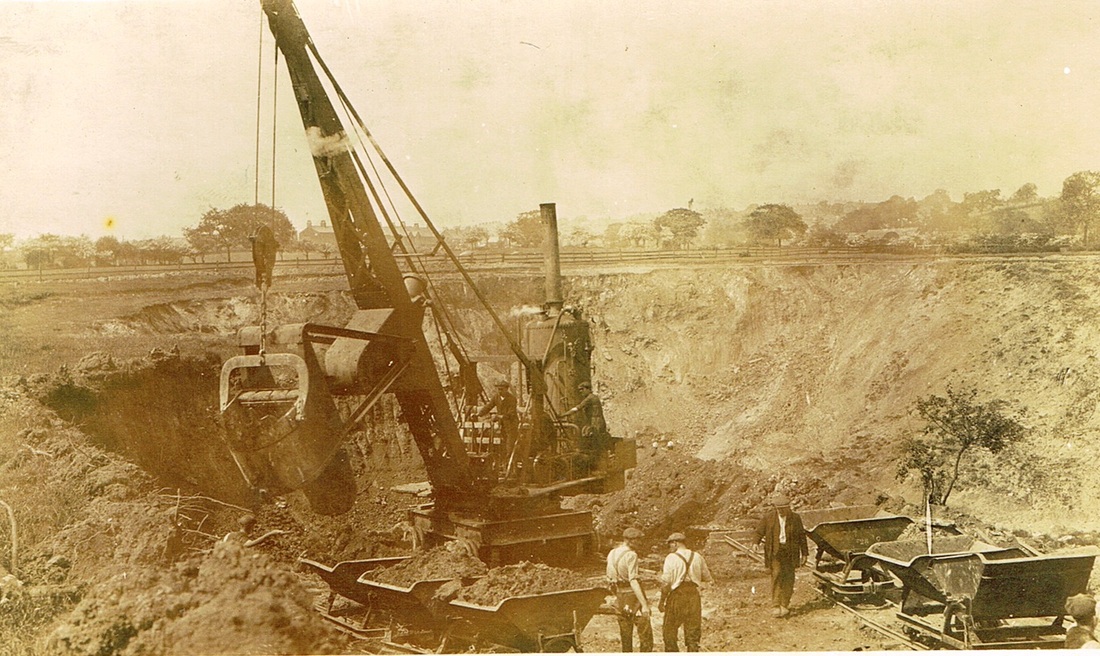
Haunchwood Brick & Tile opened up a new clay hole to the west of Whittleford Road in the 1920's and in this view a steam digger is removing the top soil. This pit was greatly expanded over the next 20 years but as the clay ran out in the early 60's it was closed down and then filled with local rubbish. (Mrs. E. Richardson)
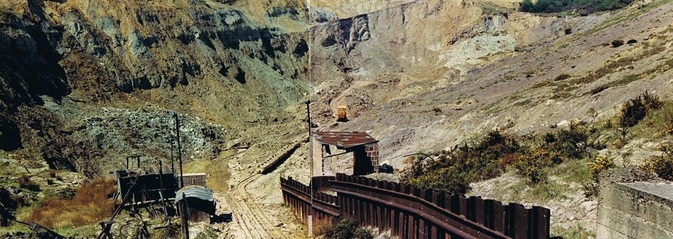
The Haunchwood Whittleford clay hole shows the high quality Etruria marl exposed in the sides of the pit. A cable wagon way connected the clay hole face to the brickyard. The clayhole seen here was opened out in the 1920's. The tramway we see here was about half a mile long. Most of the line was worked by rope but at the brickyard end the wagons were moved by one of three Ruston Hornsby diesel locomotives introduced between 1933-37 This photo was taken around 1960. (Geoff Edmands)
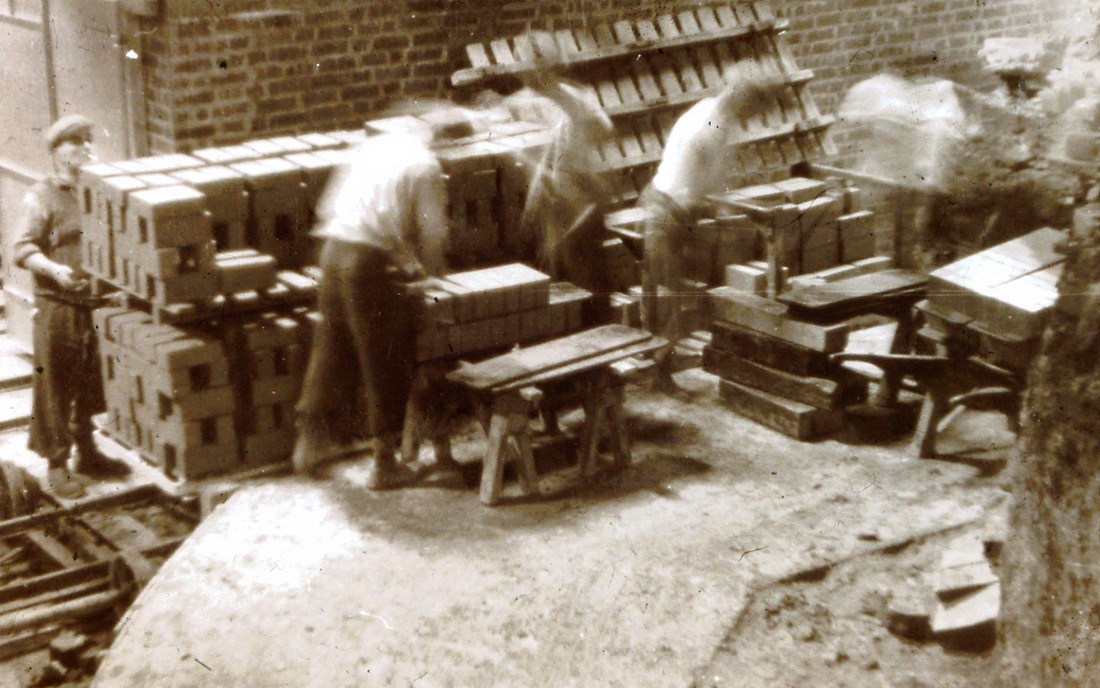
There was a narrow gauge railway which loaded the drying sheds and soft bricks are seen here being loaded ready for drying. The wagons onto which these were loaded were probably part of a batch of 50 made by the Stafford railway equipment manufacturer: W.G. Bagnall Ltd. and delivered in July 1931. (Geoff Edmands)
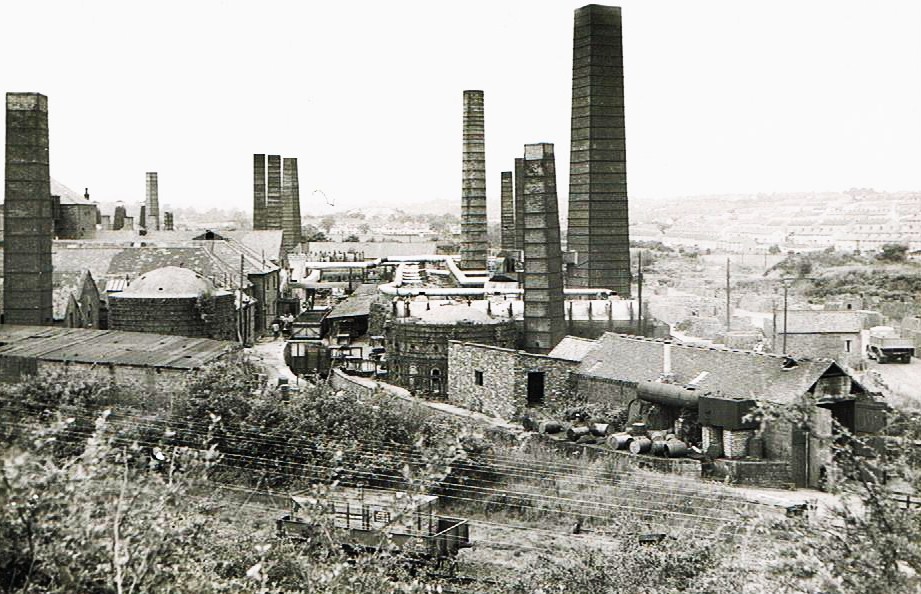
Haunchwood Brick & Tile carried out an extensive waste recovery scheme in 1960. The galvanised ducting can be seen snaking around the kilns. This innovation was only in service for 11 years as the brickyard closed in January 1971. Production was transferred to Essington, nr. Cannock. One of Haunchwood's products, Rosemary roof tiles are still made in Bedworth. (Geoff Edmands)
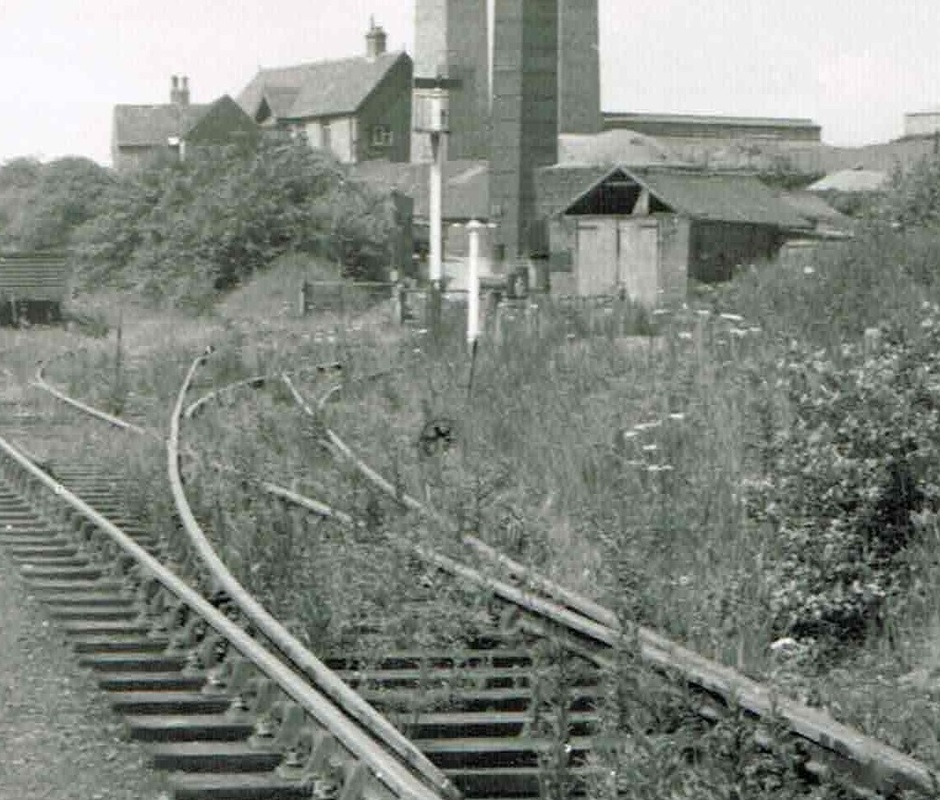
A close up of the view above illustrating the old M.R. rotating banner signal. It was the threatened replacement of this signal with a colour light at a huge cost for the late 1960's of £5000 payable by Haunchwood Brick & Tile which caused them to cease taking goods in and out by rail. (Geoff Edmands)

The interchange sidings of Haunchwood Brick & Tile and Nowells Colliery at Stockingford during the cold winter of January 1959. A line of timber wagons have been placed to receive brick and clayware products. All terracotta goods were moved from the brickworks in British Railways owned wagons as any breakages during transit could be charged to the railway company insurance. There are timber crates inside these wagons which are used for conveying the brick products packed in straw. These boxes can be winched in and out of the wagons without manually unpacking each wagon. Handling like this minimised potential breakage. The shorter line of steel wagons convey coal to the brickyard. Mick Lee wrote to your webmaster on 26th November 1990 to give some indication of the sources of coal for Haunchwood B&T when he was employed there in the early 1950's. Most coal came from Arley Colliery at that time. Before Nationalisation in 1947, Arley had been closely associated with Haunchwood Brick & Tile. Some came from Griff and Haunchwood Collieries, but Arley predominated. Glenmayne is the steamer we see in the middle of the picture and has possibly ventured out to retrieve one or other of these two lines of wagons. The conical snow covered mound of Mount Jud, Judkins waste tip can be seen top left. A DMU hurries towards Birmingham. Stockingford station is behind the cameraman. (Geoff Edmands)
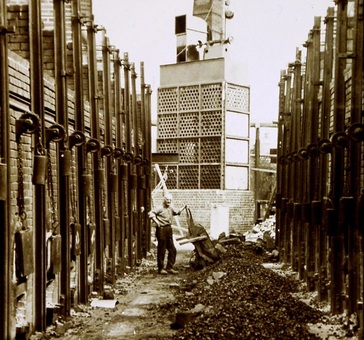
Haunchwood Brick & Tile's brick processing plant had a massive appetite for coal and we can see here the kiln ovens stoker - Sid Smart - getting ready to bring another load of coal to the piles he has already prepared to fire the driers. The tall contraption in the background is the waste heat exchanger for the waste heat recovery plant. 16th June 1960. (Geoff Edmands)
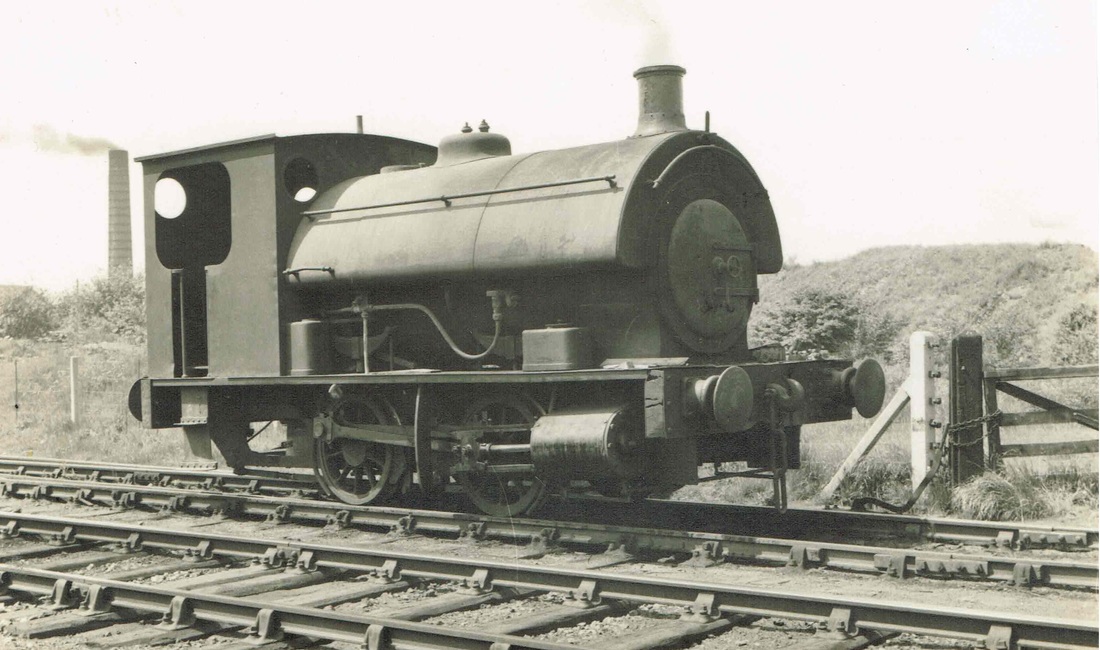
In 1927 Haunchwood Brick & Tile purchased a brand new Yorkshire Engine YE2196/1927 and it worked for 30 years until it was worn out. Seen here on 9th June 1953, it was laid aside and scrapped on site by George Cohen & Sons Co. Ltd. commencing in January 1960. The following photographs illustrate its sad demise.
(M.J.Lee)
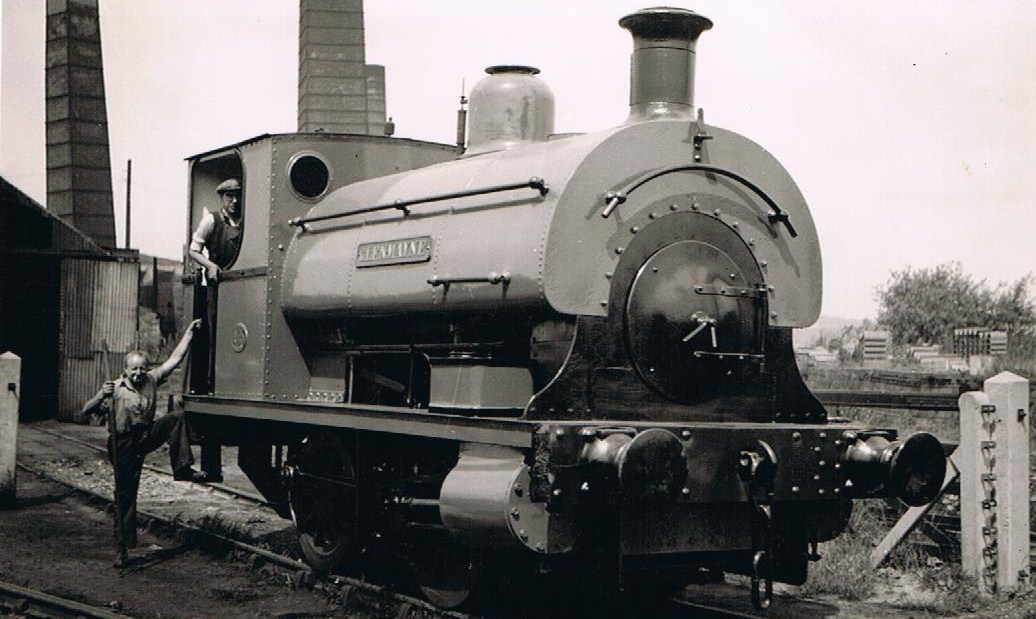
Haunchwood's little shunter "Glenmayne" was purchased second hand from Stanley Brothers when their Charity Colliery closed at Bedworth on 13.9.1924. The loco was sent to Haunchwood in 1925. The Scottish name "Glenmayne" came from the residence of one the director's of Stanley Brothers -Harry Murray. Mr. Murray purchased a share in Stanley Brothers around 1900 and was brought on to the board to help Stanley Brother's poor financial position at the time and to inject fresh capital into the business. He was director a leading Scottish wool merchants - Sanderson & Murray and his stately home in the southern uplands of Scotland was called Glenmayne. The loco was by Peckett one of their standard 0-4-0ST's of which they built many identical machines for industrial service. (Works Nr. 983/1904). It put in yeoman service at Haunchwood. At one time probably in the late 1940's it was extensively refurbished as we can see here. I might be mistaken that the chap with one foot on the step was Michael J. Lee, who was I believe engaged as a footplateman at Haunchwood at the time. Steam was in Mick's blood and he went on to be, shortly after this, a fireman on British Railways. Mick was one of the greatest source of knowledge for industrial railway enthusiasts in the Nuneaton area, and a leading railway buff. The photo is dated 1952 (Geoff Edmands)

The "new" diesel arrives, 10th April 1959, second hand from a plant dealer, Abelsons of Sheldon, Birmingham. Haunchwood Brick & Tile., Despite being rivals of Stanley Brothers Ltd, the other large brickyard in Stockingford, there was a degree of friendly co-operation between the two companies. When Stanley Brothers took delivery of their "new" diesel in 1950, the directors at Haunchwood took an interest in the new loco, and finding their own two steamers wearing out invited themselves down to Stanley Brothers to have a look at the diesel there, both sets of directors then went out for lunch together afterwards. Both steamers at Haunchwood had worn out by 1960 but Haunchwood directors had already purchased a second hand diesel from Abelsons of Sheldon. The old steam shed in the background still shows signs of its fire in 1928. The gable end has been burnt out.
(Geoff Edmands Nr. 1125 - Transparency)
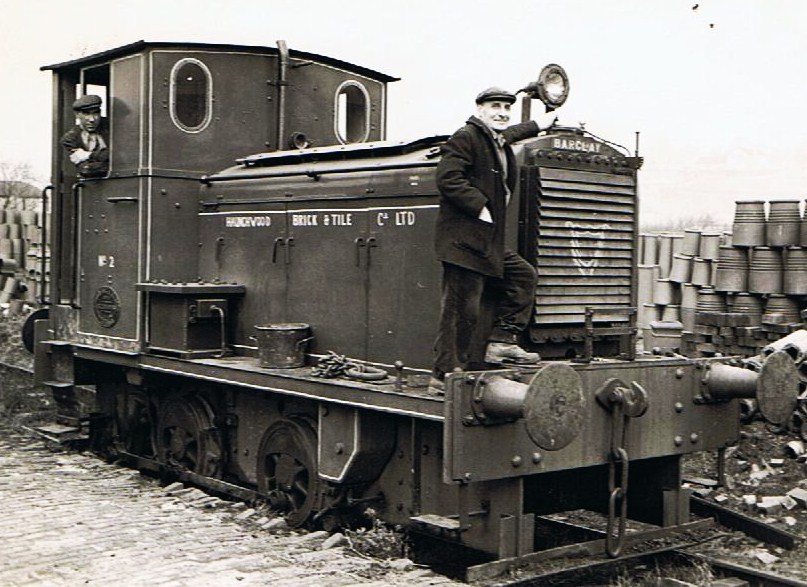
The "new" diesel was "tarted up" for its new role at Haunchwood. Andrew Barclay 0-4-0 diesel mechanical unit nr. 349 of 1941. It was purchased second hand from Abelson's of Sheldon, Birmingham on 10th April 1959. It had previously been employed at ROF Huntspill, Somerset, and after rail traffic ceased it was sold on to Kneeshaw Lupton & Co. Ltd. LLanddulas, Denbighshire in June 1968.
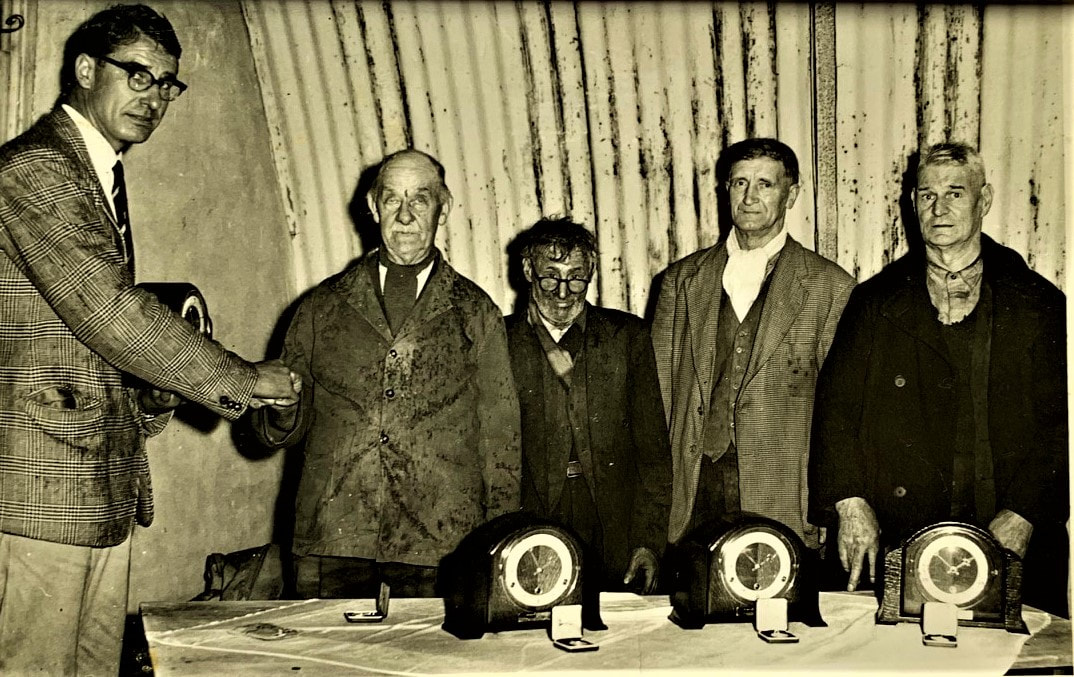
After 50 years service to the company four Haunchwood Brick & Tile employees at Nr. 3 brickyard are awarded long service medals and the customary clocks by Tony Knox the Managing Director of HB&T. Mr. Knox is presenting the first clock to Mr. W. Bates who, in addition to working at Nr. 3 yard rented a small holding from the Arbury estate - Paradise Farm - adjacent to the Nr. 3 yard. The presentation took place in the workman's bothy, a corrugated hut, which the brickyard workers used as a mess room. Unfortunately on this occasion the corrugated roof had acquired a serious leak and Mr. Knox and his men were feeling the effects of the dripping roof. We do not know the identities of the other men and it would be interesting to find out who they were. (Mrs. M. Dagnan)
Haunchwood Collieries Co. Ltd
Haunchwood (Old) Colliery and Haunchwood (Tunnel) Colliery.
John Fletcher (1697-1766) by 1732?
John Barber (nephew of John Fletcher) (1734-1801) by 1767
Alexander Donald (1745 -1808) by the 1790's
William Dorsey (son in law of Alexander Donald (by 1808)
McTaggart & Williams [Charles McTaggart and Peter Unger Williams(1775-1837)]
Caroline Williams (relict. of P.U.Williams 1837-1850's & Williams Brothers (Sons of P.U.Williams)
John Nowell (active 1852-1881)
Sir Alfred Hickman (operated the old colliery - 1881-1925 on closure)
Sunk new (Tunnel) colliery 1891 - belonged to Hickman family until 1947 traded as Haunchwood Collieries Co. Ltd.
John Barber (nephew of John Fletcher) (1734-1801) by 1767
Alexander Donald (1745 -1808) by the 1790's
William Dorsey (son in law of Alexander Donald (by 1808)
McTaggart & Williams [Charles McTaggart and Peter Unger Williams(1775-1837)]
Caroline Williams (relict. of P.U.Williams 1837-1850's & Williams Brothers (Sons of P.U.Williams)
John Nowell (active 1852-1881)
Sir Alfred Hickman (operated the old colliery - 1881-1925 on closure)
Sunk new (Tunnel) colliery 1891 - belonged to Hickman family until 1947 traded as Haunchwood Collieries Co. Ltd.
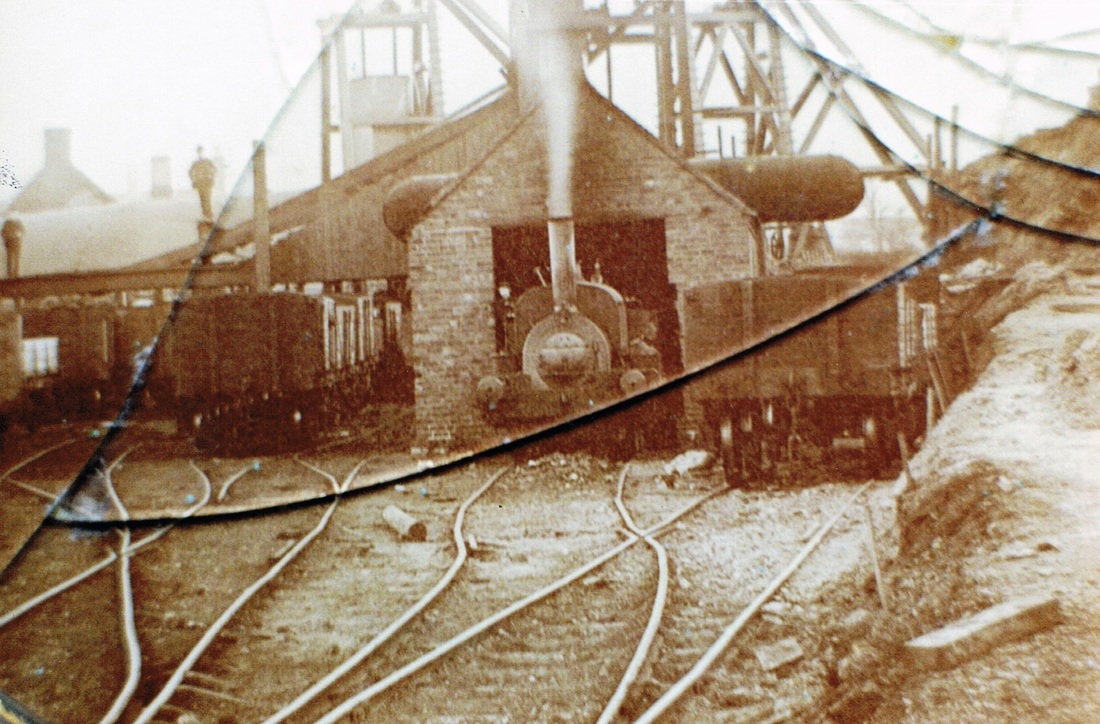
This photo set local railway enthusiasts buzzing when it was given to me by Ian Hichman, whose grandfather Sir Alfred Hickman took over Haunchwood Colliery in the 1880's from the Nowell family. We had suspected that there were earlier locos than reported in the Industrial Railway Society records and here is an unidentified loco raising steam outside the colliery loco shed ten or more years before records of the steam locos began. Mick Lee the industrial railway guru thought it may be a Black Hawthorn loco which had previously worked at one of Sir Alfred Hickman's pits in Staffordshire, but we can't be sure. Mick was convinced it was a Black Hawthorn product and it has many of the characteristics of that maker. The trackwork appears to be in pretty poor shape and there are lumps of wood lying around which would probably have been used to stop the wagons from rolling once parked by jamming them under the wheels. On the whole it is a pretty primitive set up as you would expect, and in view of the men standing on the roof on the left health and safety did not feature in those days. (Ian Hickman)
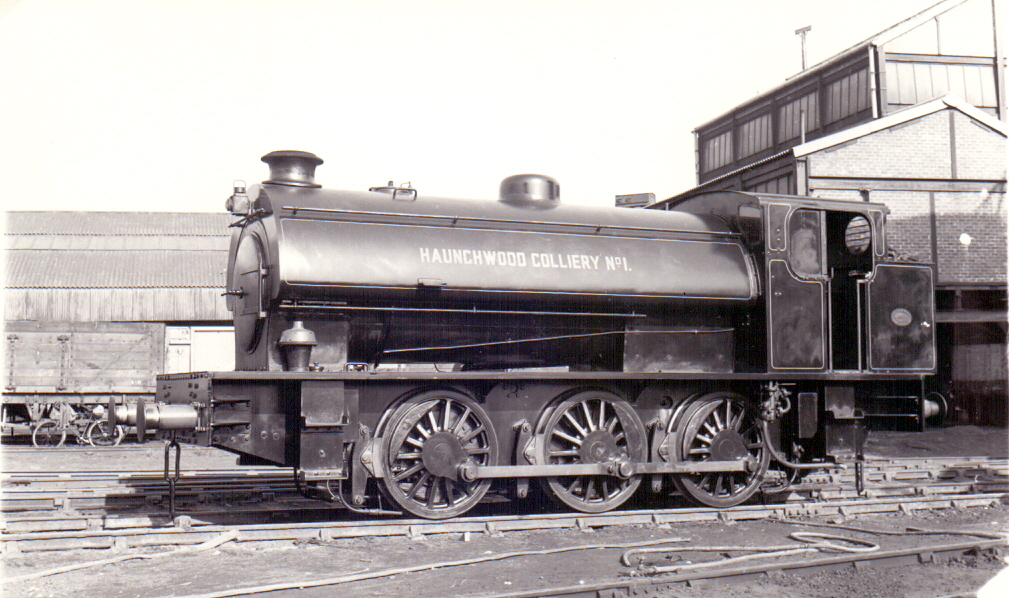
Haunchwood Colliery Nr. 1 was a modern "Austerity" type saddle tank built by the Hunslet Engine Co. HE3828 of 1954 when it went new to the colliery but was cut up by J. Cashmore Ltd of Great Bridge, Staffs during October 1967 giving it only 13 years of life. Barely a quarter of the lifetime expected from an engine like this. Here it is at Haunchwood Tunnel pit c. 1958 (K.J.Cooper IRS Collection)
Hawkesbury Colliery Co.
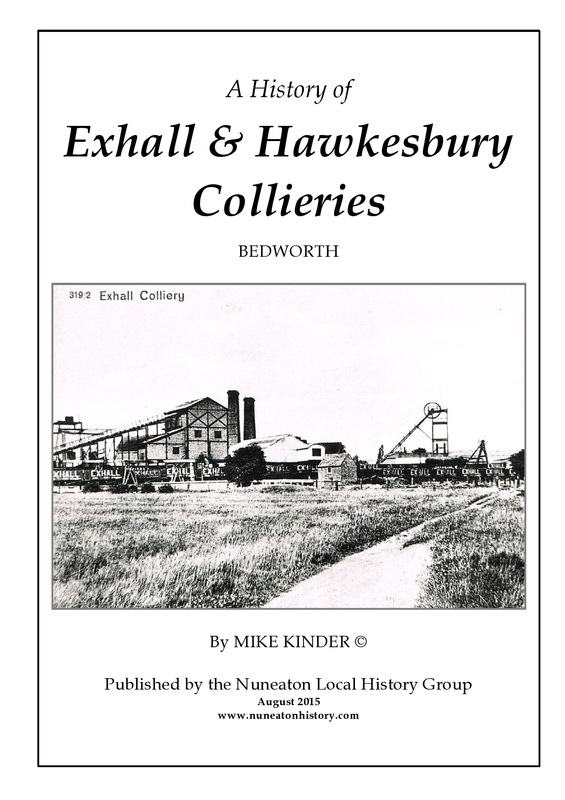
A new book is available that deals with the history of this colliery. Contact us by email: [email protected] to purchase a copy.
Hockley Hall Colliery Co. Ltd
Hockley Hall Colliery Co. Ltd was registered in 1872 and the owner was J. Spencer Balfour.
Subsequently trading as Hockley Hall & Whateley Colliery and Brickworks Co. Ltd.
Later was part of Kingsbury Collieries Ltd.
There was also a brick works which made particularly good blue bricks.
(Source Ray Shill, Industrial Railway Record Nr. 114 September 1988)
Subsequently trading as Hockley Hall & Whateley Colliery and Brickworks Co. Ltd.
Later was part of Kingsbury Collieries Ltd.
There was also a brick works which made particularly good blue bricks.
(Source Ray Shill, Industrial Railway Record Nr. 114 September 1988)
Jees Brickyard & Morewood Stone Works (later Premier Stone)
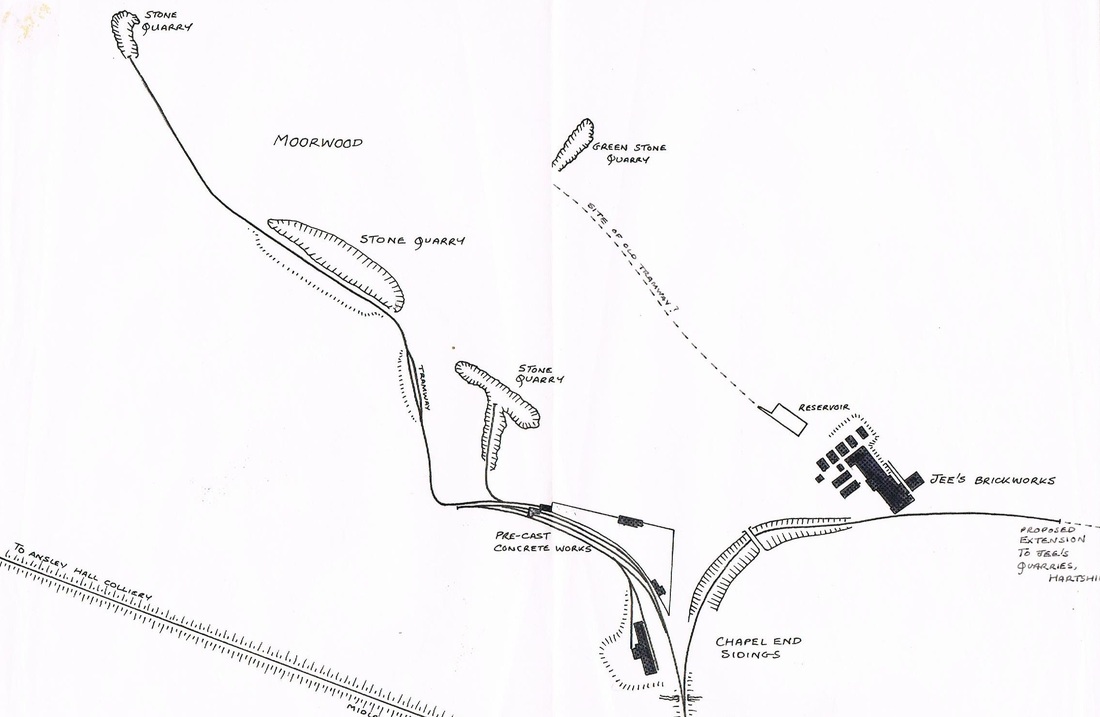
This plan shows the rope hauled tramway which served both the stone quarries of W.L.Ireland and the spur to Jees brickworks. The stone quarry continued in business as the Premier Stone Co. Ltd until the 1930's when it moved to the site of Stockingford Colliery Co. further down the Stockingford branch railway. Jees brickworks was a short lived affair and only lasted about 20 years. The former brickworks chimney survived until the 1950's.
Jees Stone Quarry

To serve the quarry faces at Jees portable narrow gauge tramways were laid. As you can see here as each face was worked out the track was taken up and moved to a new area of stone removal. Short rafts of wagons were drawn by horses, and single wagons pushed by hand. A rope worked incline hauled the wagons to the lip of the quarry where steam engines took over to take the stone to the crushing plant, and to deliver it to the canal wharf or to the railway sidings on the LNWR Trent Valley main line. The quarry railway system was dispensed with in the 1950's as stone transport in the quarry was handled by dumper trucks and conveyors to the crushing plant and washery. Quarrying ceased in the year 2000. (Jean Lapworth)
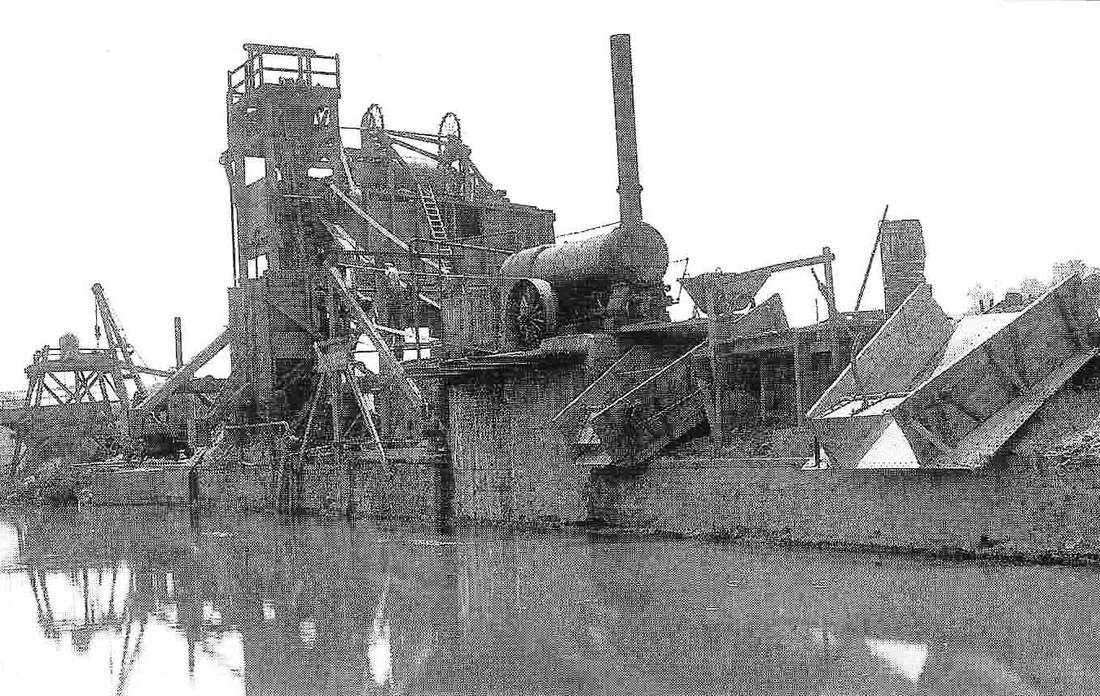
Jees at Anchor Hill, stone crusher. Adjacent to the Coventry Canal. I wonder what health and safety would say about this Heath Robinson contraption today? The boiler with the long chimney is not a converted steam loco or an old traction engine. It is in fact a purpose built steam boiler to provide the power for all the wirring machinery on the left. (Alan Cook collection)
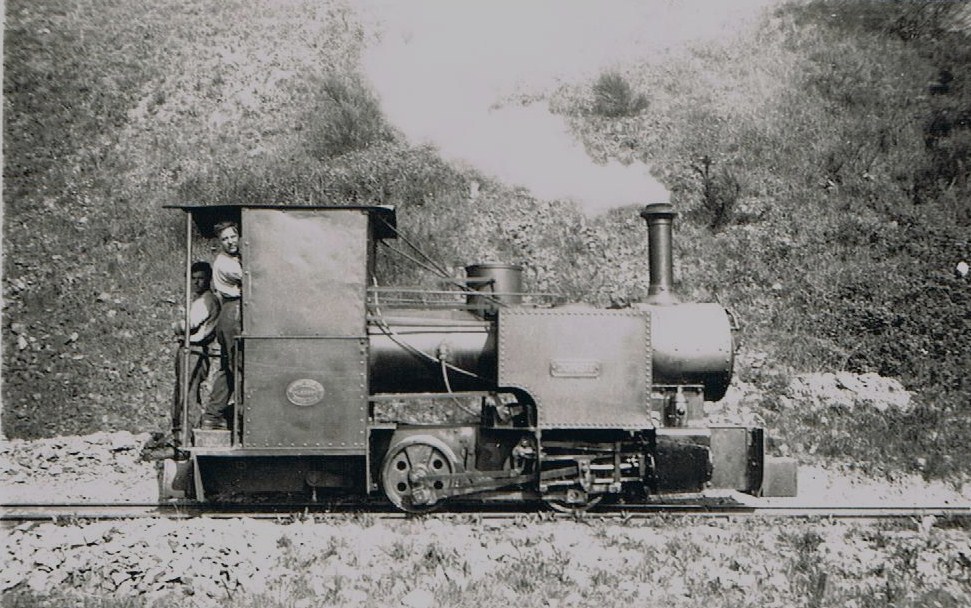
Jees Quarries had a fascinating railway system populated with numerous little steam locomotives some of which are pictured below. This was an odd character named Dorsib which has all the appearance of being cobbled together rather than a purpose built loco. However it was Hunslet Engine Nr. 1039 of 1910. Purchased new with this unusual side tank arrangement and with drawn in the mid 1930's. (Industrial Railway Society)
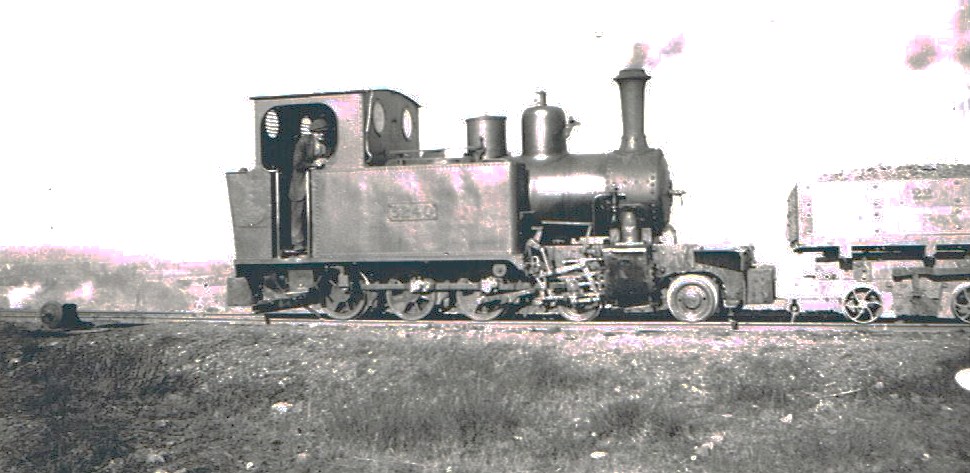
Jees purchased a second hand ex WD 4-6-0 one of hundreds built for the 600mm trench railways of WW1. Nr. 3240 was its WD number still applied in Jees service. Although second hand ex-War Department it was in fact new when purchased as it had not made it to France and was sold off as surplus and delivered to Jees on 28th. June 1919. It was mostly used for stripping soil service when new areas of quarry were opened up and was taken out of service sometime by 1948 and cut up for scrap as you can see below in August that year.
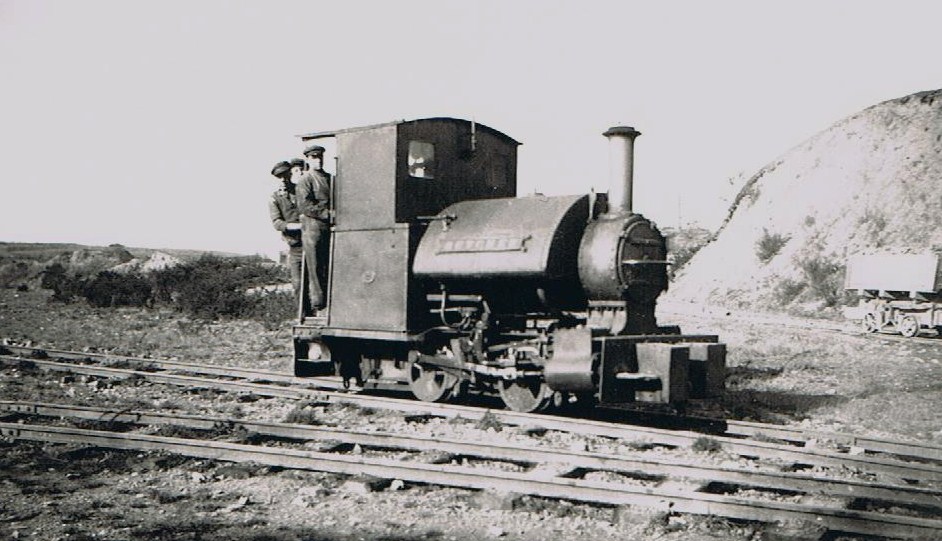
Jees started to purchase locos from William Bagnall Ltd in 1913 with this purchase which they acquired second hand on 9th June 1913. Up until that date it had been owned by J. Strachan & Co., contractors (their Nr. 9) and was last used on the Red Wharf Bay railway contract in Anglesey. It had started life as Bagnall's Nr. 1655 of 1901. It was scrapped in 1945.
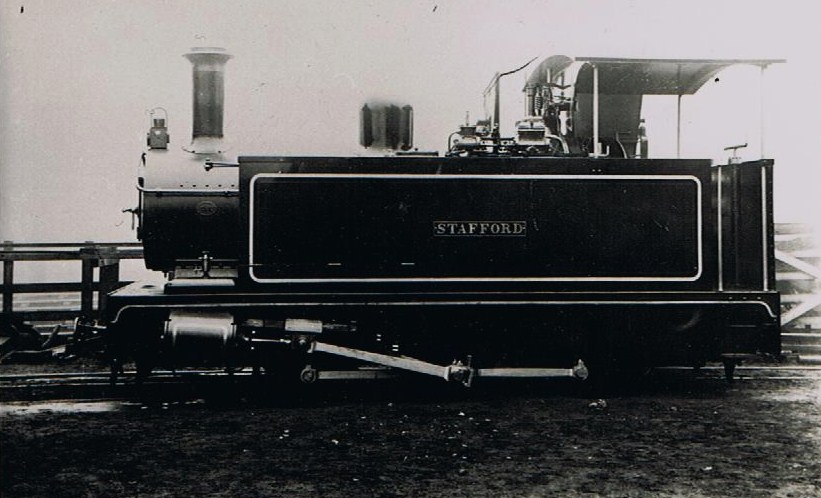
"Stafford" New as built. In later years there were alterations to the tanks and cab, including a back sheet. This engine was also ex-War Deartment built by W.Bagnall as their Nr. 1911 of 1917 and used by the Admiralty at Ridham Salvage Depot (CSD 96) Sittingbourne Kent and then as CSD 31 at WD Neasden depot until 1st May 1922. Bagnall's then took it back, refurbished it and sold it to Jees on 31st May 1922 where it is seen in "as acquired" condition. It came within a whisker of preservation as you will see below. (Peter Bayly Collection)
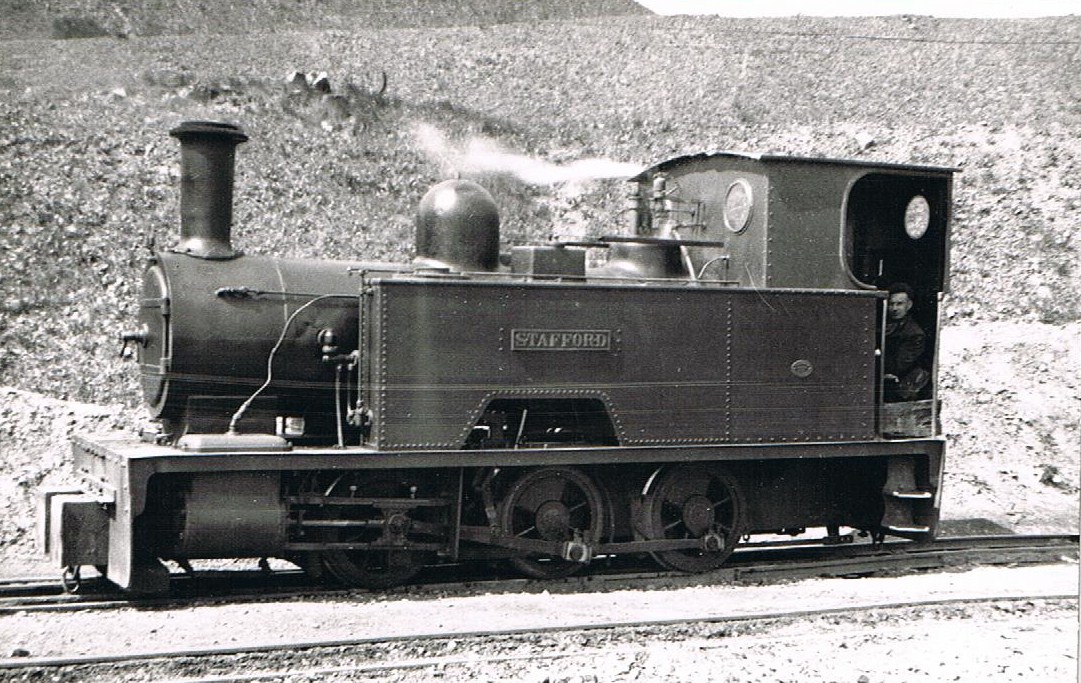
"Stafford". It was a very able engine and survived until the end of rail traffic at Jees and might have made it into preservation had it not been for a quirk of fate. Rail traffic was dispensed with in October 1954 when the quarry replaced it with mobile plant and Stafford was scrapped on site in June that year by Abelsons, the scrap merchants. But not until a serious effort had been made to save the loco for the Talyllyn Railway. Much of the track recovered from dismantling the railway had been sent to North Wales and a party of Talyllyn members went on site to view this loco and enquired to see if it could be purchased for the Welsh railway. There is no doubt it would have made a fine addition to the stock of the preserved line being ideal for passenger work. The party were told by the workman they questioned about purchasing the engine to return the next week after enquiries were made. This they did and they found it lying in pieces cut up. They did manage to save the last operational diesel though - Ruston Honsby Nr. 200792 of 1940 which found its way to the Talyllyn in March 1957 having survived the demise of the quarry line by two years. (Michael J. Lee)
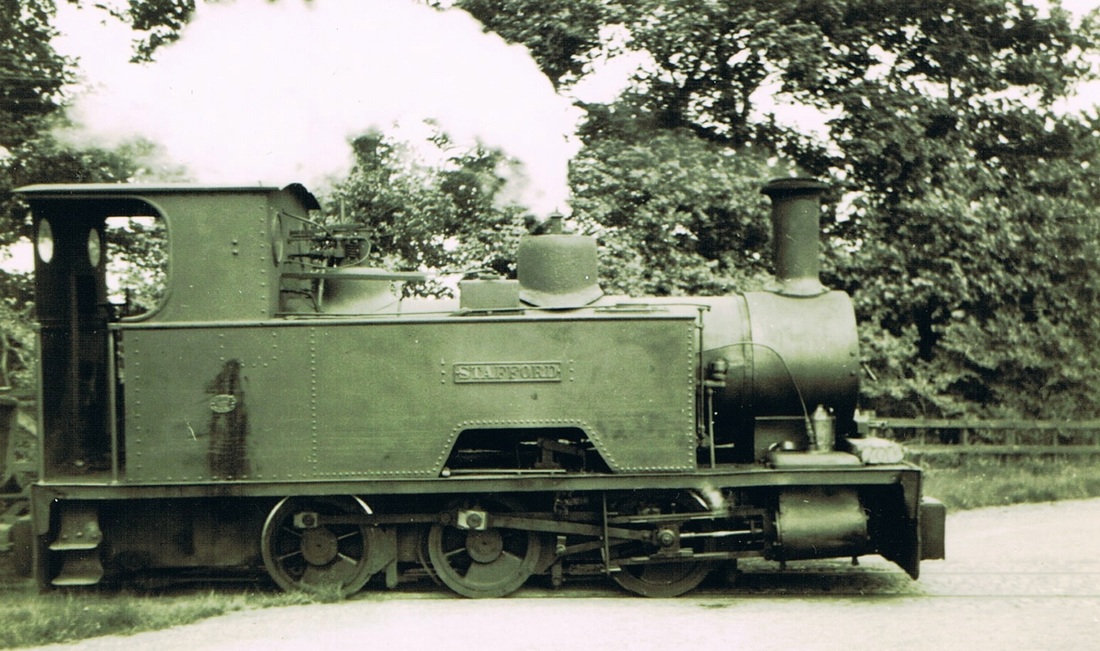
Stafford crosses the road on a working. This lane connected the main Tuttle Hill to Mancetter Road with Hartshill village but about 40 years ago the quarry sides collapsed and the lane had to be closed. This was the normal duty for "Stafford" taking overburden and quarry waste from the brim of the quarry to the tip over a very narrow steel bridge over the main Nuneaton to Atherstone road to the dump. It was used mostly on these duties during the early 1950's. (M.J.Lee)
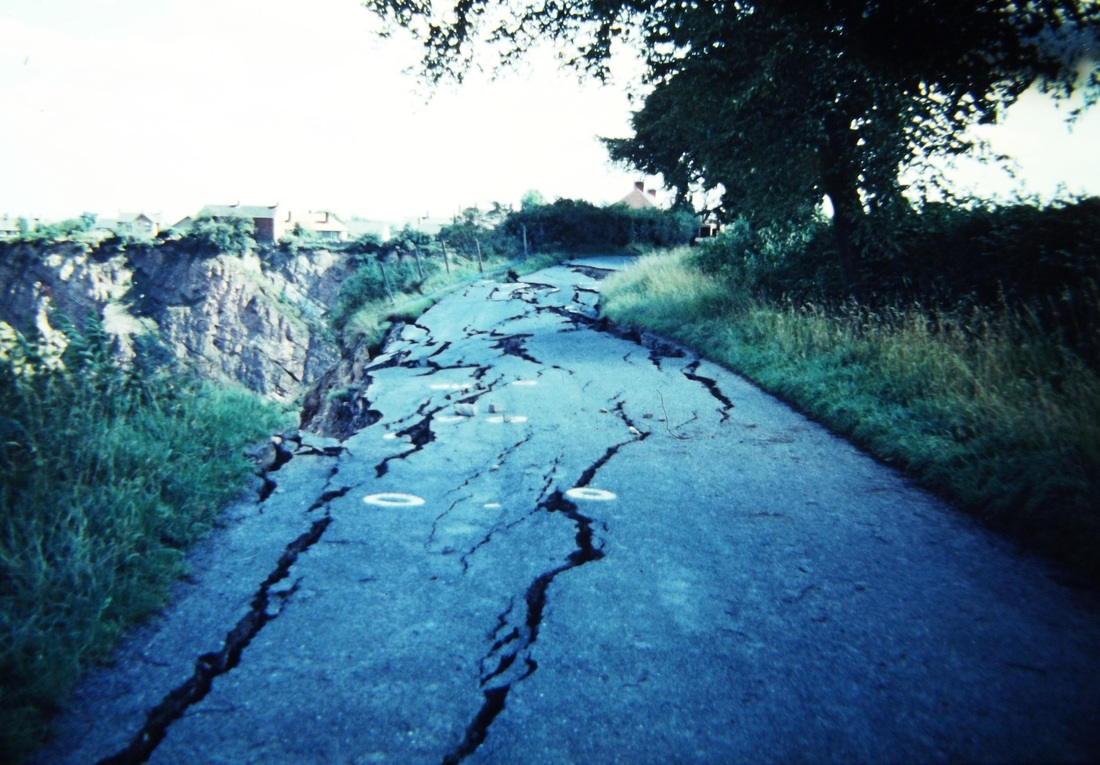
The previous photo shows "Stafford" crossing the lane that led from Hartshill village to the Mancetter Road. This had to be closed as it began to slip into the quarry. These photos taken in 1974 illustrate the extent of the slippage then, and I would imagine the tarmac has now fully fallen into the quarry today, although this area has now been sealed off as it is too dangerous to enter. (Alan Cook took both pictures)
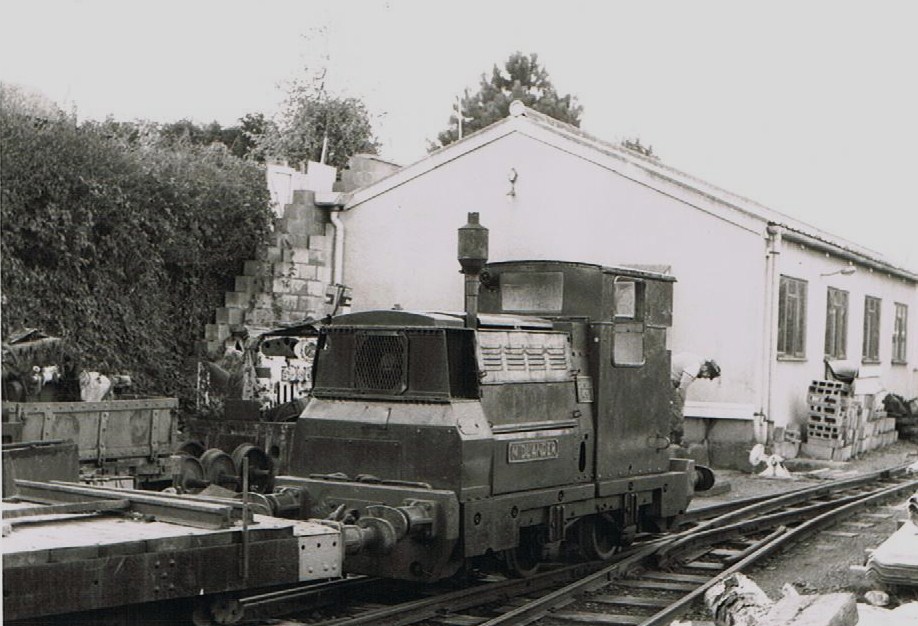
This was the sole loco of Jees which made it into preservation - "Midlander" at the Talyllyn where it is used for works trains and freight service. It was built by Ruston Hornsby in 1940, sold to the Talyllyn in March 1957 where it still lives on today. One of the side tippers from Jees also lives on at the Welshpool & Llanair Light Railway (stock nr. 134) (Peter Lee)
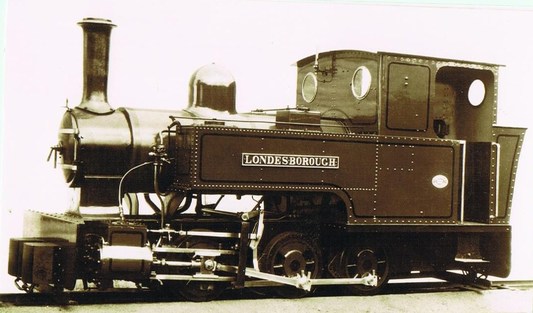
"Londesborough" is a magnificent modern looking steam engine for its era and is seen here brand new at the works of William Bagnall, Stafford in 1931. Jees purchased it that year (WB2449 of 1931) and it did good service but only lasted 20 years before being scrapped in 1951. (William Bagnall Ltd - Maurice Billington Collection)
Judkins Ltd. Tuttle Hill Granite Quarries, Nuneaton
William Cropper in the 1840's.
Cropper & Judkins (J.Judkins & Co) by 1850.
W.A.Judkins & Co from 1864 (purchased outright, previously leased) until 3rd July 1903.
Judkins Ltd from 1903.
Part of the Amey Roadstone Corporation in 1970.
Traded as Amey Roadstone Corporation from 1972
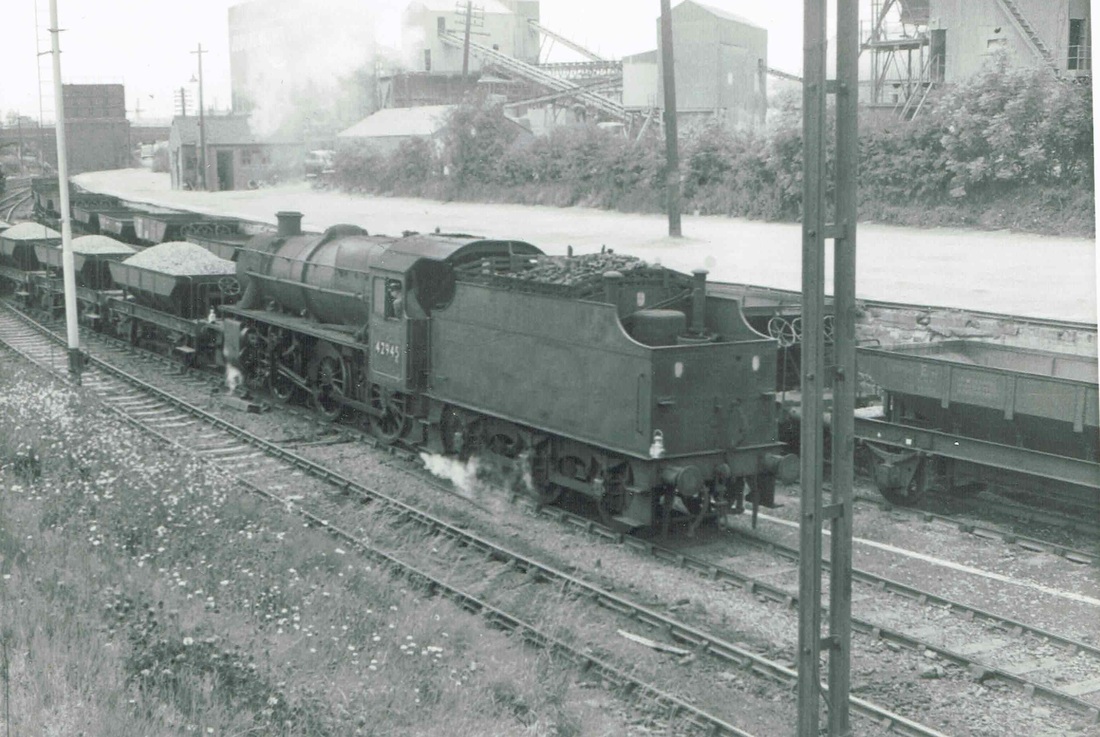
Stanier Crab 2-6-0 Nr. 42945 shunts full hoppers of stone from Judkins into the yard at Nuneaton Abbey Street station in the early 1960's. All the plant in the background is the stone crushing plant of Judkins. The train is on the former Ashby & Nuneaton joint line which was no longer in use for passenger traffic then. The stone tipping dock is on the right.
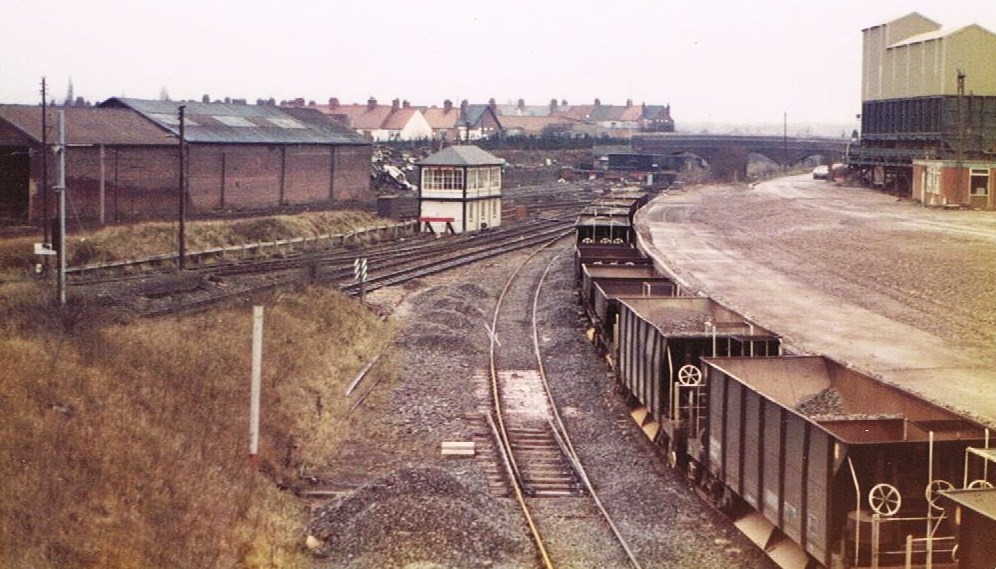
Another view of the tipping dock at Judkins. The main line from Leicester to Birmingham runs left to right. The line in the foreground was the former Ashby & Nuneaton Joint Line, once twin track but now singled to the junction. Judkins siding against the dock on the right. A rake of stone hoppers await filling. Abbey Street Junction signal box in the centre. Nuneaton Abbey Street station was beyond the road bridge. (Peter Lee)
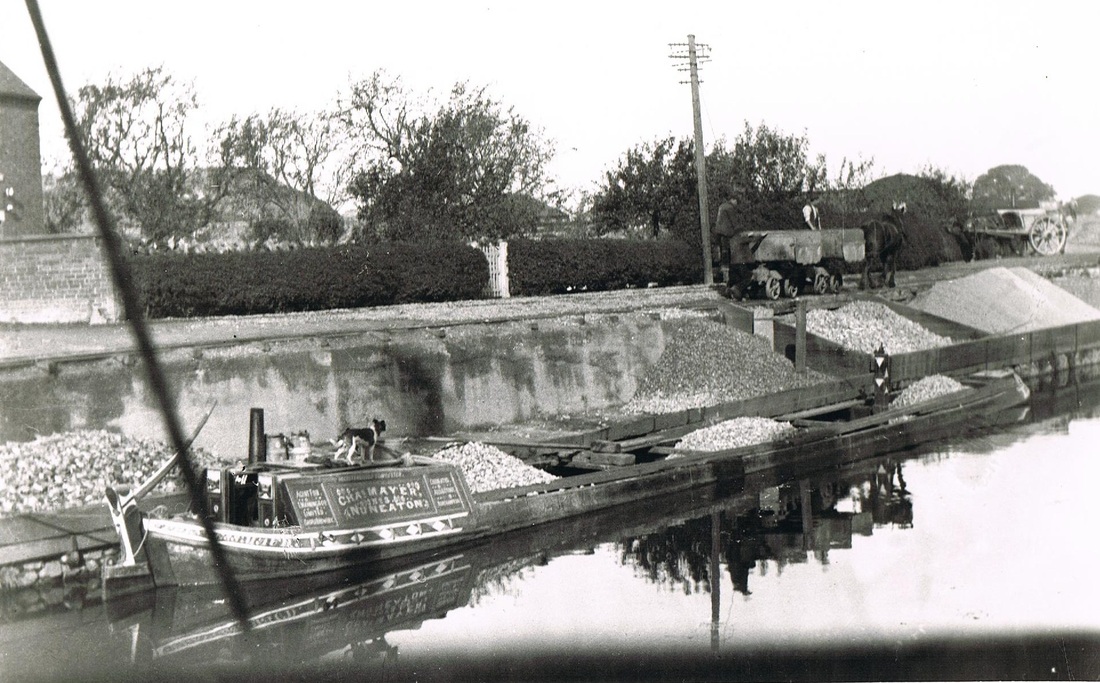
Judkins wharf before WW1. As you can see the wharf has a narrow gauge tramway worked by horses, so this photo may date from before 1911 when steam locos started working the line. As you can see the stone on the wharf was carefully graded into bins for use as road material. The barge belongs to Charles Mayer who was a director of the company.
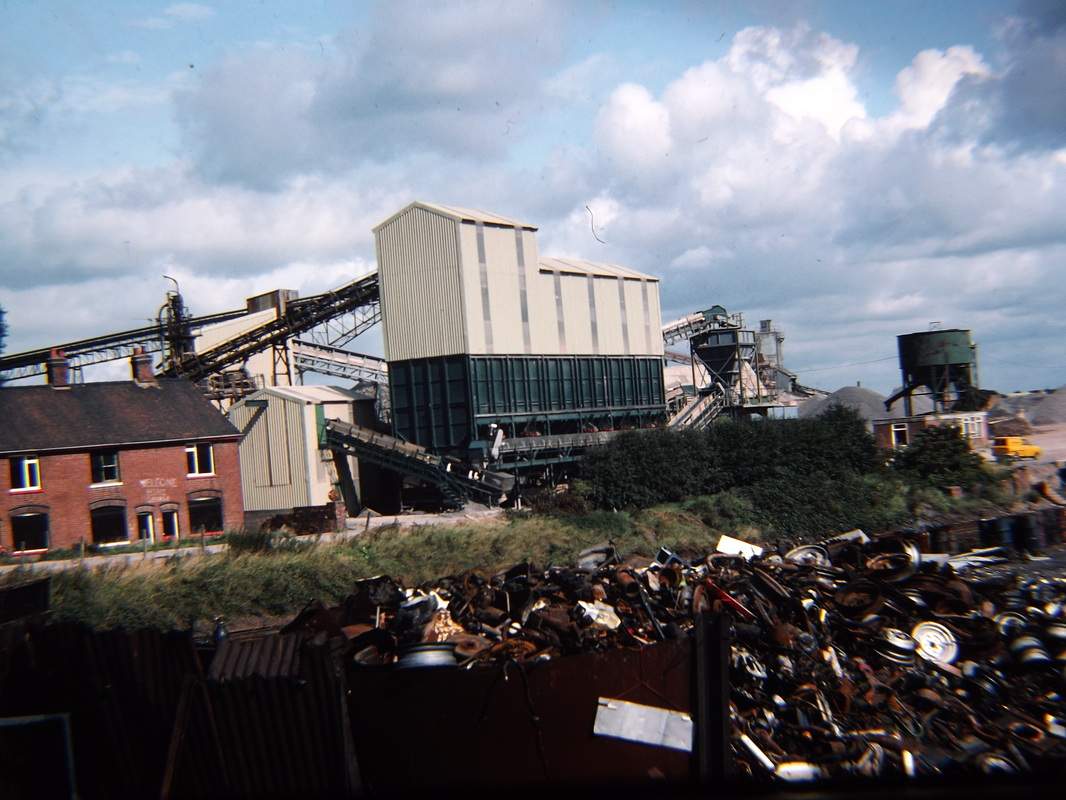
Judkins Quarry, the extensive crushing and grading plant rises above a sea of scrap. Its hard to imagine that the main Leicester - Birmingham Railway line and the junction with the Ashby & Nuneaton joint line occupies the space between the scrap and the grassy embankment in the middle of the view. The "grafitti" on the end of the house on the left above the doorway says "Welcome Home George". (Alan Cook)
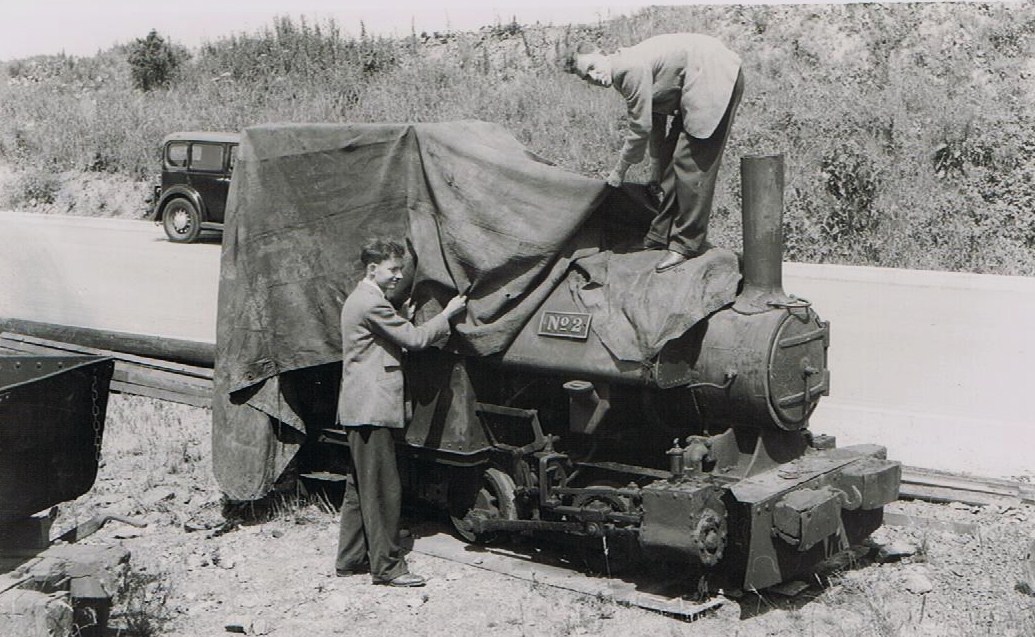
Judkins steamer Nr. 2 is unwrapped by a party of railway enthusiasts on a visit in the 1950's. Not long before it was cut up in February 1953. Introduced in 1912 when purchased from W. Bagnall (1934/1912) it was used until the end of quarry rail traffic in 1950's having outlived the diesels brought in to replace it. Its sister engine Nr. 1 survived and was sold to M.E. Engineering in Cricklewood in 1956 who sold it on to the British Railways sleeper depot at Beeston Nottingham, and is now preserved at the Amerton Railway in Staffordshire. Three diesels purchased 1930/31 were not rugged enough for stone traffic and were scrapped two in 1945 and one in 1949. (K.J.Cooper, Industrial Railway Society)
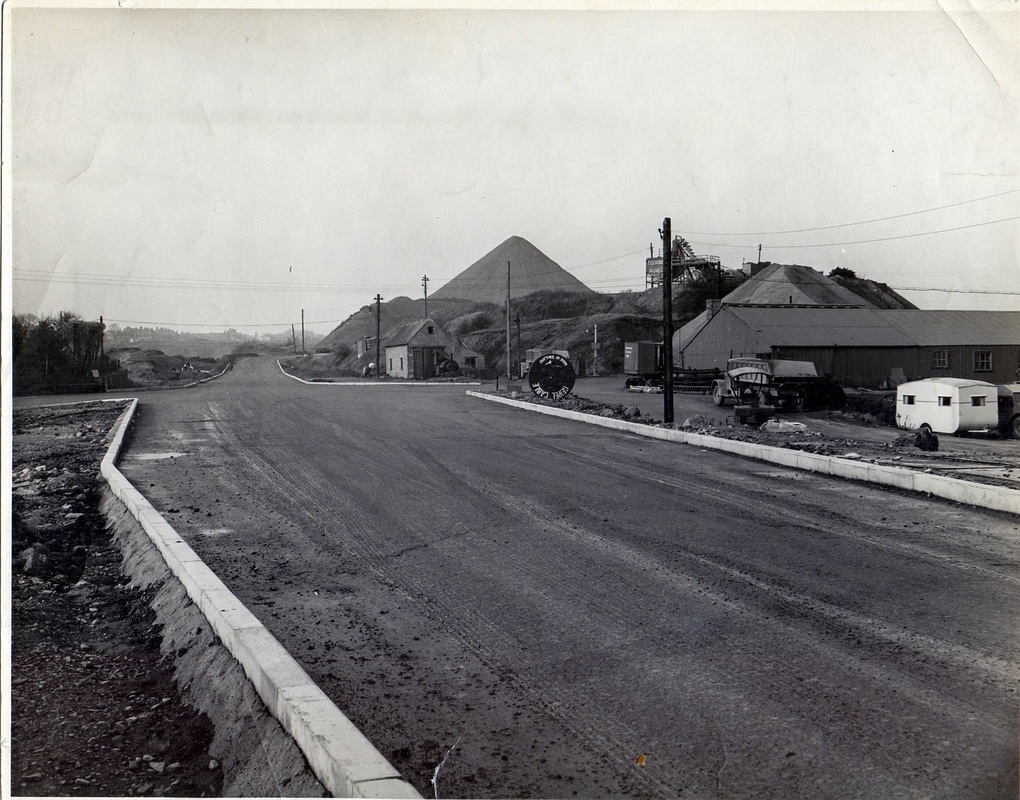
After the railway system closed the quarry went over to the use of Euclid dumpers. In order to accomodate these massive trucks they installed what was known as the Burmah Road which occupied a large width alongside and encompassing a large part of the track bed. The former loco shed is visible in this view with one of the abandoned locos still parked outside. The photo would have been taken around 1951. (Steve Salisbury Collection)
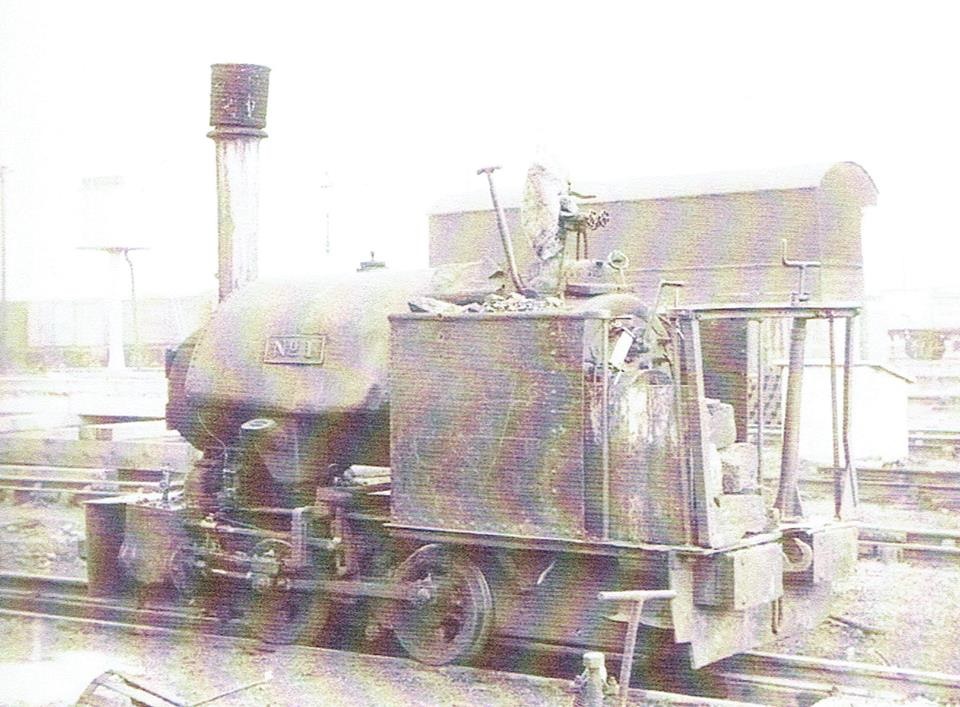
Judkins Nr. 1 is now preserved at the Amerton Railway in Staffordshire, although it had been in derelict condition for many years. It is seen here at the Beeston Sleeper Works of British Railways who purchased it in June 1956. It was purchased by Mr. R. Hilton in January 1972 and resided in his garden in Didcot Oxfordshire. When the Judkins system was closed down Mr. Hilton who visited the remains in the early 50's was offered the locos and the stock, but having just been demobbed had nowhere to put it all. He did manage to rescue this loco which might otherwise have gone for scrap. In this view it still retains its Judkins number plate,

The Punch Bowl Inn at the bottom of Tuttle Hill was 50% owned by the Coventry Canal Coy. and Charles Mayer a director of Judkins Ltd. It was just about to be demolished in 1950. You can see why the canal bridge here is to widened. Beyond is the railway bridge at Nuneaton Abbey Street station. Judkins quarry is away to the left in this view and the entrance to Stoney Road was between the canal bridge and the railway bridge on the left.(Reg. Bull)
Kingsbury Collieries Ltd.
Hockley Hall and Whateley Colliery & Brickworks Ltd until 27th February 1905.
Sinking of Kingsbury Colliery commenced in 1895. Production was delayed due to difficulties and started in 1900.
Sidings were built to the M.R. Kingsbury Branch, a one mile long branch was built.
An additional mine was sunk commencing 1927 which opened in 1932.
There was a double track rope worked tramway built to deliver coal to Kingsbury colliery where it was screened. The tramway started in 1928.
Dexter Colliery workings were merged with Daw Mill Colliery and coal winding ceased 26th March 1965.
Shafts continued in use as service and maintenance shafts until c. 1985. Closed completely 1st. April 1987 and the site cleared during 1988. Kingsbury colliery continued to wind coal until 28th June 1968. Much of the production between 1966 and 1968 went to the West Midlands Gas Board Lurgi Gasification Plant at Coleshill.
Hockley Hall Colliery:
W.H.Beaumont
Birmingham Banking Co.
J. Evers-Swindell
J.Spencer Balfour until March 1878
(Hockley Hall Colliery Co. 28.9.1872-28.4.1876)
Shafts opened 1881, 1891
First railway siding installed 1865. Expansion of the sidings occurred in 1881.
Also operated coke ovens and a chemical plant (disused by 1902)
Hockley Hall Colliery closed and abandoned on 3rd October 1902.
Whateley Colliery:
Sidings put in 1874.
Whateley Colliery Co. Ltd until 1878.
Production began in 1878. Brickworks were established by 1892.
New screens opened in 1898
Colliery closed 27th May 1914 and formally abandoned 6th October 1914.
The brickworks continued and became part of the Kingsbury Brick & Tile Co. Ltd
Sinking of Kingsbury Colliery commenced in 1895. Production was delayed due to difficulties and started in 1900.
Sidings were built to the M.R. Kingsbury Branch, a one mile long branch was built.
An additional mine was sunk commencing 1927 which opened in 1932.
There was a double track rope worked tramway built to deliver coal to Kingsbury colliery where it was screened. The tramway started in 1928.
Dexter Colliery workings were merged with Daw Mill Colliery and coal winding ceased 26th March 1965.
Shafts continued in use as service and maintenance shafts until c. 1985. Closed completely 1st. April 1987 and the site cleared during 1988. Kingsbury colliery continued to wind coal until 28th June 1968. Much of the production between 1966 and 1968 went to the West Midlands Gas Board Lurgi Gasification Plant at Coleshill.
Hockley Hall Colliery:
W.H.Beaumont
Birmingham Banking Co.
J. Evers-Swindell
J.Spencer Balfour until March 1878
(Hockley Hall Colliery Co. 28.9.1872-28.4.1876)
Shafts opened 1881, 1891
First railway siding installed 1865. Expansion of the sidings occurred in 1881.
Also operated coke ovens and a chemical plant (disused by 1902)
Hockley Hall Colliery closed and abandoned on 3rd October 1902.
Whateley Colliery:
Sidings put in 1874.
Whateley Colliery Co. Ltd until 1878.
Production began in 1878. Brickworks were established by 1892.
New screens opened in 1898
Colliery closed 27th May 1914 and formally abandoned 6th October 1914.
The brickworks continued and became part of the Kingsbury Brick & Tile Co. Ltd
Man-Abell Quarries (Mancetter nr. Atherstone)
Richard L. Alkin until 1880
Charles Abell until 1905
Charles Abell Ltd. until 1951
Man-Abell Quarries Ltd until April 1962
Judkins Ltd purchased the business in April 1962
The quarries are believed to have opened in 1860 or thereabouts. Transhipment sidings on the LNWR Trent Valley Main Line were established and opened by agreement with the railway company: 9th January 1885.
A narrow gauge railway was used to deliver stone to the Coventry Canal and the LNWR sidings.
Locomotive haulage was introduced in 1919.
There were still 5 horses used for haulage in June 1961.
The steam locos were replaced by the diesel in April 1956.
The steam locos were scrapped in 1958 and 1960 repectively.
Charles Abell until 1905
Charles Abell Ltd. until 1951
Man-Abell Quarries Ltd until April 1962
Judkins Ltd purchased the business in April 1962
The quarries are believed to have opened in 1860 or thereabouts. Transhipment sidings on the LNWR Trent Valley Main Line were established and opened by agreement with the railway company: 9th January 1885.
A narrow gauge railway was used to deliver stone to the Coventry Canal and the LNWR sidings.
Locomotive haulage was introduced in 1919.
There were still 5 horses used for haulage in June 1961.
The steam locos were replaced by the diesel in April 1956.
The steam locos were scrapped in 1958 and 1960 repectively.
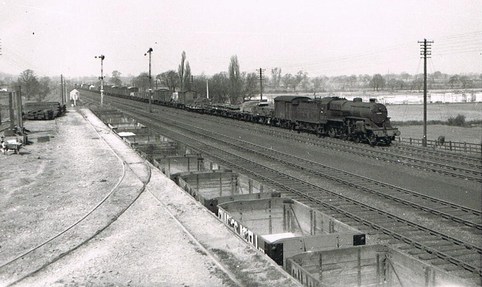
Another view of the stone wharf on the Trent Valley main line. Note the LNWR lower quadrant signals still in use. A Fowler "Crab" 2-6-0 hurries past on a mixed freight. As you can see the stone tramway went to the very lip of the concrete wharf to allow the tippler wagons to be discharged into the standard gauge trucks below. A rake of wagons wait to be filled.
Midland Quarry, Tuttle Hill, Nuneaton
Mount Pleasant Colliery, Bedworth
Owned by William Thomas (1791-1856) Opened before 1838. Closed sometime after 1865. Colliery property put up for sale 1868. May have been operated after death of William Thomas by his son Daniel Thomas who also owned Pooley Hall Colliery. A tramway was built connecting the colliery to a siding at Bedworth station.
National Coal Board Laboratories, Corporation Street, Nuneaton
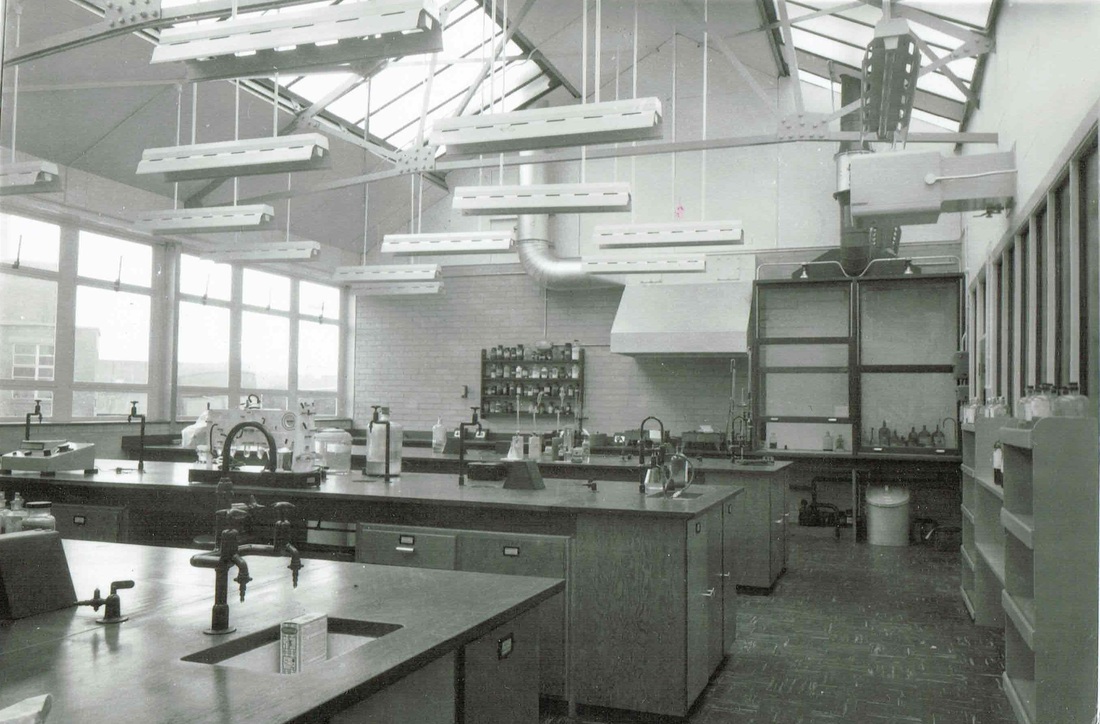
The coal industry needed laboratories to test the properties of coal, products used in the industry and gases etc. sampled in the strata. Previously these tests were carried out in individual collieries and by the 1950's a laboratory had been established at Birch Coppice Colliery. However in the 1950's a new laboratory was established to serve the whole of the Warwickshire coalfield at Nuneaton. It occupied the former Tansey's needle works in Corporation Street.
Newdigate Collieries Co. Ltd., Bedworth
Sinking commenced 1898. Coal production started 1901.
Newdigate Colliery Ltd. (until 1914)
Newdigate Colliery (1914) Ltd. from 1914.
A brickyard was in use until c. 1914
Closed 5th February 1982.
Newdigate Colliery Ltd. (until 1914)
Newdigate Colliery (1914) Ltd. from 1914.
A brickyard was in use until c. 1914
Closed 5th February 1982.
Nuneaton Engineering Co.
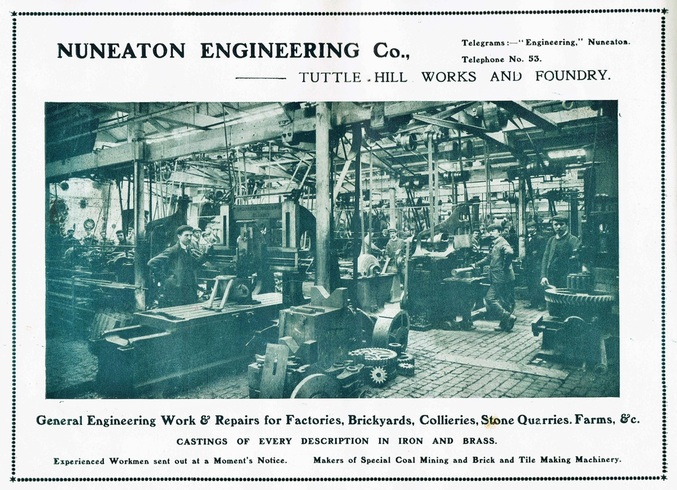
With so many brickyards and collieries in the Nuneaton and Bedworth area there was an ongoing demand for all sorts of engineering requirements. Everything from castings, through machined parts, pipework, spares for machinery, new brick and tile making equipment, colliery screens, boilers and boiler repairs. On site repairs to standing plant and equipment. The company which traded as Nuneaton Engineering Co. were started as Hall, West & Co. who were derived from an Atherstone family (Hall & Phillips, the Hat manufacturers were associated). Sometime in the 1880's the proprietor William Silver Hall wished to retire and the business was taken over by Stanley Brothers, the brickmakers, who expanded the output. They had premises in Botterill Street as well as an iron foundry at the bottom of Tuttle Hill (still extant - now divided up into small units).
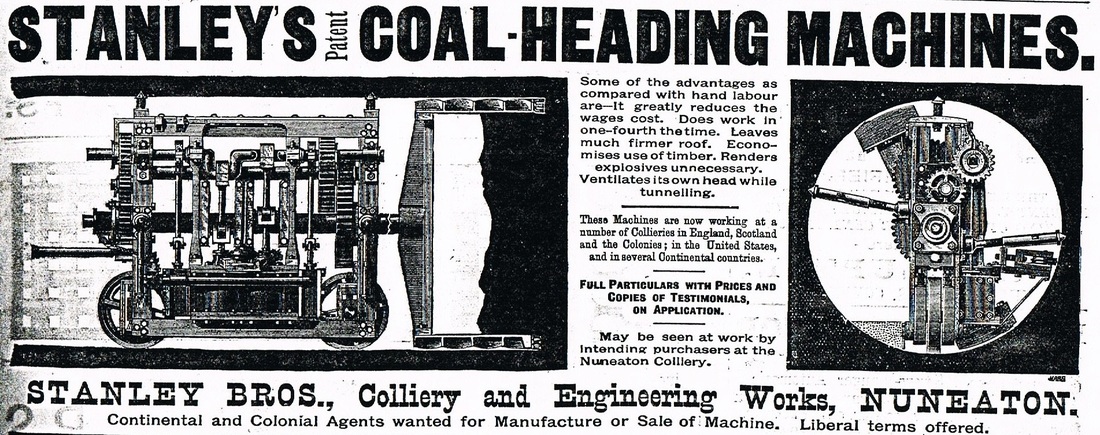
Stanley's coal heading machine was manufactured by the Nuneaton Engineering Co. Ltd although I believe the design was developed by the Hall West & Co, the predecessors of Nuneaton Engineering. One of these machines was purchased by the War Department during World War One to be used for cutting through the clay under the Messines ridge preparatory to blowing the Germans out of their trenches on top of the ridge. Unfortunately no-one seems to have accounted for the fact that this gadget was man for the job with coal, but the clay soon clogged it up and it burnt out. It had to be abandoned in situ and is still there to this day. (Colliery Guardian)
Pooley Hall Colliery Co. Ltd. Polesworth
Daniel Thomas sunk the original Pooley Hall Colliery c. 1846. Bankrupt 1863. (colliery was also referred to as Polesworth North and it is highly likely these were on two different sites)
Another shaft sunk 1865 but the operator not known.
Pooley Hall Colliery in 1877.
Later site was operated by the Polesworth Brick & Tile Co. closed 1890 and officially abandoned 1892.
Chaytor Brothers extant 1896-1908. (George Dyson & Sons, operators during this period?)
Merged with Amington, Alvecote collieries in June 1951. Closed 16th April 1965.
Pooley Hall Colliery had a rapid loading wharf onto the Coventry Canal which could load a canal boat in 10 minutes.
Another shaft sunk 1865 but the operator not known.
Pooley Hall Colliery in 1877.
Later site was operated by the Polesworth Brick & Tile Co. closed 1890 and officially abandoned 1892.
Chaytor Brothers extant 1896-1908. (George Dyson & Sons, operators during this period?)
Merged with Amington, Alvecote collieries in June 1951. Closed 16th April 1965.
Pooley Hall Colliery had a rapid loading wharf onto the Coventry Canal which could load a canal boat in 10 minutes.
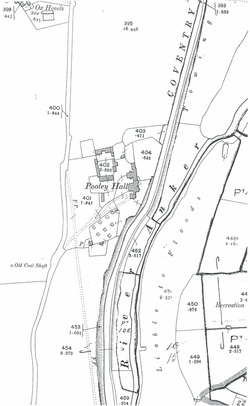
The original Pooley Hall Colliery is probably the coal shaft to the left of the map close to Pooley Hall. This was sunk by Daniel Thomas c. 1846. Daniel was the son of William Thomas of Mount Pleasant Colliery and in 1861 the mine employed 123 men and 22 boys. Daniel Thomas was bankrupt in 1863 and the later a new Pooley Hall Colliery was set up on a different site.
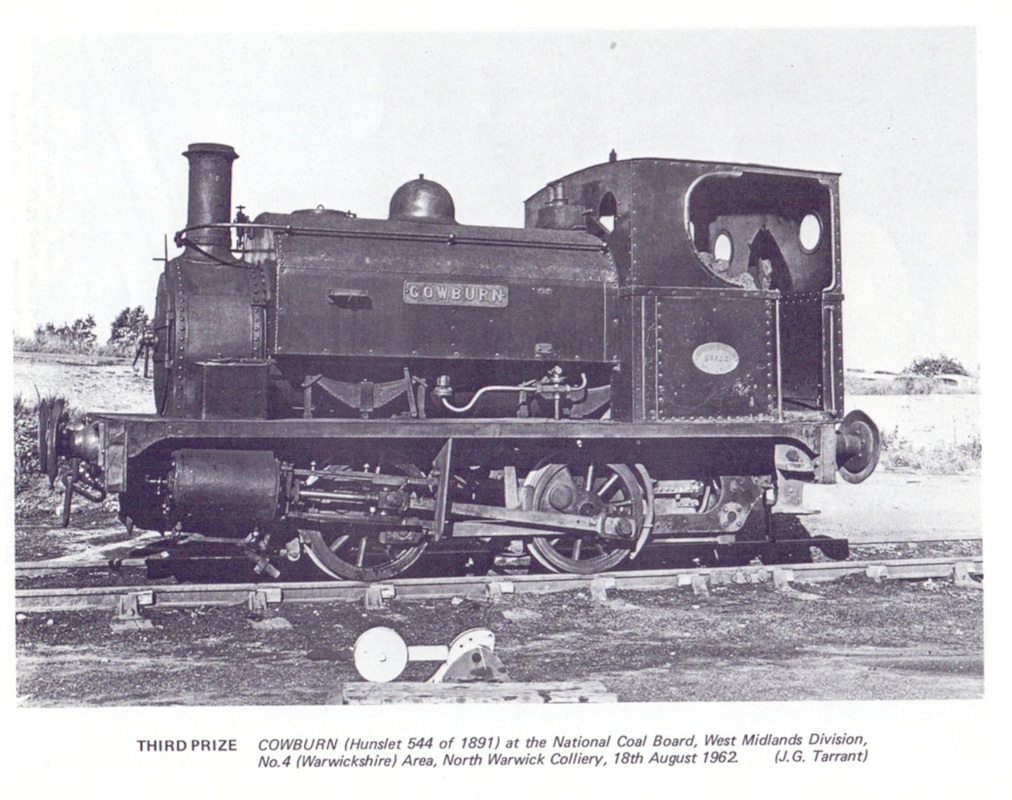
"Cowburn" was transferred to Griff Collieries for a spell post nationalisation from January 1948 until June 1949. It received heavy repairs during 1953 and had a new forebox, tubeplate and tubes fitted which were completed by 1954. And enthusiasts visiting in both March and October 1963 found the loco in good condition. The colliery closed on 16th April 1965. The last loco in service was "Kia Ora". "Cowburn" was disposed of to Birds Commercial Motors Ltd. at Long Marston in January 1966 for scrapping. (IRS Journal 55 August 1974)
Stanley Brothers Ltd., Stockingford, Nuneaton.
formerly Walter Handley,
Handley & Wheway, (Exors. of David Wheway until c. 1867)
Stanley & Broadbent,
Stanley Brothers & Co.
Stanley Brothers Ltd from 1899.
Also incorporated the brickyard of Peter Unger Williams until 1837, later the business was carried on by his widow Caroline Williams, and her sons trading as Williams Brothers.
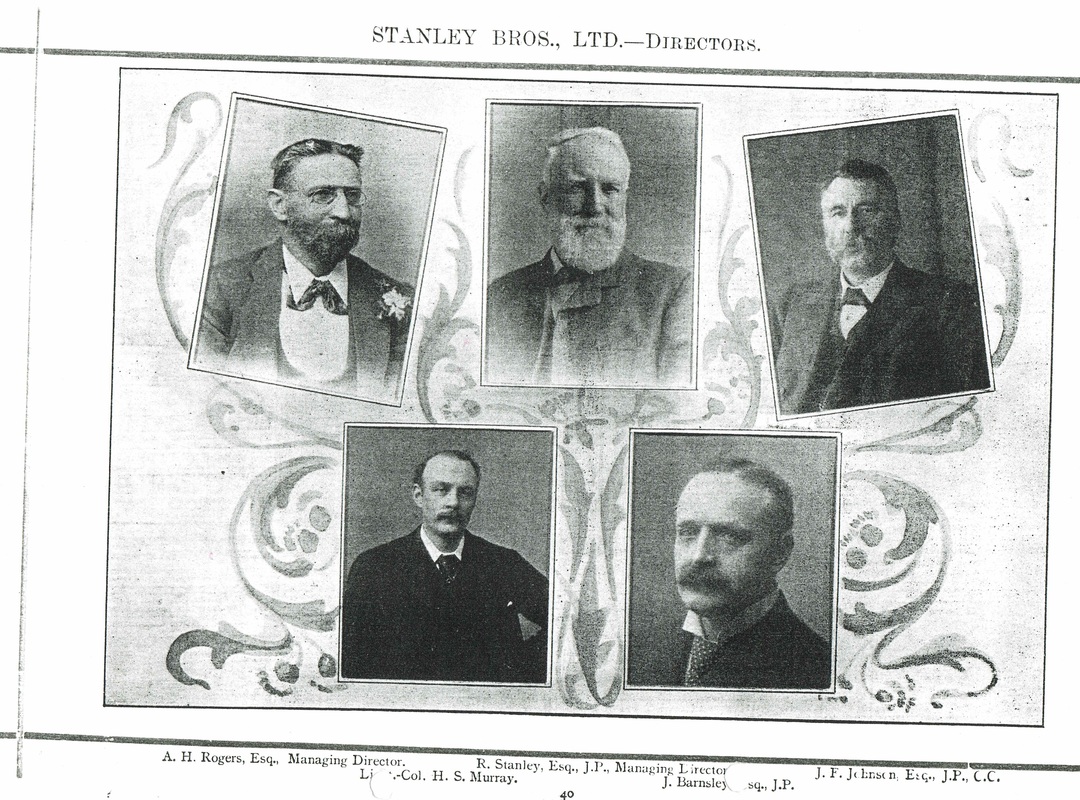
A fuller, and in depth description of the directors of Stanley Brothers Ltd will follow shortly but at the start I will tell you about J. Barnsley who became Brigadier Sir John Barnsley (1858-1926) DL, JP, VD. Owner of a large Birmingham construction company J. Barnsley & Sons Ltd. Builders he held a number of key positions in his home city of Birmingham. He was knighted in 1914. Sir John had an exemplary record in World War One. He raised a reserve batallion of the 5th Warwickshire Territorial Battalian and became brigadier of the Gloucester & Worcester Brigade and served in France. Amongst his company's contracts were Birmingham Council House, Birmingham General Hospital and many buildings in Corporation Street. A Liberal, a Wesleyan Methodist with many years of public service to his name.

Stanley Brothers officials in 1902. The original partnership company of Stanley Brothers Ltd was incorporated as a limited company in 1895. At that time the business covered 145 acres at Stockingford on Nuneaton Common and the business was one of the largest manufacturers of clayware products in the UK. There were also separate brickyards owned by the company - The Dale Hall Brick and Tile Works - at Burslem Stoke on Trent which made red and blue quarry tiles, roof tiles and ridges and the Willenhall Brick & Tile Works in Coventry which made roofing tiles. This latter was leased for 21 years from the Earl of Craven. At Stockingford there were four principle yards running both sides of Croft Road (formerly Swan Lane). Stanley Brothers serviced 4000 customers in 1895. The value of the business in 1895 was £114,072 5s. 1d. In addition to the brickyards Stanley Brothers operated two collieries - Nuneaton Colliery whose lease expired in 1899 but had been worked very profitably for some years. Also they leased the Charity Colliery in Bedworth. Nrs. 1 & 2 yards covered 47.5 acres which Stanley Brothers owned freehold. Here they made chimney pots, bricks, quarry tiles, roof tiles and sanitary pipes. Nr. 3 yard, which was leasehold until 1907, covered 26 acres and Nr. 4 yard was leased hold until 1910 and covered 72 acres. They had two steam locos serving the four yards and the colliery and 295 coal wagons. To overcome the lease running out on the Nuneaton Colliery Stanley Brothers took out a lease covering 340 acres of coal at a new pit at Whittleford which was in production until 1922 when the lease expired.
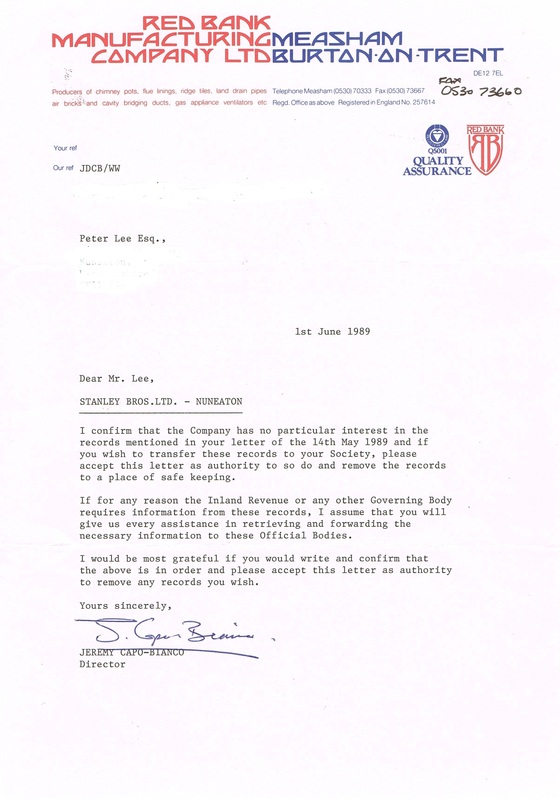
How Stanley Brothers records were saved. They are now the property of the Nuneaton Civic Society on loan to the Warwickshire Records Office. The are tens of thousands of documents for future researchers checking on their ancestors who worked for Nuneaton's biggest brickmaker and colliery proprietor.
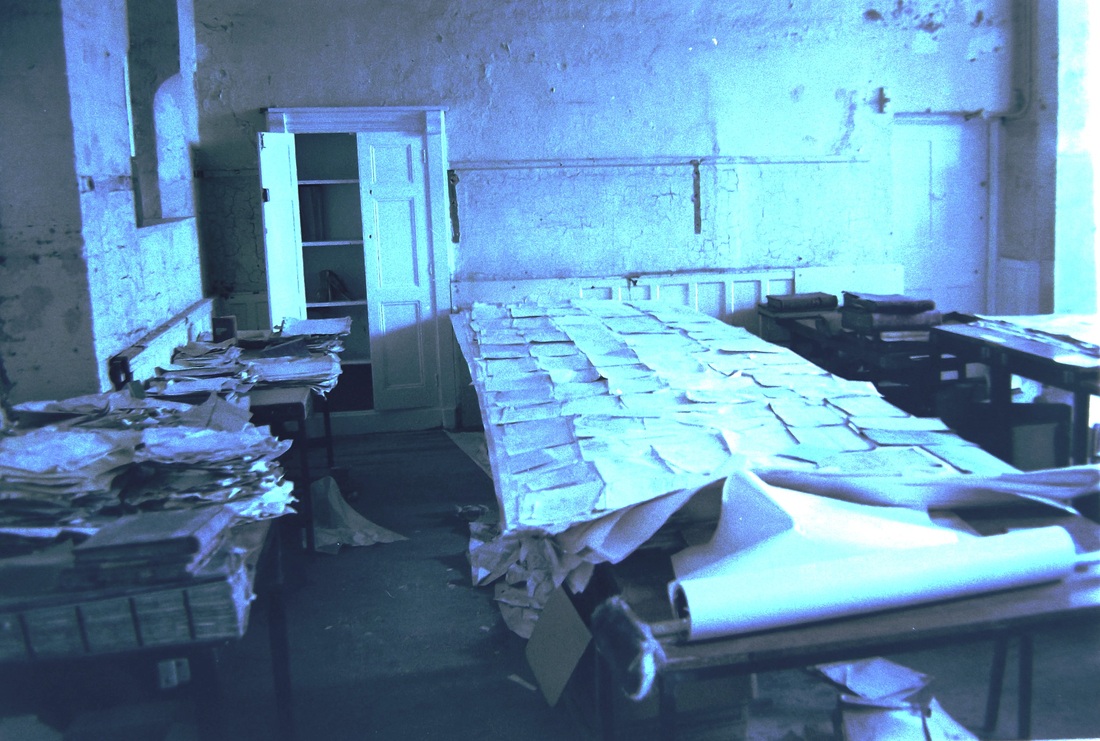
Alan Cook, Beryl Kerby, Peter Bayly and Peter Lee rescued Stanley's mouldering archives from the company's offices at Stockingford and transferred them to the Chilvers Coton Heritage Centre for initial conservation. Here we have laid out hundreds of papers to dry out, a long laborious job that took weeks and the smell was awful. After this initial conservation work was done these documents were then transferred to Warwickshire County Records Office. (Alan Cook)
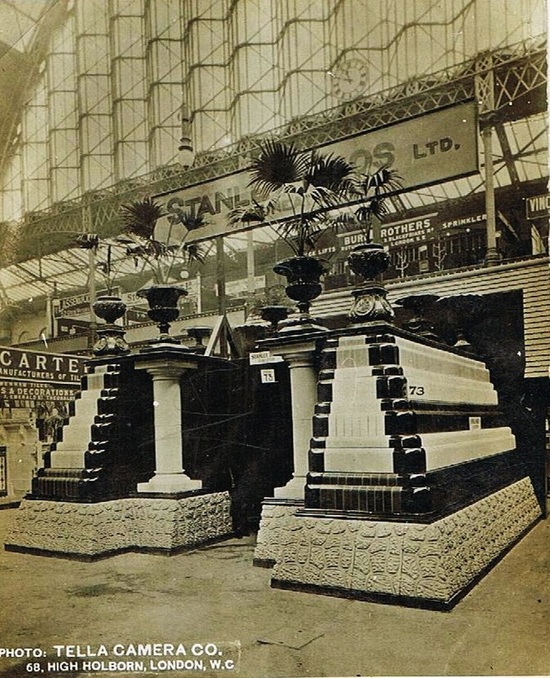
Stanley Brothers Exhibition Stand at the Building Exhibition, Earls Court, London. This exhibit is one of Stanley's specialities - glazed bricks. The process of glazing the bricks was a closely guarded secret, but one of Stanley's employees travelled to America and introduced the process over there.
| The Pre-history of Stanley's Brickyards | |
| File Size: | 540 kb |
| File Type: | |
| |||||||
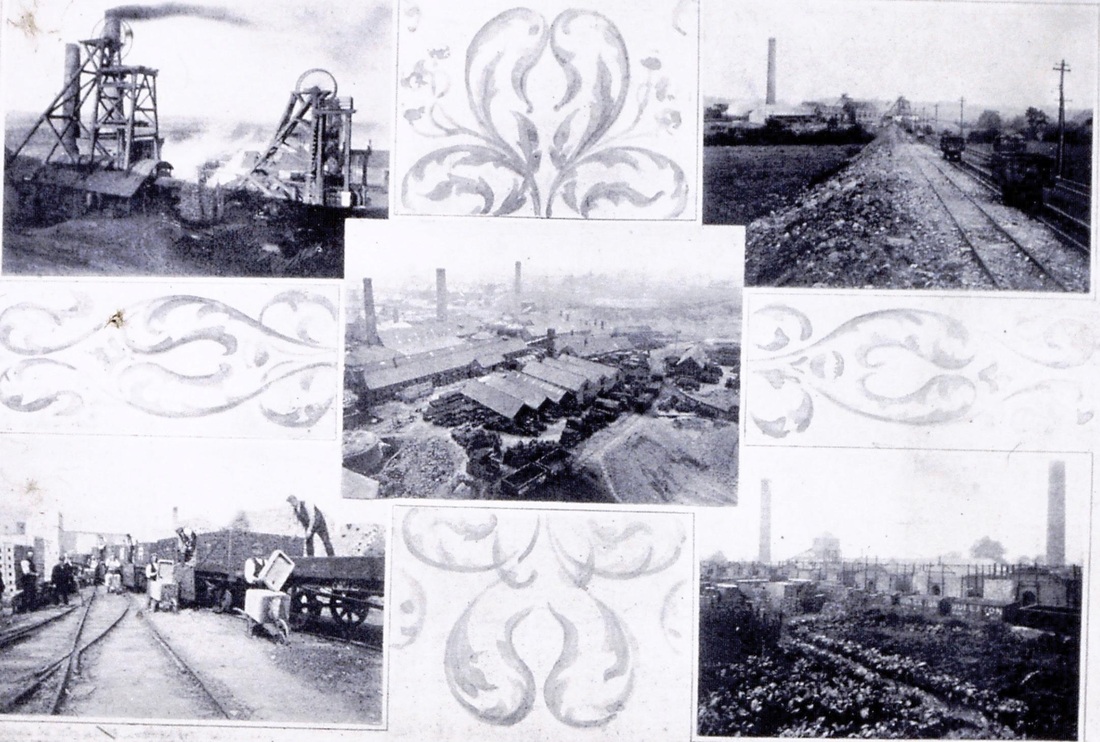
Stanley Brothers 1902. Top left - Charity Colliery (Bedworth) Top right - one of the narrow gauge tramways used to haul clay from the various clay holes. Bottom left, loading clay products - in this case Belfast sinks onto LNWR wagons. All clayware products were sent out using main line railway company wagons because after loading they were insured in transit by the railway company. If they had sent the goods out in their own wagons they were not insured. They only used their own wagons lettered NUNEATON for Nuneaton Colliery or BEDWORTH for Charity Colliery, Bedworth for coal which was less liable to damage in transit. They had hundreds of coal wagons for this purpose. The centre picture shows the very extensive yards at Stockingford which stretched both sides of Croft Road. Bottom right, another view of the Stockingford yards.
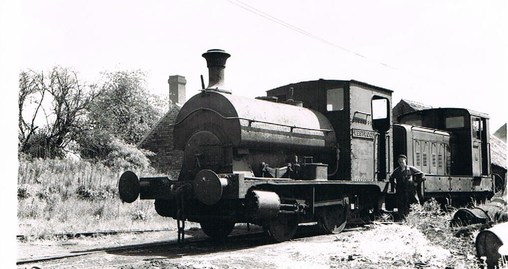
When Stanley Brother's last steam engine "Westwood" was worn out about 1950, it was shut up in its shed and the management purchased a Ruston Hornsby diesel to replace it. Both engines are seen in this view as the photographer Maurice Billington has persuaded the driver to haul Westwood out of the shed for a spot of photography. Geoff Edmands told me that when the the last steamer at Haunchwood Brick & Tile (Glenmayne) was about to give up the ghost, the Haunchwood board decided to buy a diesel replacement, but with due caution they asked Stanley Brothers if the could nip round and inspect their RH and see how it was working. You have to bear in mind that in the 1950's it was not at all certain that diesels were the best replacement for steam engines, and there was a ready supply of industrial steam engines for sale. Coal was cheap and plentiful and with collieries on the door step it might not be as cost effective to run a diesel as a steamer. Haunchwood directors turned up at Stanley Brothers offices for a tour of inspection and then went out for lunch with the Stanley's management involved in the days proceedings. Although the two businesses were rivals in some ways there was a great deal of cordiality between them. Haunchwood board was persuaded that the diesel was the best option and went out and purchased one. In the meantime Westwood lay cold and lifeless in its shed until it was dragged out for the last time and cut up on the spot. (Maurice Billington)
STANLEY BROTHERS
Locomotive and Wagon Stock
LOCOMOTIVE STOCK
Summary:
At its greatest extent Stanley Brothers used two steam locos at their Nuneaton yards, two at Charity Colliery and two at Nuneaton Colliery.
They had at one time as many as 1350 coal wagons in circulation purely for use at either Charity and Nuneaton Collieries. The brickyards sent their products out by main line railway company wagons packed in timber and straw packaging so they could claim compensation from the railway company if there were breakages, not so much a concern with coal.
Charity Colliery:
1. CHAMBERLAIN
0-4-0ST OC Manning Wardle Type H 439/1873 New to Charity Colliery 23rd May 1873. Sold to Topham Jones & Railton contractors 1918
2. IRONSIDES
0-4-0ST OC Henry Hughes Works Number not known – origin not known, transferred to Stockingford Brickworks 1925.
3. NORMAN 0-6-0ST IC Manning Wardle Type M 240/1867 New to Charity Colliery 27nd June 1867., transferred to Stockingford Brickworks 1925
4. GLENMAYNE 0-4-0ST OC Peckett 983/1904 new to Charity Colliery. Fitted with a new firebox in 1912. Sold to Haunchwood Brick & Tile in 1925 after closure of Charity Colliery.
FOREST Nr. 1 0-4-0ST OC P 484/1889 ex Upper Forest & Worcester Steel & Tinplate Works, Morriston, West Glamorgan. Sold by J.F.Wake, a dealer in Darlington Co. Durham.
Nuneaton New Colliery, 6 & 7 Works Whittleford:
BOLSIDE
0-4-0ST OC Manning Wardle scrapped by a Coventry scrap merchant 1940.
KITCHENER ? sold for scrap
MASTER GENERAL
Andrew Barclay 1188/1900 disposal not known
FLORENCE
0-4-0ST OC MW transferred to Nrs. 1-4 works Stockingford 1940.
Stockingford Works and Nuneaton Old Colliery
0-4-0ST Hunslet Engine 263/1881 ex T.A. Walker, Manchester Ship Canal Contract c. 1896
FLORENCE
0-4-0ST OC MW transferred to Nrs. 1-4 works "Florence" was built by Manning Wardles of Leeds, (their standard type H) works Nr. 593, it was completed and sold on 20th 1877, to Burton Brewery Co. Ltd of Burton on Trent, where it was their Nr. 2.
At an unknown date it was sold secondhand to J.D. Nowell a contractor in Warrington, who sold it on again at the end of Mr. Nowell's contract, this time going to the Premier Cement Co. Ltd. of Irthlingborough, Northamptonshire before finally going to Stanley Brothers by which time it acquired the name "Florence".ex Nrs. 6 & 7 yards 1940. Scrapped by J & H.B.Jackson of Coventry in December 1950.
ANCOATS 0-4-0ST OC MW1091/1888 ex- T.A. Walker Manchester Ship Canal Contract. Sold to Thomas E. Gray Ltd. Burton Latimer, Northants and converted with a Sentinel loco.
WESTWOOD 0-4-0ST OC Yorkshire Engine 257/1875 rebuilt by Tait their works number 69/1920 and acquired by Stanley Brothers. Sold to G.W.Bungey Ltd 11.1961 then sold on to George Cohen Sons & Co Ltd. Kingsbury. Scrapped on site 1962
IRONSIDE
0-4-0ST Henry Hughes transferred from Charity Colliery in 1925. Disposal not known.
NORMAN
0-6-0ST IC Manning Wardle 240/1867 ex. Charity Colliery in 1925 disposal not known
(un-numbered or named) 4wDM RH299098 1950 purchased new. Disposal: to G.W.Bungey, a dealer, 11.1961who sold it on to Sheepbridge Stokes Ltd. Chesterfield, Derbyshire)
Notes: Source: M.J.Lee’s note books
Extracts from Machinery Market (my own notes in italics which need verification)
1.12.97 Stanley Bros Nuneaton, disposal of 11" loco. Replaced with larger one.
(This might be an earlier unknown loco than the first one in IRS lists - "Sale" which was purchased by Stanleys from the contractor building the Manchester Ship Canal" T.A.Walker and named "Sale" HE263/1881 which in IRS records was purchased second hand in 1896, this might be the larger loco referred to in the disposal details above which ties in with the dates. Sale was an 0-6-0ST.
1.10.00 Stanley Bros Nuneaton, 9" x 16" 120 psi loco for sale replaced by larger one.
(Again this must be a loco unidentified in IRS records as their records do not tie in with this date - I think it is fair to say Stanley's needed at least one steam loco and probably two to carry out internal shunting and wagon transfers after completion of the Griff branch in 1881 - there was no way the main line companies would go beyond the stop board in the exchange sidings)
9.4.20 Stanley Bros Nuneaton, 0-4-0ST for sale built 1916 (I wonder if this is the Nuneaton (New) Colliery/ Nrs. 6 & 7 yards, loco named "Kitchener"? about which the IRS records are silent - it can't be recently identified Stanley's loco - Master General as that was built in 1900)
24.3.22 Stanley Bros Nuneaton, 4-coupled loco for sale 10.5 x 18" reb AB 1915. (This might be Master General which was built by Andrew Barclay's of Kilmarnock as AB1188/1900?)
17.4.25 Marple & Gillott,Sheffield, selling 4-coupled P saddle tank (Glenmayne) 14" (ex- Charity Colliery - acquired by Haunchwood Brick & Tile)
17.8.61 Stanley Bros Nuneaton, 88DS loco RH299098/50 for sale.
(Subsequent disposal:-see below)
Stanleys also had on hire: "King George V" a Hawthorne Leslie loco works nr. 2839 of 1910. Hired from T.W.Ward and returned to them.
Stanleys also hired Glenmayne from Haunchwood Brick & Tile Co. for a period after selling it to the rival brickyard in 1925.
Wagons:
The wagons were numbered in the range Nr. 1 – 1350
Extract from Stanley Brothers Ltd Directors Minute Books 31st January 1908
The Seal of the Company be affixed to the agreement with the Yorkshire Wagon Co. for the purchase of 100 wagons from Messrs. Hurst Nelson & Co and this was accordingly done.
Extract from Stanley Brothers Directors Minute Books 9th September 1909
50 hired wagons returned to Lincoln Wagon Co. and 50 new purchased by the fire purchase system – approved.
Extract from Stanley Brothers Ltd Director’s Minute Books: 3rd June 1910
“That authority is hereby given to hire a locomotive from John H. Wake for the sum of £10 per week for one month on trial. If the engine is proved to be satisfactory that it is purchased for the sum of £540, delivered net cash, and the charge for hire to be waived. [This might be Forest Nr. 1]
Extract from Stanley Brothers Ltd Director’s Minute Books: Page 224 Friday 1st August 1919
The purchase of a locomotive for the brickworks was sanctioned the present locomotive to be repaired.
-ditto- Page 228 Thursday September 18th 1919
“In connection with the sanction given at the previous meeting to purchase a new locomotive for the brickworks, fresh received were laid before the board and it was decided to have on or two inspections made.”
Stanley Brothers valuation of effects: Feb. 1st. 1917
Brickyard – 2 locomotives value: £299. 5s. 7d. (with depreciation - £269.7s.0d.)
Charity Colliery – 2 locomotives value: £458.17s. 1d. (with depreciation £435. 18s. 3d.)
446 wagons valued at £13,437.5s.4d.
Nuneaton Colliery – 1 loco value £106.10s.0d. (with depreciation £95.17s.0d.
+ 1 loco second hand from T.W.Ward £663 9s. 1d.
505 wagons valued at £14226.1s.11d. 1 wagon was sold to Thomas Hunter, wagon repairers & dealers.
Valuation Books 1924-1961
1924 Locos £1150 9s. 11d (loco. From Nuneaton Colliery valued at £1039. 5s. 2d.).
Wagons £796. 3s. 3d.
1925 Locos £1235.8s.2d. (one loco transferred from Nuneaton Colliery/Nr. 6 yard valued at £507.17s. 11d.
844 wagons value: £25633.0.0d.
1926 Locos £1568.19s.6d.
844 wagons value £19802 0s. 0d.
1927 Locos £1412. 1s. 7d.
841 Wagons value £17758. 8s. 7d.
1928 Locos £1255 2s. 1d
836 Wagons value £16695. 4s. 6d.
1929 Locos £1129. 11s. 10d.
827 Wagons value £15689 9s. 3d.
Including 10 scrapped + 3 lapsed.
1930 Locos £1016. 12s. 8d..
? Wagons value £14670 6s. 9d.
1932/3 Locos £823. 9s. 6d
772 Wagons value £12449 0s. 5d.
1933/4 Locos £741 2s. 6d
727 Wagons value £11,002 0s. 5d.
Less 26 scrapped
1938 Loco’s were hired for £169 7s. 4d. Repairs to locos £458 9s. 6d.
Wagon hire cost: £188.0s. 0d.
1939 592 wagons – no value.
1940 566 wagons – no value
1941 531 wagons – no value some were sold to Betts & Sons, Doncaster
1944 525 wagons – no value
1945 10 wagons
From the Nominal Ledger
1942 Locos £411. 14s. 5d.
1943 Locos £370 11s. 0d.
September 1950 Locos - new Ruston Hornsby £3280.0s.0d.
Paid: December 1950 £410. 0s.0d. Final payment due in December 1951.
1951 Locos valued at £3955
1952 Locos valued at £3463
1953 Locos £3019 The RH cost £6.13s. 0d to run and for maintenance £7 5s. 1d.
1954 Locos £2641
1955 Locos £2320
1956 Locos £2047
1957 Locos £?
1958 Locos £1766
1959 Locos £1523
1960Locos £1523
1961 Locos £1138 (October 1961) Sold to G.W. Bungay for £200.
Locomotive and Wagon Stock
LOCOMOTIVE STOCK
Summary:
At its greatest extent Stanley Brothers used two steam locos at their Nuneaton yards, two at Charity Colliery and two at Nuneaton Colliery.
They had at one time as many as 1350 coal wagons in circulation purely for use at either Charity and Nuneaton Collieries. The brickyards sent their products out by main line railway company wagons packed in timber and straw packaging so they could claim compensation from the railway company if there were breakages, not so much a concern with coal.
Charity Colliery:
1. CHAMBERLAIN
0-4-0ST OC Manning Wardle Type H 439/1873 New to Charity Colliery 23rd May 1873. Sold to Topham Jones & Railton contractors 1918
2. IRONSIDES
0-4-0ST OC Henry Hughes Works Number not known – origin not known, transferred to Stockingford Brickworks 1925.
3. NORMAN 0-6-0ST IC Manning Wardle Type M 240/1867 New to Charity Colliery 27nd June 1867., transferred to Stockingford Brickworks 1925
4. GLENMAYNE 0-4-0ST OC Peckett 983/1904 new to Charity Colliery. Fitted with a new firebox in 1912. Sold to Haunchwood Brick & Tile in 1925 after closure of Charity Colliery.
FOREST Nr. 1 0-4-0ST OC P 484/1889 ex Upper Forest & Worcester Steel & Tinplate Works, Morriston, West Glamorgan. Sold by J.F.Wake, a dealer in Darlington Co. Durham.
Nuneaton New Colliery, 6 & 7 Works Whittleford:
BOLSIDE
0-4-0ST OC Manning Wardle scrapped by a Coventry scrap merchant 1940.
KITCHENER ? sold for scrap
MASTER GENERAL
Andrew Barclay 1188/1900 disposal not known
FLORENCE
0-4-0ST OC MW transferred to Nrs. 1-4 works Stockingford 1940.
Stockingford Works and Nuneaton Old Colliery
- (un-numbered or named) 0-6-0ST IC Hunslet Engine 499/1890 ex-Appleby Iron Co. Ltd Nr. 4 in 1927 disposal not known
0-4-0ST Hunslet Engine 263/1881 ex T.A. Walker, Manchester Ship Canal Contract c. 1896
FLORENCE
0-4-0ST OC MW transferred to Nrs. 1-4 works "Florence" was built by Manning Wardles of Leeds, (their standard type H) works Nr. 593, it was completed and sold on 20th 1877, to Burton Brewery Co. Ltd of Burton on Trent, where it was their Nr. 2.
At an unknown date it was sold secondhand to J.D. Nowell a contractor in Warrington, who sold it on again at the end of Mr. Nowell's contract, this time going to the Premier Cement Co. Ltd. of Irthlingborough, Northamptonshire before finally going to Stanley Brothers by which time it acquired the name "Florence".ex Nrs. 6 & 7 yards 1940. Scrapped by J & H.B.Jackson of Coventry in December 1950.
ANCOATS 0-4-0ST OC MW1091/1888 ex- T.A. Walker Manchester Ship Canal Contract. Sold to Thomas E. Gray Ltd. Burton Latimer, Northants and converted with a Sentinel loco.
WESTWOOD 0-4-0ST OC Yorkshire Engine 257/1875 rebuilt by Tait their works number 69/1920 and acquired by Stanley Brothers. Sold to G.W.Bungey Ltd 11.1961 then sold on to George Cohen Sons & Co Ltd. Kingsbury. Scrapped on site 1962
IRONSIDE
0-4-0ST Henry Hughes transferred from Charity Colliery in 1925. Disposal not known.
NORMAN
0-6-0ST IC Manning Wardle 240/1867 ex. Charity Colliery in 1925 disposal not known
(un-numbered or named) 4wDM RH299098 1950 purchased new. Disposal: to G.W.Bungey, a dealer, 11.1961who sold it on to Sheepbridge Stokes Ltd. Chesterfield, Derbyshire)
Notes: Source: M.J.Lee’s note books
Extracts from Machinery Market (my own notes in italics which need verification)
1.12.97 Stanley Bros Nuneaton, disposal of 11" loco. Replaced with larger one.
(This might be an earlier unknown loco than the first one in IRS lists - "Sale" which was purchased by Stanleys from the contractor building the Manchester Ship Canal" T.A.Walker and named "Sale" HE263/1881 which in IRS records was purchased second hand in 1896, this might be the larger loco referred to in the disposal details above which ties in with the dates. Sale was an 0-6-0ST.
1.10.00 Stanley Bros Nuneaton, 9" x 16" 120 psi loco for sale replaced by larger one.
(Again this must be a loco unidentified in IRS records as their records do not tie in with this date - I think it is fair to say Stanley's needed at least one steam loco and probably two to carry out internal shunting and wagon transfers after completion of the Griff branch in 1881 - there was no way the main line companies would go beyond the stop board in the exchange sidings)
9.4.20 Stanley Bros Nuneaton, 0-4-0ST for sale built 1916 (I wonder if this is the Nuneaton (New) Colliery/ Nrs. 6 & 7 yards, loco named "Kitchener"? about which the IRS records are silent - it can't be recently identified Stanley's loco - Master General as that was built in 1900)
24.3.22 Stanley Bros Nuneaton, 4-coupled loco for sale 10.5 x 18" reb AB 1915. (This might be Master General which was built by Andrew Barclay's of Kilmarnock as AB1188/1900?)
17.4.25 Marple & Gillott,Sheffield, selling 4-coupled P saddle tank (Glenmayne) 14" (ex- Charity Colliery - acquired by Haunchwood Brick & Tile)
17.8.61 Stanley Bros Nuneaton, 88DS loco RH299098/50 for sale.
(Subsequent disposal:-see below)
Stanleys also had on hire: "King George V" a Hawthorne Leslie loco works nr. 2839 of 1910. Hired from T.W.Ward and returned to them.
Stanleys also hired Glenmayne from Haunchwood Brick & Tile Co. for a period after selling it to the rival brickyard in 1925.
Wagons:
The wagons were numbered in the range Nr. 1 – 1350
Extract from Stanley Brothers Ltd Directors Minute Books 31st January 1908
The Seal of the Company be affixed to the agreement with the Yorkshire Wagon Co. for the purchase of 100 wagons from Messrs. Hurst Nelson & Co and this was accordingly done.
Extract from Stanley Brothers Directors Minute Books 9th September 1909
50 hired wagons returned to Lincoln Wagon Co. and 50 new purchased by the fire purchase system – approved.
Extract from Stanley Brothers Ltd Director’s Minute Books: 3rd June 1910
“That authority is hereby given to hire a locomotive from John H. Wake for the sum of £10 per week for one month on trial. If the engine is proved to be satisfactory that it is purchased for the sum of £540, delivered net cash, and the charge for hire to be waived. [This might be Forest Nr. 1]
Extract from Stanley Brothers Ltd Director’s Minute Books: Page 224 Friday 1st August 1919
The purchase of a locomotive for the brickworks was sanctioned the present locomotive to be repaired.
-ditto- Page 228 Thursday September 18th 1919
“In connection with the sanction given at the previous meeting to purchase a new locomotive for the brickworks, fresh received were laid before the board and it was decided to have on or two inspections made.”
Stanley Brothers valuation of effects: Feb. 1st. 1917
Brickyard – 2 locomotives value: £299. 5s. 7d. (with depreciation - £269.7s.0d.)
Charity Colliery – 2 locomotives value: £458.17s. 1d. (with depreciation £435. 18s. 3d.)
446 wagons valued at £13,437.5s.4d.
Nuneaton Colliery – 1 loco value £106.10s.0d. (with depreciation £95.17s.0d.
+ 1 loco second hand from T.W.Ward £663 9s. 1d.
505 wagons valued at £14226.1s.11d. 1 wagon was sold to Thomas Hunter, wagon repairers & dealers.
Valuation Books 1924-1961
1924 Locos £1150 9s. 11d (loco. From Nuneaton Colliery valued at £1039. 5s. 2d.).
Wagons £796. 3s. 3d.
1925 Locos £1235.8s.2d. (one loco transferred from Nuneaton Colliery/Nr. 6 yard valued at £507.17s. 11d.
844 wagons value: £25633.0.0d.
1926 Locos £1568.19s.6d.
844 wagons value £19802 0s. 0d.
1927 Locos £1412. 1s. 7d.
841 Wagons value £17758. 8s. 7d.
1928 Locos £1255 2s. 1d
836 Wagons value £16695. 4s. 6d.
1929 Locos £1129. 11s. 10d.
827 Wagons value £15689 9s. 3d.
Including 10 scrapped + 3 lapsed.
1930 Locos £1016. 12s. 8d..
? Wagons value £14670 6s. 9d.
1932/3 Locos £823. 9s. 6d
772 Wagons value £12449 0s. 5d.
1933/4 Locos £741 2s. 6d
727 Wagons value £11,002 0s. 5d.
Less 26 scrapped
1938 Loco’s were hired for £169 7s. 4d. Repairs to locos £458 9s. 6d.
Wagon hire cost: £188.0s. 0d.
1939 592 wagons – no value.
1940 566 wagons – no value
1941 531 wagons – no value some were sold to Betts & Sons, Doncaster
1944 525 wagons – no value
1945 10 wagons
From the Nominal Ledger
1942 Locos £411. 14s. 5d.
1943 Locos £370 11s. 0d.
September 1950 Locos - new Ruston Hornsby £3280.0s.0d.
Paid: December 1950 £410. 0s.0d. Final payment due in December 1951.
1951 Locos valued at £3955
1952 Locos valued at £3463
1953 Locos £3019 The RH cost £6.13s. 0d to run and for maintenance £7 5s. 1d.
1954 Locos £2641
1955 Locos £2320
1956 Locos £2047
1957 Locos £?
1958 Locos £1766
1959 Locos £1523
1960Locos £1523
1961 Locos £1138 (October 1961) Sold to G.W. Bungay for £200.

Stanley Brothers Nrs. 1 & 2 yards from a photo taken from a back bedroom window in Haunchwood Road. The scene is a sea of chimneys. The pit tip on the horizon is Griff Nr. 4 colliery's slag heap. Production in these yards ceased on 31st. January 1988. There was once another five yards operating making seven in all but all the other yards closed after WW2. (Vic. Holloway)
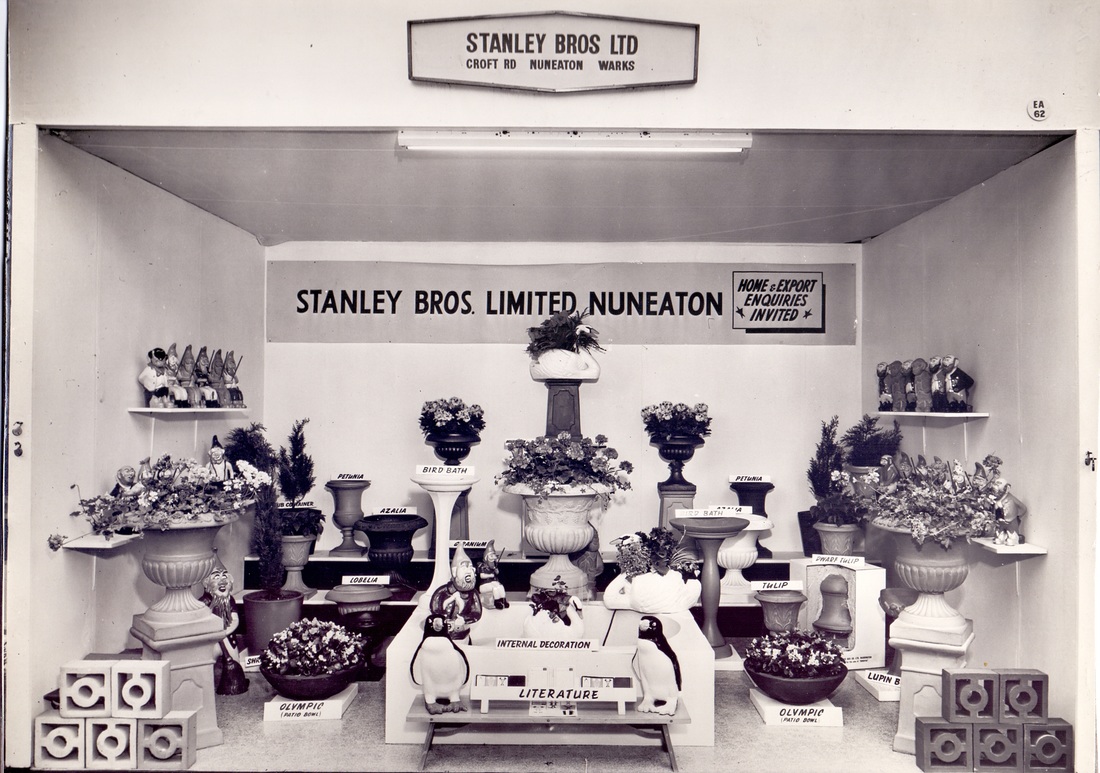
Stanley's showcased their garden ware collection in the old Tansey's needleworks in Newtown Road at the 1957 50th anniversary of the Borough celebrations exhibition of local industries. The council could not do it in 2007 for the hundredth because local business had been decimated. (David Looms Collection)
Showcasing Stanley's Clayware Products
Some notes on Stanley Brothers from their archives:
In 1894 Stanley Brothers had 12 colliery horses and one mule valued at £118. Their names were: Boxer, Jack, Prince, Tammy, Charley, Polly, Captain, Bill, Peggy, Dick, Bob and Murphy.
In 1894 Nuneaton Colliery's railway wagon stock consisted of 70 wagons by the Yorkshire Wagon Co.; 40 by the Midland Wagon Co; 100 by the North Central Wagon Co ; 30 which originated with the Hawkesbury Colliery Co. in 1888 when that colliery closed, and 50 by the L&N Wagon Co. All were 8T coal wagons.
In 1894 there was a total of 1969 feet of 19.5 inch narrow gauge tramway at Nrs. 1 & 2 brick yards.
In 1894 Stanley Brothers had 12 colliery horses and one mule valued at £118. Their names were: Boxer, Jack, Prince, Tammy, Charley, Polly, Captain, Bill, Peggy, Dick, Bob and Murphy.
In 1894 Nuneaton Colliery's railway wagon stock consisted of 70 wagons by the Yorkshire Wagon Co.; 40 by the Midland Wagon Co; 100 by the North Central Wagon Co ; 30 which originated with the Hawkesbury Colliery Co. in 1888 when that colliery closed, and 50 by the L&N Wagon Co. All were 8T coal wagons.
In 1894 there was a total of 1969 feet of 19.5 inch narrow gauge tramway at Nrs. 1 & 2 brick yards.
Stockingford Colliery Co. Ltd
Incorporated on 30 December 1868. Production commenced in 1872.
It closed on 16th March 1928.
It also had a brickyard but this closed in 1894.
As far as is known there were no locos. and all shunting was done with 12 Clydesdale horses. M.R. locos shunted the colliery sidings.
It closed on 16th March 1928.
It also had a brickyard but this closed in 1894.
As far as is known there were no locos. and all shunting was done with 12 Clydesdale horses. M.R. locos shunted the colliery sidings.
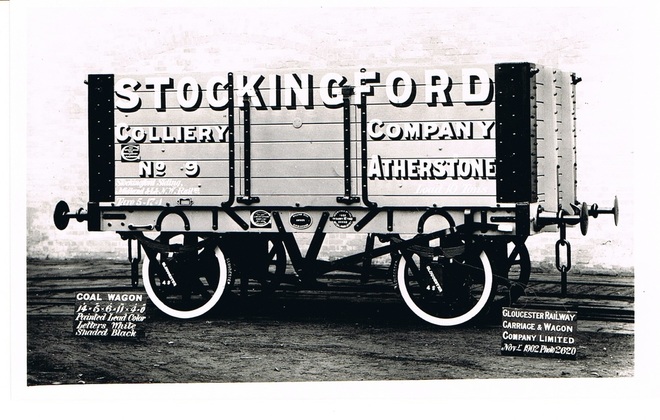 Stockingford had a small fleet of private owner wagons.
Stockingford had a small fleet of private owner wagons.
HMRS
Stoneware (1928) Ltd. Dosthill
Whateley Brick & Pipe Works, Whateley.
Traded as Morgan & Co. until c. 1879
Joseph H. Pearson, Dosthill Colliery until 1888
T. Stone, Brickworks in the period 1897-1912
Dosthill Granite Co. Ltd in the period 1916-1919
Stoneware Ltd until 1928
Stoneware (1928) Ltd after 1928.
There were two works, North and South Works. The site had a complicated history with both brickmaking and colliery operations, as well as a connection with a stone business.
The site had its origins in Dosthill Colliery which was abandoned on 1st October 1888. A siding was installed which continued to function until the 1950's before abandonment.
Traded as Morgan & Co. until c. 1879
Joseph H. Pearson, Dosthill Colliery until 1888
T. Stone, Brickworks in the period 1897-1912
Dosthill Granite Co. Ltd in the period 1916-1919
Stoneware Ltd until 1928
Stoneware (1928) Ltd after 1928.
There were two works, North and South Works. The site had a complicated history with both brickmaking and colliery operations, as well as a connection with a stone business.
The site had its origins in Dosthill Colliery which was abandoned on 1st October 1888. A siding was installed which continued to function until the 1950's before abandonment.
